Items tagged with 'history'
Clinton Square, every hundred years or so
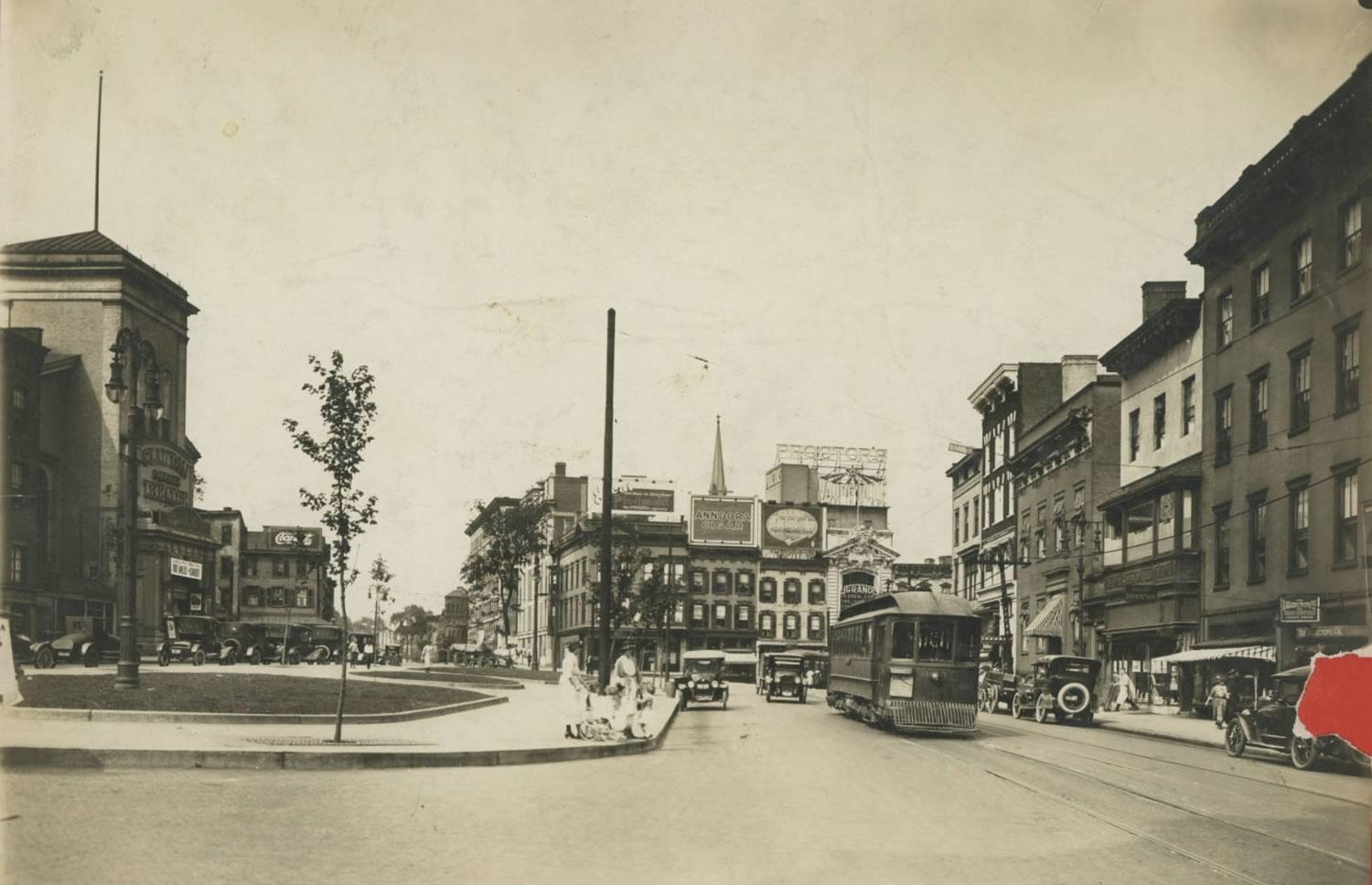
We've had a bunch of items lately about the Clinton Square section of downtown Albany because the city is in the process of figuring out which projects there should get a slice of the $10 million from the state's Downtown Revitalization Initiative.
So we thought you might find this photo interesting. It's Clinton Square -- the area around the intersection of North Pearl Street and Orange Street -- from (we're guessing) the 1920s. The photo is from the Albany Public Library History Collection. If you follow that link you can zoom into the photo and see a bunch of details.
One of the things that struck us about this photo is just how different this part of the city is now. There's no Palace Theater -- the old movie house wouldn't be built until 1930. There's no federal building in the background. And that row of buildings along the east side is now Wallenberg Park.
More than anything, though, there's just something overall about this scene that feels more human scale. At least, it does via the photo. (Also: Streetcars!)
Clinton Square is one one of the oldest major intersections in the city and it's been a topic of debate and discussion regarding development there for 200 years.
Farther off, down the block

Our conversation with Erik Schlimmer this week about his book of Albany street name histories set us off looking through the Albany Public Library's online collection of local history photos.
And we happened across this photo of Central Ave from sometime during the 1920s. It's looking west from what was then Northern Boulevard and is now Henry Johnson Boulevard. Two things that caught your eye:
1. "High grade" candies.
2. The scene off in the distance. If you head over to the New York Heritage site that hosts the image, you can zoom in very close. And the little details are great. The store signs, a man wearing a bowler, a horse-drawn wagon with straw or hay, a man pushing what looks like a carriage, a buttoned-up couple walking arm in arm, kids, and the obligatory guy staring toward the camera with the what-is-going-on look.
photo: Albany Public Library History Collection
A few of the 700some stories about the street names of Albany

Morton was named after Washington Morton, husband of Cornelia Schuyler Morton. (He was the son-in-law of Philip Schuyler.) As for the other street... is that Hawk or Hawke?
There are 785 streets in the city of Albany. And Erik Schlimmer has figured out the backstory for the name of almost every one of them.
That monumental effort -- it took him four years -- is collected in the new book Cradle of the Union: A Street by Street History of New York's Capital City. (Mentioned earlier.) And the result is like a bag of local history potato chips. Once you snack on a few of the street name histories it's hard to stop.
"In all place names -- street, the town they live in, a mountain range, a stream, a pond, a building -- there's usually a story behind the name," Schlimmer told us this week when we met up with him. "And the story is usually pretty good."
Here are a few of those important or funny or surprising or sometimes dramatic stories...
That project to figure out the history of every Albany street name has been completed, and there's a new book based on it
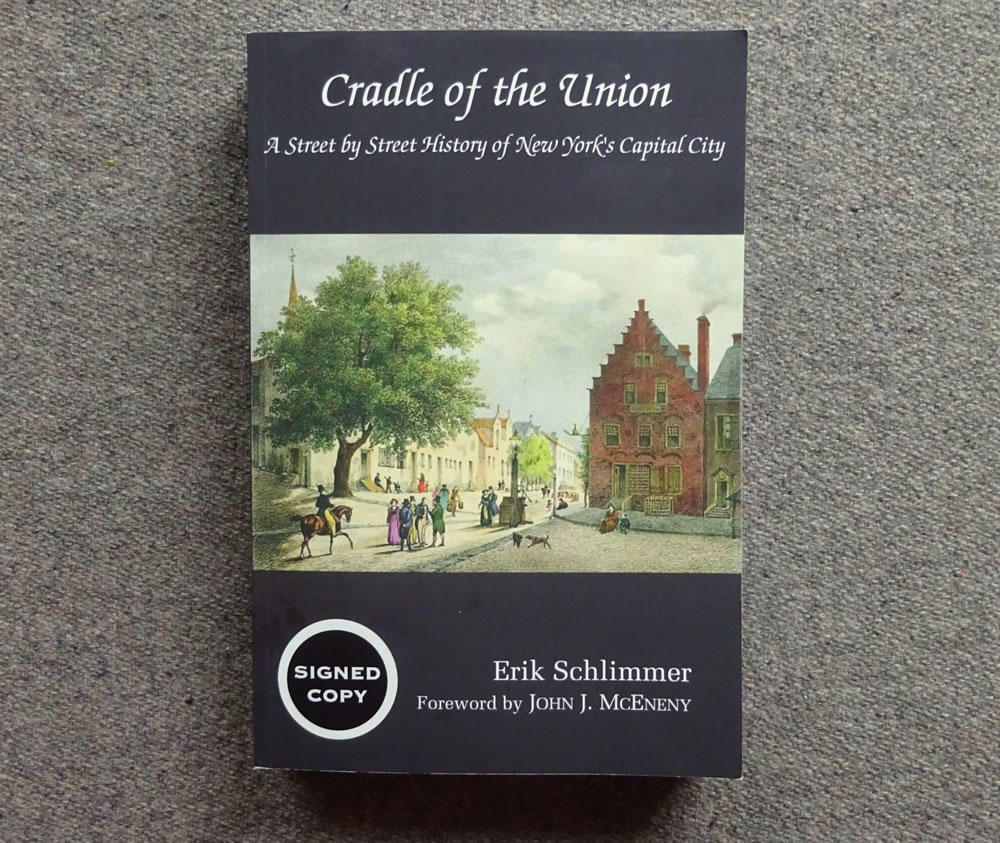
More than three years ago we heard there was a guy working to figuring out the backstory for the name of every street in the city of Albany. And we were very intrigued. (Because... obviously.)
We also admit that the project sounded, well, really hard. Like a mountain you start hiking up knowing you're probably never going to quite make it to the top.
But Erik Schlimmer got it done. And the book based on his efforts -- Cradle of the Union: A Street by Street History of New York's Capital City -- is now available. Blurbage:
Within Albany's city limits there are 785 streets, and author Erik Schlimmer figured it was time to historically decode every single street name. During his four-year-long research project he examined nearly 1,000 print and online sources and interviewed historians, residents, and fellow researchers. ...
Schlimmer is most at home decoding names in the Adirondack Mountains. In 2014, his first place name book to that range, History Inside the Blue Line, was released. Two years later a second one, Among the Cloud Splitters, was published. He found urban history just as interesting. "I'm drawn to mountain history, especially when it comes to who settled the valleys and who climbed the mountains first. But street name history is equally fascinating. It's what I call 'obvious history.' These are the streets we live on and travel down every day. Who can tell you why even their own street is named so? It's neglected history."
The book includes a foreword by Jack McEneny. It's $22 and available online (see the link above).
We haven't the seen the book, yet, but we're looking forward to checking it out.
A look inside 2 Judson Street

We got a chance this week to stop by the open house for 2 Judson Street, one of the properties that's for sale as part of the Albany County Land Bank's Neighbors for Neighborhoods program (a few details about that program below).
There are handful of photos to go along with this post, in case you'd like to gawk. Because, you know, we definitely wanted to gawk.
The property is part of the McPherson Terrace row on Clinton Ave in West Hill, a string of buildings (not all have survived) that date to the late 1880s/early 1890s. And they're related to Albany architectural royalty: The great Albany architect Edward Ogden participated in developing the strip. (Ogden and his son Charles, also an architect, designed a bunch of beautiful buildings around the city.)
A few words about Thanksgiving, and a few more about William Seward
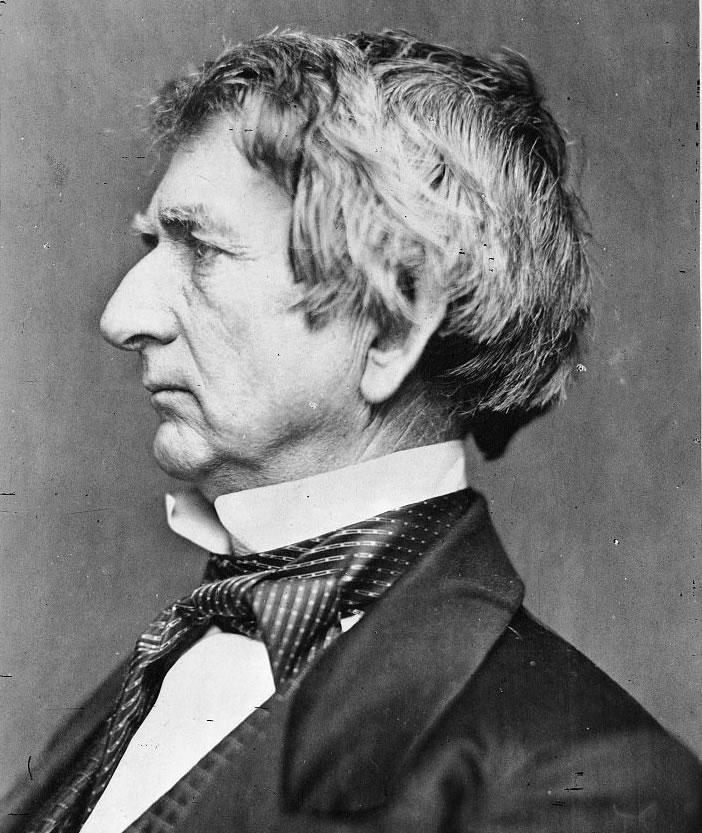
An undated photo of William Seward in the collection of the Library of Congress.
Thanksgiving as we know it today -- a national holiday, on a Thursday late in November -- has its origins in the Civil War when, in 1863, Abraham Lincoln declared* a national Thanksgiving Day. And he did so in a proclamation written by New York's William Seward.
Seward -- a Union College graduate** -- is a fascinating, important figure. He was a state Senator, the 12th governor of New York, a US Senator, and the Secretary of State for both Lincoln and Andrew Johnson. He was a Lincoln rival and then a great friend. He was connected to a New York political machine that twisted both arms and the law. He was an outspoken abolitionist, his home sheltered people escaping from slavery, and he was a friend of Harriet Tubman. He was stabbed, and his children injured, in an assassination attempt by a John Wilkes Booth co-conspirator. And, yes, he helped the United States acquire Alaska.
So Thanksgiving is as good a time as any to learn a little bit about William Seward. A clip from this 2012 New Yorker piece by Dorothy Wickenden that's worth reading -- it reviews a biography of Seward by Walter Stahr and recaps Seward's life and career:
The gubernatorial debate -- 36 years ago
The clip embedded above is a New York gubernatorial debate from 1982, a matchup of Democratic lieutenant governor Mario Cuomo and Republican Lewis Lehrman. It's hard to imagine watching a debate like this today.
The debate was posted on YouTube by the Empire Center as part of a piece by EJ McMahon contrasting the level of dialog then with what passes political discourse now. We saw the post earlier this month and thought about it again last night while watching the debate train wreck between Andrew Cuomo and Marc Molinaro.
The back and forth in the debate is often pointed -- and they use some of the same annoying debate moves that show up today -- but it's also detailed and suggests two people with differing perspectives trying to solve problems.
It's also notable that some of the prominent topics Cuomo and Lehrman discussed -- including New York's relatively high taxes, and the exodus of people and jobs from the state -- are still among the big topics now.
By the way
It's remarkable seeing Mario Cuomo freestyle about policy and values in this debate with such rhythm and speed. It's like watching the inspiration for an entire cast of Sorkin characters.
The Albany Hardware & Iron Co.
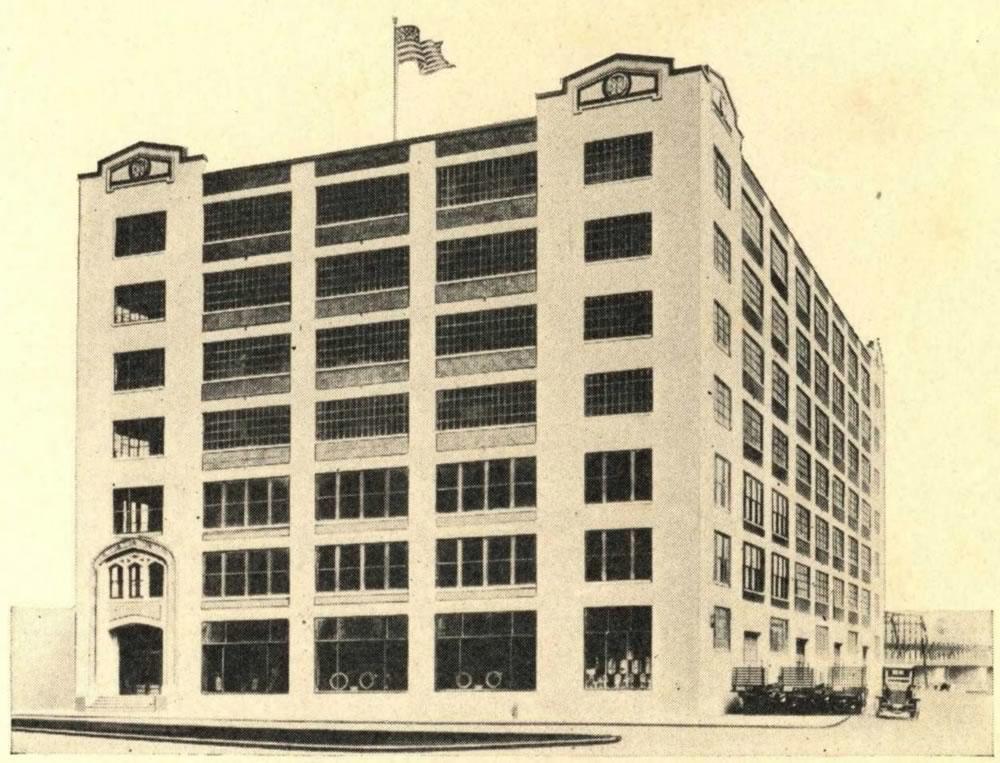
That image above is from a 1927 catalog and it depicts a building in Albany that still stands to this day. You totally know this building. Recognize it?
Look a little closer. Yep, now you probably see it.
It's the U-Haul building on Broadway in Albany, the one that stands tucked between 787 and the river, with the truck on the roof.
The building was originally the home of the Albany Hardware & Iron Co. Flipping through its almost-century-old catalog we couldn't help but think of Amazon, the dying embers of Sears, and the ongoing effort to get stuff to people when they want it.
Also: It's just really fun to gawk at all the stuff for sale in the old catalog.
A walkthrough of the old Kenmore Hotel and Steuben Club buildings in downtown Albany

The old Kenmore Hotel and Steuben Club buildings landmark buildings on one of downtown Albany's most prominent blocks. They've also sat largely vacant for years.
That could be changing, though. Both buildings are at the center of a huge in-progress real estate deal. Redburn Development Partners is currently working to close the purchase of the Kenmore Hotel and Steuben Club buildings -- along with a handful of other notable downtown properties -- and redevelop them with residential and retail uses. (See recent planning board discussion about the Kenmore and Steuben as well as the old Times Union building on Sheridan Ave.)
We've passed these buildings hundreds -- maybe thousands -- of times. They're anchors of downtown Albany -- but we had very little sense of what they're actually like on the inside. And we were curious about that, especially now that the buildings could be on the verge of their next lives. We figured you might, too
So we got Redburn to give us a tour. Here are a bunch of photos...
The old riverfront and the old bridge
Random historical photo we stumbled across while looking for something else: This aerial photo of the Albany riverfront is from 1969 and shows the old Dunn Memorial Bridge as the new (that is, current) Dunn is being constructed just up river. It's from the local history rabbit hole that is the Albany Group Archive on Flickr.
Two things about this photo:
1. There is an ongoing conversation about how Albany can make its riverfront more accessible and hospitable to people. And one of the things that often gets lost in that discussion is that Albany riverfront has really been a place for people in a very long time. Like, a century or more. That's not say it shouldn't be in the future -- it just provides some context for the challenge.
2. The old Dunn Memorial Bridge had a section that lifted to make way for passing ships, sort of like the Green Island Bridge does today. That allowed the bridge to be closer to the water, and as a result, its connections on either end were much closer to street level. See the photo below -- also from the Albany Group Archive.
Livestock, vegetables, farm equipment, and an object of unceasing admiration
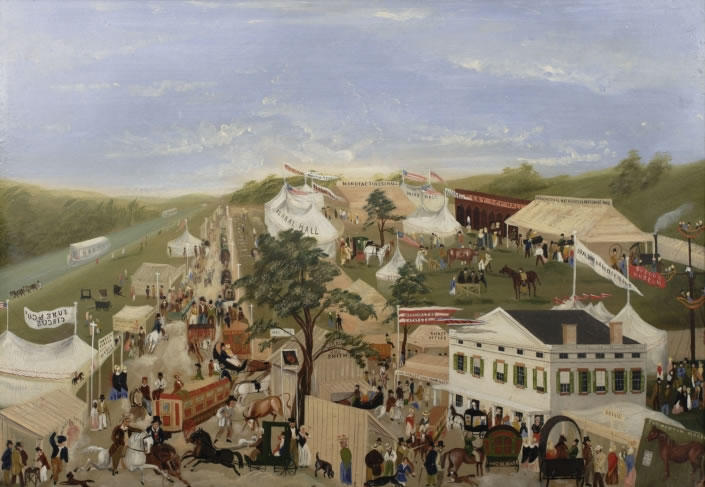
We charmed by this painting of the New York Agricultural Fair that was held in what's now Menands in 1850. It's attributed to John Wilson* and it's part of the collection of the Albany Institute. A clip from the description in the museum's online catalog (link added):
Held just north of Albany, the 1850 Tenth Annual Fair and Exhibition of the New York State Agricultural Society was the second hosted in the capital city. It opened for spectators on September 3rd and ran through September 6th. According to the Society's report*, "never was the attendance so great." This animated work captures the excitement of the fair and the throngs of people who attended the four-day event to see livestock, displays of fruits and vegetables, machinery, and farm equipment. The displays of flowers received special notice in the Society's report: "Floral Hall, in which every form of beauty was combined, under the direction of Dr. Herman Wendell, of Albany, was the object of unceasing admiration." Indeed, Floral Hall appears as the largest and most prominent tent in Wilson's painting.
In addition to agricultural displays, visitors had two circuses to enjoy, the Spalding & Rogers Circus and the June & Co. circus, also carnival sideshows and amusement rides. (A four-gondola ride similar to the later Ferris Wheel can be seen at the far right of the painting.)
If you head over to the Friends of Albany History, there's a walk through some of the history of the history of this fair and the fairgrounds and how the modern Altamont Fair grew out of an animal fair on the parade grounds of what's now Washington Park in Albany.
* John Wilson was also painted the 1848 watercolor "View of State Street, Albany" (also in the Albany Institute collection), which you might have seen before.
A row of buildings gone, except for one
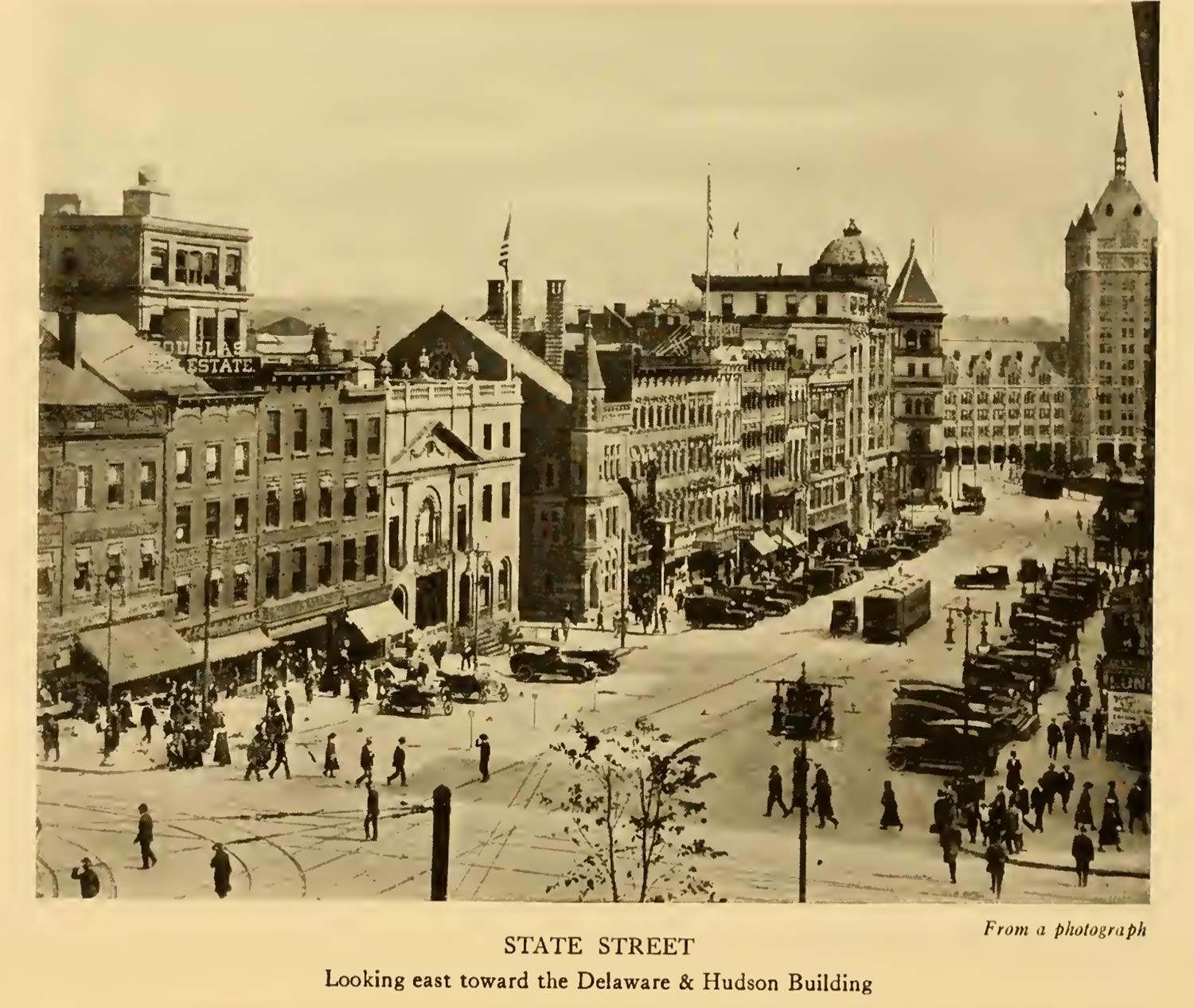
A follow up of sorts about the old, beautiful Mechanics and Farmers Bank building at the corner of State and James in downtown Albany and it's now missing architectural neighbors.
The image above is from a 1918 history of State Street published by the National Savings Bank of Albany (it was the bank's 50th anniversary). The viewpoint is from Pearl Street. And, as you can see, those whole two blocks of State Street are very different now. (Current street view.) But the Mechanics and Farmers is still there.
There's a bonus image below showing the opposite side of State Street.
Albany's old and its streets have changed -- many times.
Same place, very different map

The history of Albany as a city stretches back 400 years. But the history of this land -- and people living here -- is, of course, much longer than that. When the Europeans showed up this place was already inhabited by the Mahican people (or Mohican).
With that history in mind, have a look at this interesting map site called Native Land that charts the lands of indigenous people here in the northeastern US, the Americas more widely, as well as other places around the world. It highlights one aspect of the rich and diverse and complicated history of this place prior to the 17th century. That clip above shows this area.
The map is the creation of a Canadian programmer named Victor Temprano. Atlas Obscura recently talked with him about how the map came about, along with the ongoing work to build it and make it more accurate.
By the way: If you're curious about the pre-Columbus history of this hemisphere, the Charles C. Mann book 1491 is an interesting place to find more of it.
Earlier: The Cornplanter pipe tomahawk
Illustrations of Albany's history
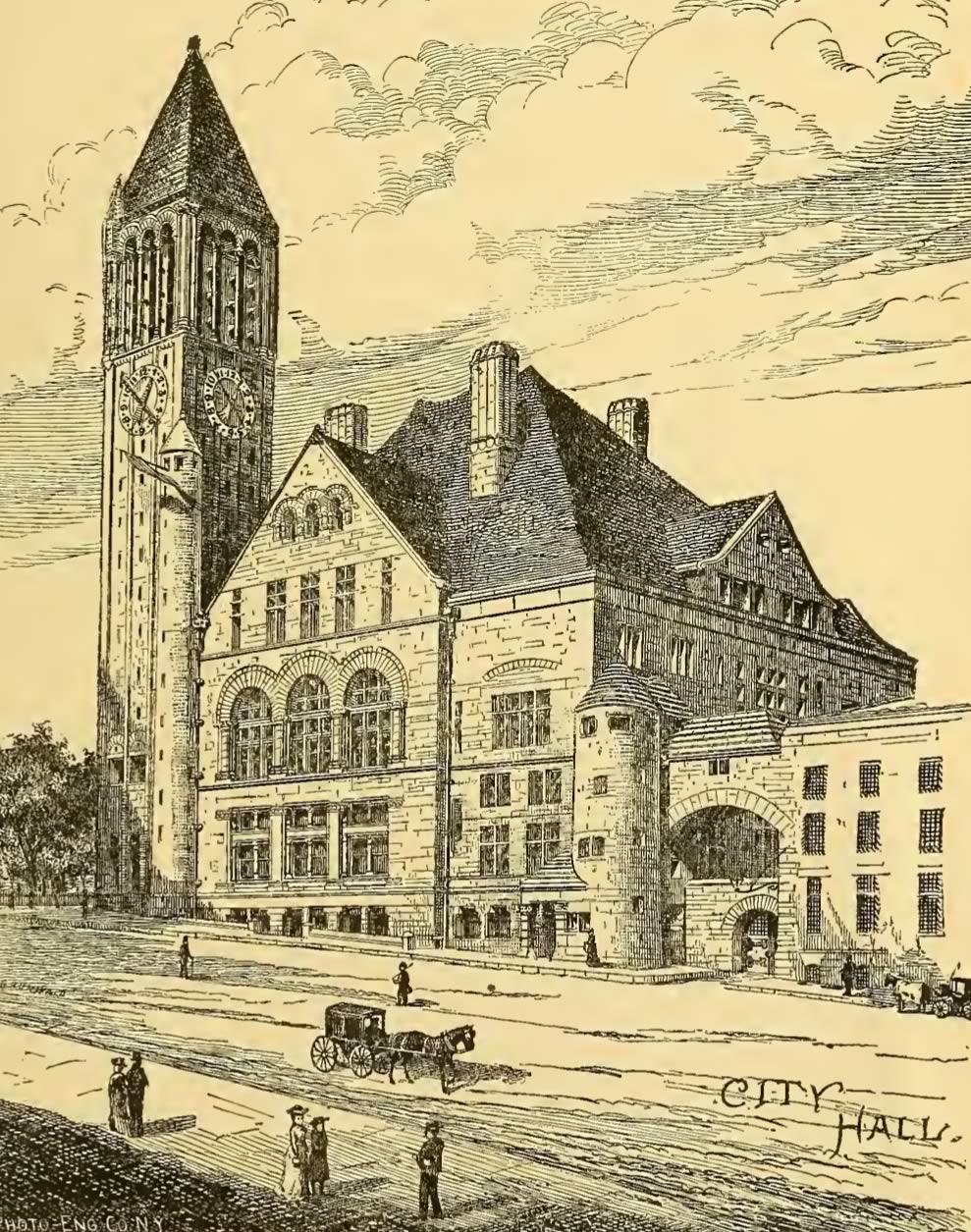
City Hall once had a jail attached to it.
Earlier this week we posted an old illustration of the Farmers and Mechanics Bank building in downtown Albany that showed how the beautiful, but oddly narrow building, was once part of two intersecting rows of buildings.
That illustration was the 1884 The History of The City of Albany, New York by Arthur James Weise. (Tip o' the hat, Albany Archives.) And it includes a bunch of these sorts of illustrations.
So we thought it'd be fun/interesting to pull out a few, along with some blurbs associated with them. See blow.
Also: If you're interested in local history, the book itself is worth skimming through, at the very least. There's a lot of time spent on the history of Albany before the United States. (Albany as a city predates the country by about a century.) And sure there's a lot of discussion about beavers (because Albany wouldn't be here without them), but it also highlights how Native Americans played a large role in the city's history.
OK, on to those illustrations...
A downtown corner in context
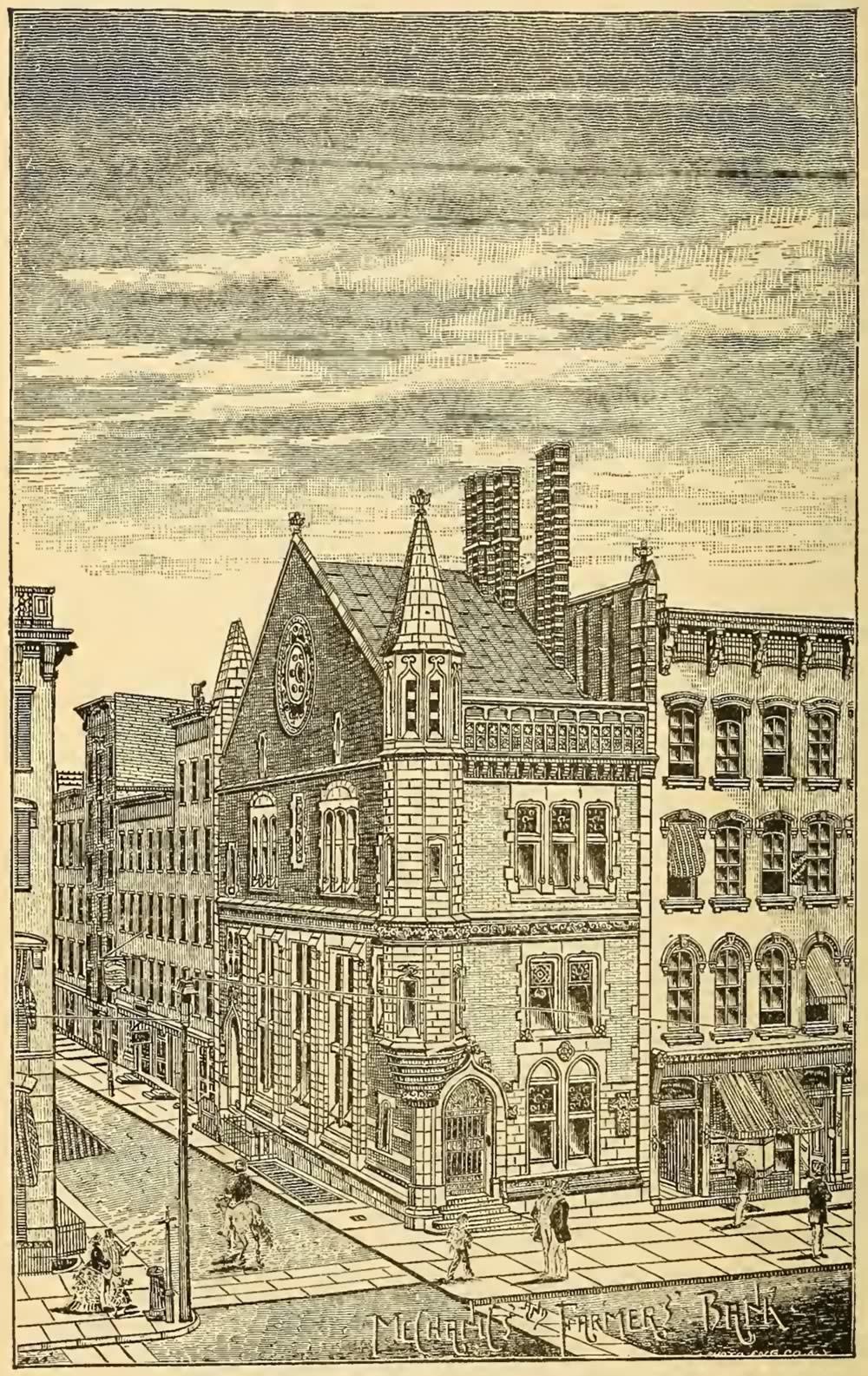
Albany is an old city, and it has a lot of old buildings. For all sorts of reasons, many of these old buildings are missing their architectural neighbors. And the resulting effect is that sometimes buildings appear like a fragment of conversation heard without context.
The old Mechanics and Farmers Bank building at the corner of State and James in downtown Albany is a prime example. It's a beautiful old building. It also looks odd, standing there all skinny and by itself. (Here's a thing we wrote about the history of the building.)
But it only looks like that way because the buildings around it are missing. And that's why we were delighted to see the above illustration today.
It's from the 1884 The History of The City of Albany, New York by Arthur James Weise. Credit to Albany Archives for surfacing it today on Twitter. (Matt has a "Lincoln in Albany" walking tour downtown this Thursday, by the way.)
From the illustration you can see how the building, designed by Russell Sturgis, once served as the corner piece of two intersecting rows of downtown buildings. It still stands out as a beauty, but it makes a more sense.
Oh, and here's the snippet from Weise about the founding of the bank...
The Cornplanter pipe tomahawk
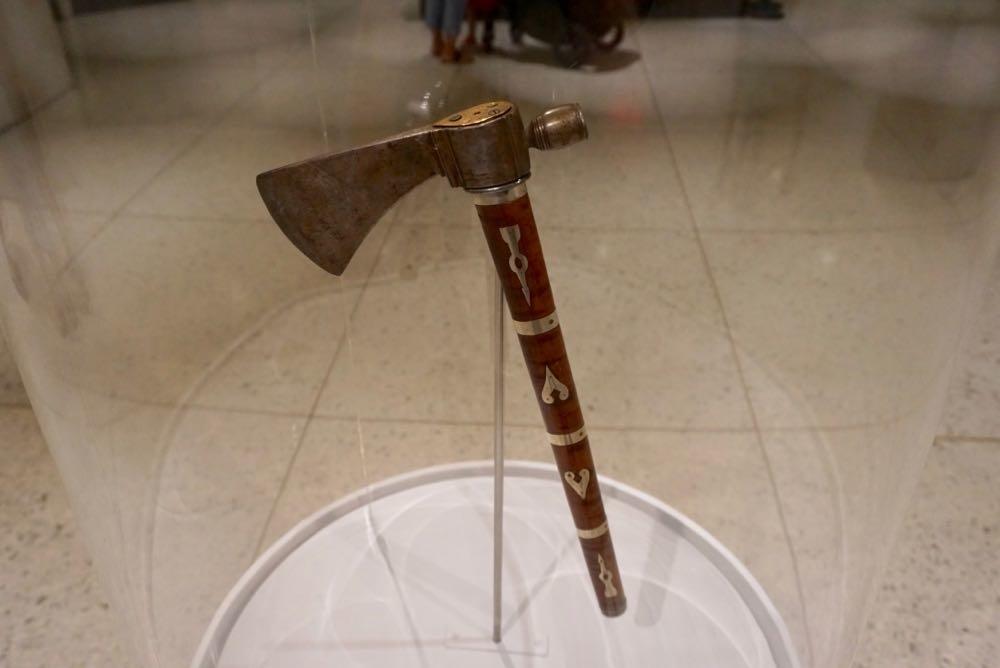
It's currently on display in the the lobby behind the information desk.
We got a chance this week to stop in the State Museum and see an interesting artifact that's newly on display, Cornplanter's Pipe Tomahawk.
The piece was stolen from the museum sometime between 1947 and 1950, and only returned this past June by an anonymous donor. From the State Museum:
This tomahawk has particular significance--at one of several meetings between the U.S. and Haudenosaunee (Iroquois) leaders in the years 1792-1794, President George Washington gifted it to Gy-ant-waka, or Cornplanter, a respected Seneca leader, skilled diplomat, and eloquent speaker. On one side of the blade Cornplanter's name is engraved, and on the other side is the name John Andrus, possibly the maker. Pipe tomahawks emerged in the early 1700s and were commonly presented to Native American leaders by 18th-century colonial officials. They were considered prized objects because they could be used to smoke tobacco, a plant of cultural and spiritual significance to Indigenous people.
This pipe tomahawk was purchased around 1840 by Tonawanda Seneca Ely Parker from the widow of a Seneca named O-ya-weh-te, or Small Berry. Since the original handle, or haft, was missing, Parker replaced it to reflect what it once may have looked like, based on descriptions from Small Berry's widow. He also added a brass plate engraved with his name on bore end of the tomahawk's haft, just above the blade.
As with any object like this, it's kind of cool to examine and think about how it was probably once held by figures such as George Washington and a great Seneca leader. But maybe more importantly the object is a way to drop into the story of the past and get a better sense of it.
So let's follow a few the threads that connect here.
Ghosts on a street that no longer exists
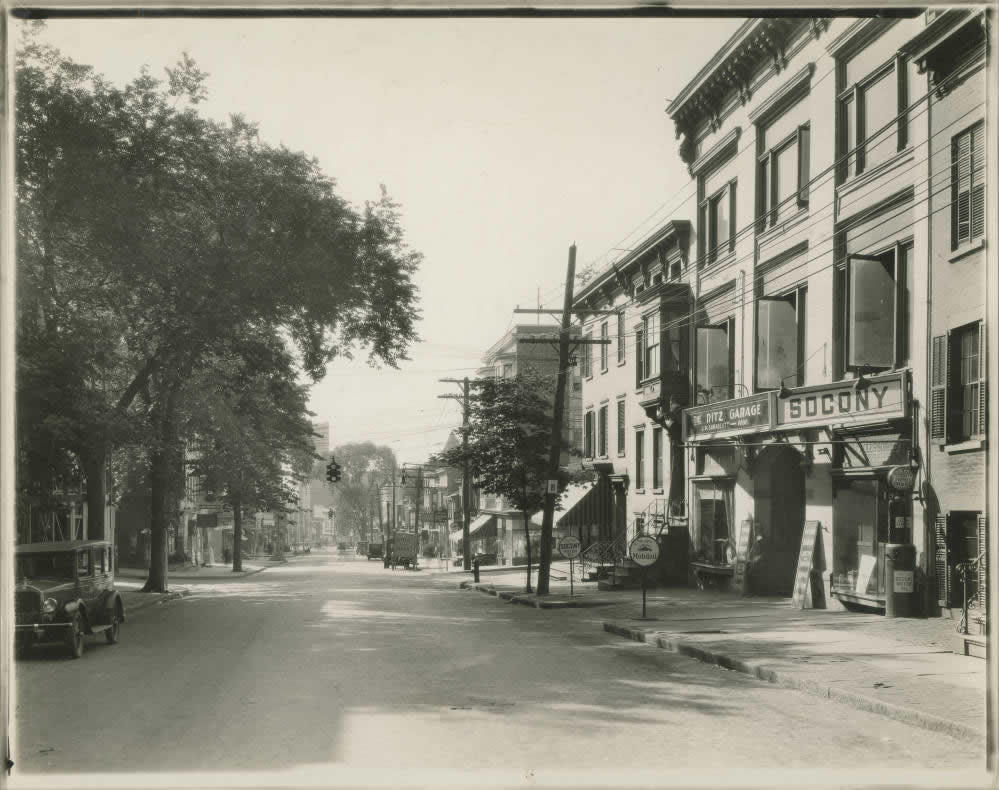
The photo above is looking east along Hudson Ave near Swan Street in Albany in (we're guessing) the 1920s. And it's from the Albany Public Library History Collection.
There were a few things that caught our eye about this photo:
1) Obviously, this is place that is now radically different because of the Empire State Plaza. And it really gives some sense of the neighborhood layout that got wiped away by the project.
2) If you head over to the New York Heritage site where the image is hosted, you can zoom in on a high-resolution version of the photo sort of "look" down the street. It's interesting reading the various signs for luncheonettes, and laundries, and garages.
3) Because photography back then required long exposure times, the photo also captures faint images of cars and people that moved while the photo was being taken. The figures have a ghostly quality to them, which is somehow fitting given that the blocks literally no longer exist.
How a strawberry grown from a "wasteland" in Albany helped spread a national strawberry craze
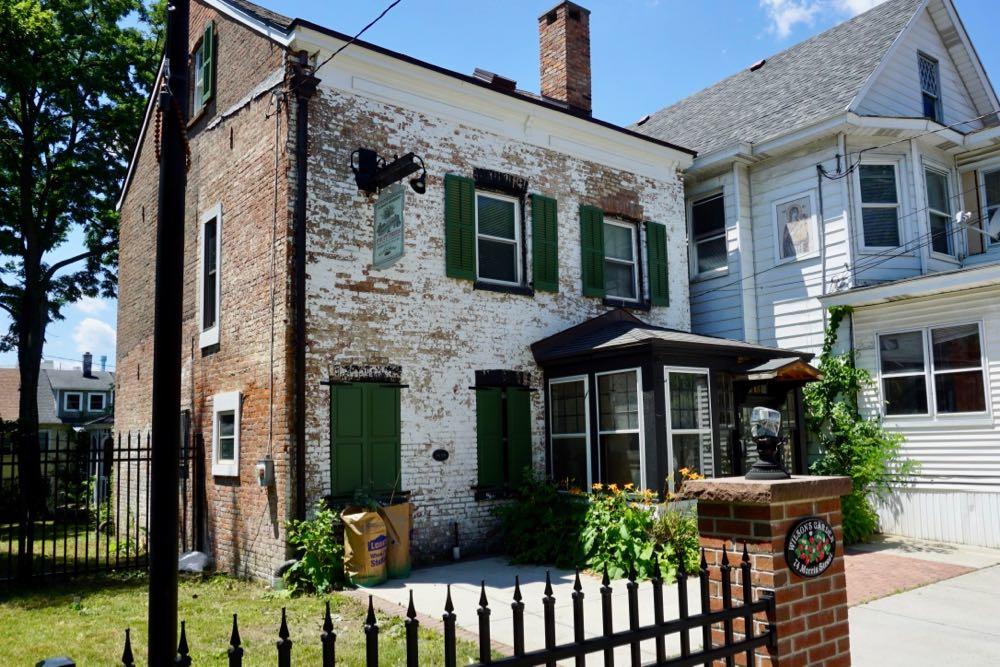
At the corner of Morris and Knox next to a small neighborhood park stands a two-story brick building, its front bearing a worn coat of paint. Built in 1838 in the Federal Style, it's the oldest still-standing building in Albany's Park South neighborhood.
But maybe more notable than its age is the fact that home and the land around it played a vital role in the growth of the strawberry trade in the United States, helping to set off a "strawberry fever."
This is the story of 74 Morris Street and The Wilson's Albany strawberry.
Stories from streets that no longer exist

A screengrab from the map.
Check it out: The 98 Acres in Albany project now has a clickable map of its stories from the area replaced by the Empire State Plaza. Here's a little bit of background on the map effort.
One of the things we really like this map is the way it overlays the old pre-ESP street map on top of the modern map. Having the old map there does a few things: 1) It makes the geographic context for a story more clear, and 2) it highlights how many streets/buildings and just overall space that was taken up by the ESP and the South Mall Expressway.
The new clickable map is part of a work-in-progress, stand-alone website for the project. That site also includes photo galleries, such as this collection of pre-demolition streetscapes.
One photo that immediately caught our eye: This view looking up the old South Hawk Street toward what's now the ESP side of the Capitol. (South Hawk is mostly gone now.)
Earlier:
+ 98 Acres in Albany
+ Who lived in the neighborhood knocked down for the Empire State Plaza?
+ What would Albany be like today if the Empire State Plaza had not been built?
"The Normanskill" by Edward B. Gay
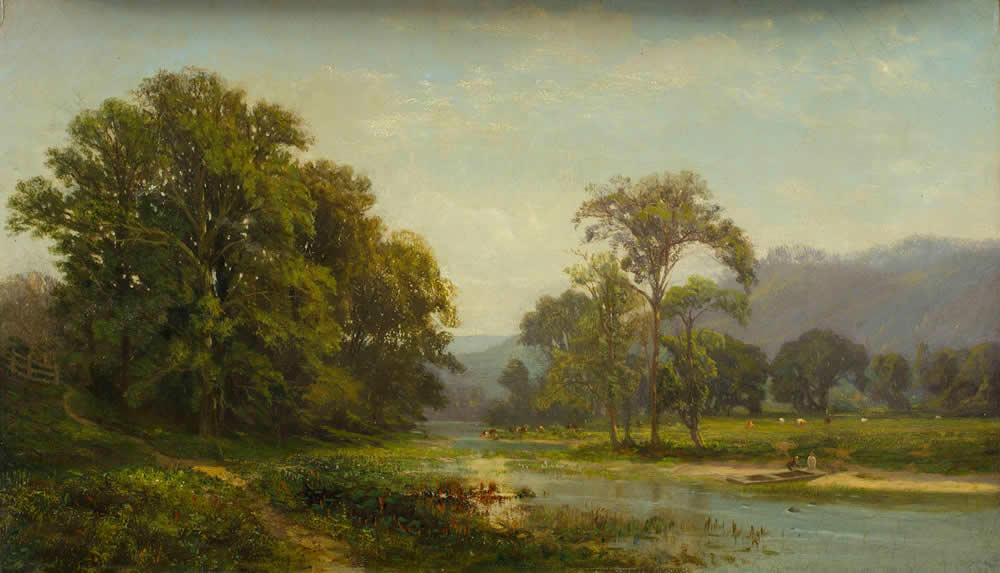
If you head over to the museum's online collection you can zoom in on the painting.
Art break? Yes, let's engage in an art break.
The painting above is "The Normanskill" by the landscape painter Edward B. Gay. It's in the collection of the Albany Institute of History and Art, and it's also currently on display in the museum. It dates to around 1865.
Gay was born in Ireland in 1837. His family emigrated to the United States in 1848 because of political unrest related to Irish nationalism (there was also famine at the time). The Gays found their way to Albany and settled. By the time they got here they were not doing well financially and the children were put to work to earn money.
Edward Gay, who was about 11 years old, had jobs at a bowling alley and as a page in the state Assembly. He also, somewhat improbably for someone his age, ended up with a job mixing drinks. And even more improbably, it was at that job that his artistic talent was discovered.
The seed for so many backyard gardens
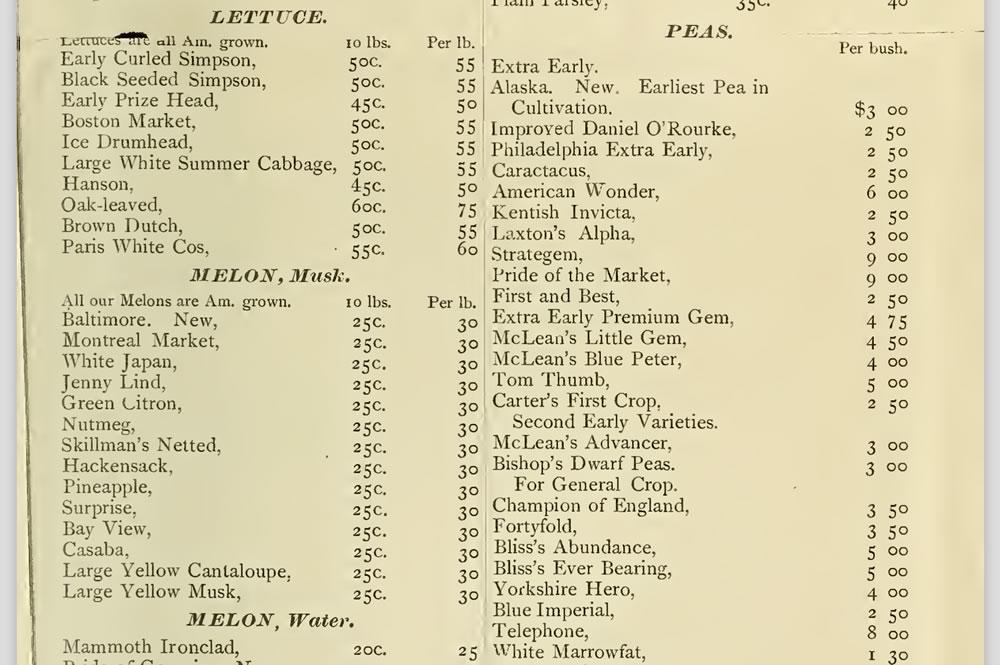
From an 1888 Shaker Seed Co. wholesale catalog from Mount Lebanon, New York. / via Archive.org (U.S. Department of Agriculture, National Agricultural Library)
Some ideas seem so obvious that the might has well have just sprouted from ground, everywhere, after a rain and people just happened upon them. But at the beginning they're not so obvious and someone has to be the first person to recognize the idea and grow it.
So it was with some delight that we recently learned more about how the Shaker communities in this region were probably the first people in the United States to start businesses selling seeds for backyard or "kitchen" gardens. And putting the seeds in the ubiquitous paper envelopes? Yep, Shakers. And store displays, kind of like the racks that stand in hardware stores and supermarkets today? Shakers did that, too.
Here are a handful of facts about the Shaker seed business and its roots here.
Frederick Hinckel and the Hinckel Brewery
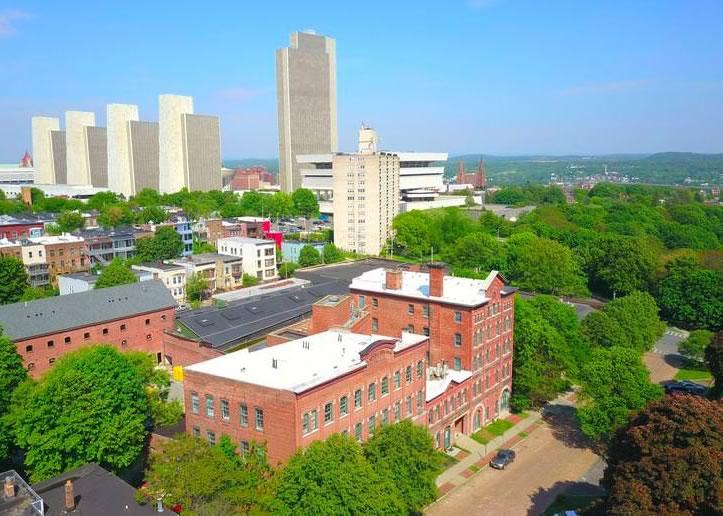
The Hinckel Brewery building with the Empire State Plaza in the background. / photo: Tim Jackson
On the northwest corner of Park Avenue and South Swan Street in Albany's Hudson/Park neighborhood, a multi-building complex takes up almost half a city block and dominates the immediate area. Constructed in the late 1880s, this behemoth played a vital role in the brewing and distribution of beer across the city and the country.
This is the story of immigrant, brewmaster, and former Albany resident Frederick Hinckel -- and the Hinckel Brewery.
Walking tour of Albany's Normanskill Farm
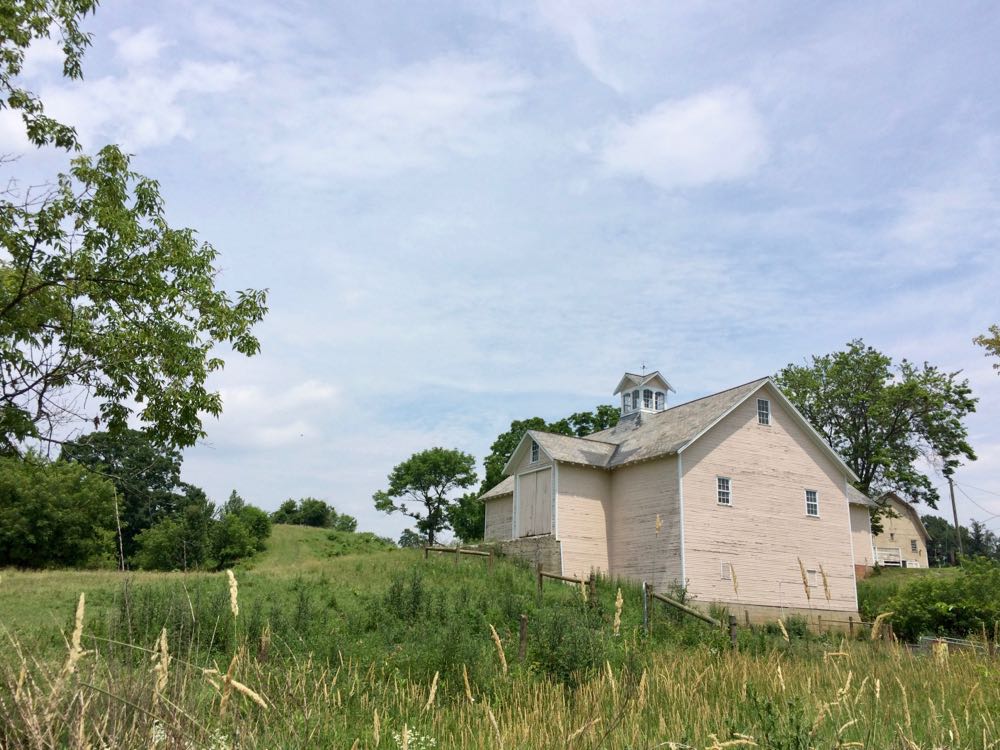
The Historic Albany Foundation's Walkabout Wednesday series has a tour at the Normanskill Farm June 20. It starts at 5:30 pm. Tickets are $10. (These tours often sell out.)
A few bits about the history of the farm, which is in the city of Albany...
One corner, many different buildings

Looking up State Street to Pearl Street in (we're guessing) the 1920s. That's the old Ten Eyck Hotel on the northwest corner. / photo via Albany Public Library History Collection
The northwest corner of State and Pearl in downtown Albany is one of the city's most prominent and historic spots. And as Mike DeMasi reported this week, SUNY is buying the office/bank building there. [Biz Review]
The 1970s-era building that's currently on the site is an odd fit -- its size, its style, the way it sits on such a busy corner but is largely closed off to the sidewalk. It sticks out even even more when you view the building in the historical context of what's stood there before.
So, let's take a quick look at that...
The hills of Albany, almost 175 years ago
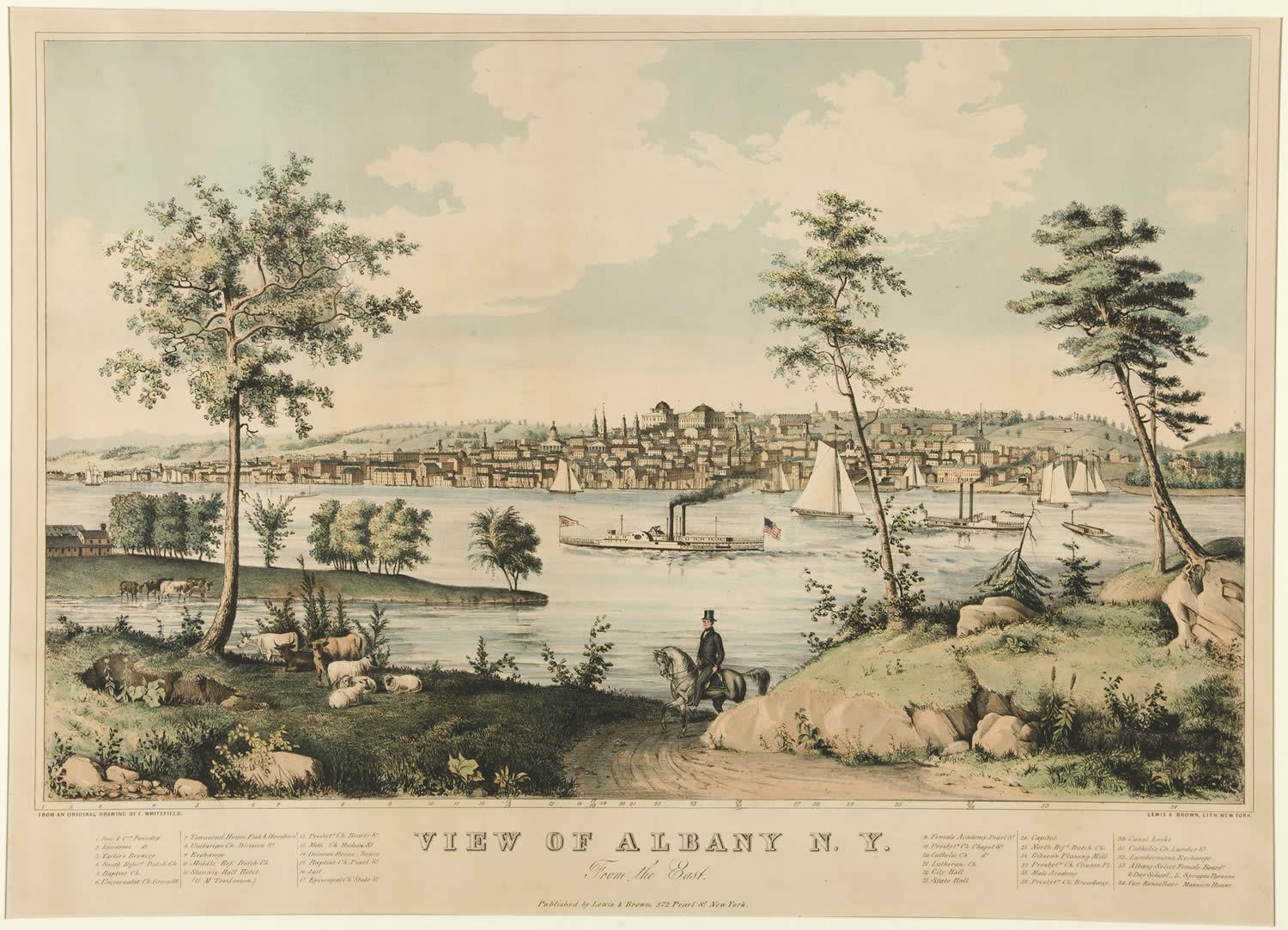
Here's a larger version.
The work above is "View of Albany, NY From the East." It's a print, the original of which was created by the artist Edwin Whitefield in 1845. And it's part of the new exhibit at the State Museum, Art of the Erie Canal.
The print caught our eye while looking through the exhibit because 1) Albany (obviously) and 2) it depicts an Albany that hadn't quite totally spread west up the hills from the river. Those hills are obscured by buildings in so many images of the city.
Whitefield apparently had a thing for cities and wanted to document them for history. Among his other cities works is the aptly-titled "View of Troy, N.Y. From the West."
The print on display in Art of the Erie Canal is from the State Museum's collection. The image above is via the Yale University Art Gallery.
Alexander Hamilton documents will be on display at Albany Law
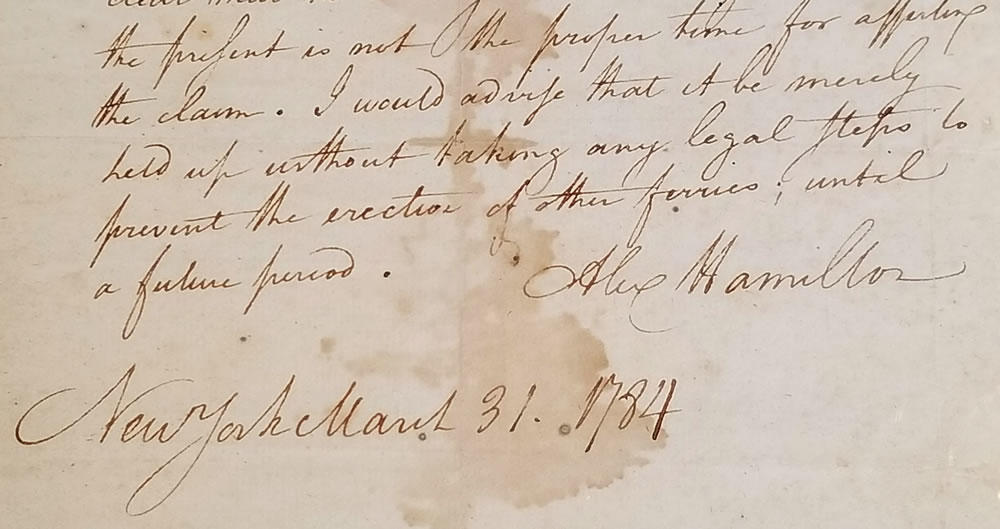
The image above, via Albany Law, is from the letter signed by Hamilton.
A collection of documents related to Alexander Hamilton will be on display to the public at Albany Law May 14-21. The docs are part of the corporate art collection for the bank BNY Mellon. Blurbage:
The collection includes:
+ A letter, signed by Hamilton and dated March 31, 1784, advising a client on the right of ferriage. The letter was dated during the time that Hamilton and others were organizing the Bank of New York (now BNY Mellon).
+ A certificate of subscription to the trust for the benefit of Hamilton's family, issued in 1804, after his death at the hands of Vice President Aaron Burr. Certificates No. 61-62 were issued to John B. Church, husband of Angelica Schuyler and Hamilton's brother-in-law.
+ Trust certificate No. 226, also dated 1804, issued to Washington Morton, husband of Cornelia Schuyler and Hamilton's brother-in-law.
+ An early 19th century $5 bank note, Bank in the City of Albany.
+ An early 19th century $3 bank note, Saratoga County Bank.
The small collection will be on display in the foyer of Albany Law's 1928 Building -- it's the older stone building that fronts the campus at the intersection of New Scotland Ave and Holland Ave.
As you no doubt know by now, Hamilton had many links to Albany. He married Elizabeth Schuyler at the Schuyler Mansion, and he studied and practiced law in Albany. (Aaron Burr also had a law office here.) At its commencement ceremony May 18, Albany Law will be conferring an honorary (posthumous) degree to Hamilton.
The pedagogy penguin

This illustration of the pedguin is from university literary publication, The Penguin. Brian shared it on Twitter this week. We think the pedguin projects quite a sophisticated air as he or she sips tea.
A stray bit that of local history that made us smile this week...
UAlbany's current mascot is a dog, specifically a Great Dane named Damien. But for a few decades last century -- when UAlbany was called the New York State College for Teachers and the State University of New York College of Education at Albany -- the mascot was a penguin.
Or, rather, it was the "Pedguin." From a UAlbany News item:
Then came 1948-49, and someone realized that another name for "teachers" -- "pedagogues" -- could be shortened into a new and catchy sports nickname: "Peds." It was used first in a State College News basketball game write-up on Dec. 3, 1948, and became dominant. Again, however, it was a nickname without a mascot.
That inanimate situation ended on May 13, 1949, when it was announced that the student body had chosen "Pedguin," a penguin-like figure designed by Paul Kirsch '51, as school mascot. In both scholarly and cuddly manifestations -- drawn, sewn (on patches), stuffed and, in late '50s and early '60s basketball games, costumed -- the Pedguin remained the college's mascot until a new university identify cried out for something beyond the symbol of the teacher.
Yes, the pedagogy penguin. Prepare to be schooled!
The school switched over to the Great Dane in 1965 via a contest that asked students for submissions. Belated congrats to Kathy Earle '57 who suggested the Great Dane because of its "proud bearing and imposing stature."
UAlbany timeline
By the way: There's a good timeline of UAlbany history online that tracks the charts the various names of the school and other developments.
Forever wild: The advocacy of Verplanck Colvin
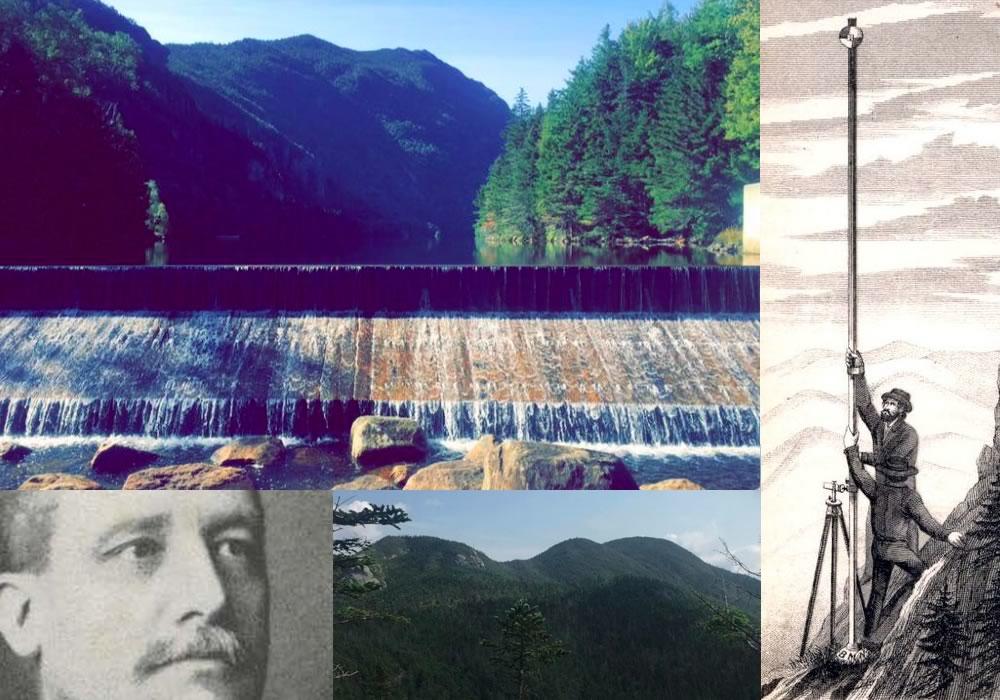
A few dozen miles south of Tupper Lake is some of the most rugged and remote wilderness in New York State.
This is where Seward Mountain stands. Named after Secretary of State William H. Seward, it's the 24th tallest Adirondack High Peak at 4,347 feet in height. After walking for several miles through a flat, dense forest, climbers can expect a very steep and challenging hike up the mountain's exposed bedrock in order to reach the tree-covered summit. And in 1870 it was an Albany native who became the first person to record a successful ascent of this formidable peak.
Verplanck Colvin was a lawyer -- but he'd become known as the Great Surveyor of the Adirondacks and an advocate for the preservation of the six million acres that now make up the Adirondack Park.
The plan to fix a problem in Albany that's been a century in the making -- and the concerns about that fix

One of the renderings of the project. Much of the facility would be underground.
Albany is an old city, built atop layers of old infrastructure. And it's currently taking on a problem that is literally a hundred years -- or more -- in the making.
Large portions of Albany's (very old) sewer system combine both sewage and stormwater. And when it rains a lot, the system can't handle all that water. So the sewage ends up in the Hudson River. Yep, gross. It's a serious environmental and health problem.
But the city and its neighbors are currently working on a plan to address this problem. And the centerpiece is a $45 million project -- what one official called the biggest public works project in a generation -- that would be located in Lincoln Park.
A sewer facility in a park? People are going to have a lot of questions about that. And they brought them to a public meeting this week.
Here's an overview of the project, along with some of the concerns people have....
One last look inside the Playdium
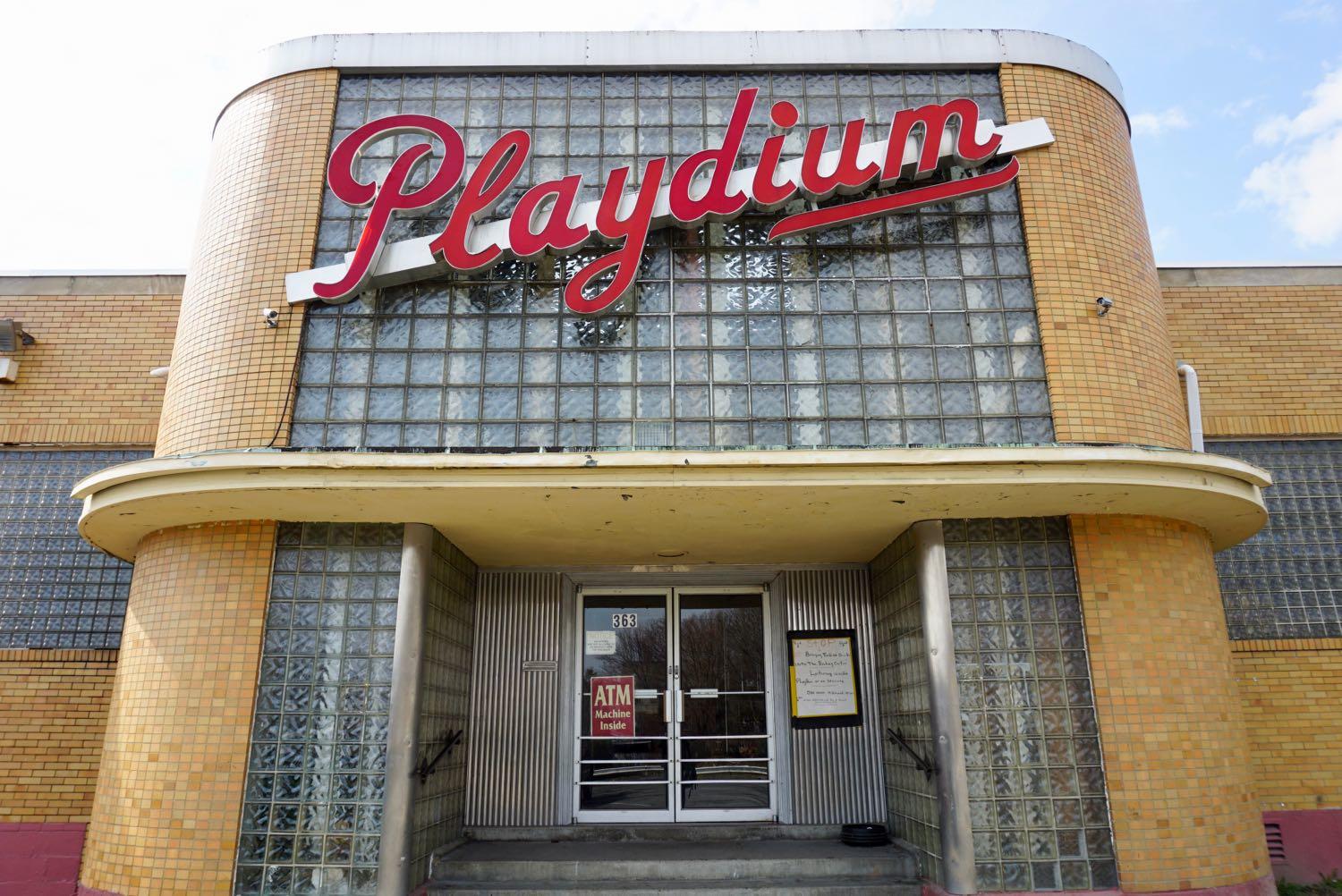
The Playdium is, as you've no doubt heard, set to be demolished this year and there's an apartment development planned for the site.
This Saturday, April 14, the contents of the old bowling alley on Ontario Street in Albany will be auctioned on site starting at 11 am. Everything will be up for sale except for the bowling lanes and bowling balls. (Sales are cash only.)
In a sense, these are the last few moments of the Playdium. After this weekend, stripped of its parts, it'll just be more or less another building. And then it will be gone.
So we stopped by Friday to get a last look and snap a few photos.
At the corner of style
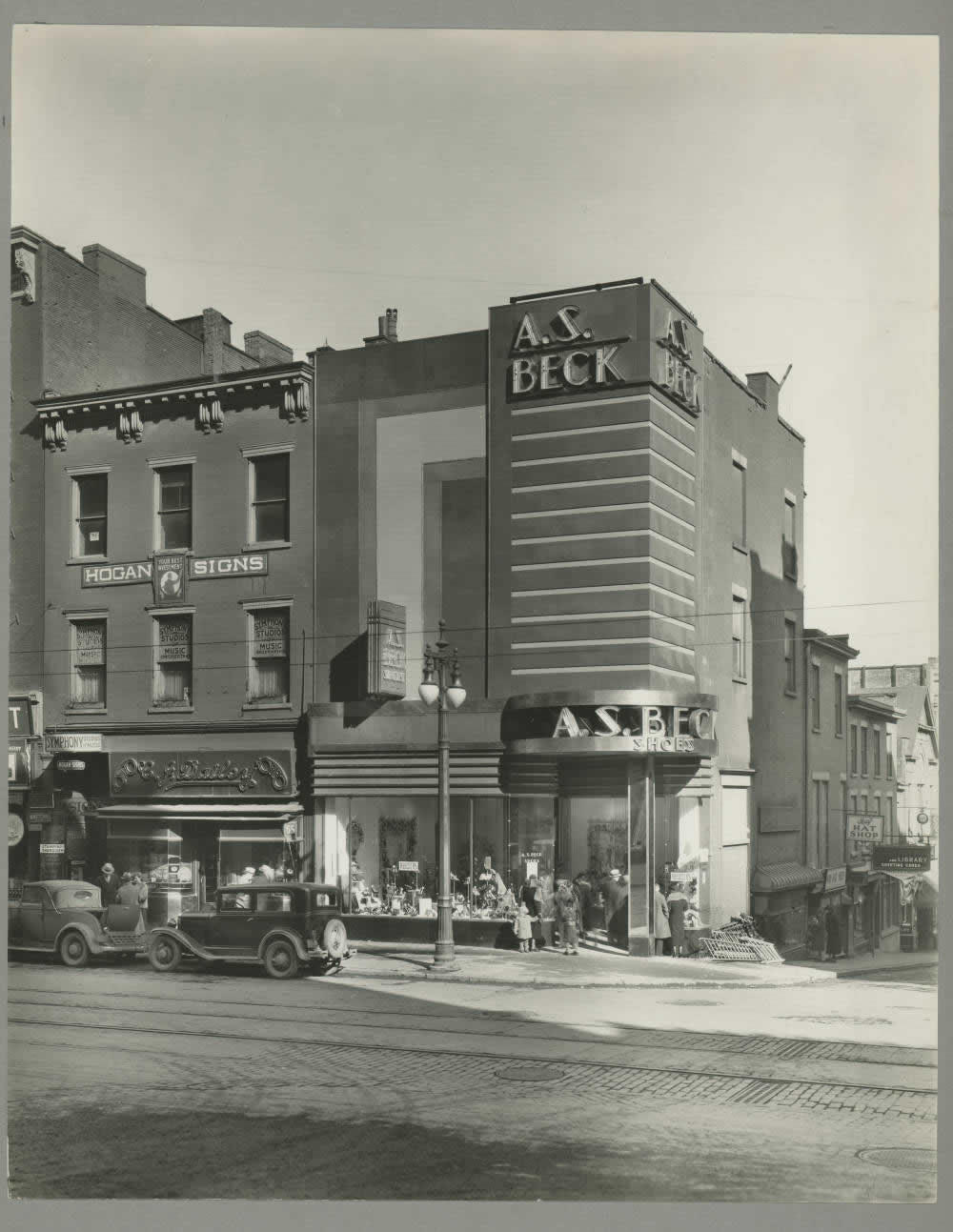
The building that currently stands at 67 North Pearl Street in downtown Albany is just about the most plain structure along that entire stretch. So this photo from the Albany Public Library History Collection -- of the same spot and a rather much more stylish building (in 1930something?) -- caught our eye. (Here's a slightly different angle.)
A.S. Beck was a shoe store chain that started in Brooklyn in the 1910s. By 1950 the spot was a new, expanded location for the W.T. Grant department store. That Grant store apparently was quite the success for a while.
By the way: The photo above also provides a glimpse of Steuben Street as an actual street.
Albany History Lost and Found
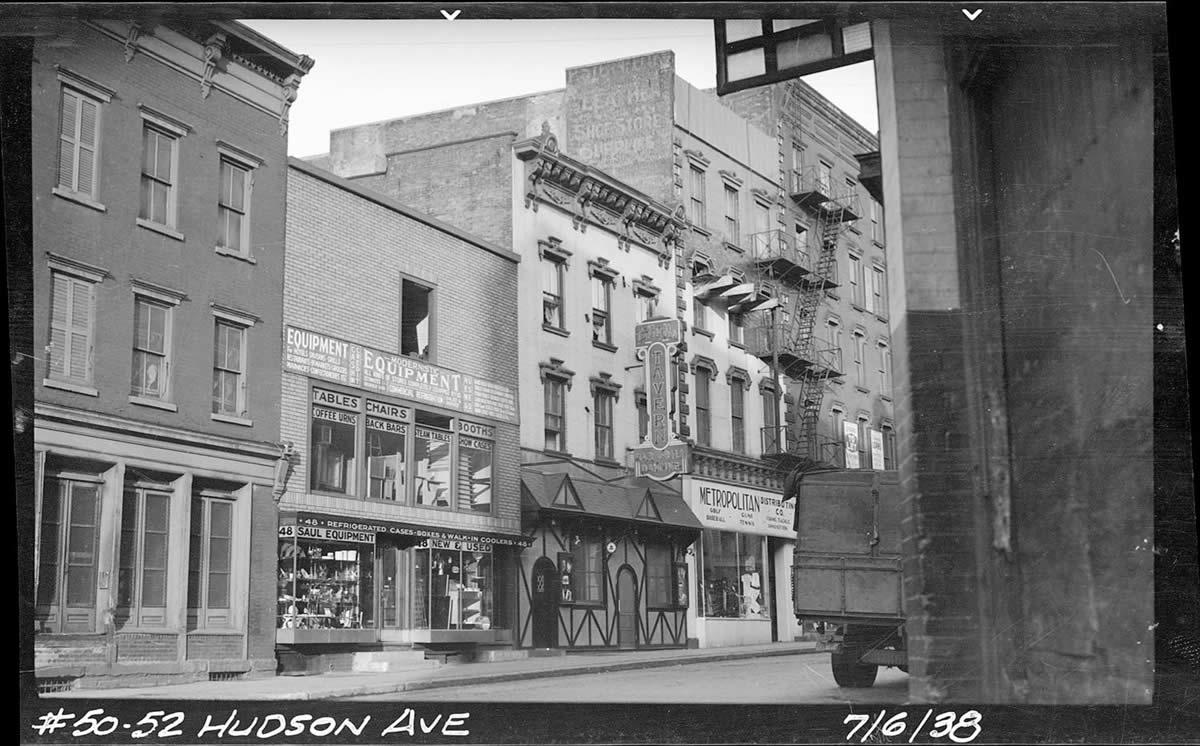
This looks interesting and fun: A bunch of local history nerds are getting together at the University Club in Albany May 4 to talk about lost-and-found history. Blurbage:
Everyone who has studied local history has had the experience of finding a document, an artifact, a landmark, a recording, some piece of evidence that helps us see with new eyes the 400+-year-old city that surrounds us. The excitement of discovery is the focus of this program. We've invited six Albany historians to talk about their research "finds" and explain the significance.
Albany Archive's Matt Malette with MC, and the lineup also includes:
+ Bill Brandow, associate architect, John G. Waite Associates; vice-chair, Albany Historic Resources Commission.
+ Maeve McEneny, education and heritage coordinator, Discover Albany.
+ Aaron Noble, senior historian and curator, New York State Museum.
+ Akum Norder, author, The History of Here: A House, the Pine Hills Neighborhood, and the City of Albany.
+ Paul Stewart, co-founder, Underground Railroad History Project of the Capital Region.
The event's sponsored by 98 Acres in Albany, Cornerstone Consulting, and The Society of Architectural Historians. It's sort of a follow-up to the "Left on the Drawing Board" local history event in Troy this past January, which was also organized by Cornerstone.
"Albany History Lost and Found" is Friday, May 4 at 5:30 pm. It's free and open to the public.
No precedent: The life of Kate Stoneman
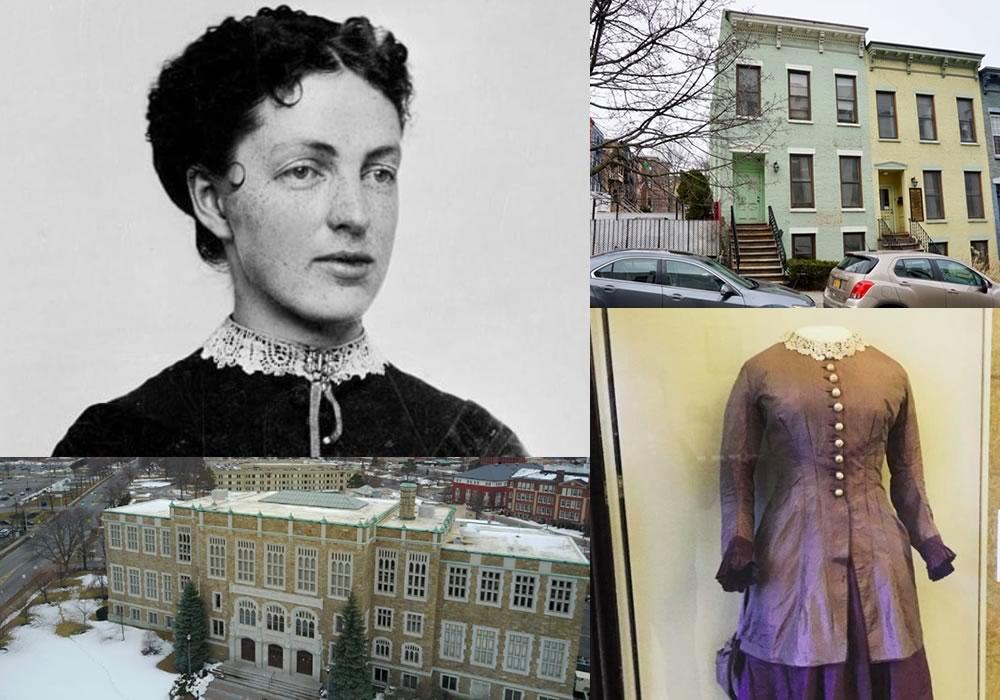
The bar exam is one of the toughest tests anyone seeking a professional license must take. Imagine spending months studying for this one test, cramming different areas of complicated law and legal principles into your brain, hoping you only have to take the test once. And, congratulations, you did it!
Now imagine going to apply for membership in the state bar association -- and you're denied the ability to practice law solely because of your gender.
That exact scenario happened to Albany resident Katherine "Kate" Stoneman in 1886.
And here's what she did about it.
The portrait of Peter F. Baltimore
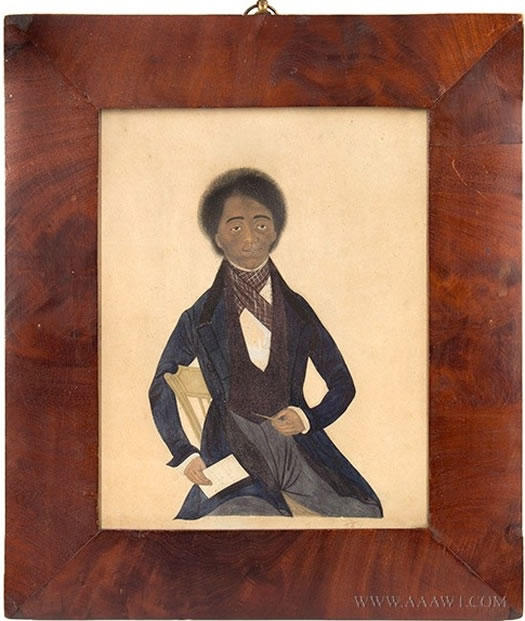
That portrait above depicts Peter F. Baltimore, a prominent resident of Troy during the early 19th century. The Rensselaer County Historical Society has an opportunity to buy the rare circa 1840s watercolor for $15,000 -- and it's asking for the public's help. Historical society blurbage:
RCHS has been offered a rare second chance to acquire an exceptional circa late 1840s watercolor portrait of Peter F. Baltimore (1829-1913), prominent member of an important free black family who came to Troy in the late 18th-early 19th century. They were key members of the community, particularly working in the area of abolition. Peter was a barber who traveled to NY City with Rev. Henry Highland Garnet as an early anti-slavery proponent. His barber shop on First Street was a documented part of the local Underground Railroad system. RCHS uses his unique story in school programming, tours, and other presentations to make connections to our shared national history and to "recognize every face and every story." Peter's only son was Garnet Douglass Baltimore, RPI's first black graduate, who became a civil engineer and designed Troy's Prospect Park among many other important projects.
RCHS had $9,000 of the $15,000 raised as of earlier this week, with an event focused on the portrait and its historical context Wednesday (March 14) evening. It has a deadline of April 24 to raise the money. [TU]
As that blurb alludes to, the Baltimores have a remarkable family story in Troy. Peter Baltimore's father, Samuel, escaped slavery. Peter Baltimore owned a high-end barbershop, was a key figure in the local abolitionist community, and assisted Harriet Tubman in the dramatic rescue of Charles Nalle. And Garnett Douglass Baltimore? In addition to accomplishments mentioned above, upon his death he was remembered in a Troy newspaper as being "as much of Troy as the monument."
image: Antique Associates At West Townsend via RCHS
The Elouise and milk bottles
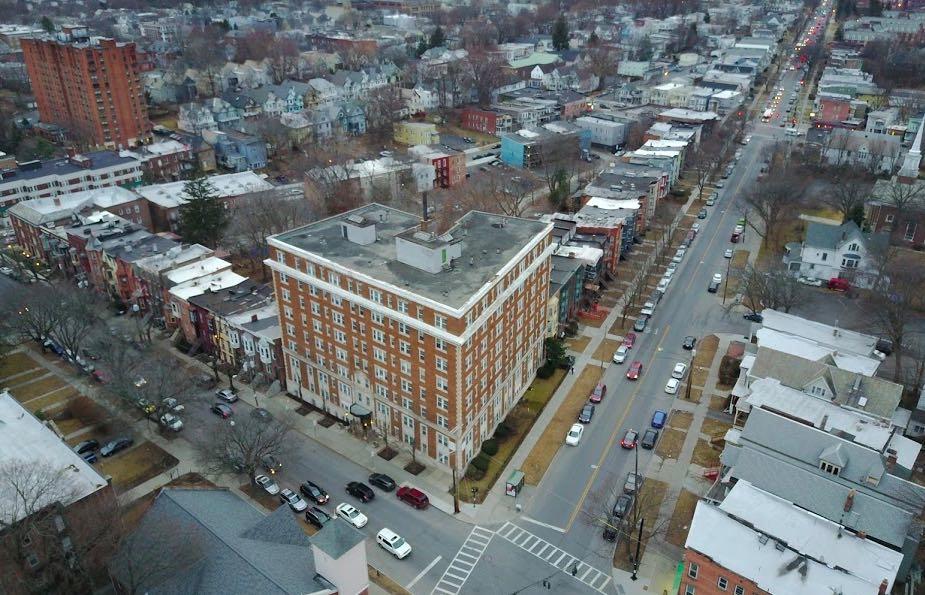
The Elouise is at the corner of South Lake and Western / photo: Tim Jackson
At South Lake Avenue and Western Avenue in Albany stands an eight-story building. Built in the late 1920s in the Classical Revival style, it's a landmark of the Pine Hills neighborhood, surpassed in height only by the Royce on the Park apartment building on nearby Hudson Avenue.
Outside the building a bronze plaque that greets all who enter simply reads: "Elouise Apartments 11 So. Lake Ave."
Side by side on Clinton Ave, back then
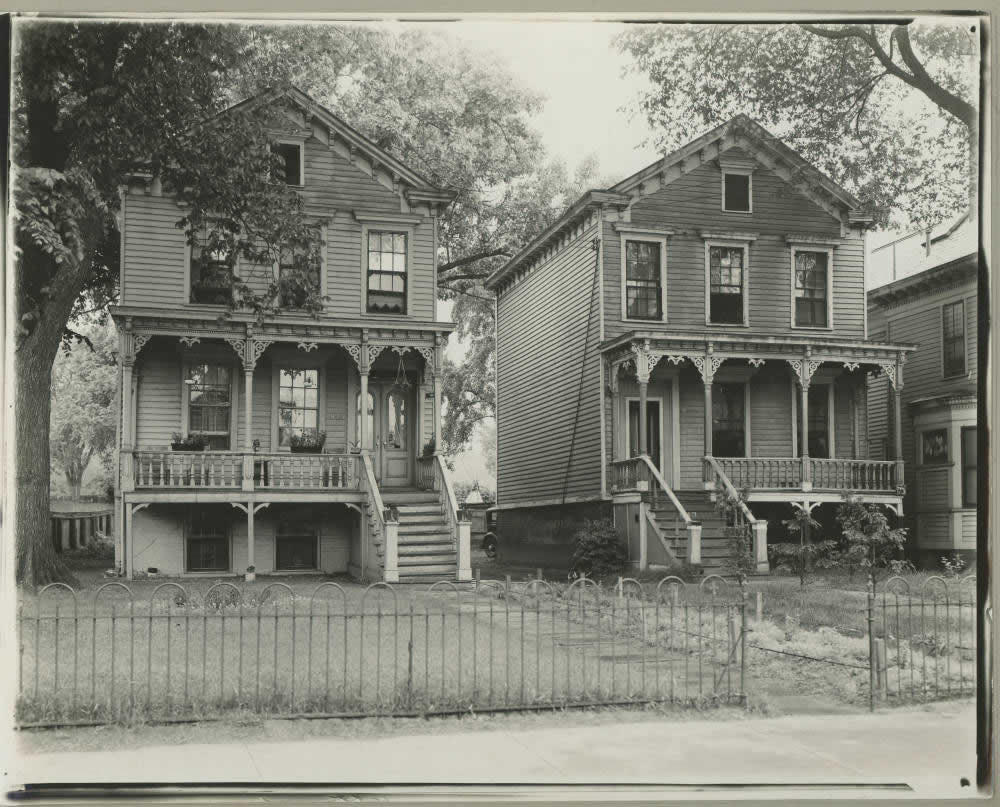
You know about the Albany Public Library's online collection of local history photos, right?
We highlighted a bunch of old storefront photos from downtown Albany last year -- and some of those are really eye catching because of all the signage and evidence of a vibrant retail life.
But the collection also includes a bunch of old photos of residential portions of the city. And while those images don't necessarily jump out and grab you, they are kind of like flipping through an old family album.
The Glynn Mansion and the story of Martin Glynn
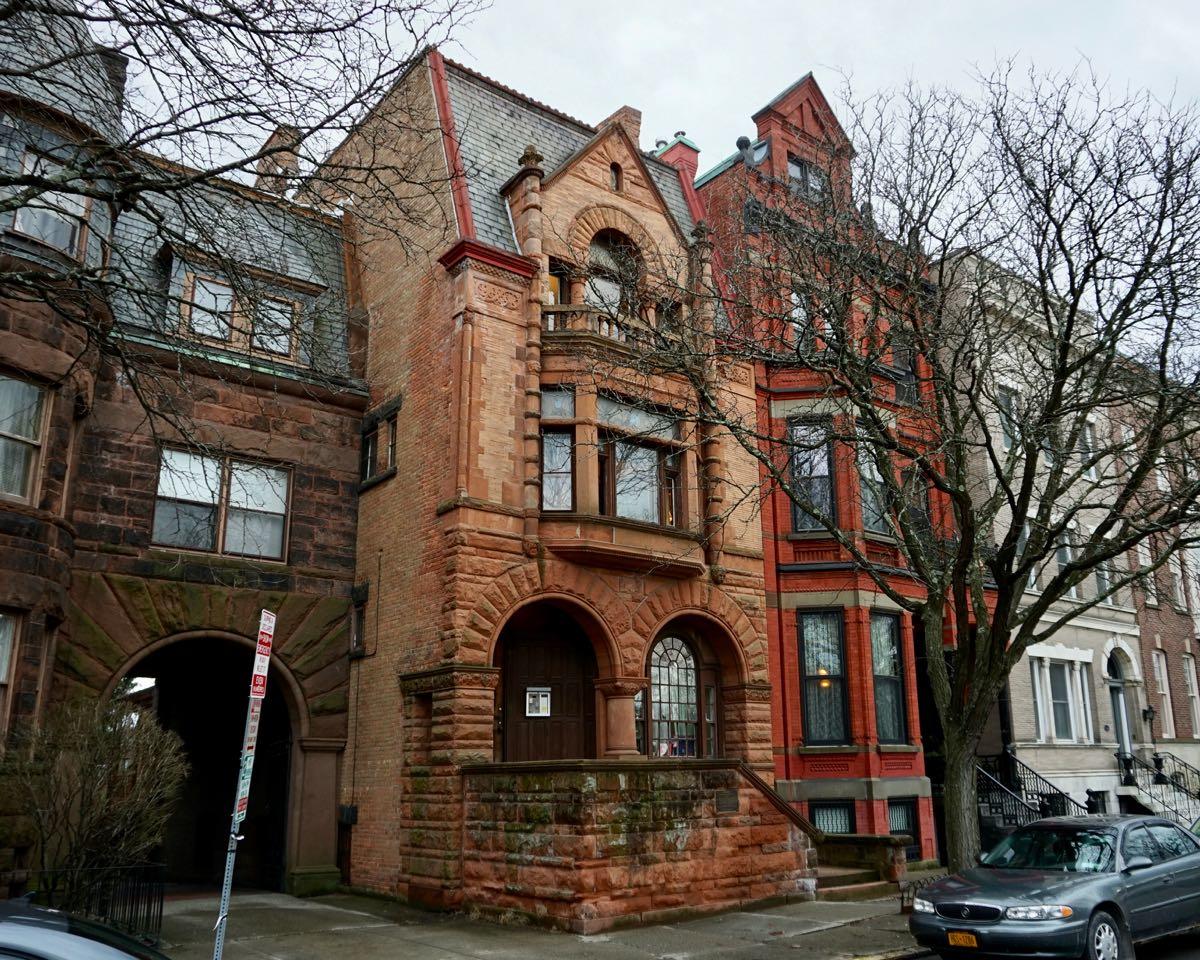
Overlooking Washington Park very close to where State Street and Willett Street meet stands a three-story, pink sandstone building with a Romanesque design and an interior of intricate woodwork.
It was in this building that the only resident of the city of Albany who has ever ascended to the governorship of the State of New York once lived.
That resident was Martin Henry Glynn.
When the downtown street trees reached wide

The photo above is of the northwest corner of State and Pearl in downtown Albany, dated 1849. It's from the commercial streets section of the Albany Public Library History Collection.
State and Pearl is one of the oldest intersections in the city, and in many ways it's still the heart of downtown. During this period, the building on this specific corner was the Boardman and Gray piano company.
But the things that really catches our eye about this photo are the trees -- so tall and stretched out for downtown city trees.
That tree on the corner was an elm and not just any elm. It was the elm, said to have been planted by Philip Livingston in 1735. The tree was a city landmark and the corner was known as The Elm Tree Corner.
The elm was cut down in 1877 as part of a paving project.
A snapshot from a winter day, then
This photo is the frozen Washington Park Lake in the 1880s. It's from the extensive Albany Group Archive on Flickr.
There are a few things we like about this photo. One is that it shows the old lake house. The other is that, if you head over to Flickr and look at a big version of the photo, you there are all these little moments going on. People chatting. Kids playing. Three women trying hold their balance.
It's just a snapshot of life on a winter day, here, 130some years ago.
Earlier: "This is the hat."
Dry goods and carpets
Knit underwear? Check.
— Schenectady Hist Soc (@SchenectadyHist) January 31, 2018
Dapper staff? Check.
Carpet hanging from the windows? Check.
H.B. Salisbury's Dry Goods and A.B. Coffin's Carpets at 162 State St. was the place to be. pic.twitter.com/AFfubHwJUr
The Schenectady County Historical Society shared this photo on Twitter Wednesday of the old Salisbury Dry Goods and Coffin Carpets that was once on State Street in Schenectady. The historical society says the photo is labled 1885-1888.
We're always suckers for old storefront photos. But the thing that really caught us about this pic is the people. If you click over to the large version of the pic, you can see them more clearly. They're all dressed up. And it's like they're all not exactly sure about how to stand there while having their photo taken.
We wonder what they'd think if someone told them them that more than a century later this photo would be translated into instructions by a machine, transmitted across wires and the open air, and then displayed on pieces of glass that people carry around in their pockets.
By the way: The historical society's Grems-Doolittle Library and Archive has a good blog that highlights pieces and stories from its collection.
A 19th century glimpse of St. Joseph's and Arbor Hill
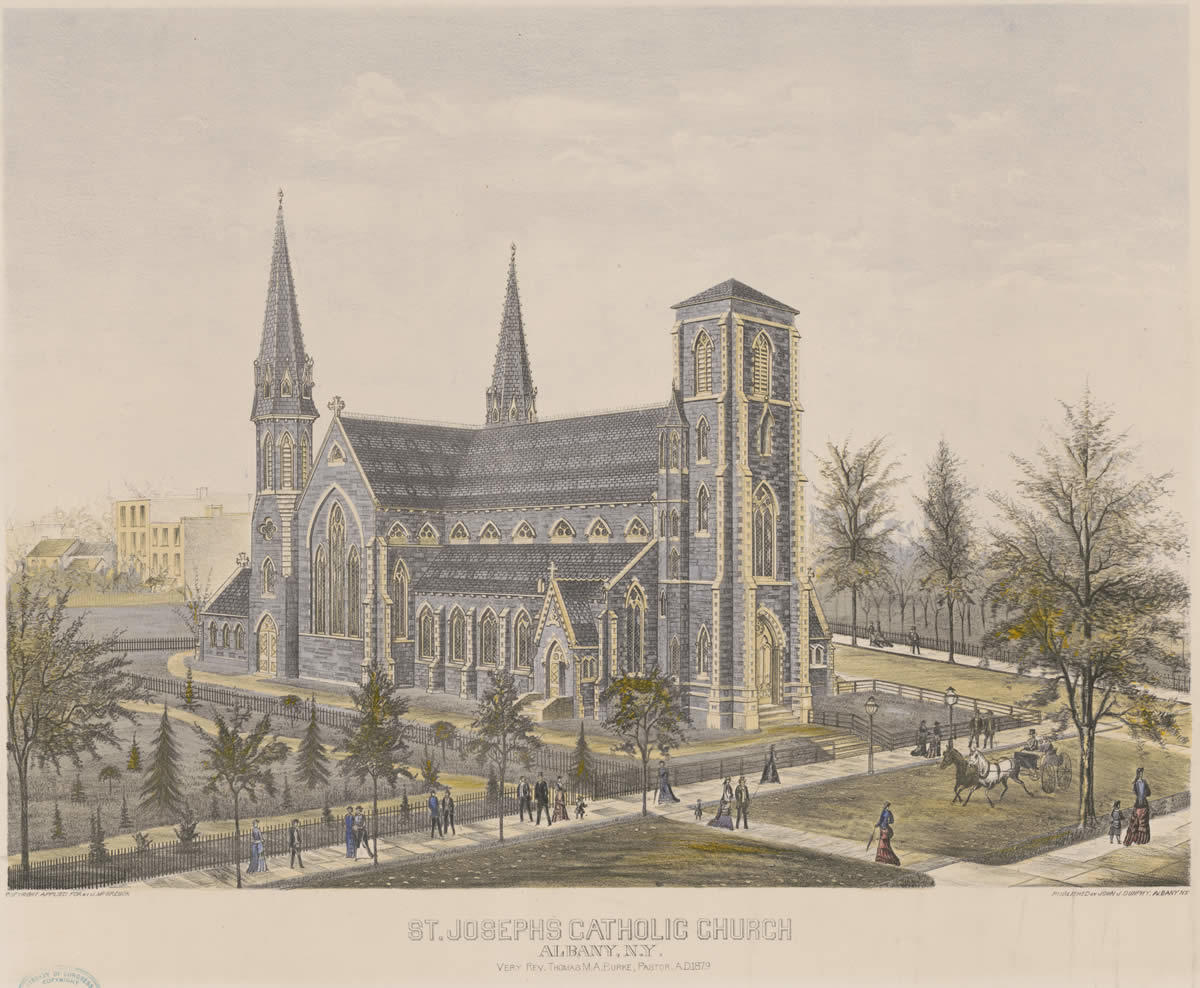
We were flipping through local images in the Popular Graphic Arts online collection at the Library of Congress (as one does) and came across this nice 19th century illustration of St. Joseph's in Arbor Hill.
It looks like it was created in 1879, about two decades after the church was built. The church's main spire -- that is noticeably missing from this illustration -- was apparently added in 1910.
St. Joseph's was designed by Patrick Keely, who was also the architect of the Cathedral of the Immaculate Conception just across town. There also happens to be a 19th century illustration of the cathedral in this collection, too.
The church still stands today, of course, though it continues to wait for its next life.
By the way: The history of Arbor Hill / Ten Broeck Triangle has an extensive Wikipedia entry
Completely unrelated: The Popular Graphic Arts collection also includes a "porcineograph" of the United States -- that is, a map of the US in the shape of a pig -- from around 1876 with the foods for which each state was said to be famous.
New York's notables: "Roast Pig, Fried Oysters, Strawberry Shortcake, & Uninvestigated Drinks." Yes, uninvestigated drinks.
[via]
Where every Albany mayor since the Civil War has lived
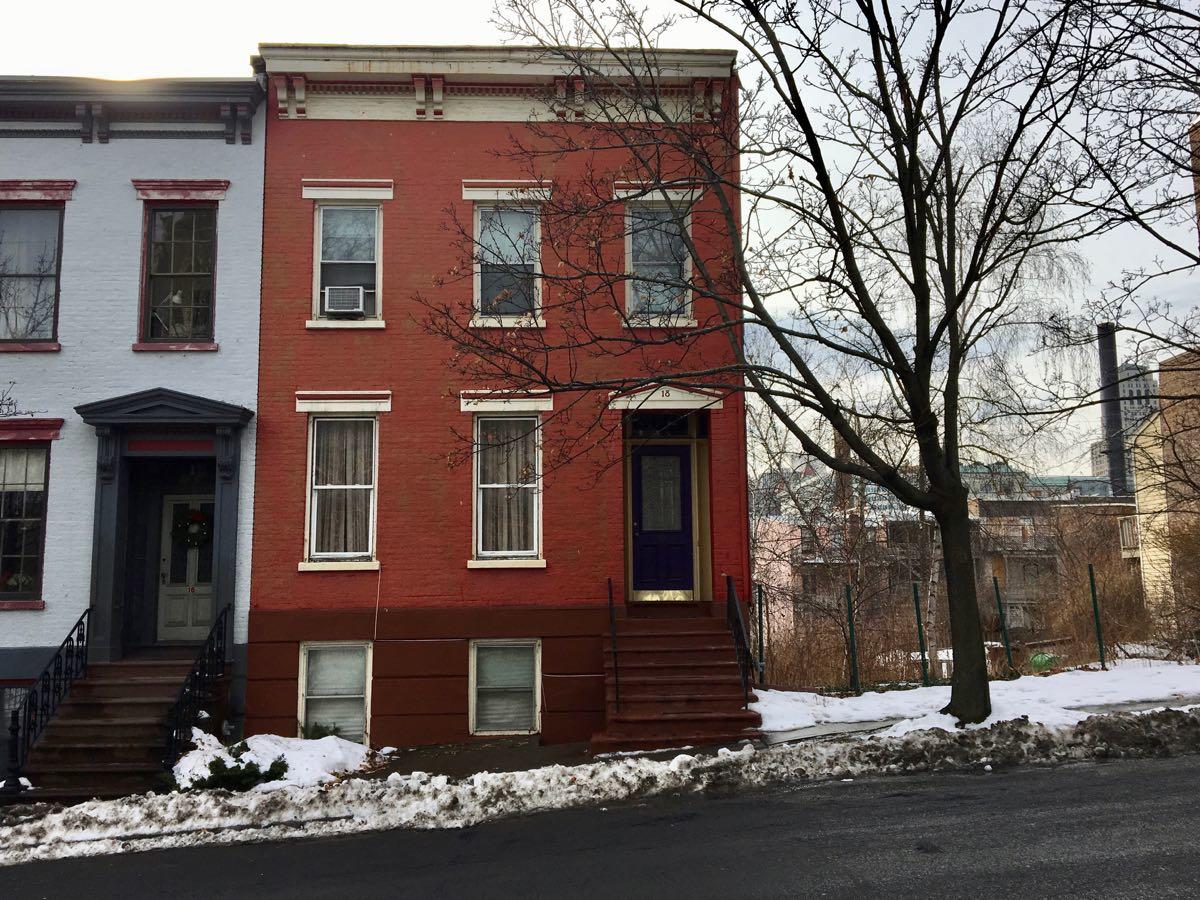
The home the Sheehans purchased on First Street.
Kathy Sheehan's office announced Thursday that the mayor and her husband have bought a home in the Ten Broeck Triangle section of Arbor Hill and plan to move there after renovating it.
From the press release:
"We have been looking for an opportunity to restore one of Albany's many historic homes, and we also wanted to participate in the revitalization that is occurring in our Downtown," said Mayor Sheehan. "Our new home is close to a number of new projects that include market rate and affordable housing. We love our current neighborhood, but we are ready to downsize and enjoy a historic, walkable, diverse, mixed-income neighborhood close to City Hall, the Palace Theater, The Rep, and all that Downtown Albany has to offer."
Sheehan's choice to move to Arbor Hill breaks a longstanding pattern about where Albany's mayors have lived -- going way back.
To put the move in some geographic perspective, we looked up the home addresses of every Albany mayor since the Civil War and mapped them...
Albany, the artist Walter Launt Palmer, and the colors of snow

The painting above is "Albany In The Snow" by Walter Launt Palmer. And when we saw it today -- thanks to the Albany Muskrat for pointing it out -- the work just seemed to capture the current feeling of January.
The painting is from 1871. That's the Court of Appeals building, which of course, still stands on Eagle Street.
A few things about Palmer, who was an Albany native...
Lower Lancaster Street
This could be an interesting look into Albany not-so-long ago past: WMHT will be showing the 1981 documentary Lower Lancaster Street this Thursday at 7:30 pm. Blurbage:
LOWER LANCASTER STREET is a documentary film that focuses on the gentrification of a rundown block in Albany that was being taken over by the middle-class at the expense of the working-class and the unemployed. Produced over the course of an entire year beginning in 1980, the film captures the transformation that took place in the decade following the completion of the Empire State Plaza where areas close to the newly constructed New York State office buildings were largely purchased by those in the middle class who displaced a predominantly working poor population who had made these neighborhoods their home. LOWER LANCASTER STREET originally appeared on PBS stations across the United States as part of the US CHRONICLE series which was hosted by Jim Lehrer.
LOWER LANCASTER STREET was produced in a cinema verite style by Steve Dunn, who lived on Lancaster Street at the time while working as a cameraman for the iconic public television series, INSIDE ALBANY. LOWER LANCASTER STREET was narrated by INSIDE ALBANY host, David Hepp. Mr. Hepp has now recorded a new on-camera introduction and conclusion for the documentary to take the place of what Jim Lehrer recorded almost 35-years-ago.
That a short trailer embedded above. WMHT says it hasn't shown the doc in more than 30 years.
If you're a WMHT member, you can watch the entire 30-minute doc online at that first link above.
Lancaster now...
Here's the Google Street View (captured July 2017) of that same block depicted in the thumbnail of the embedded trailer.
Remembering Minnie Clark Bolster
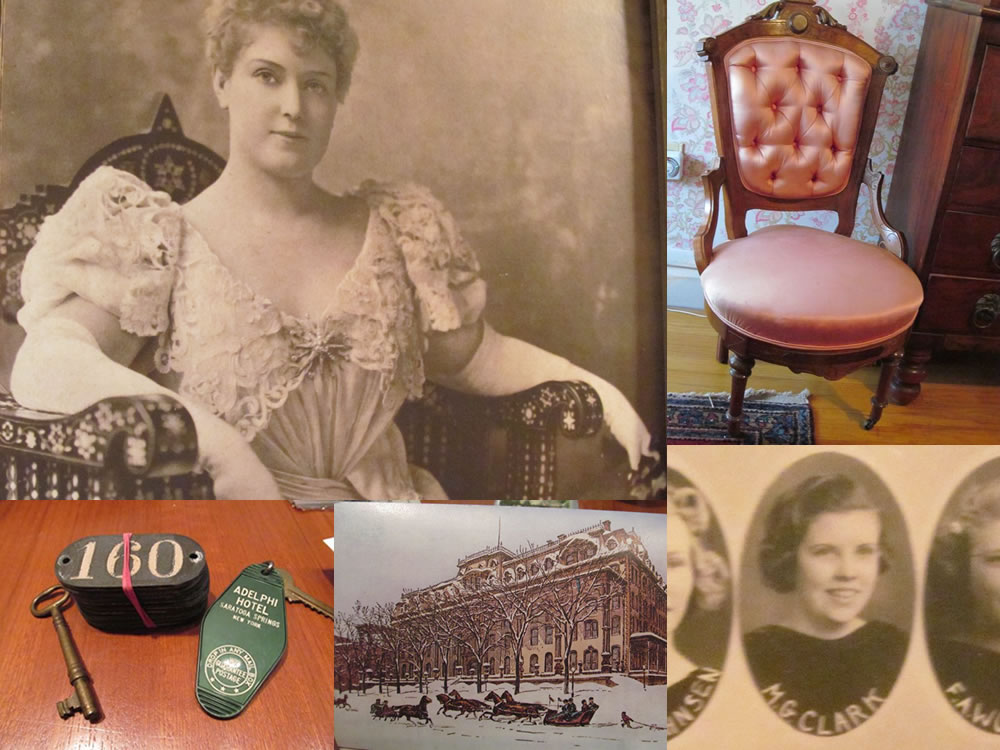
A few items from Minnie Clark Bolster's collection. That's a high school photo of her in the lower right corner.
Minnie Clark Bolster -- who was passionate about Saratoga Springs, and served as an unofficial historian of the city -- died this past Saturday. She was 97 years old.
Bolster amassed a huge collection of items from the history of Saratoga. Her home was a like a mini museum. And two years ago she was nice enough to give us tour of the many pieces -- chairs, tables, skeleton keys from the famous Saratoga hotels, photos by her brother-in-law (George Bolster), postcards, books, paintings, and more. At the time her health was failing, but her mind was sharp as a tack and she was an engaging spirit.
B Lodge & Company is 150 years old and its owner says it's having one of its best years
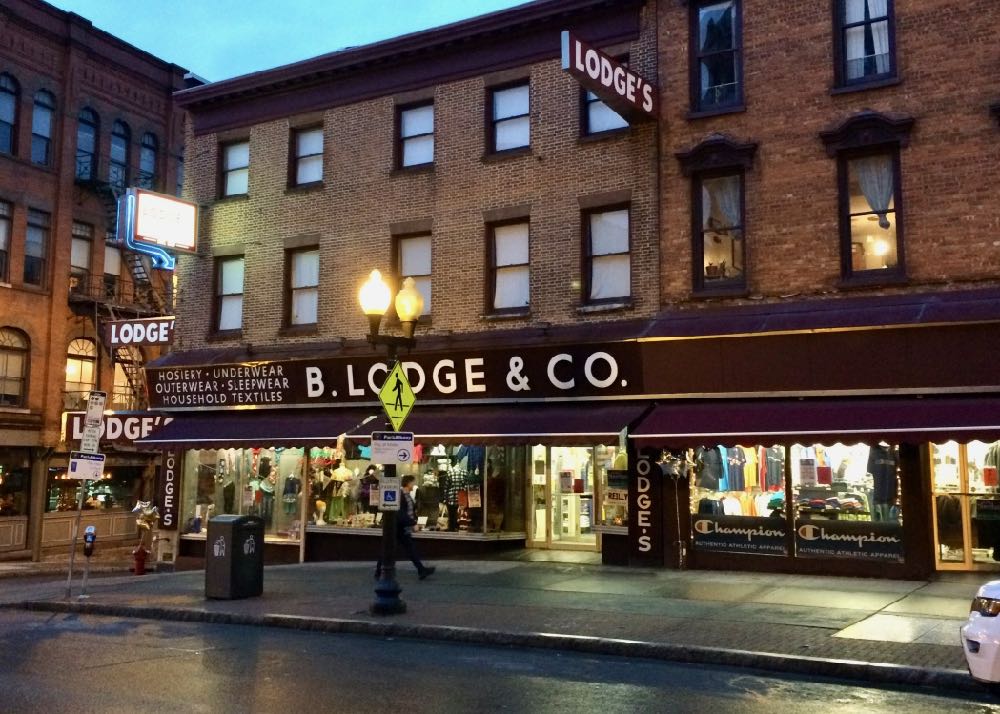
In a city with roots that stretch back four centuries, it take some doing to be considered old.
That said, it's fair to say B. Lodge & Co. -- or Lodge's as pretty much everyone calls it -- is very old. It's an Albany institution, dating back to 1867 (and maybe even earlier). It's survived booms and busts, and persisted downtown on Pearl Street even as retail stores fled the city over the last half century. (Because no matter what's happening in the world, people gotta have a place to buy socks.)
On Wednesday the Albany County Legislature recognized the 150th anniversary of Lodge's proclaiming it "B. Lodge & Co. Day" in the county.
Mark Yonally currently owns Lodge's with his sister, Sharon Freddoso. They took over the business in 2011 from their parents, who had owned it since the 1990s (and worked there since the 1980s).
We talked with Yonally for a few minutes about being part of an Albany tradition, staying afloat in the age of Amazon, and how things are going downtown.
Window shopping at the grocery, then
Check out this Pearl Street pic from the 1940s posted from the Albany Group Archive on Flickr. The Albany Muskrat highlighted it on Twitter with a Thanksgiving ad for the grocery, Grand Cash Markets.
Recommended: Heading over to Flickr and zooming in on the photo. You can see into the store itself a bit and gawk at the all the vegetables on display.
Also: There's a woman standing under the B. Lodge sign (same typeface as today!), and she has a "I'm an annoyed you're taking my photo" look on her face.
Looking down Washington Ave in 1888
The NYS Capitol & Plaza Instagram account posted this pic the other day. It's from 1888.
We were struck by how some things about the view down Washington Ave are exactly the same -- and others less so. The current version of Albany City Hall is about five years old in this photo. And, of course, the Capitol is there.
But the streetscapes leading up to those landmarks feel so much more close and tightly packed than they are today.
Coming soon: The history of a house, a neighborhood, and Albany
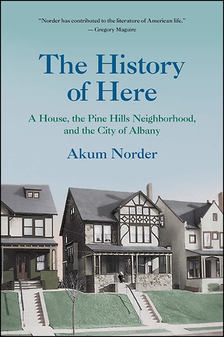 Check it out: The History of Here -- Akum Norder's book about "A House, the Pine Hills Neighborhood, and the City of Albany" -- is available for pre-order from SUNY Press.
Check it out: The History of Here -- Akum Norder's book about "A House, the Pine Hills Neighborhood, and the City of Albany" -- is available for pre-order from SUNY Press.
Blurbage:
The History of Here follows Albany, New York's, Pine Hills neighborhood through more than one hundred years of change. At its heart is the story of Norder's 1912 house and the people who built and lived in it. As Norder traced their histories, she came to see the development of her house, her street, and her neighborhood as a piece of Albany's story. In the lives of its residents, their struggles and triumphs, she saw a reflection of twentieth-century America.
Drawing on interviews, city records, newspapers, out-of-print books, and other sources, Norder's narrative makes a case for city neighborhoods: their value, their preservation, and the grassroots involvement that turns a jumble of houses into a community. Funny and thought-provoking, readable and relevant, The History of Here celebrates the sense of place that fuels the new urbanism.
We've been looking forward to this book since we heard Norder was working on it. She's a wonderful writer who has a keen eye for details and stories. (We were lucky to have her write for AOA many years ago.) Also, according to sources, she is "kind of a local celebrity in the nerd world."
The History of Here is set to be published in February. It's $19.95 pre-ordered on the SUNY Press website.
The United States v. Susan B. Anthony at the Albany federal courthouse
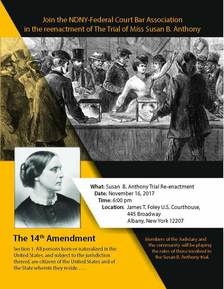 Speaking of the women's suffrage movement...
Speaking of the women's suffrage movement...
The federal courthouse in Albany will be hosting a re-enactment of the 1873 trial in which Susan B. Anthony was tried for voting in the presidential election.
The re-enactment is being staged by the Northern District of New York Federal Court Bar Association and members of the judiciary and community will be playing the roles of the people involved.
In November 1872 Susan B. Anthony and 14 other women convinced election inspectors in Rochester to allow them to vote in the presidential election. Their argument was that 14th Amendment required that women be allowed to vote. They were arrested for illegal voting, and Anthony was put on trial.
Anthony was found guilty at the direction of the judge. She then proceeded to unload on him in what became a famous speech and a key moment in the women's suffrage movement (even if accounts of it vary). A clip from one of the accounts:
Yes, your honor, I have many things to say; for in your ordered verdict of guilty, you have trampled under foot every vital principle of our government. My natural rights, my civil rights, my political rights, my judicial rights, are all alike ignored. Robbed of the fundamental privilege of citizenship, I am degraded from the status of a citizen to that of a subject; and not only myself individually, but all of my sex, are, by your honor's verdict, doomed to political subjection under this, so-called, form of government.
The trial re-enactment is Thursday, November 16 at 6 pm in James T. Foley U.S. Courthouse on Broadway in downtown Albany. It's free.
Here's a look at the big, new State Museum exhibit about the women's suffrage movement

This year marks the 100th anniversary of women's suffrage in New York State. To be specific, it was November 6, 1917 that New York voted 54-46 to grant women in the state the full right to vote.
The State Museum has a new exhibit opening this weekend that highlights the history of this turning point. Four years in the making, Votes for Women: Celebrating New York's Suffrage Centennial includes more than 250 artifacts and images related to the suffrage movement -- from Elizabeth Cady Stanton's writing desk to campaign paraphernalia to Susan B. Anthony's alligator purse.
What's maybe more interesting about Votes for Women is how it places the push for suffrage in New York in the wider historical context of social and political movements, on a timeline that stretches many decades both backward and forward from 1917.
We got a chance to see the exhibit Wednesday during a preview, and talk with the co-curators about how New York experienced this movement...
A view of the great Cohoes Falls

For no other reason than we saw this today and liked it...
Check out this 18th century illustration of the Cohoes Falls. The scene look so wild and alive in the image.
From the description at the Library of Congress:
A view of the great Cohoes Falls, on the Mohawk River, the fall about seventy feet, the river near a quarter mile ... // sketch'd on the spot by his excellency Governor Pownal ; painted by Paul Sandby ; engraved by Wm. Elliot.
"His excellency Governor Pownal" was Thomas Pownall, a British colonial official who served as governor of the Province of Massachusetts Bay from 1757-1760. Pownall first arrived in North America in 1753 as the private secretary to Sir Danvers Osborne, who who had just been appointed governor -- and then committed suicide. Pownall stuck around and decided to travel around studying the colonies. He ended up becoming friends with Benjamin Franklin and attended the Albany Congress of 1754, an event that helped plant some of the seeds that later grew into the revolution.
Another random bit: Pownall in Vermont's Bennington County is named after him.
Paul Sandby was a British military mapmaker and landscape artist. He was also one of the founders of the Royal Academy of Arts.
A display of old money

A few "obsolete notes" from Troy from the first half of the 19th century. / photo courtesy of Ferris Coin Co.
Paper money in the United States is pretty boring in its design. (Other countries really have more fun with currency.) But its history includes plenty of weirdness.
The Ferris Coin Co. has moved to a spot on Wolf Road, and as part of the grand opening of its new shop it's displaying a collection of old paper money from this area. Press release blurbage:
Opening next Wednesday, Ferris Coin invites the public to view its first themed display: "Capital Region Currency: A History of Money in America." The small exhibit features a sampling of currency used in the Capital Region dating from the Colonial era to present day. Many of the paper notes were printed locally and bear the names of Capital Region cities, including Albany, Schenectady, Watervliet, Hudson and Troy. ...
Continental Currency notes from New York are printed on thick stock paper, with ornamentation around the border, and early versions of the New York Seal with beavers, windmills, kegs and Dutch trading symbols. Some notes have pieces of mica embedded in them or impressions of leaves, which are unique, like fingerprints.
"After the Revolutionary War, some towns printed notes, but Americans didn't have much trust in paper money," Demis said. "Americans wanted hard assets, mostly coins."
During the 1820s through 1850s, small banks, like Manufacturers Bank of Troy, issued what are now called "obsolete notes" that would circulate in specific geographic areas like the cities of Troy and Schenectady or Albany County.
The shop's Facebook page has a bunch of images of the old currency, along with some of the history.
The small exhibit will be on display November 1-22, Monday-Friday 9 am-5 pm and Saturday 9 am-3 pm.
See also: "An Illustrated History of American Money Design" at Gizmodo.
A shareable reminder of that shop in Troy

Because... well, who knows. But you know this would have gotten "likes" on the Victorian Facebook.
Memes, sponsored content, Facebook link bait -- all this stuff might seem very modern. But it's probably not a stretch to say that people have pretty much always been into shareable images like this, it's just that now we are all collectively able to manufacture and distribute it at saturation levels.
We were thinking about that while browsing through old trade cards for shops in Troy from the late 19th century. The cards were sort of like modern business cards, but were a form of content unto themselves that people traded and collected.
Some are beautiful. Some are kind of funny. Some are just plain weird. Here's a few of them from Troy...
The curiosities, sideshows, and phantasmagoria of the old Albany Museum
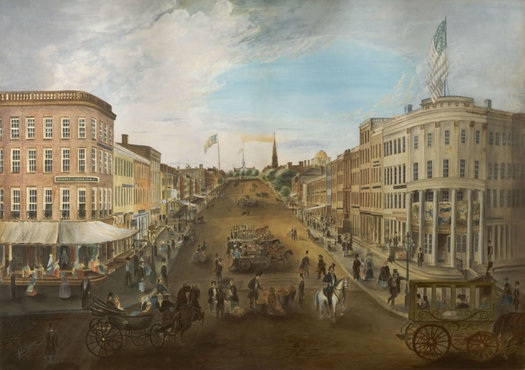
In this 1848 painting of State Street in Albany by John Wilson, the Albany Museum is on the right in the building with the colonnade. (Head over to the Albany Institute collection for a closer look.) / image: Albany Institute of History & Art
In the early 19th century, Henry Trowbridge and Harry Meech housed more than 200,000 natural and artificial curiosities at their Albany Museum. Life-sized sized wax figures, phantasmagoria shows, cosmorama, magicians, necromancers, lusus naturae, an Egyptian mummy, and traveling sideshows. All could be seen for the price of a quarter.
The museum started in the upstairs in the old city hall in 1809 and eventually moved to a beautifully colonnaded building at the corner of State and Broadway. It was part of a wave of "dime museums" that were sprouting up in cities across the nation.
They mixed amusement with education -- or, at least, what qualified then as education -- and were centers of family entertainment at the time.
100,000 pieces of the past
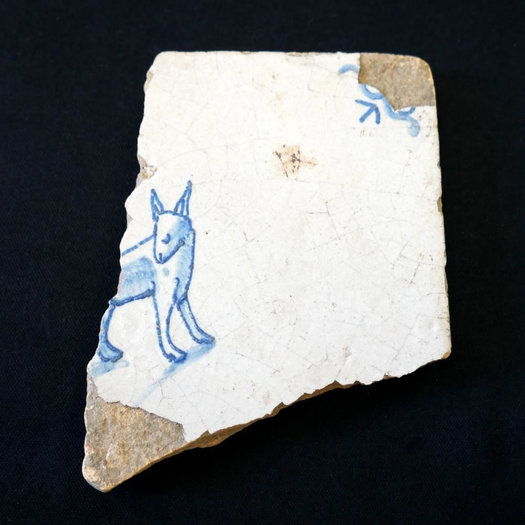
There was something about this piece of Delft pottery from Schuyler Flatts depicting a dog that caught our eye. / photo: New York State Museum
The State Museum announced Thursday that's it's acquired more than 100,000 archaeological artifacts from Fort Orange and Schuyler Flatts. It's planning an exhibit based on the items for 2018.
Press release blurbage:
Archaeological excavations in the early 1970s under the direction of Dr. Paul Huey resulted in the recovery of 36,000 artifacts from Fort Orange and over 80,000 artifacts from Schuyler Flatts. Among the thousands of artifacts recovered are everyday items such as ceramic plates, tobacco pipes, drinking glasses, firearm parts, and food remains. Trade items in the collection include glass beads, mouth harps, and other items. Together, these two collections tell the story of the first Native Americans who lived in the Upper Hudson Valley for thousands of years before Europeans arrived, interaction between Native people and the first Dutch Colonists, the development of Fort Orange as a trading center, the establishment of Rensselaerswijck, and everyday life in 17th century New Netherland. ...
The Fort Orange and Schuyler Flatts collections were transferred to the New York State Museum by the New York State Office of Parks, Recreation and Historic Preservation. Some of the artifacts remain on public exhibition at Crailo State Historic Site in Rensselaer, Senate House State Historic Site in Kingston, and Schuyler Mansion State Historic Site in Albany.
Here are a few examples from the newly-acquired lot of objects.
Fort Orange was located roughly where 787 and the Dunn Memorial Bridge now meet. Schuyler Flatts -- now the Schuyler Flatts Cultural Park -- is in Menands, along Broadway. You might remember the recent Schuyler Flatts Burial Ground Project, which was dedicated to providing a respectful burial for the remains of 14 people who had been slaves at the former Schuyler family estate two centuries ago.
Albany and Anti-Suffrage at Albany Institute
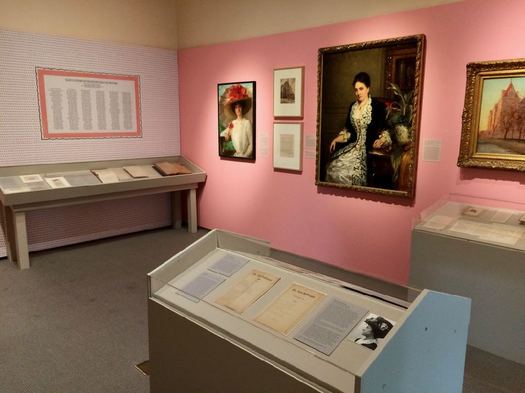
Pink was one of the trademark colors of the anti-suffrage movement.
New York State was a hotbed of the women's suffrage movement. Seneca Falls. Susan B. Anthony. Elizabeth Cady Stanton. It's a story you know.
But New York -- and Albany, specifically -- was also a focal point of the anti-suffrage movement.
A new exhibit at the Albany Institute of History and Art shines a light on this aspect of the story surrounding the push for women's suffrage. Blurbage:
Today it is impossible to imagine a world where women didn't have the right to vote. The years leading up to 1917 were fraught with difficulty both politically and personally for women on both sides of the argument. Not every woman wanted the right to vote. In fact, Albany was considered a stronghold of the anti-suffrage movement. This exhibit tells the story of the women who first met in 1894 before the New York Constitutional Convention convened, organized the Albany branch of the New York State Association Opposed to Woman Suffrage, lobbied to make their views heard in 1915, and lost their fight in 1917.
As the exhibit notes, 8,000 women in the Albany area signed document in 1894 opposing a change to the state constitution that would have opened the way for women to vote. And a listing details the officers of a local anti-suffrage women's group in 1905 -- it's full of prominent names you'll recognize from local history.
Erie: The Canal That Made America
Speaking of the Erie Canal... A new PBS hour-long documentary -- Erie: The Canal That Made America -- will make its first appearance on WMHT September 12 at 8 pm. The trailer is embedded above.
A clip from the doc's blurbage:
Often credited with helping to create what America now knows as the Empire State, the story of the Erie Canal is more than a New York story. The towpath certainly made New York City America's leading port and economic hub once the waters of the Great Lakes were wed with the Atlantic. The confluence would change the course of cities beyond the Northeast, including New Orleans and Chicago and Cleveland.
The Erie Canal is a defining story of immigration and American culture. Farmers and new citizens poured their lives into digging and developing homes, businesses and communities along what became known as "Clinton's Ditch." We learn how six men who would be U.S. president, including Washington, Jefferson and Theodore Roosevelt, are linked to the canal's destiny; though it would be a wily New York politician, DeWitt Clinton, who championed its construction.
The documentary illustrates how the canal was a route to immense social change. Slaves fleeing the south found safe paths to freedom in Canada along the canal and African Americans settled in canal towns. The ideals of the women's rights movement and the tenets of new and renewed religions were transported along the canal.
The documentary was produced by WCNY in Syracuse and it's narrated by ABC's David Muir (he's from Syracuse).
Still Here: 200 Years on The Erie Canal
Come for the beautiful drone video, stay for a few bits of history.
Check out this short -- just five minutes -- documentary about the Erie Canal called Still Here: 200 Years on The Erie Canal. It was the winner of the New York State category in the first drone video competition at the State Fair.
The doc was produced by a Syracuse-area company called Call of the Loon Productions.
As you know, construction on the Erie Canal started 200 years ago this summer. It was an audacious idea at the time and it was hugely important in the history of New York. The canal helped make the state an economic powerhouse, and it influenced patterns of population and development from here far out into the west.
Earlier
+ Tracing the old canal
+ "Surely the water of this canal must be the most fertilizing of all fluids..."
Glimpses of the old Central Ave
The Albany Group Archive on Flickr is a very deep rabbit hole of local historical images. Stumble upon something there and it could be hours before you find your way back out. Because, OK, you're going to look at only one more photo... and then another and another and another.
So it was that we ended looking through the archive's big collection of Central Ave images. One of the things that's interesting about flicking through the photos and old ads -- many of which are from before 1950 -- is that the format and streetscape of Central Ave is more of less the same as it was almost a century ago. That makes it easy to recognize places that still exist, but with different designs or uses. (Also: The photos are full of great old signs and storefronts, which you know we love.)
Here are a few quick things that caught our eye...
"Albany was indeed Dutch, in all its moods and tenses; thoroughly and inveterately Dutch."

You know Market Street -- it's now called Broadway. (And, of course, Maiden Lane is still Maiden Lane.)
Even the dogs changed their accents.
One of the accounts we referenced in that post earlier this week about the total solar eclipse that passed over Albany in 1806 was a memoir of sorts called Random Recollections of Albany: From 1800 to 1808. It was written by Gorham A. Worth, a banker who had lived here during his 20s and then went on to make a lot of money and impart upon the world his recollections of multiple places, including Hudson and Cincinnati.
Anyway, there's an interesting section early in Worth's book that recalls a significant change in Albany: the shift from Dutch culture to a more English/American/Yankee culture. Spoiler: Albany wasn't a fan of change
"The Yankees were creeping in. Every day added to their number; and the unhallowed hand of innovation was seen pointing its impertinent finger at the cherished habits and venerated customs of the ancient burgers."
It's a fun and interesting read, so we clipped it...
Chronicling the eclipse in Albany... in 1806
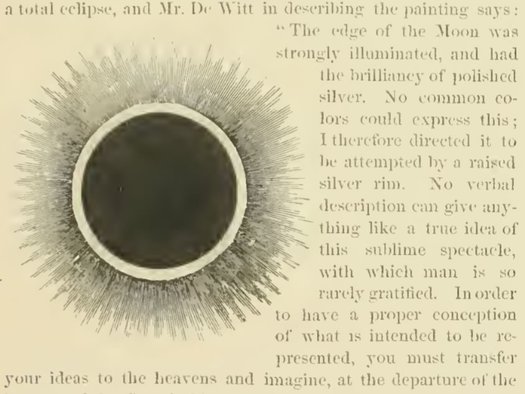
Because eclipse: On June 16, 1806 there was a total eclipse, and the path of totality passed pretty much directly over the Albany area. It was, in the words of Simeon De Witt, a "sublime spectacle" that fixed "the gaze of man in silent amazement" for several minutes.
De Witt was the Surveyor General of New York State at the time and worked from the Capitol in Albany. He summarized the experience of the eclipse in a letter to Benjamin Rush and the American Philosophical Society. Accompanying the letter: a painting the eclipse by the noted local portraitist Ezra Ames (more on that in a second). A clip:
[The painting] gives, I believe, as true a representation of that grand and beautiful phenomenon, as can be artificially expressed. The edge of the moon was strongly illuminated, and had the brilliancy of polished silver. No common colours could express this; I therefore directed it to be attempted as you will see, by a raised silvered rim, which in a proper light, produces tolerably well, the intended effect.
Maps that still echo today

Here's a bit of a follow-up to the piece by Ann Pfau and David Hochfelder -- of 98 Acres in Albany -- from earlier this year about the history of the federal maps that "redlined" the city of Albany (and many other places) during the 1930s. Those maps helped shape lending practices for decades, decisions that contributed to patterns of disinvestment across neighborhoods.
One of the things that's striking about looking at those old maps is how the divisions drawn then still roughly represent sections of the city today.
A mapping project by an org called the National Community Reinvestment Coalition that merges the old federal Home Owners' Loan Corporation maps with modern census data related to income and race makes those patterns even more clear.
That's a clip above from NCRC's interactive map showing the city of Albany. The red and yellow areas were the sections assigned the lowest grades on the 1930s map. The gray areas are tracts in which modern populations are more than 50 percent minorities. And the dotted areas are where the median family income is less than 80 percent the area median.
Here are the maps for Schenectady and Troy.
[via Next City]
Six huge institutions that set up here... almost

Not the Capital Region, obviously... but maybe it could have been. / photo: Flickr user Daniel Hartwig (CC BY 2.0 cropped)
It's Other Timelines week on AOA, in which we'll be looking at alternate histories of this place, about big and small things that did or did not happen.
Nationally-famous universities, a coordination point for the modern world, huge centers of industries, tech, and the economy -- they all happened here... almost.
For Other Timelines week, Carl Johnson shares a handful of huge institutions that almost ended up in the Capital Region...
What would Albany be like today if the Empire State Plaza had not been built?

It's Other Timelines week on AOA, in which we'll be looking at alternate histories of this place, about big and small things that did or did not happen.
Albany has a long history -- more than three centuries as an incorporated place -- so there have been plenty of "what if" points along the way.
But the biggest one, literally and figuratively, might be this: What would Albany be like today if the Empire State Plaza had not been built?
We proposed that question to a bunch of local historian-minded people...
Melancholy, arriving on track 2
Check out this photo of the old Union Station waiting room in downtown Albany, via the Albany Group Archive. It's dated to 1968, which is the same year the other train station opened across the river in the Rensselaer.
There isn't anything super remarkable about this photo, but there's something about the mood that caught us when we happened upon the pic, like the station itself was feeling melancholy. (Though we do kind of want to stop by the snack bar for a patty melt.)
The building, of course, is still in downtown Albany, but it's been used as offices for various companies for decades, and is now known as Kiernan Plaza. It's currently owned by SUNY Poly, though like with everything else related to that institution, there seems to be some uncertainty about the future.
As we've mentioned before, the Albany Group Archive on Flickr is an enormous rabbit hole of local history images. Start clicking through and you might not surface for days.
Earlier: Gawking at Kiernan Plaza
The Toll Gate War
Over at the Friends of Albany History, there's a good, short history of The Great Western Turnpike -- that is, Western Ave -- and the "Toll Gate War" by Al Quaglieri. A clip:
The city, meanwhile [in the late 1800s], had grown steadily westward. Former farmlands west of Manning Boulevard were subdivided into building plots; new side streets popped up. Among the first was Nineteenth Street, now Winthrop Avenue.
Despite being ungraded, sandy, and nearly impassable, Nineteenth Street had one popular attribute: it was just west of the Great Western Turnpike's Western Avenue tollgate. While farmers continued to pay tolls, casual travelers and pleasure seekers braved treacherous Nineteenth Street to circumvent the tollgate.
The Turnpike Company fought back in 1897 by piling a large barrier of lumber across Nineteenth Street at Western Avenue. This started a brief but nasty "Toll Gate War" with the City. Albany's Common Council ordered the company to remove the obstruction. They did, but replaced it with a new, annex tollgate. The City gave them 48 hours to remove it, which they did not, so the new gate was promptly destroyed by order of the Street Commissioner.
The story -- in not the road -- takes a few twists and turns from there.
See also: A gate to the past.
The rail line that's now the rail trail
In Other Interesting Histories of Local Transportation Routes™, check out Susan Leath's history of the rail line that's now the Helderberg-Hudson Rail Trail. It started as a way to move coal, and then became commuter rail. The story includes an intentional train crash and a donnybrook.
The Erie Canal as "psychic highway"
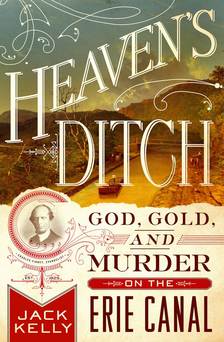 Construction on the Erie Canal started this month 200 years ago. And though it might seem like a big deal now, it was one of the most important developments in the history of New York State, especially upstate.
Construction on the Erie Canal started this month 200 years ago. And though it might seem like a big deal now, it was one of the most important developments in the history of New York State, especially upstate.
Jack Kelly -- the author of Heaven's Ditch: God, Gold, and Murder on the Erie Canal -- will be at the Shaker Heritage Society in Latham July 19 to talk about some the effects of the waterway that spanned the state:
The Erie Canal was one of the most impressive engineering feats in American history. It connected the Atlantic Ocean to the Midwest, not only economically, but spiritually as well. It has been referred to as a "psychic highway," providing a means for the exchange of ideas. The suffrage and abolitionist movements were bolstered by this new connection. New religions were founded and an entire population was waiting to be converted. Join author and historian Jack Kelly for a discussion and book signing of his newest book, Heaven's Ditch: God, Gold, and Murder on the Erie Canal.
The talk starts at 7 pm on Wednesday, July 19. Admission is $5.
The Shaker Heritage Society is at 25 Meeting House Road in Colonie near ALB.
Earlier:
+ "Surely the water of this canal must be the most fertilizing of all fluids..."
+ Tracing the old canal
Albany history, in an app
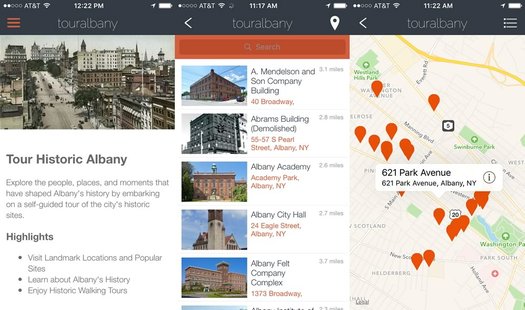
Screenshots from the app.
Driving through downtown Albany on weekends, Susan Holland has noticed groups of people looking up at the buildings. And as the executive director of the Historic Albany Foundation, she has plenty she could share with them about the history of what they're looking at.
But: "I would look like a freak if I stopped my car and was like, 'Do you want to know about this?'"
Now there's a different option: A new mobile app called Tour Albany that pulls together a bunch of historical info about Albany including maps, building histories, walking tours, and podcasts.
Walking the history of Pine Hills, with a guide

The cover of Akum Norder's upcoming book, and an app screenshot of the Pine Hills neighborhood tour.
Check it out: The Pine Hills Neighborhood Association in Albany has put together an app-guided walking tour of the neighborhood via the PocketSights app. Blurbage:
Focusing on twenty sites, the tour uses offbeat stories and historic photos to tell the story of the Pine Hills neighborhood's development. It highlights landmarks such as Steamer No.10 firehouse, the Madison Theater, and The College of Saint Rose, as well as lesser-known places such as the St. Vincent Orphan Asylum, the Aurania Club, and the Brady Maternity Hospital.
The org say it's planning a paper booklet for the tour later this year.
PocketSights is available for both iOS and Android, and it's free. It also currently includes other local tours, such as one of downtown Albany. The company behind the app is based in Ithaca.
Take a walk with the tour creator
The creator of the walking tour is local journalist and author Akum Norder. She'll be leading a history walk of Pine Hills next Wednesday, June 28 at 5:30 pm. It's free, but attendance is limited. You can sign up online.
Norder's book -- The History of Here: A House, the Pine Hills Neighborhood, and the City of Albany -- is set to be released next February by SUNY Press Excelsior Editions. You might remember that Akum was writing a similarly-themed blog for the Times Union for a while (and was once a contributor to AOA). She's a wonderful writer with a keen sense for stories. We're very much looking forward to her book.
Albany's oldest building has a new face

The Van Ostrande-Radliff House at 48 Hudson Avenue in downtown Albany -- which dates back to 1728 -- now has a scrim that depicts how it might have looked back in the long ago day. The new look is part of an effort by the Historic Albany Foundation, which owns the building, to raise money for its preservation and renovation. Blurbage:
Installed on the north side of the building is a large, durable fabric scrim depicting in real size what 48 Hudson Avenue might have looked like at the time of its construction ca. 1728, showing features typical of an urban Dutch dwelling. The rendering is based on research from the historical record conducted by Dr. Charles Gehring and Dr. Janny Venema of the New Netherland Research Center about contemporary houses in Dutch Albany, the Netherlands, and New Netherland, of which Albany was a part from 1614 to 1664, when control of the region was transferred to the English. The building is an example of the persistence of Dutch culture in the Hudson Valley long after the close of the Dutch period, and is a rare link to this foundational period in American history.
Money for the scrim came via the Dutch consulate, as part of an effort to promote Dutch arts and culture in the United States.
Historic Albany figures the whole project preserve and restore 48 Hudson will cost $2 million. It got a grant last year from the state Office of Parks, Recreation and Historic Preservation for $268k for the first phase. It needs to raise about $89k as part of its match for the money -- and it's collecting donations online.
An ample amount of mastodon
#TBT When the State Museum was located in the State Education Building from 1912 - 1975. #ThrowbackThursday pic.twitter.com/FHoM7blZXz
— NY State Museum (@nysmuseum) June 15, 2017
We enjoyed this throwback pic shared by the State Museum from when the institution was still housed in the State Education Building. It had a good amount of mastodonage.
Here's the same scene from a different angle. The former museum space in the State Ed building looks like it was beautiful.
A storefront then and now

Walking along the west side of North Pearl Street in downtown Albany the other day we were gawking at the building that's occupied by Rite Aid. It's one of those buildings that doesn't look like much at street level because of the non-original facade -- but look up, and there's certain distinguished quality about it.
Anyway, we were curious about what the building originally looked like. And, as it happens, the commercial streets collection of the Albany Public Library's digital collection includes a photo of that section of the North Pearl streetscape from 1947. That's a side by side above (and there are larger photos after the jump.)
The old(er) facade and signage seemed to fit the building better. A lot of things weren't great in the past -- but it did generally have better signage.
Recognizing Henry Johnson -- and the people who worked to gain that recognition
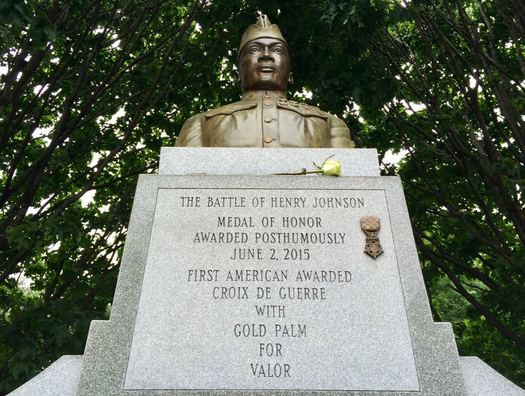
The Henry Johnson memorial in Washington Park, near Madison and Willett, and now includes a replica of Johnson's Medal of Honor.
"It means that we brought justice to Henry Johnson."
That was how James Dandles -- a Vietnam War veteran -- described the addition of a replica of the Medal of Honor to a monument commemorating World War I hero Henry Johnson in Albany's Washington Park Monday. Dandles was part of a group of veterans and officials who worked for decades to get Johnson's heroism officially recognized.
"It's been a long, long time coming."
What's in the Albany Institute's closets
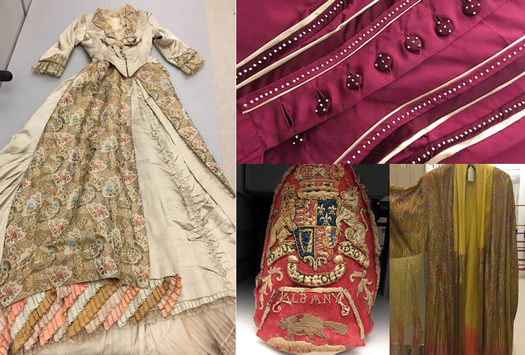
Here's something fun while you're trying to decide if it's finally time to switch your closet over from winter to summer -- a look into the closets at the Albany Institute.
Among its collection of paintings, patents, mummies, and Albany historical artifacts, there are rows of closets filled with clothing made in, or worn in, the Capital Region over the centuries.
The collection ranges from 18th century Paris couture gowns, to 1920s flapper dresses, to 1960s and 70s mod. And there are shoes and accessories, too.
We persuaded curator Diane Shewchuk to let us poke around in the institute's closets this week. Here's some of the fun stuff we found.
The old observatory

Speaking of observatories... Albany had an observatory. In fact, the observatory still exists... just not in Albany.
The Dudley Observatory was once located at different spots in the city of Albany -- in north Albany, and then on the triangle of land between New Scotland Ave, South Lake, and Myrtle. (The Capital District Psychiatric Center is there now.)
That photo above is from the former observatory building on South Lake. From The Dudley's history blog, Counting Stars:
The second building is Dudley's most famous, and it was one of the most iconic buildings in Albany at the time. It showed up in postcards and maps of the era. It was an imposing Romanesque structure of red brick, two stories tall with an observatory tower at the western end. To the east was the residence of the director and temporary housing for visiting astronomers. In the center were the rooms for the computers, the library and the rooms for the resident astronomers.
And those computers? People -- usually women. (Yep, like in Hidden Figures.)
The observatory sold the building to Albany Med in the 1960s (it later caught on fire), and moved to an office on Fuller Road. It's now located at miSci in Schenectady.
photo via The Dudley Observatory
A Spirit of Sacrifice at the State Museum
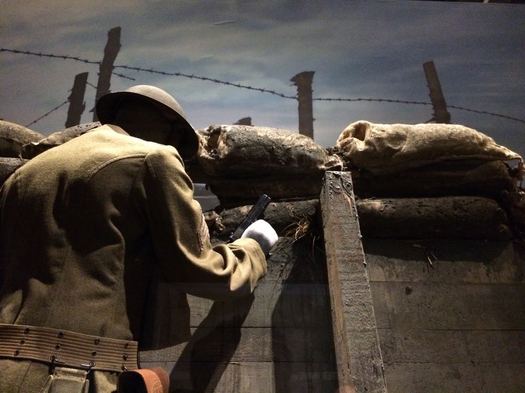
The State Museum opened a new exhibit Friday -- A Spirit of Sacrifice: New York State in the First World War -- that commemorates the 100th anniversary of WWI. Exhibit blurbage:
A Spirit of Sacrifice examines how New York State and its citizens played a critical role in the United States' efforts during the war, and discusses its significance to understanding history today. Both on the battlefield and on the home front, through industrial production as well as civic participation and debate, New Yorkers had a considerable impact on the shaping of these events. By the end of the war, the Empire State would lead in the number of soldiers, tonnage of supplies, and money raised to support America's efforts.
We got a chance to check out the exhibit with curator Aaron Noble and exhibit designer Craig Gravina. Here are five bits about it...
Signs of storefronts past

While talking with Schuyler Bull this week about his plans to re-open the Fort Orange General Store downtown, he mentioned hearing stories from his grandmother about how downtown Albany was at one time the place to shop.
And that's apparent when you flip through old photos of the area, like the "commercial streets" group of the Albany Public Library History Collection.
It's interesting to see how many shops were once packed into buildings around downtown Albany. But the thing we often end up gawking at is the old storefront signage. There's a certain style about it that makes today's signage just seem sort of... plain.
So we thought it'd be fun to go through the APL collection of photos and pull out a bunch of examples of downtown Albany storefront signs from the early 20th century...
Five Favorites: Albany Archives
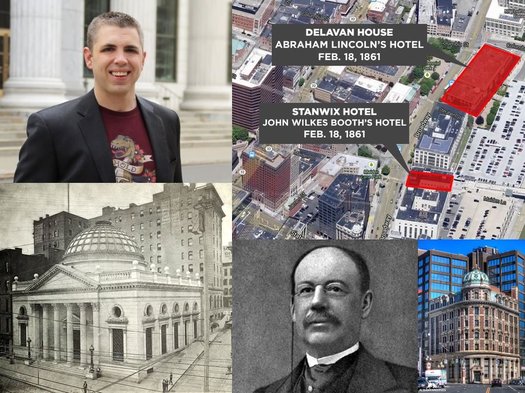
Our all-time favorite local Twitter account might be Albany Archives. For years Matt Malette -- no longer anonymous! -- has shared all sorts of interesting bits of local history, often with a cheeky wit.
This Sunday he'll be at the Albany Institute for a talk about local history and how he goes about digging up stuff for Albany Archives.
So we thought it'd be fun to play a game of Five Favorites with Matt about local history...
Mapping a way toward education

Willard’s History of the United States, or, Republic of America started off with a map of Native American nations.
Maybe you know (if a bit vaguely) about the significance of Emma Willard as a pioneer in advocating for educational opportunities for women. She, of course, founded the Troy Female Seminary in 1821, which is still around today -- though with a different name: the Emma Willard School.
But maybe you, like us, did not know about Willard's interest in geography and teaching geography. From the Worlds Revealed: Geography & Maps blog at the Library of Congress:
As head of the Troy Female Seminary, Willard was an early promoter for teaching science to young women. Troy's curriculum included mathematics, science, philosophy, and geography. Geography, in particular, played a major role in a student's education at Troy. Willard believed that studying geography laid the foundation for solid scholarship, "sound judgement, and an enlarged understanding." In addition, she found that studying geography "brings into action the powers of comparing and abstracting." Willard was adamant that it was more important to teach students how to think, rather than what to think and that the study of geography could promote this teaching philosophy.
Looking along the old lane
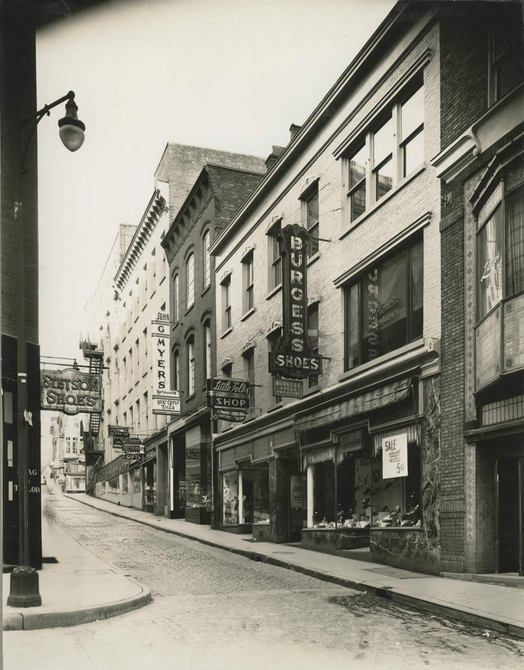
We stumbled across this old, undated photo of Maiden Lane in downtown Albany in the Albany Public Library History Collection this week. And we were struck by a few things:
+ Love those old retail shop signs. (Apparently it was the place to score some shoes.)
+ Those signs are gone, but the streetscape -- the buildings date to the late 19th century/early 20th century -- is more or less the same as today.
The biggest difference you might notice is in the background -- mainly that the street keeps on going to the west. Maiden Lane is one of the city's oldest streets and for centuries it stretched from the waterfront up the the hill to Eagle Street. (See this 1891 map.) That changed in the early 1970s with the construction of the Ten Eyck Plaza Project. (It was also around that time that Pine Street was extended to Broadway.)
If you head over to the APL's collection on the New York Heritage site, you can zoom reallyclose into the photo to catch a glimpse of the segment of the Maiden Lane that no longer exists, along with the old shops.
Henry Johnson: Tale of Courage premiere
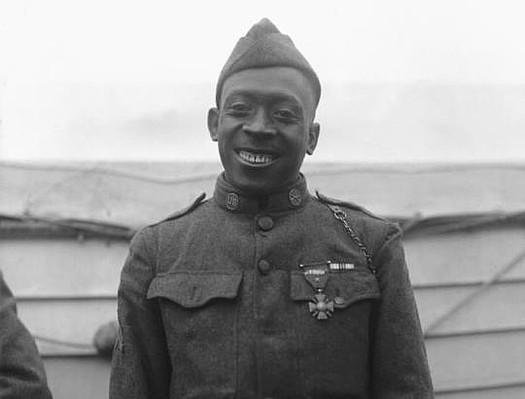
Henry Johnson displaying his French Croix de Guerre. / photo via Wikipedia
WMHT has a new documentary about Henry Johnson -- Henry Johnson: Tale of Courage -- premiering April 11 at 7:30 pm. It'll then air multiple times during the month.
But before that, there's a preview screening at the State Museum April 4 at 6 pm. A discussion will follow with producer Zeke Kubisch, city of Albany special community projects coordinator (and author and scholar) Barbara Smith, and historian Aaron Noble. The screening is free to attend, though WMHT does ask that you RSVP.
You probably know (should know) the outline of Henry Johnson's story. An Albany resident, he served in WWI with the Harlem Hellfighters, who had been placed under the command of French forces because of racism within the US Army. While on sentry duty in 1918 he fought off a surprise German attack of at least 12 soldiers and saved a fellow American soldier, all while being wounded multiple times. Upon his return to the United States he was initially hailed as a hero. But he was later marginalized after speaking out about the racism African-Americans faced in the military. Unable to work because of his war injuries, Johnson's personal life crumbled and he died at the age of 32.
It wasn't until 2015 -- and after the work of many people -- that Johnson was posthumously awarded the Medal of Honor.
Ice cream, A VALUABLE FOOD

It was a different time. One with ice cream potatoes.
This ad is via the Albany Group historical image archive on Flickr. The Albany Muskrat highlighted it today on Twitter, along with pics of some of the ice cream forms.
The factory for the Albany Ice Cream Company -- "Wholesale and Retail Manufacturers of Plain and Fancy Creams and Ices" -- was located on Pleasant Street in North Albany. (There was that time that the Albany Ice Cream Company realized that -- gasp -- women could work in that factory.)
It also had an important message for its customers of the late 1910s.
Wampum World at the Albany Institute

A portion of deed for land in Rensselaerwyck signed in 1708, from the Albany Institute's collection. The pictographic characters are the signatures of Native Americans.
A new multimedia exhibit called Wampum World opened at the Albany Institute this past weekend. In it artist Renee Ridgway looks at the role wampum played in this area during the 17th century as Native American and Dutch cultures met and interacted, and how some of those threads carry on today:
"Wampum World is about wampum, which is made from shell. Historically, it had manifold functions for Native Americans in various aspects of their societies and is still considered sacred today. In contrast, Dutch settlers, having recognized the value of wampum for Native Americans, used wampum in exchange with European goods in order to procure beaver pelts, as part of the seventeenth century trade triangle 'beaver, wampum, hoes.' Metal coinage was not readily available in the New World, therefore wampum served as currency. Wampum World visually elucidates this historical exchange system and present day usages of wampum from various perspectives."
Wallpaper and power
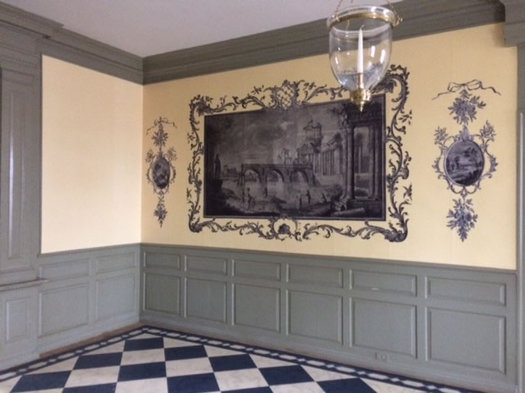
Some of the new wall covering. The Schuyler Mansion Twitter stream and blog have more photos.
The Schuyler Mansion recently completed the reproduction and reinstallation 18th century wallpaper -- "Ruins of Rome" -- and the historic site's blog shares the details about how exactly that all happened. The process involved digital image tech and, we suspect, a lot of patience.
But this part struck as particularly interesting. Writes Danielle Funiciello:
Rather than the sparse interior which has greeted visitors for 100 years, walking into the mansion is like now like stepping back in time. Philip Schuyler vision for his home was calculated. Each element was designed not only to impress guests once they arrived at the home, but to encourage wealthy and important guests to come in the first place; thereby creating networking opportunities for the Schuyler family. The size and grandeur of the home was successful - drawing visitors like the Washingtons, the Marquis de Lafayette, the Marquis de Chastellux, Benedict Arnold, and even Benjamin Franklin, who had a letter of introduction written so that he could stay at Schuyler's when travelling through Albany. The "Ruins of Rome" helps historians and museum visitors alike understand the first impression that accomplished this.
Hamilton
The Schuler Mansion is again offering its popular "When Hamilton Called Albany Home" tour in March. It's currently taking reservations for March 2 and March 4. And when March starts, it'll be begin taking reservations for other dates during the month.
And if you go, be sure to scope out all the wallpaper.
Earlier on AOA:
+ "You maintain your empire in spite of all my efforts..."
+ A timeline of Theodosia Burr Alston
photo via Schuyler Mansion Twitter
A front page flight

Maybe you've seen that video that's been bouncing around online today of every New York Times front page since 1852 -- in 55 seconds.
There's an Albany-related historical bit mixed up in there: The first news photograph ever published on the paper's front page -- in May of 1910 -- was from... Albany.
Yep, it was a photo of Glenn Curtiss piloting "The Albany Flyer" biplane shortly after takeoff from a spot that's now in the Port of Albany. Curtiss was attempting to become the first person to fly from Albany to New York City -- and, in the process, claim a $10,000 prize from the New York World (something like $250k in today's dollars). He was successful, making the trip 2 hours and 46 minutes of flight time with two stops. Over at Hoxsie, Carl has he whole story. (Because of course he does.)
Anyway, NYT went all out on its coverage of the Curtiss flight. It even hired a special train to follow him on the route. And it published a multi-page spread with a bunch of photos, including that first one from Albany on the front page.
[historical bit via Kottke]
screengrab from NYT Times Machine
Examining the forces and maps that redlined the city of Albany

From a 1938 Home Owners’ Loan Corporation map of Albany.
The Digital Scholarship Lab at the University of Richmond recently published a website displaying redlining maps from the 1930s for American cities with populations over 50,000. These so-called Residential Security Maps, along with detailed descriptions of urban neighborhoods, give us insight into how the flow of bank funds into some areas -- and their denial in others -- shaped the postwar American city.
We researched the history of these maps, as well as related records pertaining to Albany, at the National Archives. Here's what we found.
The Albany Cutter
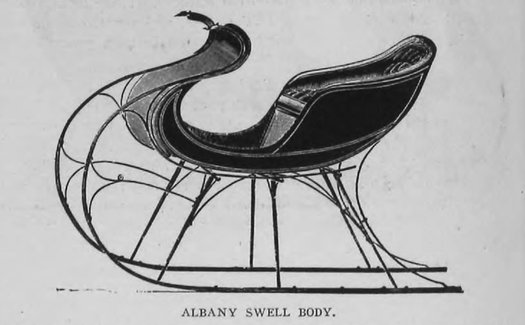
Sleek. / image from The Automotive Manufacturer "The Hub" (1902)
In the time before all-wheel drive: An Albany company was once famous for making sleek, luxury sleighs popular during the 1800s.
The James Goold Company, located on Broadway in downtown Albany, was one of the country's most prominent manufacturers of carriages for early trains and trolleys and streetcars. But it was the design of its sleighs -- specifically the "Albany Cutter" -- that really caught 19th century eyes.
Yep, winter's been odd in recent years

That this sort of sight has been more familiar in recent winters than what we're seeing Thursday is odd.
It's fair to say that winter hasn't been itself for a while, going almost two full seasons now.
Last winter was extraordinarily warm and un-snowy. And this winter has also been... underwhelming. As of February 8, this winter is almost 18 inches behind the normal pace for snow (though it should pick up some of that during Thursday's storm). And the January we just finished had an average temperature 8 degrees warmer than normal.
Winter, we're starting to worry about you, old man.
It's felt like winter has been acting strangely for years now. But memory can be a blurry thing, a picture where the unusual events stay sharp and the ordinary fades into the background.
So we thought it'd be interesting to look at more than a century's worth of winters in Albany to get a sense of whether things really have been weird lately.
Eight facts about the life of Edmonia Lewis
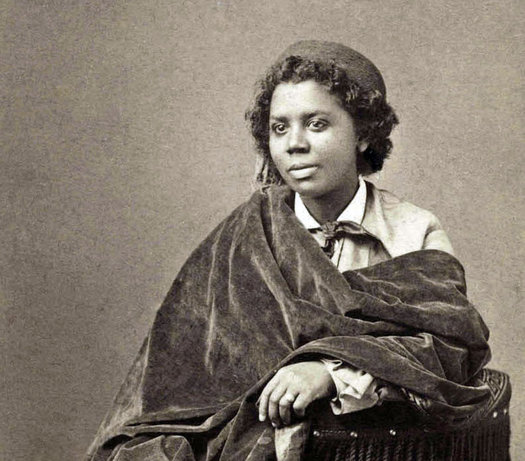
A c. 1870 photo portrait of Lewis from the National Portrait Gallery (via Wikipedia)
Maybe you saw this week that the Google Doodle on Wednesday honored the 19th century American sculptor Edmonia Lewis. And maybe you also noticed that Lewis was born in what's now Rensselaer.
The mention of Lewis prompted us to read up on her a bit and she is fascinating. From a biography, The Indominitable Spirit of Edmonia Lewis, by Harry Brinton Henderson and Albert Henderson:
Think of Edmonia Lewis as an artist at war. As her heroes took to the gun, the pen, or the pulpit to attack the cruel social order of the 1800s, she weighed in with artistic gifts and tools meant for clay, plaster, and marble. In the grand struggle for respect, she was a regiment of one.
With every image she create, every appearance she made, and every interview she gave the press, she undermined the lies of white advantage in a cool counterpoint to the rage of Civil War and Reconstruction. Physically tiny and personally charming, she taunted the demons of bigotry as she carved her heritage and appeared with her work alongside the best artists of the day.
Here are eight bits about her life...
A carnival with a bowl full of ice
That photo above is from Albany's Lincoln Park in 1930 and shows the large skating rink the city would create there in the park's "bowl" that was the scene of a big winter sports carnival. (A tip of the hat to the Albany Muskrat for highlighting the photo from the Albany Group Archive.)
Here's another pic that give a sense of the crowds the carnival attracted.
What'd they come to see? All sorts of events on ice. There were hockey games, speed skating races, "fancy" skating. And the event brought in stars. Olympic gold medal speed skater Charles Jewtraw and the world record holder for barrel jumping -- Edmond Lamy -- were there in 1927. And in 1928 figure skaters Gladys Lamb and Norval Baptie -- "famous for the airplane spin" -- performed for crowds.
If winter ever decides to be winter again, Albany should really think about bringing back barrel jumping.
Captured Moments at the Albany Institute

A circus parade in Albany during the 1880s.
The Albany Institute opens a new exhibit this weekend -- Captured Moments: 170 Years of Photography from the Albany Institute -- that includes a sampling from the museum's extensive collection of photographs. It's on display through May 21.
We got a quick tour of the exhibit Friday as curators were still putting the finishing touches on the displays. The photos cover a wide range of topics, from portraits, to historical scenes, to cityscapes, to interiors, to workplaces, to travel photos. There's even an photo a seemingly badass bowling club from Arbor Hill. (Nobody rolls like the The Maples!)
Doug McCombs, the Albany Institute's chief curator, said the museum has tens of thousands of photos -- dating back to the 1840s, near the beginning of the medium -- and they're probably its most popular collection. Captured Moments is intended sampling of sorts.
"It's a way to show the breadth of our collection," he said.
Here are a handful of photos of from the exhibit...
The Albany City Hall before the current one

A "full length statue of Alexander Hamilton" reportedly stood inside the building.
Albany's city hall kind of looks like it's been perched on the hill across from the Capitol forever. But the current building "only" dates back to 1883. And as you know, Albany is much older than that.
That postcard above -- courtesy of the Albany Postcard Project -- depicts the Albany city hall that stood before the current one and did so on the same site. (It was itself a sequel of sorts.) It was built in 1832 and made it half a century before it burned down in 1880.
A description of the building from Bi-Centennial History of Albany (1886) by George Rogers Howell and Jonathan Tenney:
Talking about that time a whole apartment building was picked up and moved in Albany

An undated photo of the Fort Frederick after its move to State Street from the APL's "Commercial Streets" collection at New York Heritage.
The Fort Frederick Apartments in Albany -- which now stands on State Street near the Capitol -- originally started out at Swan and Washington Ave. It was moved a block south in 1926 to make way for construction of the Smith Building.
Yep, they literally picked up the whole building and moved it.
That episode will be at the center of a talk by Albany city historian Tony Opalka and longtime local architect Harris Sanders at the the Albany Public Library's Pine Hills branch January 18.
Opalka and Sanders will be talking the Fort Frederick's move, the city's geology and how it affects the way buildings are constructed, along with a bunch of other local architecture bits.
Here's an old photo showing the Fort Frederick standing along Washington Ave (it looks like the date attributed to the photo might be wrong).
The talk at the Pine Hills branch is Wednesday, January 18 at 6:30 pm. It's sponsored by the Friends of the Albany Public Library. It's free and open to the public.
Harris Sanders
If you're not familiar with Harris Sanders, you're almost surely familiar with many of his buildings -- they're all over this area. But his most famous local architectural work is... a dog. Yep -- he came up with the idea of putting Nipper atop what was then a distribution warehouse for RCA products.
Check out this profile of Sanders from a few years back by Joseph Dalton.
Earlier on AOA: Albany, sliding between past and present
The Harriet Tubman National Historical Park

The site in Auburn. / photo: Flickr user Becker1999 (CC BY 2.0)
The newest part of the national park system: The Harriet Tubman National Historical Park in Auburn, New York.
The federal government formally announced the designation this week. From the press release:
The new park commemorates the work of the fearless Underground Railroad conductor during her later years in life, when she was an active proponent of womens' suffrage and other causes. The park is located at the site where Tubman lived and worshiped in Auburn, New York, caring for family members and other formerly enslaved people seeking safe haven in the North. ...
The historic Thompson Memorial AME Zion Church, a modest, two-story, frame structure constructed in 1891 is directly associated with Harriet Tubman, her family, many of her supporters and the African American community of the time. The two-story Rectory is adjacent to the Church and both structures are located across the street from the For Hill Cemetery, the location of Tubman's grave.
The historic church and rectory and other structures within the boundary of Harriet Tubman National Historical Park are largely intact from the time Harriet Tubman lived and worked in Auburn. They provide a strong physical basis for telling the story of Tubman's years following the Civil War when she was active in the women's suffrage movement, in the AME Zion Church and in the establishment of a home for elderly, indigent African Americans.
Auburn is about 40 minutes west of Syracuse on the northern end of the Finger Lakes, and it's about 20 minutes east of Seneca Falls. So you could easily stop at the new Harriet Tubman National Historical Park and the Women's Rights National Historical Park in Seneca Falls during a weekend trip.
And you know the story about how Harriet Tubman led the rescue of a man in Troy, right?
Earlier on AOA: Weekend Destination: Finger Lakes
photo: Flickr user Becker1999 (CC BY 2.0)
The "INclosed" place to shop
Colonie Center is celebrating its 50th anniversary this Saturday afternoon. It first opened in November of 1966.
The shopping center -- the Capital Region's first enclosed mall -- was built on the site of the former Colonie Country Club along Wolf Road. The mall posted the above construction photo on its Facebook page today. It's kind of amazing comparing the scene there in the mid 60s with how it looks today. (The population of the town of Colonie grew from almost 30,000 in 1950 to almost 70,000 in 1970.)
An interesting bit about the origin of Colonie Center is that it was built by a subsidiary of Sears Roebuck and Co. The ownership of the mall has since changed hands multiple times, but Sears still owns the chunk of the mall which its store occupies. (You might remember that fact came up when the Colonie Center Whole Foods was announced.)
Reading through a Schenectady Gazette article about the mall's opening, and the Sears subsidiary's involvement, this part caught our eye:
A distinctive feature of each Homart center is the attention given to meshing the center with the mood and tempo of the specific community to be served. ... At Colonie, the country-club atmosphere has been retained with much of the architectural accent upon conveying the urban mood which is inspired by the booming growth of the Great Northeast.
It's country clubby -- but, you know, with an urban mood.
The early ads played up both the country club angle and the fact that mall was fully enclosed -- er, "INclosed." Check out this grand opening ad that ran in the Gazette...
Hamilton's Albany online
WMHT's short documentary about the connections between Alexander Hamilton and Albany -- the aptly-titled Hamilton's Albany -- is now available for viewing online. That's the embedded version above.
Blurbage:
Join host Ryan Fitzpatrick as he explores Hamilton's Albany life, from marrying into the wealthy Schuyler family, to the feud that fueled the duel with Aaron Burr. Marrying into the Schuyler family raised the social and political status of the ambitious Hamilton, who was born out-of-wedlock on the Caribbean island of Nevis in 1757. He went on to become the senior aide to General George Washington, was a member of the Continental Congress, an author of the Federalist Papers, a champion of the Constitution and the first Secretary of the Treasury.
This historical documentary is a look at the society and issues that informed some of his most important decisions. Shot on location at the Schuyler Mansion, home of Revolutionary War General Philip Schuyler and his family; The First Church, where Reverend Eliphalet Nott delivered a rousing eulogy that helped turn the tide of public opinion against dueling; and other sites around Albany, NY.
It's a quick watch, just 26 minutes.
Earlier on AOA:
+ "You maintain your empire in spite of all my efforts..."
+ A timeline of Theodosia Burr Alston
Streetcars in the snow
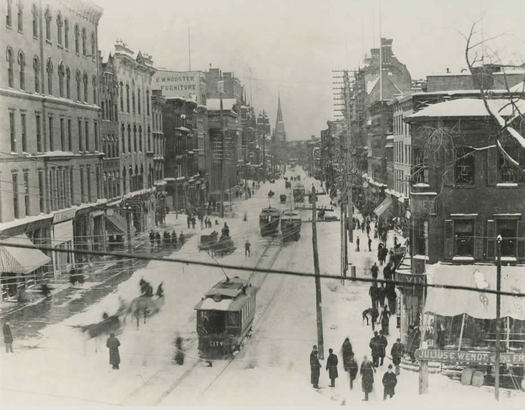
Here's a larger version.
This photo is of North Pearl Street in downtown Albany in 1891 -- it's from the Albany Public Library's "Commercial Streets" online collection. (The page over at New York Heritage allows you to zoom in very close.)
We came across this photo recently and there was something about the busy street scene that caught our eye. The street cars running in the snow (and all the overhead wires for them). The horse-drawn carriages (sleighs?). Pedestrians bundled up on the sidewalks. There's just a lot of activity, even in the wintry conditions.
Earlier on AOA: Riding the trolley -- everywhere
That time Price Chopper was the first supermarket to install self-checkout
A bit we stumbled over recently while doing history of Price Chopper research: The first supermarket self-checkout station was installed at the Price Chopper in Clifton Park in 1992.
The story of the tech's rollout at Price Chopper was part of a recent NPR Planet Money podcast about the self checkout, which focused the inventor of the devices, a Canadian doctor named Howard Schneider. Here's a clip (from about the 10:30 mark) -- Schneider's just had his pitch somewhat harshly turned down by Stop & Shop and he's discouraged. But he get's a meeting with Price Chopper:
The italics are the hosts talking.
The head person [at Price Chopper] actually saw the machines and he said, "I like it. Let's do it." And after that everyone's very nice.
The CEO says we're not going to buy the machines from you. But you can use one of our stores in Upstate New York as a real world experiment.
And on August 5, 1992, grocery store shoppers what may be, depending on your definition, what we're going to call the first fully-automatic check-out machines.
A timeline of Theodosia Burr Alston

An 1802 portrait of Theodosia Burr -- an Albany native (among many other things). / image via Wikipedia
1783 July: Theodosia Burr is born to Theodosia Bartow Prevost and Aaron Burr in Albany, New York. She's christened at the Albany Dutch Reformed Church.
Her father had been in Albany studying to become an attorney, and had for a time stayed at the Schuyler Mansion.
After Aaron Burr became an attorney, the family moved to New York City, but he had an office on Pearl Street in Albany.
The Capital Region in 50 Objects, online

Check it out: The Albany Institute of History and Art has created an online version of the Capital Region in 50 Objects exhibit, which closed this past spring.
The exhibit is pretty much what it sounds like -- a walk through the area's history using 50 objects as markers. But while it includes some of the prominent stories you'd expect -- like the Erie Canal or Battle of Saratoga -- there are also quirkier items such as the perforated toilet paper invented here and the area's tobogganing craze.
The online exhibit includes quick histories and images in an easy-to-navigate format.
The Albany Institute is also publishing a book about the exhibit:
New York's Capital Region in 50 Objects book's stunning photographs and rich descriptive text make this popular exhibition come alive again. The 112-page, full color publication features a two-page spread for each object, which includes color illustrations and informational text.
It'll be available at the museum gift shop in early December for $18.95.
And there's a teachers' resource for the exhibit with 18 lessons.
Earlier on AOA: The Capital Region in 50 objects
Hamilton's Albany on WMHT
WMHT's new documentary about Alexander Hamilton's connections to Albany -- the aptly-titled Hamilton's Albany -- premieres this Sunday, December 4 5 at 10 pm. Blurbage:
Join host Ryan Fitzpatrick as he explores Hamilton's Albany life, from marrying into the wealthy Schuyler family, to the feud that fueled the duel with Aaron Burr. Marrying into the Schuyler family raised the social and political status of the ambitious Hamilton, who was born out-of-wedlock on the Caribbean island of Nevis in 1757. He went on to become the senior aide to General George Washington, was a member of the Continental Congress, an author of the Federalist Papers, a champion of the Constitution and the first Secretary of the Treasury.
This historical documentary is a look at the society and issues that informed some of his most important decisions. Shot on location at the Schuyler Mansion, home of Revolutionary War General Philip Schuyler and his family; The First Church, where Reverend Eliphalet Nott delivered a rousing eulogy that helped turn the tide of public opinion against dueling; and other sites around Albany, NY.
The 30-minute doc will be also run December 8 at 7:30 pm, 10 pm, and 10:45 pm.
Preview screening: The Albany Institute of History and Art is hosting preview screenings of Hamilton's Albany this Friday, December 2 at 5:30 pm, 6:15 pm, and 7 pm. They're free to attend.
Recalling the grocery stores of Albany's past
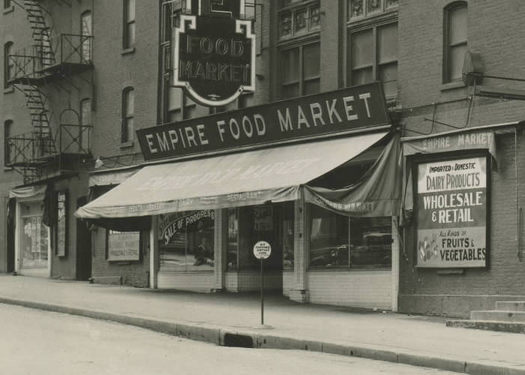
The Empire Food Market -- "Albany's Premier Food Center" -- in the old Lyon Block building in downtown Albany. (The building was knocked down during the Empire State Plaza construction.) / via the Albany Public Library History Collection
The trick of time is that it passes slowly, and changes are incremental, so you can hardly notice it happening. The world of today looks mostly like the world of yesterday to us, and yet there have been a thousand little changes over the years that separate those worlds. When things change all at once, it seems a revolution, but when they change little by little, it just seems the passing of time.
Grocery stores are one example. Sure, 50 years ago, they were selling milk and meats, frozen foods and Cap'n Crunch, just as they are today. And yet everything about them has changed.
Dog power
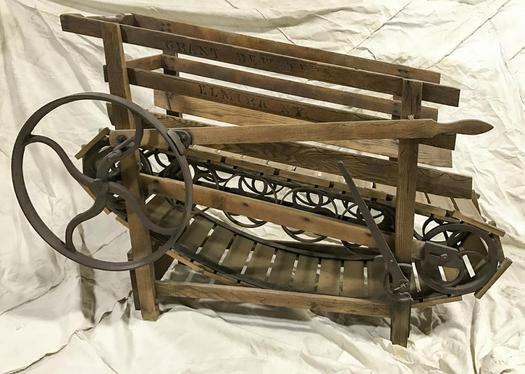
For dogs. Or sheep. / photo via State Museum
Last week we mentioned the State Museum's upcoming "Kids Curate" exhibit, for which kids can vote online about which items like they'd like to see featured.
And among those items was one that caught our eye: a treadmill for dogs. Apparently other people found this interesting, too.
So, here's a little bit more about that dog-powered treadmill.
"Never before, nor since, has this old Dutch city seen such Hallowe'en revelry"
Fore a few years, more than a century ago, Albany had a big, ripping Halloween carnival -- with costumes, a parade (including a Weebermobile), even a Halloween Queen*.
Recalled Ellen Scott in the Times Union in 1962 (links added):
For two years early in the century, the entire city of Albany was dedicated to a mammoth celebration known as the "All Hallow E'en Carnival."
The years were 1904 and 1905. Never before, nor since, has this old Dutch city seen such Hallowe'en revelry. A beautiful queen reigned over the proceedings from a throne on the Capitol steps, surrounded by courtiers and ladies and a special guard of honor. Pumpkin-decorated gates guarded four entrances to the city. A huge parade featured elaborate floats and costumes. ...
These were Chamber of Commerce sponsored affairs and enthusiastically endorsed by city businessmen. Thousands of sightseers with money to spend came by special excursion trains from miles around. [**]
But success also proved to be the Carnival's downfall. Revelry got out of hand. Store fronts were damaged and women were accosted on the streets. Several serious injuries were reported. The two-year-old tradition was regretfully abandoned.
Scott then shares an excerpt from an epic poem inspired by the carnival about a magical elixir called "Van Schlichtenhorth's Real Mountain Dew" written by a David M. Kinnear.
Over at the Albany Group Archive (where else?), there's a collection of materials from these Albany Halloweens past. The program above is via the collection.
Update: Here's a lot more on the carnival from the Friends of Albany History Facebook page.
____
* Alas, she wasn't like some goth version of the Tulip Queen. We gather from Scott's account -- and from photos -- it was more like a Titania/fairy queen/Cinderella sort of thing. Though there was a story in 1905 of an Albany Halloween carnival queen later being the target of allegedly poisoned Christmas candy, perhaps out of jealousy over the attentions of the Halloween king. (Which sort of sounds like the plot of Buffy episode or something.) The story got picked up in newspapers as far as California and Texas.
** The crowd in 1905 was said to be 50,000 people.
Listening to the ballgame
The Albany Muskrat shared this pic today -- it's said to be from the 1920s, of a crowd listening to a World Series game in Albany's Liberty Park over a loudspeaker. (Albany Archives helpfully pointed out it's from the Morris Gerber Collection.)
Liberty Park, Albany's oldest park, still exists today -- though you might miss it. It's now a tiny patch of grass on Hudson Ave in downtown Albany, down the street from Albany's oldest building.
Mapping a history of inequality in Albany, Schenectady, and Troy
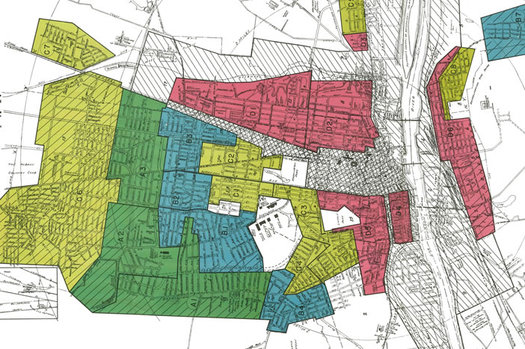
A clip from the HOLC map for Albany.
You've probably heard of the term "redlining" -- it refers to the practice of denying services, such as mortgage lending, to people in certain neighborhoods based on the race or ethnicity of the people who live there. It's one of the ways discrimination became incorporated into economic systems in this country.
The practice and the term have roots that stretch back to the 1930s and a federal program called the Home Owners' Loan Corporation (HOLC), which surveyed cities and graded sections of them based on perceived "security" of investments there. From those surveys came maps -- with redlined sections.
A project based at the University of Richmond and involving researchers from a handful of institutions -- Mapping Inequality -- has gathered up these maps and made them accessible online.
So we pulled out the maps for Albany, Schenectady, and Troy.
Crossroads: The History of Rapp Road
The WMHT mini-documentary about Albany's historic Rapp Road community -- Crossroads: The History of Rapp Road -- is now available to watch online. It's not-quite 30 minutes long, and worth a watch.
The Rapp Road community on the western end of the city in the Pine Bush has been the home for generations of African-American families who moved here from Mississippi during the Great Migration. Their first stop was the South End, but they ended up moving out to what was then a rural part of the city in search of place that was more like where they'd had lived in the south.
One of the things that's good about this doc by Todd Ferguson and Beverly Bardequez (who's a member of the community) is that it includes people telling the story in their own words -- about why their families left Mississippi, about what it was like when they arrived in Albany, about building their new homes on the city's edge.
The Rapp Road Community Historic District was added to the National Register of Historic Places in 2003.
Earlier on AOA: The Rapp Road Community Historic District
John W. Emery Inc. -- "the Albany Shoe Hustler"
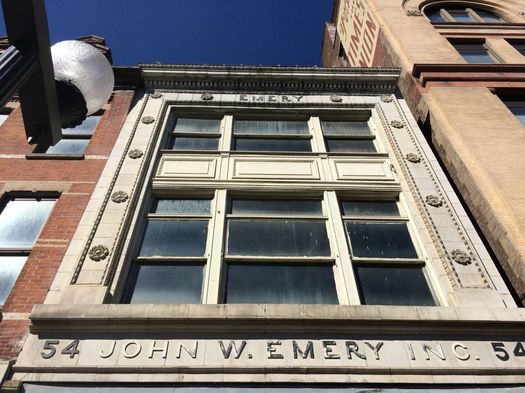
So many times we've passed this building on N. Pearl Street in downtown Albany and admired the facade -- the way it frames the windows, the floral adornments placed along the border, even the straightforward typography of the above the entryway.
And pretty much every time we've walked by this place, we've wondered: What is the John. W. Emery Inc.?
This week we finally decided to find out.
"Albany's Premier Food Center"
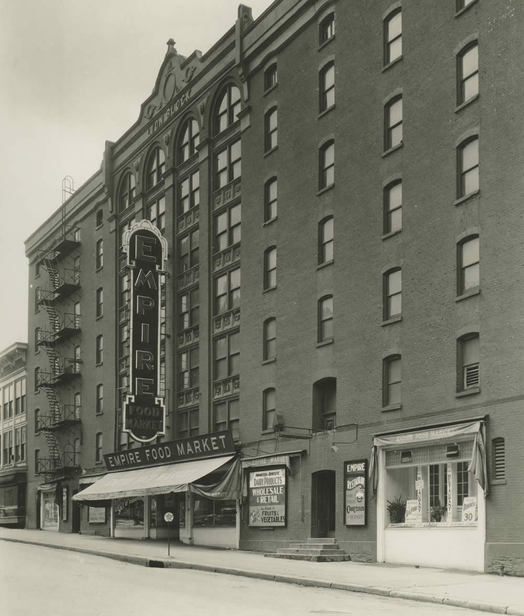
If you head over to the APL's collection at NY Heritage you can zoom in on the photo very close to read the signs in the window.
We stumbled upon this old Albany photo in the Albany Public Library History Collection online. It's the Empire Food Market that occupied a part of the big Lyon Block building on Hudson Ave that once stood alongside the public market space where the TU Center is now. The date of the photo isn't listed.
That big vertical sign -- "EMPIRE FOOD MARKET" -- caught our eye. Wonder what happened to it.
Empire Food Market was a local supermarket chain founded by Henry Schaffer in Schenectady in the 1920s -- it and would later expand to almost 200 stores around upstate and Western Massachusetts, and Schaffer would sell the chain to Grand Union.
Here's a 1932 full-page ad in the Times Union for the Hudson Ave location -- "Albany's Premier Food Center." (And here's another ad, which mentions Fort Orange Toilet Tissue.)
The Albany Muskrat has a post chronicling the history of the open air Albany Public Market area and the Lyons Block building. The building met its end in demolition for the Empire State Plaza project (which, at the time, most people called "The South Mall.")
And over at the Albany Postcard Project, there are cards depicting the old Lyon Block building and the market area.
Map quiz: old streets, new names

A clip from the 1857 E. Jacob map of Albany.
It's Columbus Day, and in what somehow ended up being a tradition, that means a map quiz here on AOA.
This year's map quiz is a little different -- it's not about maps, so much as it's drawn from maps. It's a quiz of the history of Albany street names.
So, ready to test your knowledge of bird streets, animal streets, Dutch names, and the city's many street name changes? Here's a quick 7-question quiz...
10 facts about Philip Sheridan, whose statue has stood in front of the state Capitol for 100 years
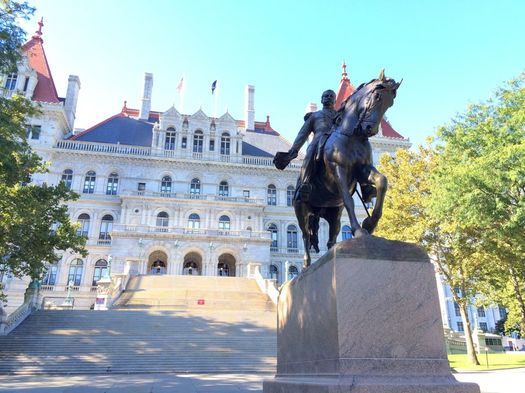
You know, this statue.
One hundred years ago today, on October 7, 1916, the statue that stands in front of the state Capitol was unveiled. The monument honors Philip Sheridan, one of the most famous Union generals of the Civil War -- and an Albany native (maybe, probably).
We suspect if you stopped the many people passing by the statue each day in downtown Albany, few would be able to tell you much about Sheridan. It's just one of the many monuments that dot the city. But the unveiling of the sculpture was a big event a century ago.
So, who was Sheridan? Well, like a lot of historical figures, he's considered a great hero -- and a villain -- depending on the context.
"Hand-written Cookbooks as Documents of Social and Family History" at Mabee Farm
 If you were interested in that old Schuyler Mansion wedding cake recipe -- or the 1800s Albany cake -- this sounds like someting that might stir your curiosity...
If you were interested in that old Schuyler Mansion wedding cake recipe -- or the 1800s Albany cake -- this sounds like someting that might stir your curiosity...
Ace food historian Peter G. Rose will be at the Mabee Farm Historic Site September 29 for a talk about handwritten family cookbooks. Blurbage:
Cookbooks and scrapbooks tell us a lot more than just how a dish is made. What recipes are included often give us an indication of the family's ethnicity and how that ethnicity was retained over generations through the continuation of customs and celebrations.
Using her knowledge of Dutch customs and food history, food historian Peter G. Rose will discuss examples of such recipe/scrap-books, dating as far back as the late 17th century and ranging to the 20th century that contain Dutch recipes. They show the continued identification with the forebears, but also the gradual assimilation. Photographs of pages in cookbooks as well as 17th-century paintings will illustrate the talk.
The audience is encouraged to bring old family cookbooks/recipe boxes -- a discussion of the importance of saving such items is part of the program.
Rose is originally from The Netherlands and has written many books about the Dutch and their influence on the food and culture of the Hudson Valley.
The talk is Thursday, September 29 at 6:30 pm. It's $5.
photo via Mabee Farm Historic Site FB
When Schenectady liked Ike

The other day while looking for something else, we stumbled across this photo of a Dwight Eisenhower campaign stop in Schenectady in October of 1952 in the NYS Archives digital collection.
There's something about the photo that caught our eye -- the candidate had yet to arrive and the photo is of the crowd, waiting, the banner on the building declaring the now-famous campaign slogan. Maybe it's that the scene feels different somehow compared to the current presidential campaign.
Head over the NYS Archives website and check out the zoomable version of the photo -- there are all sorts of little details. We liked the way you can spot people watching from windows of the surrounding buildings.
Here's a photo of Eisenhower at the campaign stop.
Just about two weeks before this photo, then President Harry Truman also made his way through Schenectady and Albany. He was campaigning for the Democratic candidate Adlai Stevenson. And he criticized Eisenhower, the great WWII general, for proposing a cut to military spending.
Of course, Eisenhower would go on to win the election. He also won New York State, and almost every county in the state except three in New York City.
photo: New York State Archives
An 18th century Albany wedding cake (maybe)
 The Albany Muskrat pointed this out today, and given the interest in the early 19th century "Albany Cake" recipe last fall, we figured you might be curious: This is said to be the recipe for the cake served at the 1780 wedding of Alexander Hamilton and Elizabeth Schuyler at the Schuyler Mansion in Albany.
The Albany Muskrat pointed this out today, and given the interest in the early 19th century "Albany Cake" recipe last fall, we figured you might be curious: This is said to be the recipe for the cake served at the 1780 wedding of Alexander Hamilton and Elizabeth Schuyler at the Schuyler Mansion in Albany.
The recipe is from a document dated 1941 from the NYS Archives, and posted online by the What America Ate project. The document -- which, somewhat oddly has the title "Schuyler Wedding Cake 1690" -- attributes the recipe to a Mrs. Richard Schuyler of Ballson Spa, "for many years mistress of the ancestral home, The Flatts." (The Schuyler Flatts property is in what's now Menands.)
Anyway, check out the recipe:
12 pounds brown sugar
12 pounds butter
12 pounds of browned flour
12 dozen eggs
46 pounds raisins
24 pounds citron
Molasses [handwritten] - 1 gallon
3 quarts Brandy
1 quart Jamaica Rum
12 ounces each of cloves, allspice, cinnamon, and nutmeg, pounded fine in a mortar.
10 teaspoons salt
12 teaspoons pearl ash
mix in large oaken tub. and bake 16 hours.
This is obviously for a very large batch, but... yeah, three quarts of brandy and one quart of rum.
Pearl ash? As historian Sarah Evenson explained to us last year, "Pearl ash is potassium carbonate, a leavening agent used before baking powder or baking soda. You don't see much mention of this until the late 18th/early 19th century. Prior to that, yeast and whipped egg whites were the chief leavening agents."
The recipe documented appears to be from some sort of almanac, and is attributed to J.A. DeHollander. We mostly came up empty of a few quick searches today, though. Maybe you know more about this person? Update: Pamela provides the backstory in the comments.
Update: Pastry chef Greg Kern tried out the recipe and the cake was... not good.
Earlier on AOA:
+ Baking that Albany Cake
+ What did Albany eat in the 18th century?
+ "You maintain your empire in spite of all my efforts..."
image via What America Ate / NYS Archives
A past version of the neighborhood around 50 Hudson Ave
Check out this photo of 50 Hudson Ave in downtown Albany from the early 1950s. It was posted by the Capital City Rescue Mission earlier this summer -- the location formerly housed the org. (See Tanja Rekhi's piece Tuesday talking with Perry Jones, the rescue mission's executive director, about the org's time in the building. Also: That time Jones found a 1920s suitcase of morphine stashed in a crawlspace.)
Attention has been back on 50 Hudson this week again, of course, because it partially collapsed and will be coming down. It's another old building lost -- Historic Albany Foundation figures it dates to the early 19th century. And there's special concern because it's the neighbor of Albany's oldest building, 48 Hudson -- the Van Ostrande-Radliff House -- which dates to 1728.
But back to that 1950s photo of 50 Hudson -- look at not just the building but the streetscape in which it stands. (See also this view from 50 Hudson in the 1930s that Albany Archives turned up.) Here's the Google Streetview of roughly the same angle in recent years.
The difference is huge. And there's now little to suggest that area once had so much architectural texture and activity. (Among its many past lives: That part of the city was home to cabaret and jazz clubs in the 1940s and 50s.)
That whole section of downtown Albany has since been hollowed out. And now it basically serves as a giant parking lot, waiting to become... well, not the convention center, but... something.
(Thanks, Audrey! Thanks, Eric!)
Partial collapse of neighbor to Albany's oldest building
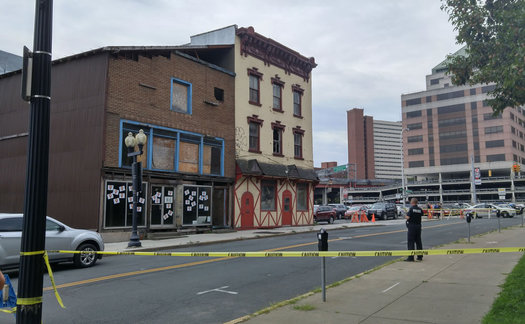
50 Hudson is the building to the right.
50 Hudson Ave in downtown Albany -- the building right next to Albany's oldest building, 48 Hudson, the Van Ostrande-Radliff House -- suffered what appeared to be a partial collapse Tuesday. Mayor Kathy Sheehan, who was on the scene, said demolition of the building would start today. [@Anyaon10]
Thanks to Sandy Johnston for passing along the photo above -- there are a few more after the jump. He's been posting a few updates from the scene on Twitter.
Historic Albany Foundation owns 48 Hudson, and Tuesday morning representatives were on the scene monitoring the situation. HAF's Nicki Brown told AOA that 48 Hudson was stable and the org is working with engineers to keep it that way.
Research involving the study of tree rings in timbers dated 48 Hudson Ave to 1728. And while 50 Hudson isn't that old, it's still had a long run -- HAF figures it dates back to the early 1800s. (City tax records have it pegged at 1855, but they become less reliable the farther back in history.)
You might remember that Historic Albany had a plan for 48 Hudson that involved the building becoming the new home of the Albany Distilling Co. That plan didn't end up getting funding through the last round of state regional economic development council awards. But Brown said HAF is still planning a restoration of the building that will restore its original footprint and some of its Dutch features with the goal of finding a modern use -- which could be as commercial space. The org is again applying for a state grant to aid the project.
Black Heritage Tours history tour of Albany, Hudson Valley, and New York
 A company called Black Heritage Tours is starting a new history tour of the Albany area, Hudson Valley, and New York City that's focused on African Americans, Native Americans, and the Dutch.
A company called Black Heritage Tours is starting a new history tour of the Albany area, Hudson Valley, and New York City that's focused on African Americans, Native Americans, and the Dutch.
The company already operates tours in the Netherlands. From a Dutch consulate website description of the new tour here in New York:
Founded in Amsterdam in 2013, Black Heritage Tours - New York State focuses on the transnational history of the region, and demonstrates the influence that the Dutch, Native American and African cultures had on New York. While we often think of New York as a "free state," slavery wasn't abolished in New York until 1827, and its blows were felt long after that.
This three-day, two-night tour of New York's Hudson Valley, which includes hotel accommodations and transportation, will provide a glimpse into our past, answering questions about the history of slavery in New York, and bringing to light the extraordinary experiences of the men and women who helped shape this region. The tour begins in Albany, with stops at Crailo Historic Site, Ten Broeck Mansion, the Stephen and Harriet Myers Residence, which was a stop on the Underground Railroad, and the African Burial Grounds. Tours will proceed along the Hudson River to New York City, with additional stops in Harlem and Brooklyn.
As an adult, [company founder] Jennifer [Tosch] attended University of California, Berkeley where she studied Dutch Colonial history. She traveled abroad to trace her family's own diaspora, and during her studies in the Netherlands, she was surprised to discover large voids in the historical narrative. 'Where were the positive narratives about the presence of Africans?' 'Where were their contributions celebrated?' Similar to her childhood, Tosch recognized gaps between her experiences and the story being told by the predominant culture. She founded Black Heritage Tours to combat that "single story" approach to history and reclaim her heritage.
The first New York tour is this August 5-7. It will repeat October 28-30 and December 9-11. Tickets are $555 and include the tour, transportation from Albany, accommodations, and breakfast and lunches.
Earlier on AOA: Stephen & Harriet Myers, station agents for Albany's portion of the Underground Railroad
(That's the Myers house on Livingston Ave in Albany in the photo.)
Painted scenes from Albany's history

Here's a larger view, if you'd like to look closer.
A bonus track from the post about the Rezone Albany downtown UAlbany neighborhood public event: We took a few minutes during Monday's session in Milne Hall 200 to take in the murals that circle the room. And they're worth a look if you ever have the chance.
Here's a UAlbany library page with images and descriptions of each of the murals.
The murals were created by artist David Cunningham Lithgow in 1935 and they each depict a scene from Albany's history (with one exception), among them Henry Hudson's arrival, the signing of the Dongan Charter, and -- as you can see in the pic above -- the courtship of Elizabeth Schuyler and Alexander Hamilton.
The modern house of then -- on many levels
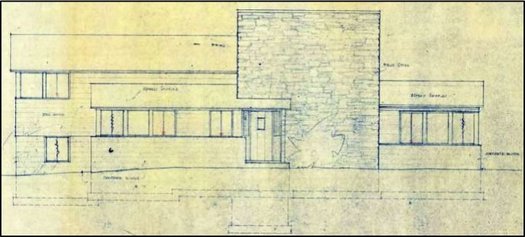
A 1947 Victor Civkin blueprint for the Lafferty House.
The latest batch of recommendations for the the State and National Registers of Historic Places for New York includes a handful of sites around the Capital Region, including the sorts places you'd expect like churches and a rural historic district.
It also includes a site you might not expect: a suburban home in Niskayuna.
The home in question is the James M. and Eleanor Lafferty House, which is in a neighborhood just off Rosendale Road. It's been nominated as a representative of the modern movement. And the home's national register nomination form is an interesting read (including diagrams and photos) -- especially if you're interested in midcentury design.
It's glimpse into both residential architecture of the time and also GE's efforts to create the kitchen "of tomorrow." (No, wait, The kitchen... of tomorrow.)
How the train station ended up where it is now
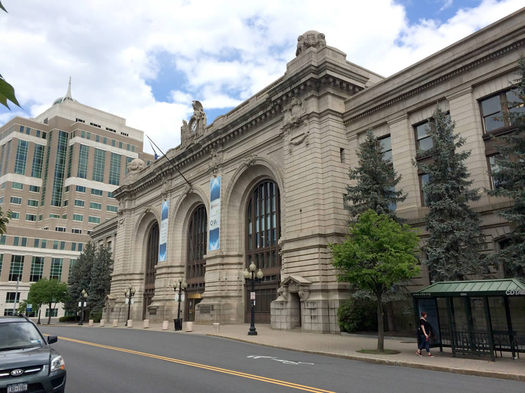
The old Union Station on Broadway in Albany (AKA, Kiernan Plaza) has since found new use as offices.
The fact that Albany's train station is over the river in Rensselaer is one of those things that prompts a lot of "What... why... huh?" reactions from people. (Even though the new version is actually pretty nice.) And it can be especially puzzling since the old train station in Albany still stands -- and is a rather grand building at that.
Over at Hoxsie, Carl recently took up this topic and it's the best account we've seen of how things ended where they are today. Here's a clip:
Those who remember Albany's Union Station as a glorious destination in the '50s and '60s most likely benefit from the rose-colored glasses of nostalgia. A 1969 column in the Knickerbocker News acknowledged that "In its dying days, Albany's Union Station was an odiferous and dingy cavern, but still, if you looked hard, you could see traces of the station's earlier grandeur." If you grew up later than the '70s, you may not be able to understand just how dingy cities were back then - between coal ash, diesel fumes, and the horrendous exhaust that came out of each and every automobile, every structure was covered in soot. Likely the exterior of Union Station had never been cleaned, and by some accounts the same could be said of the inside. ...
The Rensselaer station opened sometime in 1968, a box next to a grocery store that served as the region's rail station until 2002. That Knick News columnist who in early 1969 called Union Station "odiferous" also said that
"In contrast, the Penn Central's new Albany-Rensselaer station in Rensselaer is - with all due respect to our neighboring city - a rude comedown and a ride to the new station is a dispiriting experience. Situated at the northern edge of Rensselaer, the station is reached after a bumpy ride over narrow streets. It looks more like a small-town depot for short-haul buses than a railroad station and is tucked away in a shallow ravine as if the Penn Central were ashamed at what it had done, as well it might be. Let us hope that the railroad's new Albany-Schenectady regional station on Karner Road in Colonie has more class."
Well, one could hope.
A train station in Colonie? Yep! That's one of many interesting bits in Carl's series of three posts about the topic (they're all quick reads) -- here are parts two and three. It's a story of railroads that weren't all that interested in railroading, the midcentury planning obsession with cars, and decisions that elicited "What the...?" reactions from the start.
Earlier on AOA:
+ A miniature version of Troy and its past
+ Riding the trolley -- everywhere>
+ Thinking about high-speed rail in New York
The Weebermobile
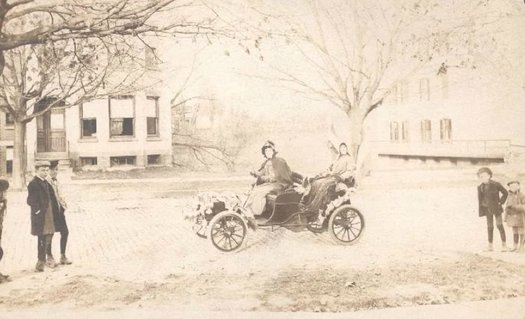
Christian Weeber and his wife Pauline in a Weebermobile decorated for a Halloween parade on Western Ave in Albany around 1905. / photo from New York State Museum collection
Cars are so ubiquitous and ingrained in our culture now that it's hard to imagine a time when they were a new technology -- something cutting edge that inspired new dreams.
That was one of the thoughts we had while reading through an interesting new publication from the State Museum: Weebermobile: Christian F. Weeber, Jr. Inventor, Entrepreneur, and Manufacturer by Geoffrey N. Stein.
Christian Weeber was born in Albany in 1872 and would go on to operate a bike shop in Albany before building his own brand of the car, the Weebermobile, in the late 1890s -- which, according to at least one account, may have been the first automobile on the streets of Albany.
Wellington Row, a century ago, newly vibrant

It's that row of buildings on the south side of State Street, just below the Capitol.
Check out this circa 1915 photo of Wellington Row on State Street in Albany that Albany Archives colorized. Here's a large-format "sliding" before and after photo.
We asked Matt Malette -- the man behind the curtain at Albany Archives -- how he figured out the colors from the black-and-white photo, which is from an archive at the Albany Public Library. "I went back through old postcards to see what colors the buildings were. If I couldn't find any extra guidance I winged it and made an educated guess on the shade of gray."
The (altered) facades of these buildings still stand today -- even if the rest of the original buildings don't. They were knocked down as part of the Wellington demolition, and they've since been replaced by new buildings fronted by old facades.
Myths and misconceptions about the Battles of Saratoga at NYS Military Museum
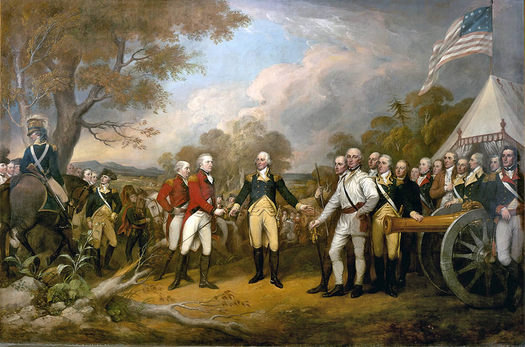
The surrender of British general John Burgoyne at Saratoga -- this painting by John Trumbull is in the US Capitol. / image via Wikipedia
Could be interesting: Eric Schnitzer -- a historian and a ranger at the Saratoga National Historic Park -- will be giving a talk at the New York State Military Museum in Saratoga Springs this Saturday about some of the myths about the Battles of Saratoga, one of the key turning points in the American revolution. Blurbage:
Schnitzer will speak about the myths and misconceptions that have grown up around the battle, which hamper people's understanding of what really happened there in September and October of 1777.
He will discuss weaponry, commanders, personnel, and the training of the troops who fought on both sides.
Schnitzer contributed a chapter to the recently published book "The Saratoga Campaign: Uncovering an Embattled Landscape." The book focuses on the archeology of the battlefield and what is being learned there.
The talk is Saturday, June 25 at 1 pm. It's free, as is admission to the museum.
Earlier on AOA:
+ Saratoga National Historic Park
+ How to commemorate a traitor
+ Kosciuszk-who?
400 years of Albany history, abridged
We're wrapping You're New Here Week by going back -- way back -- to the beginning.
The Albany area has a long history, and it's important part of the story of this place. So we thought it'd be fun to put together a little illustrated history of Albany's 400 (or more) years... in just a few minutes.
The guide for this quick video history is Duncan Crary. Illustrations by Greg Matusic.
Running history tours of Albany
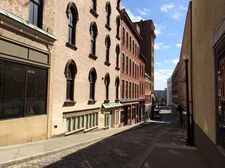 Bus tours. Bike tours. Walking tours. Yep, sure.
Bus tours. Bike tours. Walking tours. Yep, sure.
Running tour? That's a new one to us.
The Albany Public Library has organized a series of running history tours of downtown Albany. Blurbage:
Explore 2.5 miles of historic downtown Albany as a pair of running librarians lead you and a small group of participants on a narrated history run through our city! If you can comfortably run an 11 minute mile (5.5 mph) over 2.5 miles, you'll have no problem keeping up. We'll take three short breaks at historic points along the way. Lace up your sneakers, bring headphones or borrow some of ours. We'll provide a digital audio player you'll hold while running containing a narrated audio tour. The tour was developed from information gathered in our library's Pruyn Collection of Albany History, local history blogs, and other resources!
The first tour is Saturday, July 9 at 10. There are four more tours scheduled over the course of July and August, three on Saturday mornings and one on a Wednesday evening. The group meets up at the Albany Heritage Area Visitors Center at Quackenbush Square, and the morning tours end at The French Press Cafe and Creperie and the evening tour at McGeary's.
The tours are free, but registration is required. Details at the link above.
APL advertises on AOA.
Touring Olana as a three dimensional artistic composition

Emily sent along this photo from one of the carriage paths as an example -- the lake, meadow, slope, trees, and house were all part of Church's design.
The Olana State Historic Site in Hudson -- the home and studio of Hudson River School painter Frederic Edwin Church -- has a new tour this season, and it highlights an aspect of the site that was new to us: That the area around the beautiful home is itself a designed landscape.
The guided electric vehicle tour follows roughly five miles of the carriage road system on the 250-acre site, surveying the various landscape elements that Church designed.
We heard about the new tour via Emily Lemieux*, who's been leading it. And we emailed her to find a more. Here's a clip from her response:
Frederic Church wasn't just a landscape painter, he was a landscape architect and the entire 250 acres of Olana is a designed landscape, a three dimensional artistic composition. It's like Disney Land for Art History fans.
Historic Albany walking tour of Warehouse District architecture

The old Argus Press Building on Broadway.
Historic Albany has a walking tour -- "Industrial Downtown" -- lined up for May 18 that looks like it could be interesting. A tour description via Cara Macri, HAF's director of preservation services:
The Industrial Downtown Tour highlights the industrial buildings on Broadway from approximately Ferry Street north to Loudonville Road. It may cover a little more or a little less depending on how fast the group moves. It will cover the "Nipper Building", the former Argus Press Building (a 2010 Endangered Historic Resource), businesses like Adam Ross Cut Stone and other anchor buildings in Albany's Warehouse district. The tour will focus on the historic architecture and the area's development.
The tour meets at 5:30 pm on Wednesday, May 18. Tickets are $10 and reservations are required. Sign-up info is at the link above.
If you're interested in architecture or old buildings (or both), it's worth taking some time to wander around the Albany's Warehouse District looking at the buildings, seeing how they're used now -- and imagining what they might have looked like in the past. (A lot of the building fronts once included large windows -- see this 1930s photo of the building at the corner of Broadway and Loudonville Road.)
The neighborhood has long been a center of light industrial business in the city. But parts of it are now poised to undergo a transformation toward something more mixed-use. Examples: There are plans to turn both the Nipper Building and 960 Broadway into residences.
A gate to the past
This is Western Ave just west of Manning Blvd in 1890. Notice it's only a single lane past the toll gate? #Albany pic.twitter.com/dEI1DogXWl
— Albany Archives (@AlbanyArchives) May 4, 2016
Albany Archives posted the above pic today and it prompted one of those the-past-seems-like-a-different-place feels for us.
What is now Western Avenue out past Manning Boulevard was once part of the (First) Great Western Turnpike (we imagine some people said that as if it were italicized -- The. Great. Western. Turnpike.). It stretched from Albany to Cherry Valley more or less along the path of what's now US 20. And it was later extended to Central New York by the... Second Great Western Turnpike and The Third Great Western Turnpike.
The Schuyler Flatts Burial Project
 The Schuyler Flatts Burial Project is working to honor and provide a burial for the remains of 14 people found in Menands, whom research indicates were slaves during the 18th and 19th century. From the project description:
The Schuyler Flatts Burial Project is working to honor and provide a burial for the remains of 14 people found in Menands, whom research indicates were slaves during the 18th and 19th century. From the project description:
In 2010, bioarchaeological analysis was completed by the NYS Museum. The analyses determined that the remains are about 200 years old and represent 6 women, 1 man, 2 children, and five infants. DNA analysis concluded that four of the individuals are of African descent. (West/East and Central Africa) Two sets of remains are descendants of women from Madagascar (off the coast of Southeast Africa). One individual, who may have been of mixed ancestry, was descendant from a Native American woman (possibly Micmac Tribe: Eastern Canada and the Northeastern corner of the United States). The burial ground was dated between the 1700s and early 1800s. Historical research indicates that the burial ground was part of a large estate owned by the colonial Schuyler family who owned a number of slaves in the 18th and 19th centuries. The Schuyler Flatts Burial Ground Project Committee is in the process of planning and implementing a ceremony at St Agnes Cemetery located in Menands, NY on Saturday, June 18th 2016.
A handful of artists have been recruited to create burial containers for the remains. And this Saturday, April 30 at the State Museum there will be a public meeting and presentation about the work. It's at 1 pm in the museum's Huxley Auditorium. It's free.
Making Nipper a landmark -- officially

Chuck Schumer was in town today calling for the National Park Service and the State Historic Preservation Office to add 991 Broadway in Albany's Warehouse District -- and the Nipper statue that sits atop it -- to the National Register of Historic Places.
You might be thinking: Wait, isn't there a residential redevelopment project in the works for that building? And haven't the backers of that project said they intend to keep the exterior -- and Nipper -- pretty much as is?
And the answers to those questions are: yes and yes. So why the push for the designation if Nipper isn't, in the words of Schumer's office, in line to be "ruffed" up?
The time Harriet Tubman helped lead the rescue of a man in Troy

The spot in Troy where the rescue started.
With the news this week that Harriet Tubman will appear on the $20 bill, it seemed like a good time to highlight the story of how Tubman helped lead the rescue of a man in Troy.
It's an amazing story, full of bravery and tenacity.
The only known photo of Troy's Sam Wilson -- Uncle Sam -- is up for auction
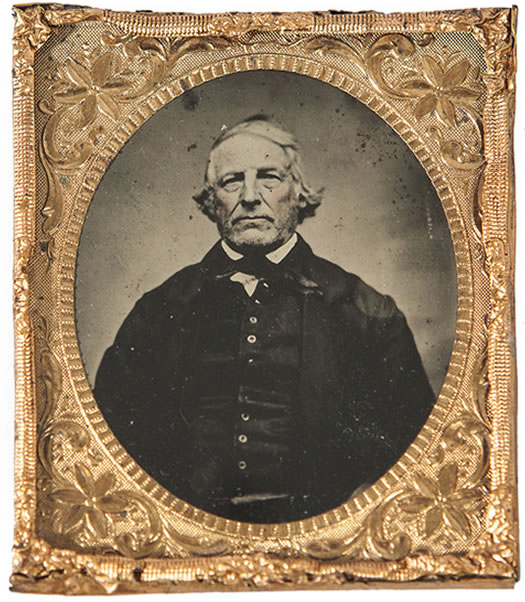
Sam Wilson. Probably.
What's said to be the only known photo of Sam Wilson -- the 18th/19th century Troy businessman thought to be inspiration for the "Uncle Sam" personification of the United States -- is up for auction this weekend in Ohio. And a group in Troy is trying raise money to buy it, along with other Uncle Sam-related items
From the Patreon page for Mount Ida Preservation Hall:
The image will be auctioned this Sunday, April 24 along with a costume said to have been worn by James Montgomery Flagg in his iconic "I Want You" World War I recruiting poster and another costume believed to have been used by Thomas Nast in his famous Uncle Sam illustrations for Harper's Weekly magazine. The Mount Ida Preservation Association would like to place bids on some or all of these items in order to bring them home to Uncle Sam's hometown.
The Mount Ida Preservation Association is collaborating with local collectors and Uncle Sam enthusiasts to create a museum exhibit on the busy Rt. 2/Congress Street corridor, at Preservation Hall, perched above the scenic Poestenkill Gorge, and just blocks from the Mt. Ida Cemetery, where Uncle Sam was buried before being reinterred to Oakwood. ...
As this work is underway, however, the items we collect together will be made available for display at local museums and institutions that are already equipped to show them to the public.
The project is aiming to ultimately raise $6,000 to acquire items at the auction. (The way Patreon works is that people pledge to contribute some amount -- as small as $1 -- each month.) The listing for the Same Wilson photo on the Forsythe Auctions site estimates the photo is worth between $5,000 and $10,000.
JFK in Troy, 1960
The ultimate Presidential candidate visit; John F Kennedy speaking to thousands in Monument Square, #Troy, 9-29-1960 pic.twitter.com/jLhfUwucEs
— Albany Archives (@AlbanyArchives) April 11, 2016
Albany Archives shared this photo today of then-Senator John F. Kennedy campaigning in Troy in September of 1960 today (you are following @AlbanyArchives, right?). And it struck us how informal the whole scene looked, especially in contract to the large campaign events that have recently happened in the Capital Region.
Anyway, we were able to find a transcript of some of JFK's remarks that day in Troy. He mostly talked about Russia and China and communism. Here's a clip from the American Presidency Project at the University of California-Santa Barbara:
So I come here to Troy and ask your support. The name of Troy goes back in history. Therefore, in this city you connect the old with the new but the cause is still the same, the maintenance of freedom, the maintenance of self-government, at a time when it is under far more serious challenges than the city of ancient Troy ever faced. I come to Troy and ask your help in this campaign.
Kennedy would, of course, go on to the win the presidency against Richard Nixon later that fall. He won New York State 52.5-47.3 -- though the only Capital Region county he won was Albany.
Screenings of new Mohawk Giants documentary

The 1931 Mohawk Giants. / photo courtesy of Schenectady County Historical Society
WMHT has a new documentary about the Mohawk Giants baseball team in Schenectady queued to premiere Monday, April 11 at 7:30 pm. That's just before the debut of the new Ken Burns two-part doc about Jackie Robinson that same night at 9 pm.
But you can catch a free early screening of The Mohawk Giants: Schenectady & The Negro Leagues at Proctors this Tuesday, April 5 at 7 pm. The night will also include a few excerpts from the upcoming Jackie Robinson.
Blurbage for the documentary about The Mohawk Giants:
The Mohawk Giants were an independent professional negro league baseball team supported by mostly white fans, whose players were a mix of young bucks on the way up and older veterans who were on their way down from the Negro Major leagues. The team found lots of success in its runs between 1913 and 1940 with players like the eventual Homestead Gray Buck Ewing and pitching ace Frank Wickware.
With the help of national caliber historians and a first-hand look into the Negro Leagues Baseball Museum in Kansas City, MO, we're able to tell the stories of this team as well as other standouts from the area like Edsall Walker. Walker was born in Catskill, played ball in Albany, and then moved on to play for one of the most famous Negro League teams, the Homestead Grays, alongside baseball legends like Josh Gibson, Cool Papa Bell, and many others.
It's free to attend the preview screening, but WMHT does ask that you RSVP: rsvp@wmht.org.
Earlier on AOA: The Mohawk Colored Giants of Schenectady
Hudson Valley Hops 2016
 The Hudson Valley Hops event will be back at the Albany Institute April 16. Tickets are $35 ahead / $40 at the door.
The Hudson Valley Hops event will be back at the Albany Institute April 16. Tickets are $35 ahead / $40 at the door.
The annual event celebrates the history of brewing in the Hudson Valley. This year's it will be marking the 35th anniversary of Newman's Pale Ale, which was once produced by Bill Newman in (what's now known as) the Warehouse District in Albany and played a key role at the beginning of the craft beer boom. (Newman was recently at Davidson Brothers in Glens Falls for the brewing of a new batch of the beer.)
Additional blurbage:
Enjoy a one-time blind taste testing featuring 12 to 15 pale ales from craft brewers up and down the Hudson Valley, from Lake George to Yonkers. Hosted by Steve Barnes of the Times Union's Table Hopping with celebrity judges including Ric Orlando.
The event also includes food from New World, a commemorative glass, and an exhibition of local brewing history.
AIHA advertises on AOA.
A slice of The Egg
We stumbled across this cross section diagram of The Egg in the AlbanyGroup Archive Flickr collection recently, and thought it was interesting how it shows everything packed into the venue's shape.
From the "History & Architecture" page over at the The Egg's website:
Architecturally, The Egg is without precedent. From a distance it seems as much a sculpture as a building. Though it appears to sit on the main platform, the stem that holds The Egg actually goes down through six stories deep into the Earth. The Egg keeps its shape by wearing a girdle - a heavily reinforced concrete beam that was poured along with the rest of the shell. This beam helps transmit The Egg's weight onto the supporting pedestal and gives the structure an ageless durability that belies its nickname.
AlbanyGroup Archive: You've checked out the AlbanyGroup Archive on Flickr, right? It's a huge rabbit hole of local historical photos.
The Influence of the Dutch on the American Kitchen at the State Museum

Joachim Beuckelaer's "The Well-Stocked Kitchen" from 1565.
Food historian Peter G. Rose will be at the State Museum for a talk about how the colonial Dutch influence American cooking. Blurbage:
This PowerPoint presentation is based on a 17th-century Dutch gardening- and cookbook, which features a calendar for gardening activities and a cookbook that explains how to use the fruits and vegetables grown in the garden to best advantage. The 400-year old book with its contemporary theme helps in understanding the kitchen gardens of the early Dutch settlers of the Hudson Valley and gives insight in our colonial diet. Illustrations include etchings from the book; works by the Dutch masters such as kitchen scenes by Joachim Beuckelaer; market stalls by Quiringh van Brekelenkam and Pieter Cornelis van Rijck; as well as sumptuous still lifes by Abraham van Beyeren.
Rose is originally from The Netherlands and has written many books about the Dutch and their influence on the food and culture of the Hudson Valley. Her latest book is Delicious December: How the Dutch Brought Us Santa, Presents, and Treats.
The talk is in the State Museum's Huxley Theater at 1 pm on Sunday, April 3. It's free.
Earlier on AOA:
+ What did Albany eat in the 18th century?
+ Baking that Albany Cake
Albany Rural Cemetery: A tour of (a few) favorites

The Parsons angel.
The Albany Rural Cemetery can be a beautiful spot for a walk. With the arrival of spring, we asked Paula Lemire, who's studying the history of Albany's august, park-like cemetery for Albany Rural - Beyond The Graves, to share some of her favorite monuments there.
If one spends enough time walking and exploring the Albany Rural Cemetery's 467 acres, it becomes very difficult to pick a favorite monument. With more than 200 numbered sections and thousands of graves ranging from crumbling sandstone slabs to larger-than-life statues, I fall in love with a new favorite on every visit.
With that said, here are some of my favorites -- at least, until the next walk.
That time Donald Trump started a bike race in Albany
Here's a random bit of weird local history: Back in 1989 there was a cycling race called the Tour de Trump -- named after Donald, of course -- and it started in Albany. As the clip above shows, there was even a time trial that sped past The Egg on the Empire State Plaza.
The origins of the race are bizarre. Somehow it started with Billy Packer -- yep, the cranky college basketball commentator -- hatching the plan and then pitching it to Donald Trump. And though Trump pledged to put up $750k to back the race, he later told the New York Times he didn't expect to pay any of that money because sponsorships had covered the costs -- and the extent of his contribution would be his name. [NYT]
The race drew some of the top riders of the day, including Greg LeMond who was then the only American to have won the Tour de France. The race route stretched from Albany south into the mid Atlantic states, eventually ending at Atlantic City. [Sports Illustrated]
In an interview with Dick Enberg on NBC at the New York State Capitol leading up to the start of the race, Donald Trump said he thought that, with time, the race would be "the equivalent of the Tour de France." It turned out Trump's sponsorship only extended one more year (apparently he had a bit of a money crunch), after which DuPont took up the name sponsorship. The race fizzled out in 1996. [Deadspin]
Oh, and during that interview with NBC, Dick Enberg asked Trump if he saw himself in politics in the future. Trump's answer:
I don't see myself as a politician. I think I speak my mind perhaps too bluntly. I like to tell the truth. I'm not sure a great politician can always tell the truth. I do like to tell the truth. I like to say what should be done and when it should be done. And I'm not sure a politician's allowed to do that and get elected. And that's unfortunate. It's very unfortunate for the country, I can tell you.
(Thanks, Serge!)
A City of Immigrants
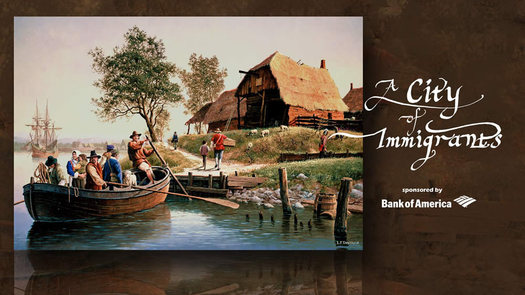
A month-long series of local events, exhibits, talks, and screenings focused on the experience of immigrants starts this week. "A City of Immigrants" is organized by Albany Pro Musica, which will cap the month with a special concert at Troy Music Hall in April. Blurbage:
Throughout our history, many immigrant groups have chosen to make this place their home, each group bringing with them the values and special talents which define the vibrancy and uniqueness of our region. The concert, A City of Immigrants, has been conceived and developed by Albany Pro Musica's Artistic Director, Dr. Jose Daniel Flores-Caraballo, as an homage to this rich cultural heritage and to the many immigrant groups which have made our region strong and enduring, and whose very differences have enriched us all. This concert will be preceded by a three- week, capital region-wide celebration of our unique cultural heritage , through exhibits, lectures and other events.
The Albany Pro Music concert is April 3 at the Troy Music Hall. Tickets are $25 and $35 / $15 for students.
A compressed events schedule for the month is listed after the jump.
Solomon Northup's Kindred: The Kidnapping of Free Citizens Before the Civil War at The Book House
 Historian David Fiske will be at the Book House of Stuyvesant Plaza this Saturday to talk about his new book Solomon Northup's Kindred: The Kidnapping of Free Citizens Before the Civil War. Book blurbage:
Historian David Fiske will be at the Book House of Stuyvesant Plaza this Saturday to talk about his new book Solomon Northup's Kindred: The Kidnapping of Free Citizens Before the Civil War. Book blurbage:
David Fiske's Solomon Northup's Kindred reveals the abhorrent conditions and greed that resulted in the kidnapping of American citizens. Factors like early fugitive slave laws, the invention of the cotton gin, the 1808 ban on importing slaves into the United States, and the Supreme Court's Dred Scott decision made these crimes highly profitable. Fiske sheds much-needed light on the practice of kidnapping, explaining how it was carried out, identifying conditions that allowed kidnappers to operate, and describing methods for combating the crime. He offers dozens of case studies along with documentation from across historical newspaper reports, anti-slavery literature, local history books, and academic publications to provide an accurate account of kidnapping crimes of the time.
As you know, Solomon Northup is the Saratoga Springs man who was kidnapped and sold into slavery in 1841 after being lured to Washington, DC with the promise of a job -- his memoir was adapted to become the film 12 Years a Slave. Fiske has previously authored/co-authored two books about Northup: Solomon Northup: His Life Before and After Slavery and Solomon Northup: The Complete Story of the Author of Twelve Years a Slave.
He recently talked with the Daily Gazette about the new book, including accounts of mutiple kidnappings that happened in Upstate New York.
The event at the Book House is Saturday, March 12 at 3 pm. Fiske will be talking about the book and signing copies. It's free to attend.
Stephen & Harriet Myers Residence tour
 Historic Albany Foundation is hosting a tour of the Stephen & Harriet Myers Residence in Albany March 8. Blurbage:
Historic Albany Foundation is hosting a tour of the Stephen & Harriet Myers Residence in Albany March 8. Blurbage:
Visit the home of African American abolitionists Stephen and Harriet Myers, hear a new interpretation of Underground Railroad history while sitting in the parlor where The Vigilance Committee conducted their business, learn about the restoration process and plans for this historic building, and share in the preservation of its history and significance.
Stephen and Harriet Myers are a remarkable story. They were agents for Albany's node in the Underground Railroad. And they helped hundreds of people escape slavery. Stephen Myers also ran a series of newspapers, and was active politically, lobbying for voting rights for African-Americans.
The Myers Residence is on Livingston Ave in Albany. It's at 5:30 pm on Tuesday, March 8. It's $10 per person and reservations are required (see details at the first link above).
Also: The annual Underground Railroad Public History Conference is April 15-17 in Troy.
Lit up again in Troy
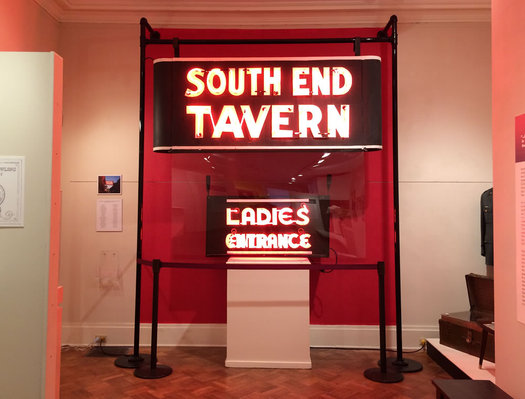
We were in downtown Troy Friday afternoon so we took a moment to check out the new Visions of Troy exhibit commemorating the bicentennial of the city at the Rensselaer County Historical Society. The exhibit just opened and it's worth a look because it includes a bunch of interesting pieces from Troy's history.
But if anything, it's worth stopping in just to gawk at the old South End Tavern signs -- including the famous "Ladies Entrance" sign -- that RCHS bought last year as part of the liquidation sale at the old tavern property. The org got some repairs done on the signs and they're on display in their neon glory.
The Visions of Troy exhibit will be on display throughout 2016. Here are a few more pics from it...
Agrippa Hull, Thaddeus Kosciusko, and how Thomas Jefferson didn't hold up his end of the agreement

Agrippa Hull and Thaddeus Kosciuszko
Somewhere between three and four hundred black men served in the Continental Army during the battle of Saratoga, one of the moments credited with the turning the tide during the American Revolution. It's difficult to tell exactly how many because soldiers were not identified by race on the roster. And like their numbers, many of the stories of the black soldiers of the revolution are missing from history.
One of the men at the battle we do know about is Agrippa Hull -- a free black man who served for nearly six years, most of them as a personal aid to Thaddeus Kosciusko, the mastermind behind the battle of Saratoga and the namesake of the twin bridges on the Northway.
Hull was the inspiration behind Kosciusko's effort to free hundreds of American slaves. An effort that ended up being thwarted by his friend -- founding father Thomas Jefferson.
"Old Albany through the Eyes of William Kennedy's Fictional Characters" at Albany Institute
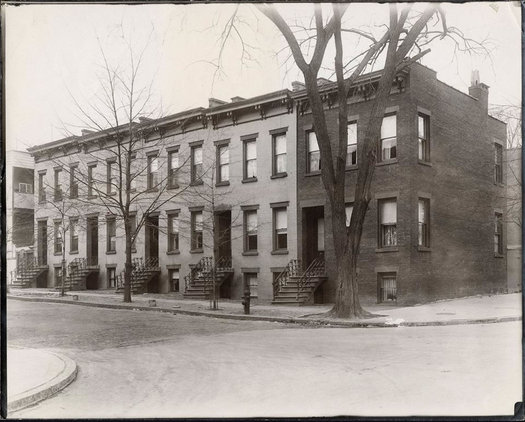
This circa 1930 photo shows 67 Dove Street in Albany -- the place where the Legs Diamond was famously killed in 1931 after he was acquitted in a kidnapping trial in Troy. (The building's still there today.) William Kennedy wrote a novel about the gangster called Legs. / photo from the Morris Gerber Collection
The Albany Institute is hosting a talk by William Kennedy about the intersections of the characters in his books and real Albany places on March 6. Blurbage:
Pulitzer Prize-winning novelist William Kennedy, who uses his hometown of Albany, New York, as the inspiration for his work, will present a slide show of historic Albany scenes that are featured prominently in the novels. He will discuss the ways in which his characters inhabit Albany's buildings and streets.
The event is at 2 pm on Sunday, March 6. It's free with museum admission. (We suspect this will be popular, so showing up a bit early to grab a seat is probably a good idea.)
AIHA advertises on AOA.
"When Alexander Hamilton Called Albany Home" at the Schuyler Mansion
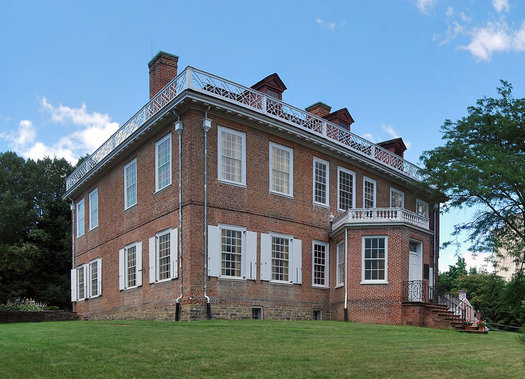
The Schuyler Mansion in Albany's South End. / photo: CC-BY-SA-3.0/Matt H. Wade at Wikipedia
Prompted perhaps by the spreading Hamilton mania (Hamilmania?) the Schuyler Mansion State Historic Site in Albany will be hosting two days of Alexander Hamilton-focused tours at the historic house -- March 19 and April 16.
Tour blurbage:
Alexander Hamilton (1757 - 1804), was a remarkable political figure who was "actively involved in nearly every aspect of the nation's founding" and, as the son-in-law of Major-General Philip Schuyler, was intimately connected with the city of Albany. Come join us as we examine Hamilton's relationship with the Schuyler family, and his connection to the Schuyler family home and to Albany itself.
Hamilton married Elizabeth Schuyler in 1780 at the mansion and the couple spent time in Albany. Hamilton also had a close relationship with Schuyler's sister, Angelica.
The Hamilton-focused tours begin at 11 am each day, with the last tour starting at 2 pm. Admission is $5 adults / $4 seniors and students / free for kids 12 and under. Reservations are required (434-0834).
[via Nicole]
Eight short stories recalling the lives of African Americans buried in the Albany Rural Cemetery
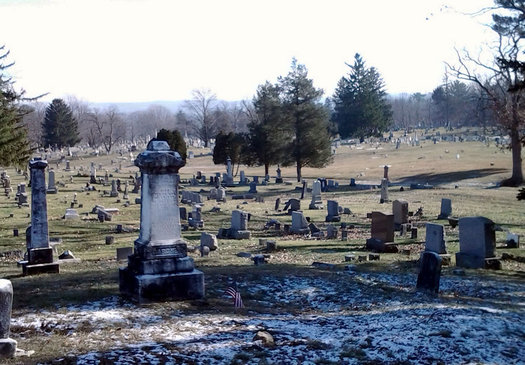
Looking north from section 100 of the Albany Rural -- that part of the cemetery includes the grave of Dr. Thomas Elkins, an inventor and member of the Underground Railroad.
Mention the Albany Rural Cemetery and the most common response is, "Oh, that's where President Arthur is buried!"
Its 467 acres contain the graves of governors, mayors, soldiers, actors, bankers, and poets, as well as works of monumental art by Erastus Dow Palmer, Robert Launitz, and Charles Calverley.
Buried here, too, are dozens of prominent figures in Albany's African-American history -- from slaves to doctors.
Here are the stories of some of those Albany residents...
"[F]inely situated on three hills on the [west] bank of the Hudson..."

An ad for the Kenmore Hotel from the Appletons' Guide. The building is still there, of course, on Pearl Street in downtown Albany.
That BBC show that featured Albany recently was using a 19th century railroad guide book as a sort of map for exploring the United States.
So, we thought it'd be fun to look up the Appletons' General Guide to the United States and Canada to see what was included in the full section about visiting Albany during that period.
Frederick Douglass on the Albany of 1847

A daguerrotype of Frederick Douglass from around the time he visited Albany in 1847, when he was 29 years old. / photo: National Portrait Gallery via Wikipedia
In the fall of 1847, the great abolitionist and orator Frederick Douglass had traveled to Albany (and Troy) for a series of meetings and speeches. And while Douglass found a few things here to praise -- it's fair to say he came away rather unimpressed by the city of Albany, which at the time was a key center for politics and transportation.
From a letter Douglass wrote to the abolitionist Sydney Gay in October of that year after leaving the city:
Situated on the banks of the noble Hudson, near the head of navigation, Albany is the grand junction of eastern and western travel. Its people have a restless, unstable, and irresponsible appearance, altogether unfavourable to reform. A flood of immorality and disgusting brutality is poured into the city through the great Erie Canal, and the very cheap travel on the Hudson facilitates the egress of a swarm of loafers and rum-suckers from New York. I have received more of insult, and encountered more of low black-guardism in the streets of this city in one day than I should meet with in Boston during a whole month.
There's a larger clip from the letter after the jump -- in it Douglass touches on the history of slavery in Albany and the city's apparent inertia in the face of reform.
The huge mixed-use building that could have stood along Clinton Ave in downtown Albany
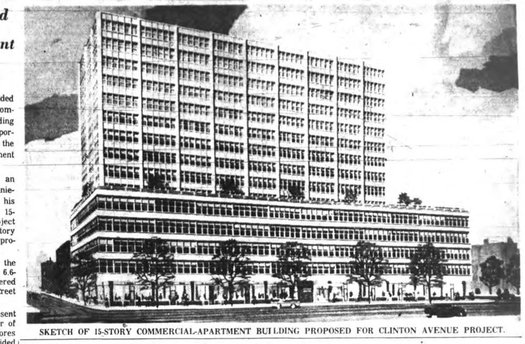
Clipped from The Knickerbocker News, January 16 1963 via Fulton History
From the Annals of Projects Proposed But Not Built: While doing research for a different topic, we tripped over this 1963 Knickerbocker News article about a proposal for 15-story mixed-use building that been proposed for downtown Albany on the block of Clinton Ave just east of Pearl.
It caught our eye because, well, look at that rendering. And also because there are echoes today of some of the things people were saying about development in that spot more than a half-century ago.
Historic Albany endangered building list 2015

St. Joe's is on there.
The latest edition of the Historic Albany Foundation's endangered building list is out. It includes more than 20 historic properties and places the org says "suffer from vacancy and disinvestment or inappropriate development pressure, and are often potential targets for emergency demolition."
HAF releases this list every five years. It says the list is an effort to raise awareness and help find solutions for reuse and preservation.
This time around it's grouped the properties into categories. You'll definitely recognize some of the buildings -- and there might be a few others you didn't even know were there.
Here's a quick overview, along with the list.
The story of that beautiful, odd, skinny building on State Street in Albany
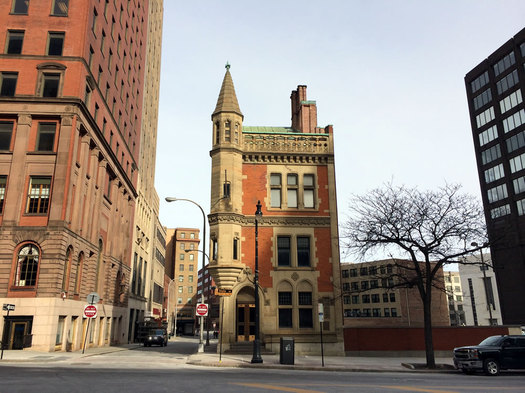
You know 63 State Street. It's that skinny building at the corner of State and James in downtown Albany. It's both beautiful and kind of odd, standing all dressed up by itself there, like it's waiting to meet a group of other fashionably-adorned architecture.
The building has been for sale for a while now, and as the Biz Review reported Thursday, it's going up for auction as part of a package with 69 State Street (the large building just up State Street on the corner with Pearl) -- starting bid $1.5 million.
We've always been curious about 63 State, so here's a quick backstory.
What was on the menu in Albany back then
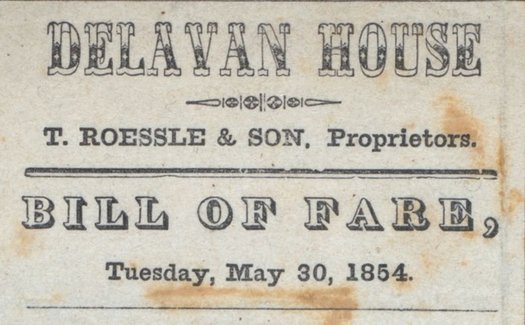
History so often is about dates and places and battles and famous people. But we often find ourselves curious about the day-to-day things from way back. What were people's houses like? What did they do for fun? What were they eating?
We had that last question in mind when we came across a group of historical menus that are online as part of the New York Public Library's collection. And a handful of them are from hotels and halls in Albany during the last 1800s and early 1900s.
So... what was on the menu?
A throne invented in Albany

Here's a larger, uncropped version of the illustration submitted with the patent. (Also, check out Elkins's signature -- the guy signed with a flourish.)
Patented 144 years ago this Saturday by Dr. Thomas Elkins of Albany: The Chamber Commode. From this application:
My invention relates 'to a new and useful article of chamber furniture which I denominate chamber-commode; and consists in the combination of a bureau, mirror, book-rack, washstand, table, easy-chair, and earth-closet or chamber-stool, or a combination of a number of the said articles in such a manner as to render the said piece of furniture capable of affording the several accommodations and conveniences to be had only in the several articles as they are now constructed, the object of this invention being the rendering of a single piece of furniture capable of serving in several capacities, whereby the several pieces of furniture now required for accommodation and convenience in a chamber may be dispensed with.
It's a dresser! It's a vanity! It's a book rack! It's a washstand! It's a chamber pot! It's all those things.
Albany, Troy, and Hudson in high contrast
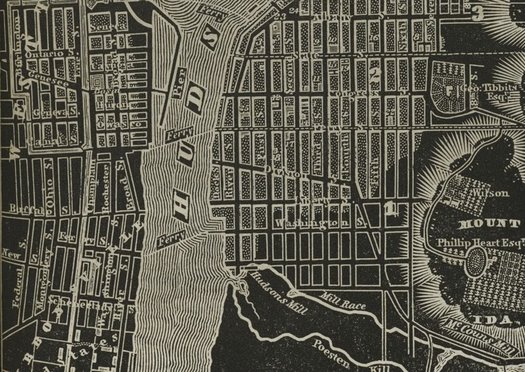
Check out this beautiful old atlas of New York State, originally published in 1838. It was the creation of the cartographer David H. Burr. And it's available online thanks to the digital collection of the New York Public Library.
There's something about the high-contrast black-and-white color scheme and the way various features -- like the Hudson River -- are rendered that we really like.
The atlas includes maps for counties around the states. But the parts that were most interesting to us were the old city maps. We pulled a few -- for Albany, Troy, and Hudson -- and there are after the jump in large format, along with a few quick notes.
Albany, sliding between past and present
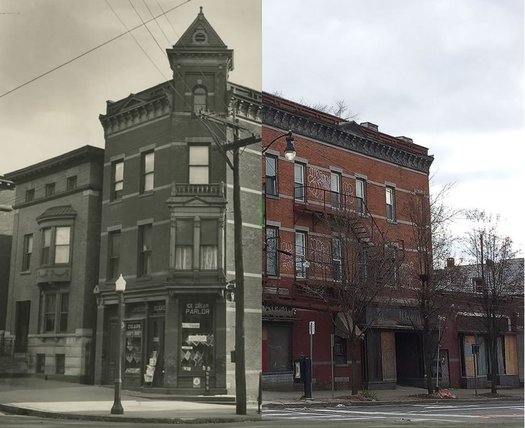
It's fun to look at old photos from around the Capital Region and match them up with the present-day site to see what's changed -- and what hasn't.
So here are a handful of "sliding" past and present photos from a few spots around Albany...
Minnie Clark Bolster's personal Saratoga museum
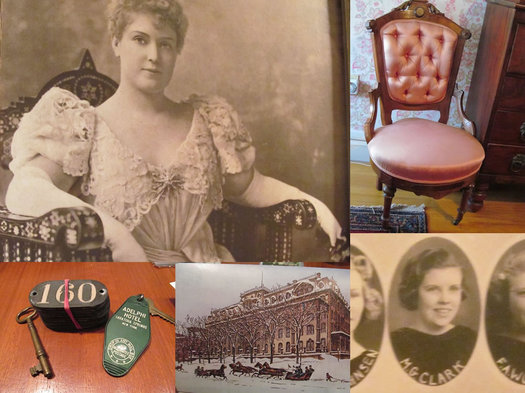
More than 50 years ago in a Vermont antique shop, Minnie Clark Bolster asked her husband if he thought $3 was too much to spend on an old Saratoga bottle. Years later she would sell that bottle for $75. But more important than the profit, that day marked the beginning of an incredible collection of Saratoga history.
The collection came to include chairs, tables, and skeleton keys from the famous Saratoga hotels; photos by her brother-in-law, George Bolster; postcards; books; paintings; stories; and more. It takes up much of her home.
Bolster herself is a treasure trove of Saratoga history. Born in the Spa City in 1920, she's a 1938 graduate of Saratoga Springs High School who worked for lawyers and judges in the city for most of her life. She's written three books and is working on a fourth book about the land that is now Saratoga Spa State Park and the people who lived there.
Bolster's now 95 years old, and she's started parting with her collection, selling it piece by piece to friends, collectors ,and antique dealers in an effort to ensure these nuggets of local history have a good home.
Last week Minnie gave us a tour of what is left of the collection -- which is a lot. Here's a look...
"You maintain your empire in spite of all my efforts..."
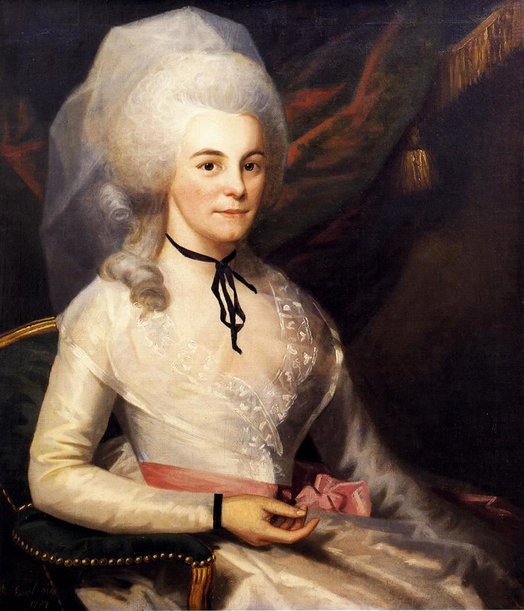
A portrait of Elizabeth Schuyler Hamilton, painted in 1786 by Ralph Earl. / via Wikipedia
This historical bit got mentioned in passing last week in a different post, but we thought it was worth highlighting again today because of the date: Alexander Hamilton not only spent time in Albany, but he married Elizabeth Schuyler at the Schuyler Mansion in south Albany on December 14, 1780.
The National Archives has a handful of letters Hamilton sent to Elizabeth Schuyler -- he calls her Betsey -- leading up to the wedding. Here's a clip from a letter sent October 5, 1780 from near the New York/New Jersey border as Hamilton was making his way north:
I have told you, and I told you truly that I love you too much. You engross my thoughts too intirely to allow me to think of any thing else--you not only employ my mind all day; but you intrude upon my sleep. I meet you in every dream--and when I wake I cannot close my eyes again for ruminating on your sweetness. 'Tis a pretty story indeed that I am to be thus monopolized, by a little nut-brown maid like you--and from a statesman and a soldier metamorphosed into a puny lover. I believe in my soul you are an inchantress; but I have tried in vain, if not to break, at least, to weaken the charm--you maintain your empire in spite of all my efforts--and after every new one, I make to withdraw myself from my allegiance my partial heart still returns and clings to you with increased attachment. To drop figure my lovely girl you become dearer to me every moment. I am more and more unhappy and impatient under the hard necessity that keeps me from you, and yet the prospect lengthens as I advance. ...
The next paragraph might be considered NSFP -- not safe for the parlor:
The long view
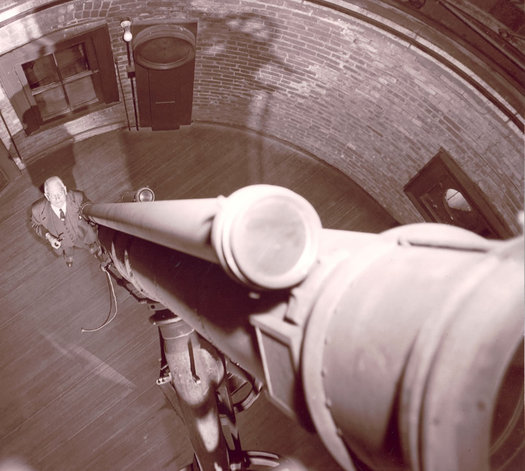
Then-Dudley Observatory director Benjamin Boss with the Pruyn Brashear Equitorial telescope around 1930. / photo courtesy of the Dudley Observatory
The Dudley Observatory recently started a blog -- Counting Stars -- to highlight both its long history and collection, along with what's currently happening there. The photo is above from a recent post about the observatory's Pruyn Brashear Equitorial refracting telescope, which the observatory has owned since 1893 when it was located on South Lake Ave in Albany -- and will again put into service when the Dudley builds its new observatory in Schenectady.
A quick clip:
The Pruyn was named after Robert Hewson Pruyn. The Pruyn (usually pronounced "prine") family is one of the great old dutch families that make up so much of Albany history. Robert H. Pruyn may be the most famous member, serving as the Minister to Japan during the American Civil War. He was also, naturally, a member of the Dudley board.
The telescope was named in his memory by his two sons, Robert C. and Clarence L. Pruyn. These two followed in their father's footsteps as lawyers and politicians, but they're probably most famous as businessmen running the Embossing Company, one of America's most successful manufacturers of puzzle, toys and games during the late 19th and early 20th century. Which means that the Pruyn was purchased with board game money, so to speak.
So many institutions around the Capital Region have long, rich histories -- and probably have photos, documents, pieces, and whatnot from that history. It's good see another one making some of that material more available to the public.
See also: Carl's posts about the history of the Dudley Observatory over at Hoxsie.
In search of a vacation without aggravation
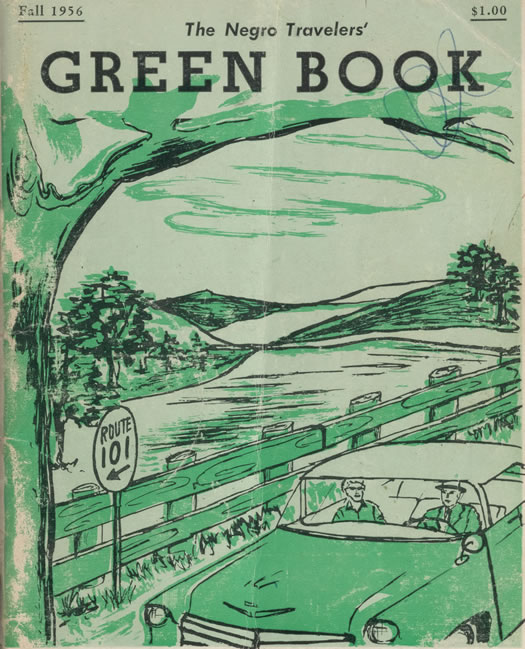
From the cover of the 1956 edition. / via New York Public Library
This year the New York Public Library digitized editions of The Negro Motorist Green Book, which aimed to guide African-American travelers to establishments and accommodations that would serve them during the Jim Crow era. From an introduction in the 1963 version of the book:
Most people who 'go on holiday,' as they say in England, the Caribbean and other places where the accent is English, are seeking someplace that offers them rest, relaxation and a refuge from the cares and worries of the work-a-day world.
The Negro traveler, to whom the Travelers Green Book has dedicated its efforts since 1936, is no exception. He too, is looking for "Vacation Without Aggravation."
Of course, this is no surprise. The National Association for the Advancement of Colored People, the National Urban League, the Congress on Racial Equality, the Students Non-Violence Committee, the Southern Christian Leadership Association and other groups fighting for minority rights make it very clear that the Negro is only demanding what everyone else wants... what is guaranteed all citizens by the Constitution of the United States.
This article over at Vox by Dara Linda provides context and background for the guide's creation, and illustrates some of the difficulties African Americans faced while on the road during the period.
Albany
We were curious if there were any Albany establishments mentioned in the Green Book. So we scanned through the various editions online and found a handful. We're looking forward to doing some more research on some of the establishments and people. But we figured we'd post the list and what we've found so far now because we're betting there are some other local history nerds who might be able to provide some leads and insight...
Echoes from the Neighborhood that Disappeared and The Great Ledge: Exploring Thacher
A follow-up to The Neighborhood that Disappeared -- Mary Paley's documentary about the area taken for the Empire State Plaza -- will air this Tuesday, December 1 on WMHT at 7:30 pm. Blurbage for Echoes from the Neighborhood that Disappeared:
"Echoes" is the companion film to "The Neighborhood That Disappeared," an examination and celebration of Albany, New York's multi-ethnic South End enclave, which was demolished for the construction of the Empire State Plaza in the early 1960s.
"Echoes" continues the story of the South End's vibrant Italian immigrant community by exploring the lives and culture of their children and grandchildren, many of whom were displaced by the demolition of 98 residential acres in the heart of the capital city. These engaging residents reminisce, sometimes sadly, often humorously, on the joys and cohesion of their close-knit upbringing, as well as the challenges of assimilation.
The doc will re-air at multiple times over the next week (check the first link above). The Neighborhood That Disappeared will also air Tuesday night, at 9 pm.
Earlier on AOA: Who lived in the neighborhood knocked down for the Empire State Plaza?
The Great Ledge: Exploring Thacher
Also premiering this week on WMHT: The Great Ledge: Exploring Thacher. Blurbage:
This documentary is filmed in ultra-high definition. Footage is edited with additional historic and scientific interviews, recreational footage, and archival images from both the Albany Institute of History and Art and the Library of Congress, to create a breathtaking and informative program for viewers. The documentary explores the wonder of Thacher Park from never before seen perspectives and ask challenging questions about land use, conservation and historic preservation.
It's set to air Wednesday, December 2 at 7:30 pm.
Another view of the ESP that didn't quite happen

We were picking through the Albany Institute's online collection the other day and came across a handful of Empire State Plaza design renderings that we don't think we had seen before. And maybe you haven't, either.
So, because it's interesting to wonder what if, let's have a look.
Baking that Albany Cake

Same recipe, two different interpretations.
Last week we mentioned that 1828 recipe for "Albany Cake" (thanks, Pamela!), which prompted a a discussion about some of the quirks of the recipe and what the cake might be like.
Well, Greg Kern -- the pastry chef at Peck's Arcade in Troy -- saw the recipe and decided to actually try it.
So we thought it'd be fun to talk with him about how it worked out...
What did Albany eat in the 18th century?
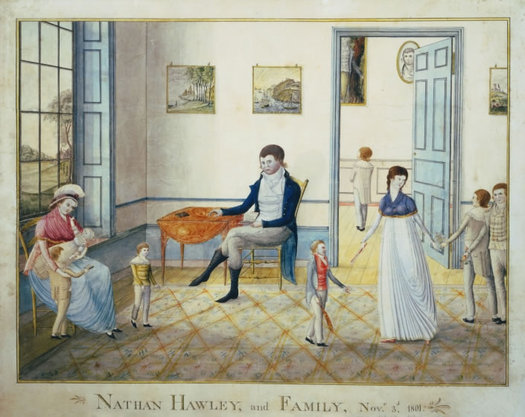
This scene depicts the Hawley Family of Albany in 1801 -- it was painted William Wilkie and is part of the collection of the Albany Institute of History and Art.
Following Food week takes a turn now for the old-school...
We're coming up on the end-of-year holidays and many of us will be serving a lot of the same holiday foods -- turkey, ham, sweet potatoes, stuffing. Sure, we all have our own versions of holiday foods, but there are plenty of similarities.
So what about people who lived here, say, 200 years ago? What did they serve at their holiday tables?
Sara Evenson, an MA candidate at Virginia Tech, has been researching 18th century food history -- and she's particularly interested in Albany cuisine from that era. She'll be giving a talk about some of her research at the State Museum Friday afternoon as part of the Researching New York conference.
We chatted with Evenson about how 18th century food here differed from what we eat now, and about what would have been on holiday tables back then.
Albany Cake
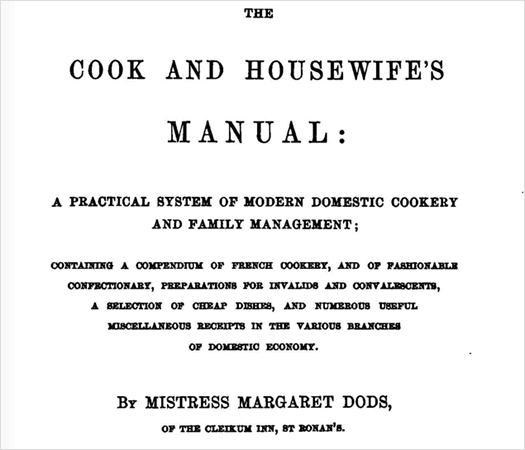
As part the Following Food week drawing, Pamela's pick for a food to represent the Capital Region intrigued us: Albany Cakes (or Dutch Pudding).
The dessert is mentioned in the The Cook and Housewife's Manual: A Practical System of Modern Domestic Cookery and Family Management by Margaret Dods, which was first published in 1828.
Going through old cookbooks is kind of like digging up old magic -- the recipes (spells) often contain ingredients and methods that now seem rather mysterious.
So, we figured it be fun to look up the recipe.
Glimpses of downtown Troy almost a century ago

Check out the photo above -- it's from a parade in downtown Troy in 1917. That intersection is River Street and 4th Street. It looks rather different today.
The photo is from a collection of materials in the NYS Archives about Troy during WWI. We were tipped off to the collection by Christopher, who noticed an interesting photo of the Quackenbush Building at night and sent it along to us. (Thanks, Christopher!) The collection provides a few glimpses of downtown Troy as it was roughly a century ago.
Here are few more photos that caught our eye...
That new Saratoga quarter
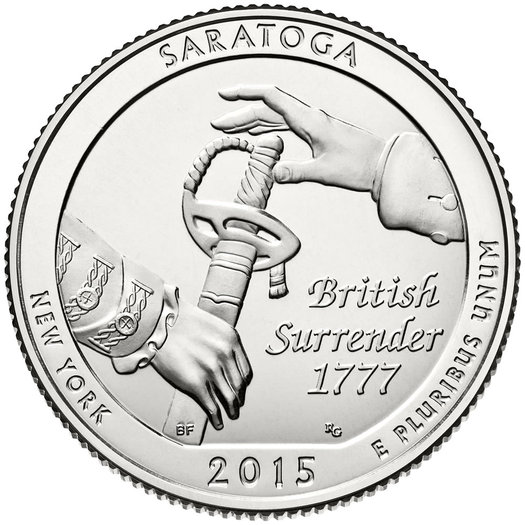
The US Mint released a new quarter today that commemorates the Saratoga National Historical Park. Press release blurbage:
The quarter's reverse (tails side) depicts a close-up of the moment British General John Burgoyne surrendered his sword to American General Horatio Gates, a turning point many believe marked the 'beginning of the end of the American Revolutionary War.' Inscriptions are "BRITISH SURRENDER 1777," "SARATOGA," "NEW YORK," "2015," and "E PLURIBUS UNUM."
The quarter is 30th release of an "America the Beautiful Quarters" series, which is honoring 56 national parks. Five new quarters in the series are released each year.
Here are previous quarters in the series. The Saratoga one is pretty tame compared to some of the other scenes (Volcanoes! Geysers! Repelling from Thomas Jefferson's face!).
Earlier on AOA: Visiting Saratoga National Historic Park
image: US Mint
Native Peoples of Hudson Valley at the State Museum
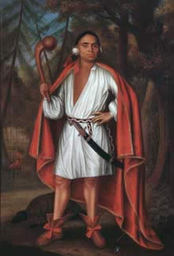 This place has a long history -- Henry Hudson sailed up the river in 1609. But the history of this place extends before that, of course, with the many Native Americans who lived here. So this event next week might be an interesting way to learn a little bit more about that history.
This place has a long history -- Henry Hudson sailed up the river in 1609. But the history of this place extends before that, of course, with the many Native Americans who lived here. So this event next week might be an interesting way to learn a little bit more about that history.
From the blurbage for "Native Peoples of Hudson Valley" at the State Museum on Wednesday, November 18:
At this time of year people often refer to the role of Native Americans in the founding of what became the United States of America. These origin stories, however, combine fact and myth. come learn about the actual history of Native peoples in the Hudson Valley from Archaelogist Michael Lucas and Jon Lothrop at a special [Albany] City Hall Rotunda Event at the Nw York State Museum. All Museum galliers will be open to the public until 7:00 p.m. following the presentation and Michael and Jon will be available in exhibit areas to answer visitors' questions.
The event starts at 5 pm (it looks like the talk starts at 5:30 pm), and it's free.
That portrait on the right is of the Mahican chief Etow Oh Koam -- it was painted during a visit he and three Mohawk leaders made to England in 1710.
Henry Johnson's Medal of Honor
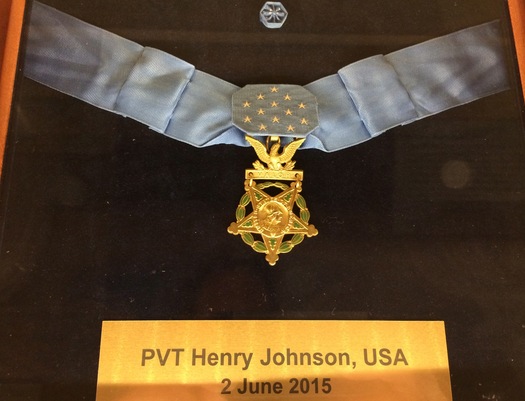
Were by the Capitol today so we took a moment to stop in to see Henry Johnson's Medal of Honor, which was posthumously awarded to the Albany WWI hero earlier this year after a long effort.
The small display in the Capitol's War Room includes a few other items, among them the sort of helmet and knife that Johnson had the night he bravely fought to rescue a member of his unit during an attack by a crew of approximately 30 German soldiers. There was something about seeing these items -- the knife, especially -- that reinforced for us how terrifying the whole episode must have been.
It's notable that the exhibit doesn't skip over what happened to Johnson when he returned from the war. He was briefly hailed as a hero, but once he spoke out about the discrimination he and other African-American soldiers had faced, the government basically dropped him. He didn't end up getting the benefits he was owed. And the official recognition of his bravery would be much too long in arriving.
The Capitol: If you've never been to the Capitol -- or haven't been in years -- it's worth stopping in if you have the chance. If do so now, you'll be able to see the Henry Johnson exhibit. And you'll also be able to check out the all renovations that were completed in recent years, browse through the Hall of Governors, and maybe take a tour.
Albany's first high school

A bit more handsome than the current building.
Because of all the talk about the vote over what to do with the current Albany High School, we thought we pull out some photos of the city's first high school building. Here's a larger version, along with a different view.
The building was constructed on Eagle Street, roughly where the Albany County Court House now stands, in 1876. And it was designed by the Albany-famous architect Edward Ogden (he also designed the Kenmore Hotel on Pearl Street, and you might notice some similarities). Carl has the backstory of the building over at Hoxsie.
By the early 1900s, with enrollments in the 700-800 student range -- there was a push to replace it for reasons that will sound familiar. Again, Carl has the backstory at Hoxsie -- here's a clip from a 1909 resolution calling for a new building:
"Whereas, In its present overcrowded condition, it presents entirely inadequate facilities for the healthful study of the academic, commercial and industrial arts, lacking proper facilities in study hall and recitation rooms, cloak rooms and hall space, and has no adequate gymnasium or provision for lunch rooms, and, in its crowded condition, with its auditorium on the upper floor and by its intersecting and narrow halls, is a constant menace to the health and life of the pupils attending thereat ...
And it was replaced in 1913 by a new high school building on Lake Avenue between Western and Washington. That building is still there -- after the current high school was built it served as the Philip Schuyler Elementary School, and in recent years was sold to UAlbany.
"Surely the water of this canal must be the most fertilizing of all fluids..."

This illustration of the Erie Canal's intersection with the Hudson River at Albany is clipped from from an 1824 document -- "A geological and agricultural survey of the district adjoining the Erie canal in the state of New York" -- via the Library of Congress. (Here's a larger version.) The canal entered the Hudson River at a spot in Albany near where the Livingston Ave Bridge is now.
"I was inclined to be poetical about the Grand Canal," wrote Nathaniel Hawthorne.
It was this week 190 years ago that the Erie Canal was officially completed. The waterway played a key role in the history not just of the Albany area, where it connected with the Hudson, but all along its path from here to Buffalo.
Anyway, the anniversary of the opening prompted us to poke around a bit and we came across this 1835 account of traveling canal by packet boat, written by Nathaniel Hawthorne for New England Magazine. A clip from the beginning:
In my imagination De Witt Clinton was an enchanter, who had waved his magic wand from the Hudson to Lake Erie and united them by a watery highway, crowded with the commerce of two worlds,till then inaccessible to each other. This simple and mighty conception had conferred inestimable value on spots which Nature seemed to have thrown carelessly into the great body of the earth, without foreseeing that they could ever attain importance. I pictured the surprise of the sleepy Dutchmen when the new river first glittered by their doors, bringing them hard cash or foreign commodities in exchange for their hitherto unmarketable produce. Surely the water of this canal must be the most fertilizing of all fluids; for it causes towns, with their masses of brick and stone, their churches and theatres, their business and hubbub, their luxury and refinement, their gay dames and polished citizens, to spring up, till in time the wondrous stream may flow between two continuous lines of buildings, through one thronged street, from Buffalo to Albany.
Hawthorne sets out to travel the entire length of the canal, but ends up getting left behind during the night outside Syracuse at an eerie, forested scene. (Because Hawthorne.)
But that's not before he flirts with a Swiss woman, notes the "overpowering tedium" of the journey, laughs at a guy who gets brained by a bridge, and falls out of his bunk.
The present augmented with clues from the past
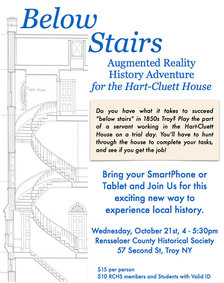 This could be interesting: The Rensselaer County Historical Society has an event at the Hart-Cluett House this week in which you'll be able to explore the historic house using an augmented reality app. Blurbage:
This could be interesting: The Rensselaer County Historical Society has an event at the Hart-Cluett House this week in which you'll be able to explore the historic house using an augmented reality app. Blurbage:
Do you have what it takes to succeed "below stairs" in 1850s Troy? Play the part of a servant working in the Hart-Cluett House on a trial day. You'll have to hunt through the house to complete your tasks, and see if you get the job.
As we understand it, participants will need to download an app onto their mobile or tablet. And then as the explore the house, clues will be revealed in an augmented reality view -- basically images or other information laid over the physical world -- through the app.
The event is the result of a collaboration between RCHS and researchers connected to the Emergent Reality Lab at RPI. (Other efforts at the lab have included building a virtual reality setting for teaching Mandarin.)
"Below Stairs" is Wednesday, October 21 from 4-5:30 pm. It's $15 per person / $10 students.
Effort to buy, preserve, and re-display the South End Tavern signs

The signs back in 2010, when the tavern was still open.
Sometimes a building or sign is in the same place for so long that it starts to feel like a part of the landscape, like it was always there.
It's probably fair to say the signs for the former South End Tavern in Troy are like that for South Troy. And now the landscape is changing because the signs came down today. [@willwaldron]
The Rensselaer County Historical Society is raising $8,500 to purchase the signs after historian Kathryn Sheehan noticed they were for sale as a part of a liquidation sale at the property. It's collecting donations at that link.
As you'd expect, RCHS wants to keep the signs in Troy. (We hear from RCHS that apparently there was some interest from a buyer in Schenectady.) The org also wants to use the money to clean, restore, and display the signs.
The South End Tavern first opened in 1934 and was operated by the Burke family. The explanation for the "Ladies Entrance" sign from the tavern's website:
In the 1930s, a bar was considered to be "men's territory." Since Marty wanted to be able to accommodate female customers, he bought the building next door and converted it into a restaurant. To separate the bar from the restaurant, he put up the now-famous Ladies Entrance sign. Marty passed away in 1956. His son, Marty (Bud), continued running the business as his father had done. Things ran much the same for many years until Women's Lib hit the tavern in the early 1970s. Bud was ordered to remove the Ladies Entrance sign and to allow women to be served at the bar. However, the Troy City Council stepped in; they passed a resolution declaring the South End Tavern an historical site. This let him keep the controversial sign, but women were now permitted in the bar as well as in the restaurant.
The tavern closed in closed 2013, the owner citing rising taxes and costs. [Troy Record]
Earlier on AOA: A bunch of years ago Jess took a few moments to admire some of the old-school signs around the Capital Region, including the South End Tavern signs.
Distilling the next life for Albany's oldest building

As the building currently stands.
In a life almost three centuries long, you're going to cycle through a few different careers.
So it is with the Van Ostrande-Radliff House -- AKA, Albany's oldest building -- which has served as a townhouse, a wax factory, and an equipment storage space (among other uses) over its 287-year-old lifetime.
And now there's a plan for the Van Ostrande-Radliff House's next career: as a distillery.
When New York was hopped up
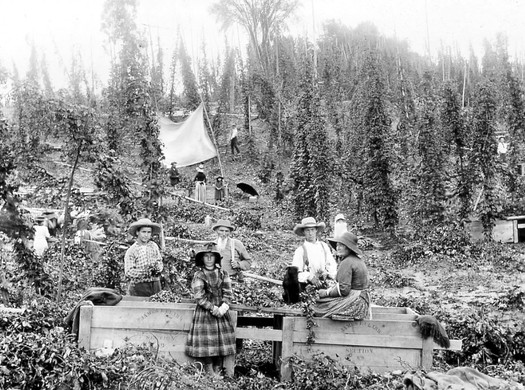
The photo above is from the NYS Archives, and it's from a hop farm near Cooperstown around 1900.
Hop farm? You know it. From the accompany description on the archives site:
In Ostego County in the town of Madison, New Yorker James D. Coolidge planted the first hops yards in 1808. His commercial opportunity came fourteen years later when blight, insects, and unfavorable weather decimated crops in England. This increased the demand for New York's hops in both national and international markets.
The opening of the Erie Canal in 1825 and the influx of German immigrants during the first half of the nineteenth century also increased the domestic demand for hops. In 1850, New York shipped 750,000 pounds of hops to British markets. In 1880, all but sixteen New York counties were growing hops. Ostego, Madison, Herkimer, Schoharie, Chenago, Oneida, and Montgomery Counties were the leading producers of hops, with Ostego County producing more hops than any other county in the United States.
Disease and Prohibition pretty much killed off the hop growing industry in New York, and today most of the hops grown in the country are produced out in the Pacific Northwest.
But the crop is making a comeback here, a rise prompted in part by the state's farm brewery license, which requires breweries operating under the license to use a certain percentage of New York-grown ingredients. Casey wrote about the rebirth of the New York hop industry a few years back.
Among the local farms that are part of the re-hopped New York is Indian Ladder Farms in Altamont, which is growing a variety of hops. (You might remember the Indian Ladder Farms IPA at the Pump Station last year.) ILF recently finished this year's hop harvest and posted some photos of the process on its Facebook page.
photo: NYS Archives
That way, but with a different name
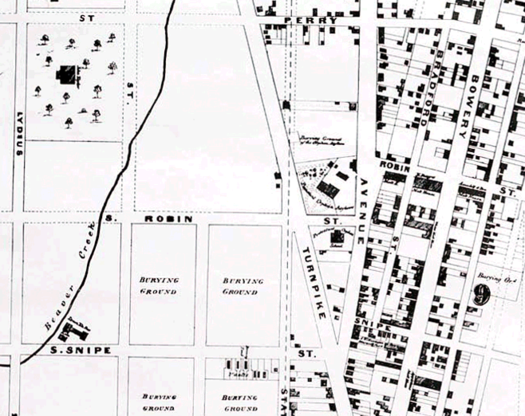
Lydius? Snipe? Bowery? / 1857 E. Jacob map of Albany via Wikipedia
Albany is old. Like, really old. (Well, as far as American cities go.) And so there are a lot of old maps of Albany.
Of course, one of the interesting things about old maps is seeing what's changed in the city in the time since. And we always find it fun to pick out street names that have changed.
So, here are a handful of notable Albany streets that changed names over the centuries...
The Capital Region in 50 objects
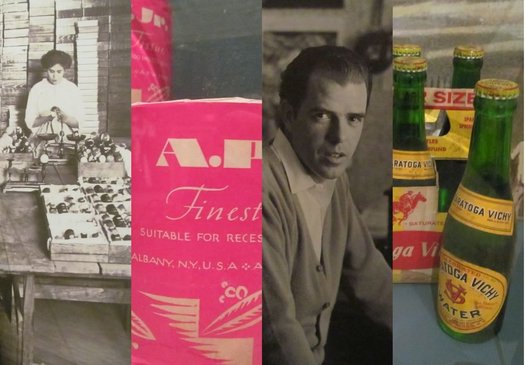
What do Nipper, a video game, a steel butterfly and a chamber pot have in common? They're all part of a collection of 50 objects that help tell the story of this area.
The Capital Region in 50 Objects opens on Friday at the Albany Institute of History and Art. The exhibit is inspired by the British Museum's History of the World in 100 Objects and the New York Times' History of New York in 50 objects. The exhibit opens on Friday with a reception at 5:30 pm, and will remain open through April.
Chief curator Doug McCombs says the selection process took about three years. First they surveyed the region's museums and cultural institutions to see what was in the collections that might be appropriate. Next they took public polls through the Times Union to help determine which topics people wanted to see addressed. Finally, they worked with an advisory committee to select 50 subjects and items that would represent those subjects. Among the topics highlighted: the Empire State Plaza, Albany Ale, industry, The Anti-Rent Wars, the Underground Railroad, literature, food, entertainment and broadcasting.
Each object is displayed with a background image that helps to tell its story -- and the images are just as interesting, in some cases even more interesting -- than the objects themselves.
Here's a sneak peek at what you'll see.
Peeling apples
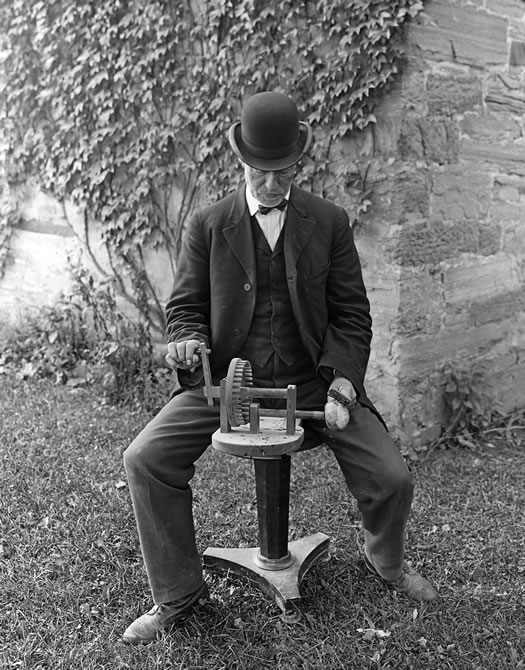
We stumbled across this image -- of a man using a device to peel an apple -- in the digital collections of the NYS Archives and it made us smile. It's like Magritte got hungry and decided it was time to eat the apple.
From the accompanying description:
New York. Schoharie. Old Fort. Man operating Apple parer apparatus. Stone structure and vine foliage in background, n.d.
We're guessing "Old Fort" is The Old Stone Fort. The image is from a collection of "lantern slides" that spanned 1856-1939. (So, maybe this is from the late 19th century.)
By the way: Here's more about those lantern slides, from the NYS Archives:
Lantern slides were compiled, mostly between 1911 and 1939, as instructional aids for the public school curriculum. More than 20,000 unique images dating from 1856-1939 document a wide variety of subjects, including New York State, North American and world geography, history, natural sciences, fine arts, trades, industries, education, and schools. The photographs were reproduced in the form of lantern slides for use in classrooms. Thousands of slides were produced by the Division of Visual Instruction and sets of slides were loaned to schools throughout the State from 1886 to 1939.
The digital collection online includes a bunch of the slides. Here's another apple-related image -- piles and piles of apples in Niagara County in 1911.
photo: NYS Archives
"The Mid-Century Stepchild"
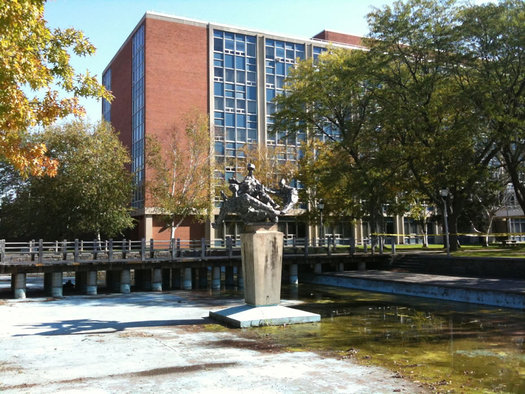
You know that big midcentury architectural project in Albany -- no, not that one, the other one -- the Harriman State Office Campus. Historic Albany Foundation has a tour lined up of the campus for October as part of Docomomo* US Tour Day. Blurbage:
Tour the much lesser-known state office project built at the western edge of Albany, the W. Averell Harriman State Office Campus. Governor Harriman began this office park in the 1950's to relieve congestion in the state offices on and around Capitol Hill. Nelson Rockefeller took on the development of the campus once he succeeded Harriman, named it for Harriman, and then proceeded to make it a suburban South Mall, complete with reflecting pools and modern artwork from George Rickey, and others. Harriman Campus is comprised of over 15 extant buildings built between 1958 and 2013 by a variety of architects. The remaining 13 mid-century modern buildings bear the influence of the modern masters, one in particular - universal spaces, buildings on stilts, a building that is, in its detailing, a copy of a Philip Johnson homage to Mies...and on and on.
The tour is Saturday, October 10 from noon-2 pm. It's $10 and reservations are required. (HAF's tours often fill up -- so grabbing a spot earlier rather than later is a good idea.)
We walk the campus fairly often with the office dog in the evenings and it's remarkably park-like. But, like the Empire State Plaza, it's oddly disconnected from its surroundings -- in this case not by fortress walls, but a moat of ringed roads.
* "Docomomo stands for the documentation and conservation of buildings, sites and neighborhoods of the modern movement."
"[I]n Albany, where I am obliged to Quarter more Troops than the People can support, or reasonably ought"
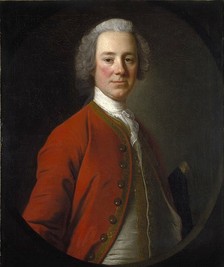 This is an interesting bit of local history that we didn't know: During the French and Indian War the British army made extensive use of Albany homes to quarter soldiers -- much to the dismay of Albany residents -- and that experience played a significant role in fomenting local support for the American revolution.
This is an interesting bit of local history that we didn't know: During the French and Indian War the British army made extensive use of Albany homes to quarter soldiers -- much to the dismay of Albany residents -- and that experience played a significant role in fomenting local support for the American revolution.
From an article by Elizabeth Covart in the Journal of the American Revolution:
Between 1754 and 1760, thousands of British soldiers, colonial officials, merchants, and camp followers made their way to and through Albany. The war proved to be both a profitable and an antagonistic experience for the Albanians. Albanians profited from the war both financially and via the opportunity to extend their patronage networks. Merchants, tavern keepers, artisans, and laborers furnished their visitors with supplies, housing, and services. Elites rubbed elbows with aristocratic British officers. The Albanians had expected to profit from the war, but they had not anticipated the adversarial politics of identity that the war brought out. Although the Albanians claimed to be Britons, their British guests recognized them only as foreigners, Dutch colonials. The British Army used this non-British view of the Albanians to justify their quartering practices. Many Albanians believed the army's quartering practices had violated their constitutional rights as Britons and they reflected on this when it came time to choose their loyalties during the American Revolution. The Albanians' disagreeable experiences with the British Army during the French and Indian War predisposed the community to side with, or at least not oppose, the Patriot cause.
After the war, the city essentially tied to boot the British army from its land -- and the British didn't agree. The pent up frustration resulted in protests and riots. And by the time the revolution came along, there was a campaign in Albany to root out loyalists.
By the way: The British officer who oversaw the the quartering of troops in Albany was John Campbell, the 4th Earl of Loudoun (that's him on the right). Name sound familiar? Yep, it is from his name that the hamlet of Loudonville in Colonie is said to have gotten its name. Why him? Good question -- here's an article rolling around the question.
[via @paulalemire]
portrait from National Galleries Scotland via Wikipedia
When bikes weren't just something on the side

A 1900 map of "side paths" -- bike paths -- around the greater Albany area.
That recent post about the "great popularity of cycling" in Saratoga Springs around the early 1900s and the all the discussion of late about building protected bike lanes in Albany got us looking into the history of bike paths. And, as so often is the case, the past seems like a completely different place.
For example: There was once a law in New York State that allowed a group of just 50 bicyclists to petition for the formation of a commission that would be tasked with building bike lanes.
"Saratoga is the wickedest spot on earth."

So reported famous journalist Nellie Bly after visiting in the August of 1894 for the New York World in order to report on the scene at the Saratoga Race Course and the (then) village's various hotels and gambling establishments.
"Crime is holding a convention there and vice is enjoying a festival such as it never dared approach before," Bly wrote.
She described Saratoga as "gambling mad," with men, women, and children placing betting the horses at the track, and money flowing freely at the various casinos. She also interviewed Cale Mitchell, the village president and proprietor of Saratoga's "most notorious gaming rooms." A clip:
"The citizens of Saratoga, recognizing the great popularity of cycling..."

This photo was part of a section not about cycling, but about the Saratoag floral parades. "No single event at Saratoga can perhaps compete with the grand floral parade given annually in September."
While flipping through the 1900 Saratoga Illustrated guide book for background on that ostrich farm, this photo caught our eye because it's just sort of goofy.
But we thought this nearby passage about bicycling in turn-of-the-century Saratoga Springs was interesting -- both because of the glimpse it provides of cycling before the advent of the mass car culture (production of the Model T would start in 1908):
The citizens of Saratoga, recognizing the great popularity of cycling, and the demands of so many visitors to Saratoga for proper facilities for this healthful and delightful exercise, have prepared several cycle paths especially set apart for the use of bicyclers. At considerable expense several delightful paths have been laid out, running from Saratoga Springs to various points in its vicinity. Recently a cycle path has been constructed along the side of the carriage road from Saratoga Springs to the several geyser springs. Another has been constructed along the south side of Union Avenue from Saratoga Springs to Saratoga Lake, making a route of eight miles for the round trip. Another very important path is from the village of Saratoga Springs to Glens Falls and return, making a round trip of forty miles.
After the jump is a set of cycle routes listed in the guide book -- it indicates there were cycle paths between Albany and Saratoga.
There's another photo/illustration in the book that depicts two very large rows of bicycles on Broadway (the image quality isn't great -- it's on pdf p. 29). And the descriptions of the some the hotels mention they provided bicycle storage rooms for guests.
Anyway, the guide book -- which is available as a pdf from archive.org -- is full of illustrations and descriptions as Saratoga Springs appeared around that time, including many of the grand hotels and other tourist attractions.
That time Saratoga had an ostrich farm

As one does in Saratoga.
Albany Archives pointed out today that Saratoga Springs had an ostrich farm back around the beginning of the 20th century. And something about this photo of people riding in an ostrich-drawn cart made us want to know more.
So, from Saratoga Illustrated: The Visitor's Guide of Saratoga Springs (1900):
on Geyser Avenue, about a half mile from the village, is one of the entertaining sights of Saratoga and is a unique feature. Here in an enclosure of about two acres are exhibited some of the finest specimens of African ostriches, Chinese golden pheasants, and English pheasants that are to be found in any country. Birds of all ages are here to be seen with various developments of plumage--from the slender pin feathers of the baby birds a few days old to luxuriant and brilliant plumages of the full-grown ostrich weighing 250 to 300 pounds each. Most of the ostriches have been brought to Saratoga from the celebrated ostrich farms in Florida, Arizona, and California, but some of the wee birds have first seen the light in the buoyant Saratoga atmosphere. Each pair of breeding birds is kept in a small corral of about 50 by 150 feet, and are fed on clover, hay, corn, oats, barley, etc. The younger birds roam in troops in larger enclosures, and a group of birds running with their wings out- spread, alarmed, it may be, at some unusual sight, is a most beautiful spectacle. The birds are all named, and some of the breeding birds bear the names of such distinguished magnates as President McKinley, Queen Victoria, Mark Hanna, Joe Wheeler, Napoleon and Josephine, Admiral Dewey and Miss Manila, etc.
Like a museum of millinery
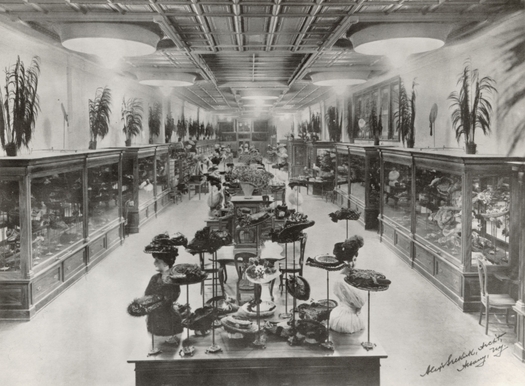
We were thinking about retail in downtown Albany last week when this photo popped up in one of the streams from the Albany Institute of History and Art -- it's a photo of the hat section at the women's clothing store Muhlfelder's around 1905.
There's something about the way the store is staged here, like it's a museum of millinery. It must have been a fun place to browse.
Muhlfelder's was at North Pearl Street and Steuben Street in downtown Albany. The store was founded by Jonas Muhlfelder, who emigrated from Germany to the United States as a young man in the late 1800s and ended up working in a millinery store in Albany. At the age of 21 he opened a women's clothing store in Pittsfield, Massachusetts, with locations following in Troy, Albany (in 1900), and New Haven, Connecticut. (The company would later add a store at the then-relatively new Stuyvesant Plaza in 1965.) He was apparently successful enough that he could retire at age 55. [The History of New York State Biographies, Part 20] [Knickerbocker News/Fulton History]
Over at the Albany Muskrat, there's a great post chronicling Muhlfelder's newspaper ads from the 1910s through the 1960s. It doubles as a tour through women's fashion of the first half of the 20th century. (Julie notes that Muhlfelder's closed in the early 1970s.)
Image: "Muhfelder's Hats 41 North Pearl Street and Steuben Street," Albany Institute of History and Art, from the collection of Morris Gerber
That time it was 104 degrees in Albany

The sun on Monday. (As it happens, it's the same sun as in 1911. Long lasting that star is.)
Because it's sure to come up this week as we approach of string of forecasted 90something-degree days: The highest daily temperature on record for the Albany area is 104 -- recorded on July 4, 1911. [NWS Albany]
That record temp was part of a massive heatwave.
Fun facts about Saratoga Race Course
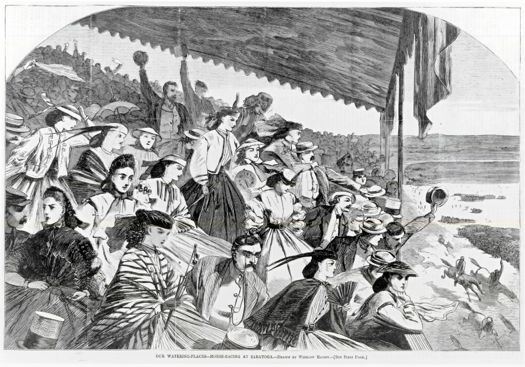
Winslow Homer's Our Watering Place -- an 1865 depiction of racing at Saratoga
The Saratoga Meet begins tomorrow, and odds are you're going to make a trip or two to the ponies this summer or you know someone who will. There's plenty of time between races to take in the sites or pick your trifecta in the next race, but in case you're looking for a way to entertain your track companions, here are a pocketful of fun facts to pull out over drinks in the clubhouse or at the picnic tables at the paddock.
Got any you want to add? Drop them in the comments and make us all smarter.
Ulysses S. Grant and Mount McGregor

Ulysses S. Grant at his McGregor Mountain cottage
130 years ago today Ulysses S. Grant, the 18th president of the United States, died at his cottage near the top of Mount McGregor in WiltonMoreau, just north of Saratoga.
Grant's role in history is being re-examined by some historians, who now eschew the image of the Civil War general turned Commander -in-chief as a drinker whose success was based largely on luck, for one of a champion of African Americans. In a piece today in the Huffington Post on why historians are changing their tune about GrantJohn F. Marszalek -- a historian and executive director of the Ulysses S. Grant Association says "You have to go almost to Lyndon Johnson to find a president who tried to do as much to ensure black people found freedom."
Grant spent his last days in the cottage on Mount McGregor. The cottage, now a state historic site, is preserved pretty much they way it was when he left it -- books, bedding and all-- and it is open to the public for tour. On Saturday the keepers of the cottage will mark the anniversary of Grant's passing with a Remembrance Day ceremony.
All correct, Martin Van Buren
The short video embedded above -- narrated by linguist Arika Okrent and illustrated by Sean O'Neill for Mental Floss -- details the "lexicographer-approved" version of the history of the term "OK." Which, as you might know, involves Kinderhook's favorite son, Martin Van Buren.
Earlier on AOA: Portraits of Martin Van Buren, in honor of his birthday
Albany I Spy 2015, game on
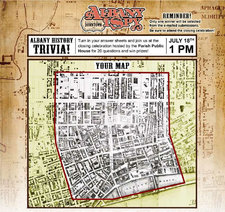 The clue sheet and map for this year's Albany I Spy, the popular photo scavenger hunt from Albany Archives and the Albany County Convention & Visitors Bureau, is now posted online.
The clue sheet and map for this year's Albany I Spy, the popular photo scavenger hunt from Albany Archives and the Albany County Convention & Visitors Bureau, is now posted online.
Here's how it works (emphasis added):
Step 1: Download the form
This is your Master Albany I Spy Clue Sheet. Sounds important, right? It is! Be sure to write your name and contact information where indicated because this is how we will contact the winners.
Step 2: Set your course
You'll use the clues on this form to identify the mystery landmarks. Then, set your course each day - or wait for one spectacular day - to head to downtown Albany to spy and write the name of the landmark on your Master Clue Sheet.
Step 3: Get extra clues
Stumped? Don't worry, we're here to help! Each day, we'll be posting a special extra clue on our social media sites: Albany Archives, Discover Albany, Downtown Albany Business Improvement District, and All Over Albany, or search using the hashtag: #albanyispy.
The contest runs through July 18. And there are prizes from Cider Belly, Parish Public House, Wolff's, Bombers, the ValleyCats, The Olde English, and City Beer Hall.
This year's end-of-contest event -- where you can submit your answers -- is at the Parish Public House in downtown Albany on Saturday, July 18 from 1-3 pm with drink specials, and Albany history trivia.
(You can also email your answers -- details at the link above -- but only one entry submitted this way will win a prize in a drawing.)
AOA is a media sponsor of Albany I Spy
Capital Cobblestone Project
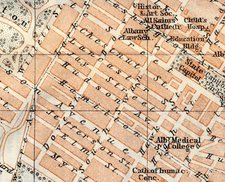 A local author/historian is researching the backstory on the names of Albany's streets. All of them.
A local author/historian is researching the backstory on the names of Albany's streets. All of them.
Erik Schlimmer, who's also a UAlbany grad student, has previously worked on place-name history books of the Adirondacks. He's aiming for the Capital Cobblestone Project to also become a book.
Schlimmer is posting updates and historical bits on a Facebook page for the project. Here's a sample:
Many streets in Albany, especially those downtown, do not retain their original names. Eagle Street is named for our national bird, a symbol of freedom and patriotism. It used to be called Duke Street after the Duke of Albany of the British royal family. Out with the British and in with the Americans.
Given all the histories of Albany, it's kind of surprising this hasn't been done before. It's total history nerd candy.
Who lived in the neighborhood knocked down for the Empire State Plaza?
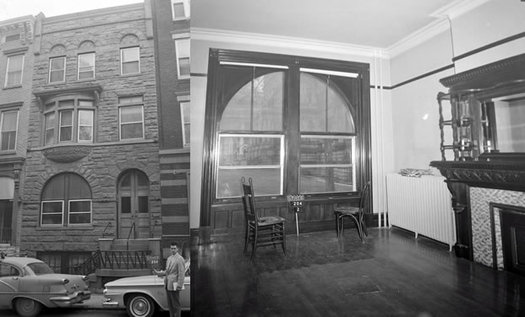
Sarah Stapleton, a nurse and Irish immigrant, once lived and worked with her doctor husband and sons in this elegant State Street home. Here's more of her story.
Testifying before the Senate on September 25, 1974, former New York State Governor and then-vice presidential nominee Nelson A. Rockefeller made at least two demonstrably false statements about the 98-acre area demolished for what was then called the South Mall and is now known as the Empire State Plaza. (Our thanks to Jack McEneny for bringing this testimony to our attention.)
First, Rockefeller declared that that the area "was one of the worst slums in the United States," asserting that it suffered from a distressingly high rate of infant mortality. Second, he estimated the area's population to be 9,000 persons.
In fact, these 40 blocks were home to a diverse population of 7,000 persons. And it was not one big "slum."
Albany on a different scale

We stopped by the State Museum this week to see the new exhibit marking the 50th anniversary of Empire State Plaza.
The exhibit includes photos, renderings, and art related to the plaza's construction. And it's not a large exhibit, so it only takes about 10 minutes to go through. If you're like us, you might leave wanting a bit more. But there are events in September that maybe will fill in some of the gaps.
Anyway, out in the lobby of the museum is the large model that was used by the Rockefeller administration to illustrate the plan. (Albany Archives added some context and discussion this week.) We probably could have stood there for a half hour easy looking at all the little details.
The Making of the Hudson River School -- online
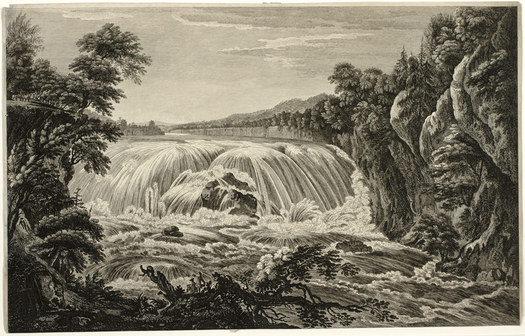
"A View of the Great Cohoes Falls on the Mohawk River," Thomas Pownall (1722-1805), engraved by Paul Sandby (1725-1809), etching on laid paper, c. 1761-1768 - Albany Institute of History and Art, Bequest of Ledyard Cogswell, Jr.
The Albany Institute of History and Art has put together an online version of its The Making of the Hudson River School exhibit, which ran in 2013. Blurbage:
[T]his exhibition reveals that much more went into the making of the Hudson River School, such as the influence of European traditions and cultural movements, as well as America's natural environment and commercial spirit. The Hudson River School also emerged alongside the new medium of photography, the new science of geology, and new technologies that transformed travel and inaugurated an industrial revolution. The Hudson River School ultimately helped shape an American identity.
The online exhibit is nicely designed, taking you a series of themes and developments that set the stage for, and then exemplified, the Hudson River School. And it's packed with works of art -- many of them depicting local scenes -- that you can click on to get better view.
One work that caught our eye today in the "Topographical Tradition" section was this above drawing of the Cohoes Falls by a British official Thomas Pownall in the late 1700s. From the description that accompanies the work:
Pownall visited the falls twice, but it was during his second visit, when the river was high, that he encountered its sensational splendor and made his sketch. He recounted "I went a second Time to view these Falls; they were then a most tremendous Object. The Torrent, which came over, filled the whole Space from Side to Side; before it reached the Edge of the Fall it had acquired a Velocity which the Eye could scarce follow; and although at the Fall the Stream tumbled in one great Cataract: yet it did not appear like a Sheet of Water; it was a tumultuous Conglomeration of Waves foaming, and at Intervals bursting into Clouds of Vapour, which fly off in rolling Eddies like the Smoak of great Guns."
The Albany Institute has been steadily expanding its online collections, which are full of maps, drawings, and objects related to Albany-area history and beyond.
The Albany Institute advertises on AOA.
A plan for the state to remake a part of downtown Albany -- before the Empire State Plaza
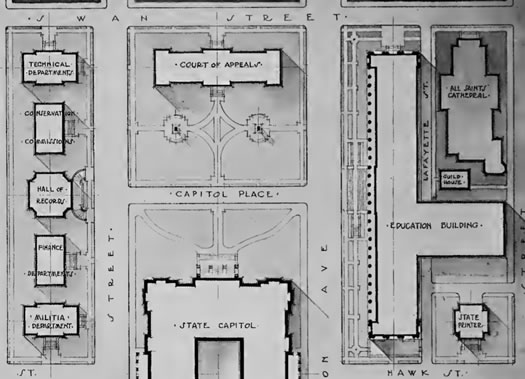
The Empire State Plaza and its history are getting a lot of attention this summer because it's the 50th anniversary of the official cornerstone being laid for the ESP (the exact anniversary was this past Sunday). And even in non-round number years, the ESP gets a lot of attention in discussions about the history, architecture, and planning of downtown Albany. Because of course.
But here's something new to us -- Albany Archives pointed it out to us this week -- so maybe it will be to you, too: There was was a proposed plan for the state to remake the area near the Capitol in Albany that pre-dated the ESP -- by more than 50 years. And the plan helps add some context for how things actually did turn out.
Drawing: Hidden City House & Garden Tour + Lark Street goodies

One of the gardens on this year's tour was frequented by FDR while he was Governor.
Drawing's closed! Winner's been emailed!
The Historic Albany Foundation's annual Hidden City House & Garden Tour is coming up in and around the Center Square neighborhood. Beautiful, historic homes and gardens will open as people go on a self-guided tour through the streets around Lark Street.
AOA has a pair of tickets for the tour -- and a basket of Lark Street goodies -- to give away. The prize package includes:
+ A pair of tickets to the Hidden City House & Garden Tour
+ Three $20 gift certificates to The Wine Bar and Bistro on Lark (gift certificates must be used separately)
+ Two $5 gift cards to The Brakes Coffee House on Lark Street.
+ A bottle of Perrier Jouet Grand Brut champagne from Capital Wine at the corner of State and Lark.
To enter the drawing, please answer this question in the comments:
Hidden gardens are lovely. What else is lovely?
We pass by things that are lovely everyday. If we're used to them, we may not notice, but sometimes they stop us in our tracks. Tell us about something you find lovely. Bonus points
if you tell us what makes it lovely in your eyes.
We'll draw one winner at random.
The Hidden City House & Garden Tour is Thursday, June 25 from 5-8 pm. The tour includes historic homes, backyard gardens, and some community gardens that are part of Capital Roots. Advance tickets are $15 and available online. After June 20, tickets are $20.
Important: All comments must be submitted by 11:59 pm on Thursday, June 11, 2015 to be entered in the drawing. You must answer the question to be part of the drawing. (Normal commenting guidelines apply.) One entry per person, please. You must enter a valid email address (that you check regularly) with your comment. The winner will be notified via email by noon on Friday and must respond by noon on Monday, June 15.
Out in Albany

In honor of Pride Week WMHT will be showing the documentary Out in Albany twice this month -- Tuesday, June 9 at 10 pm, and Monday, June 22 at 10 pm.
There are a few clips from the doc at that link above. Blurbage:
OUT IN ALBANY is a documentary project that highlights issues at the forefront of the LGBTQ community today while mining the rich history of LGBTQ lives in the Capital Region. A state worker transitioning from male to female. A teenager navigating high school as an out lesbian. A queer community member of color balancing identities. These are just a few of the stories being lived in the Capital Region today.
... It covers the history and trajectory of the many movements within the LGBTQ community while highlighting the issues at the forefront of the community today. Specifically, this documentary looks at historic points of setback and growth related to the LGBTQ movement. From the founding of the Pride Center in Albany to police raids to medical support for AIDS patients to the marriage equality movement, the documentary looks at the historic highs and lows of the equality movement.
Woven into the history of the region are the stories of individuals that illustrate the issues at the forefront of the current LGBTQ movement. These issues include transgender rights, youth support, LGBTQ people of color, and aging populations in the community.
The doc first premiered last year. And as far was can tell, it's not posted online in its entirety, so this is a good chance to catch it.
The Arabella Chapman Project
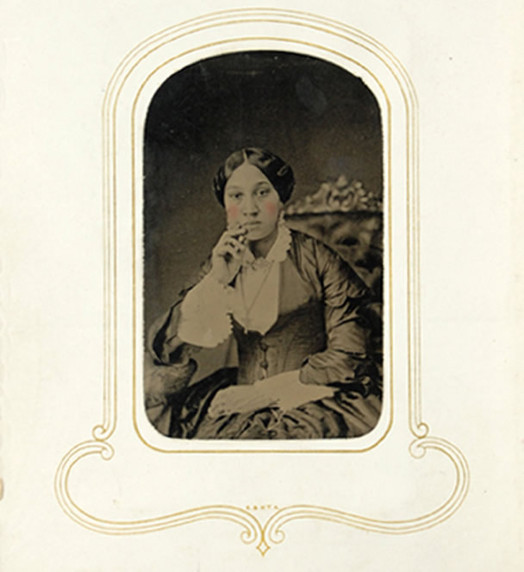
A tintype of Arabella Chapman. / photo via The Arabella Chapman Project, University of Michigan William L. Clements Library
A little more than a year ago a pair of photo albums depicting a 19th century African-American family in Albany surfaced at a University of Michigan library. That prompted the Arabella Chapman Project, in which an African-American women's history class at U-M researched the history of the eponymous Albany resident:
What can we learn from two photo albums assembled by an African American woman and her family in the last decades of the nineteenth century? Their pages are filled with layers of family, community, and politics. Assembled in Albany, NY and North Adams, MA -- tintype, carte-de-visite, and Brownie images -- Arabella Chapman's albums tell histories both intimate and epic.
Black Americans, including Arabella's family and neighbors, sat for and then assembled their own images, crafting counter-narratives that challenged a rising tide of racism. At the same time, in their images are a politics of pleasure. From careful sartorial choices in formal portraits to rare scenes of leisure, the Chapman albums provide us an intimate glimpse into how black Americans embodied the lived pleasure of everyday life.
Here's a bit more about Arabella Chapman from a University of Michigan news service article about the project:
1938/2015 dissolve
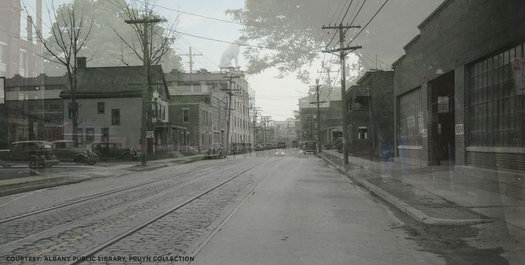
The c. 1938 photo is from the Pruyn Collection at the Albany Public Library.
As luck would have it, Albany Archives shared a photo of Broadway in Albany just north the intersection with Loudonville Road from around 1938 -- before Nipper began sitting atop the building -- and we happened to have a photo of more-or-less the same spot from just this past week.
So we put the photos together in a dissolving gif -- from 1938 to now. Have a look in large format.
Henry Johnson awarded the Medal of Honor
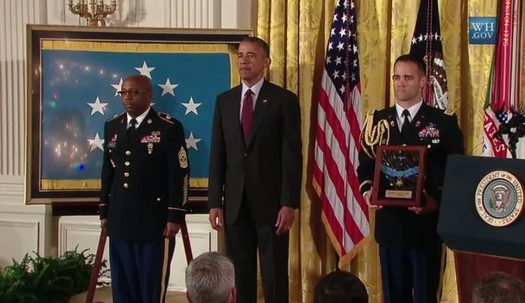
Command Sgt. Maj. Louis Wilson of the New York Army National Guard (left) accepted the Medal of Honor on behalf of Henry Johnson. / screengrab via White House live feed on YouTube
Albany WWI hero Henry Johnson was posthumously awarded the Medal of Honor today at the White House. It is the nation's highest military honor. And it comes almost a century after Johnson's acts in France, after decades of work to obtain the recognition.
"It's never too late to say thank you," remarked Barack Obama at the start of the ceremony to honor Johnson and William Shemin, another WWI Medal of Honor recipient from New York State.
A few facts, controversies, and quirks from the Northway's history
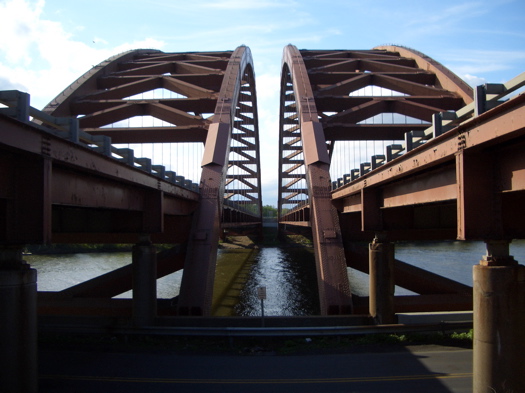
As you know, the Twin Bridges' official name is Thaddeus Kosciusko Bridge. (Kosciuszk-who?) / photo: Nicholas Hepler at Wikipedia (CC-BY-2.5)
As noted by Albany Archives, the section of the Northway from Albany to around Glens Falls officially opened this week in 1961 (that is, Nelson Rockefeller cut a ribbon).
That got us rummaging through the history of the Northway -- ahem, excuse us, The Adirondack Northway -- and here are a few bits you might finding interesting...
Troy's Washington Park, from inside the fence

The gate for Troy's Washington Park was open Thursday evening as part of the hidden garden tour, so we had to take a few minutes roam around inside the fence. The blocks around the park are, of course, beautiful. And seeing them from inside the park is a different perspective.
Washington Park is famously one of only two private urban ornamental parks in New York State -- Gramercy Park in New York City is the other. Gramercy Park preceded Washington Park by eight years. They both drew on an idea that had emerged earlier in London in the 19th century of the shared private park.
Here's a little bit more about its history...
Henry Johnson will be awarded the Medal of Honor -- finally

Henry Johnson displaying his French Croix de Guerre. / photo via Wikipedia
The White House announced today that Barack Obama will posthumously award Albany native Henry Johnson the Medal of Honor on June 2 for "for conspicuous gallantry" during WWI. Yes, he is the Henry Johnson, of the boulevard and other landmarks.
It is the nation's highest military honor. And it's long overdue.
Above it all
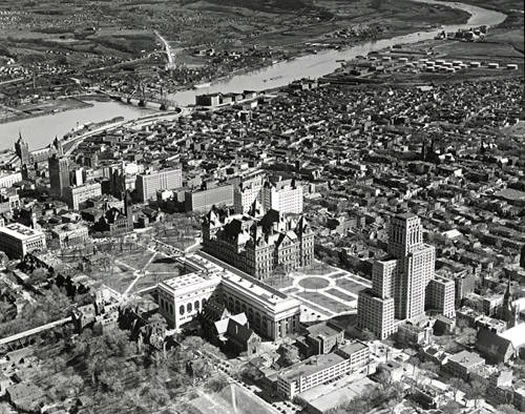
We stumbled across this photo today and found it interesting, so maybe you will also: It's an aerial photo of a large section of downtown Albany from 1937. It's via the New York State Archives, and over on its website you can zoom into the photo for much more detail.
There are so many interesting bits about this photo -- the way the neighborhood replaced by the Empire State Plaza once ran flush up against State Street by the Capitol, the state of the waterfront then, all the open space across the river, and more.
As we've mentioned before, the State Archives photo collection has a handful of old aerial photos of Albany that are worth a look. (For that matter, the State Archives has a bunch of interesting photos online -- aerial or otherwise.)
Earlier on AOA:
+ A view from above, back then
+ Downtown Albany, before and after
photo: New York State Archives. Education Dept. Division of Visual Instruction.
The Empire State Plaza at 50
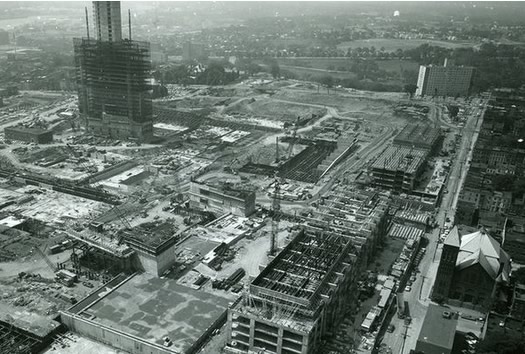
A photo from the New York State Archives of the ESP under construction in 1968. (It's from a slide show at that first link below, which includes a bunch of interesting archival photos.)
This summer will be the 50th anniversary of the official corner stone being placed for the Empire State Plaza, and there's a series of events an exhibitions lined up to commemorate the anniversary.
The State Museum will open a new exhibit -- "The Empire State Plaza at 50" -- in June. Blurbage:
Scheduled to open on June 21, 2015 and run through January 17, 2016, this special exhibit will tell the story of the Plaza's construction and evolution. Located in the main lobby and west corridor of the museum, it will include art, photographs, digital displays, original sketches by architects, and examples of the architectural elements that make up the Plaza and where they came from. Visitors to the exhibit will discover how such a massive complex is heated in the winter and cooled in the summer, what the "Rule of 30" is and how it was incorporated into the design of the Plaza, and hear the stories of those who worked on the project.
The ESP is a remarkable, interesting, and unavoidable subject in this area's history. We hope the exhibit, and related events, examine and highlight not just its grandeur, but also its complications and tradeoffs.
Here's a condensed schedule of other events planned for the commemoration:
The situation is rather invovled
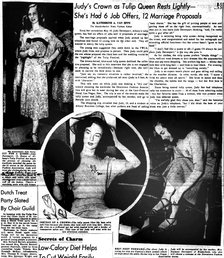 That post earlier today about what it was like to be one of the first Tulip Queens -- if you haven't read it, you totally should, it includes some fun stories -- briefly references the experience of another early Tulip Queen, Judy Davenport. Here's a clip from that 1951 Knickerbocker News article, because you might get a smile out of it:
That post earlier today about what it was like to be one of the first Tulip Queens -- if you haven't read it, you totally should, it includes some fun stories -- briefly references the experience of another early Tulip Queen, Judy Davenport. Here's a clip from that 1951 Knickerbocker News article, because you might get a smile out of it:
Since her coronation May 10, Judy Davenport, Albany's tulip queen, has had six offers of jobs and 12 proposals of marriage.
The marriage proposals arrived when Judy picked up her telephone and found 12 young men on the other end. They all wanted to marry the tulip queen.
The young men suggested they come down to the YWCA, where Judy lives, and propose in person. Then Judy could pick the one whose proposal she liked best and the wedding would be the "highlight" of the Tulip Festival.
The brown-haired, blue-eyed tulip queen declined the collective proposal. She said in this interview that she is not engaged or planning to be immediately -- because, right now, she can't seem to narrow the field down to one.
"Just say my romantic situation is rather involved," she instructed, adding that she preferred tall men (Judy is 5 feet, 8) with "character."
We can only imagine how Miss Davenport turned away those suitors.
It's all rather involved, boys.
Knickerbocker News clip via Fulton History
What it was like to reign as one of Albany's first Tulip Queens

Nadia Spiak, Albany's 8th Tulip Queen, in 1956.
Nadia Rymanowski's friends still refer to her as T.Q., though her reign as Tulip Queen ended more than 50 years ago.
Albany's 8th Tulip Queen was 20 years old when she was crowned in May of 1956. Back then she was Nadia Spiak from Troy -- she was allowed to compete for Albany Tulip Queen because she was studying at Albany Business College. (Her father had entered her in the competition without her knowledge.) Spiak was one of more than 500 young women who competed for the crown that spring, and she still maintains that she was more surprised than anyone when she won.
"We all had our ideas about who it would be," Spiak-Rymanowski says, "I was speechless."
So what was it like to be the eighth Tulip Queen of Albany?
"Exciting," says Spiak-Rymanowski, who today lives in Loudonville with her husband and works as a professional painter.
The ceremony and the position, she says, were very different back then.
"Nellie Bly's Interesting Experience in Albany"

Nellie Bly and her article about "The King of the Lobby" in Albany.
Tuesday -- May 5 -- was the birthday of Nellie Bly, one of the most important and colorful figures in the history of American journalism.
In 1887 Bly, whose real name was Elizabeth Cochrane, became famous for pulling off an audacious undercover story in which she got herself checked into a New York asylum for the mentally ill and reported on the conditions. She'd later stoke her fame by racing around the world in less than 80 days.
If Nellie Bly was around today -- even the actual 19th century Nellie Bly, transported in a time machine -- she'd probably have her own online media startup and would be killing the competition. Vice, Vox, Buzzfeed, bow down before the original queen.
One of Bly's articles for the New York World brought to her to Albany in 1888. And the story will have a familiar ring to it: she came here to buy some state legislators.
Some number of facts about the Normanskill

It's a long running thread through this area.
With the Normanskill in the news this week, we thought it'd be interesting to look into the stream's course through this area -- both in geography and history. We started with the intent of digging up one fact or bit for each mile of the Normanskill -- but, frankly, we lost count.
So here is an undetermined number of facts or bits about the Normanskill.
How to commemorate a traitor

Remembering Benedict Arnold -- it's complicated
People are complicated. Which makes history complicated. Much more complicated than school textbooks might lead us to believe.
And in some cases, complicated history makes for complicated monuments -- like the monuments in Saratoga that commemorate Benedict Arnold.
The 1780 Beer Challenge
 This could be fun: The Middleburgh Library, the Albany Ale Project, and Green Wolf Brewing Company are collaborating for an event called "The 1780 Beer Challenge and Revolutionary War Festival" on May 16 in Middleburgh. Event blurbage:
This could be fun: The Middleburgh Library, the Albany Ale Project, and Green Wolf Brewing Company are collaborating for an event called "The 1780 Beer Challenge and Revolutionary War Festival" on May 16 in Middleburgh. Event blurbage:
The day's activities include a Revolutionary War encampment, colonial brewing and cooking demonstrations, 18th century toys and games for kids, talks on the history of beer and hops in upstate New York and the Schoharie Valley, a Schoharie Valley hops display at the Library, beer samples from Green Wolf and MacKinnon Brothers, and Green Wolf brewery tours. Middleburgers BBQ and Under the Nose gift shop and bakery will be offering barbeque and baked goods for sale, and Craig Gravina and Alan McLeod will be selling and signing copies of their book Upper Hudson ValleyBeer. The day culminates in "The 1780 Beer Challenge", cask tapping and tasting!
The Albany Ale Project, Green Wolf Brewing Co., and MacKinnon Brothers Brewing Co. have issued each other a challenge. A beer-infused re-enactment of the 1780 stand off in Middleburgh between New York's Loyalist raiders and the Albany County Militia--this time with hops, grain, and yeast, instead of muskets and cannons!
The Albany Ale Project's Craig Gravina, of Albany, is working with Green Wolf, while his partner--and Kingston, Ontario native--Alan McLeod is working with MacKinnon Brothers [Brewing Co. of Ontario] to create two Revolutionary War-era inspired beers--both made from locally-sourced, traditional late 18th-century ingredients and historical brewing techniques. The beers will be blind judged against each other by WNYT NewsChannel 13's morning anchor Phil Bayly, food and drinks writer Deanna Fox, and Middleburgh Library Director Teresa Pavoldi. The winner receives bragging rights and the official "1780 Beer Challenge Champion" barrelhead. The loser must hoist their opponent's flag in their respective brewery or taproom. There will also be a "People's Choice" vote for best beer.
The 1780 Beer Challenge is from 1-5 pm on Saturday, May 16. It's an all-ages event Tickets are $15 -- that includes beer sampling tickets and a Green Wolf sampler glass. Tickets for non-drinkers are $10. And kids under 15 are free.
And while you're out in Middleburgh, you can make your way up Vroman's Nose.
Earlier on AOA: Resurrecting a beer, and part of Albany's history
"There'll be good, fresh coffee at the Waldorf Lunch today. It's always the same."

Here's what that corner looks like now.
This photo caught our eye this week as we browsed through the Albany Public Library's growing online collection of historical images. The building -- which housed the Waldorf Cafeteria and Rudolph's jewelry -- was on the southeast corner of State and Pearl in downtown Albany. (Here are two more angles from the Albany Flickr group.) This photo is from 1945.
We kind of love the signage.
Curious about the Waldorf Cafeteria, we did a little bit of research. The "Waldorf Lunch System" was one of the first restaurant chains -- it started in Springfield, Massachusetts in 1904 and eventually expanded to seven states. Here's a clip from some advertising copy for the chain, as highlighted by the trade publication Cafeteria Management in 1922:
HOW A SMALL BANK ACCOUNT -- PLUS A BIG IDEA -- BECAME A $10,000,000 BUSINESS.
More than 17 years ago the first Waldorf Lunch opened its doors to the people of Springfield, Mass. That Waldorf represented an idea, backed by all its founders savings -- the most sum of $1,800. But it was a good idea -- and it prospered because it performed a service the public wanted, and did it well.
Today that idea is represented by the familiar Waldorf Lunch establishments in this city, and in twenty-seven other cities in seven States.
The foundation idea of the Waldorf system is this: the undeviating purpose to maintain worthy dining-laces where they will perform real public service, the purpose to serve tasteful food of unquestionable quality to men and women at such small profit per person that we shall have many patrons to make those small profits profitable to our employees and shareholders.
During the past year the lunch rooms of the Waldorf system have served more than 37,000,000 meals at an average of less than twenty-eight cents each, and at an average profit of a fraction over two cents per meal.
Over $10,000,000 of annual business built up by efficient management, uncompromising standards of quality, cleanliness, courtesy and quick service!
There'll be good, fresh coffee at the Waldorf Lunch today. It's always the same.
The writer of the trade mag article described that last paragraph of the ad copy as "the touch of the word artist."
photo via Albany Public Library History Collection
The building that saved its face
Another interesting local history/architecture insight from Albany Archives:
When the NYS National Bank on State/Pearl went up & out in 1916, they kept the 1803 facade intact. See it now? pic.twitter.com/kEfKPoP3R6
— Albany Archives (@AlbanyArchives) April 10, 2015It's the big, red building on the northeast corner of State and Pearl.
By the way: You are following @AlbanyArchives, right?
Albany, because beavers

North America's largest rodent. And one of the reasons Albany exists. / photo: Steve Hersey via Flickr (CC BY-SA 2.0)
This past Tuesday was International Beaver Day. No, we didn't have marked on our calendar, either. It was a gross oversight on our part.
It's too bad that we missed the day because beavers played an important role in Albany's history. In fact, to some degree, Albany exists because of beavers.
Scrolling along New York's roads a century ago
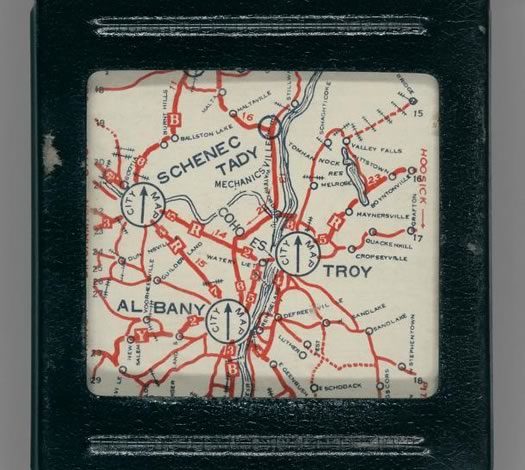
It's interesting to see sometimes that people in the past had ideas, the concepts, for what we'd now consider modern devices -- they just didn't have the technology to pull it off.
We stumbled across this device -- the Rota-Ray Map System -- this week in the David Rumsey Map Collection. It's basically a handheld scrolling map. And in the photo above, it shows a map for the Capital District. (If you click over to that first link, you can see the whole device.)
The device dates to the early 1920s. From the description posted along with one of the devices that sold on eBay in 2013:
[The map is in] the metal box and you turn the handles located on the side and they rotates the paper inside to display the different maps. The maps are from New York starting at Niagara Falls, Buffalo, Jamestown, Lockport down to Salamanca, Cuba, a small section of PA (Bradford, Smethport), Rochester, Batavia, Hornell, Wellsville, Bath, Auburn, Elmira, Watertown, Syracuse, Binghamton and Johnson City, Ogdensburg, Rome, Utica, Potsdam, Little Falls, Oneonta, Malone, Amsterdam, Cobleskill, Middletown, Troy, Schenectady, Albany, Plattsburgh, Glens Falls, Saratoga, Schenectady, and south to New York City and more. Measures 6 1/2" long, 4" wide and 1 3/4" deep.
The map itself was 3.5 inches wide and 300 inches long, according to a listing in a US Copyright catalog from the time. The Rumsey Collection has one of the full strips, and you can zoom in very close to see the detail.
We were curious about how the size of the device -- 6.5 by 4 -- compares to something like an iPad or iPhone. It turns out it's just a bit bigger than the new iPhone 6 Plus, and about an inch shorter in each direction than an iPad Mini.
photo: David Rumsey Map Collection
Roosevelt Terrace
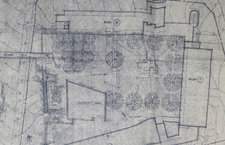 Over at 98 Acres in Albany there's an interesting post about an element of the greater Empire State Plaza project that never came about: Roosevelt Terrace, which was intended to be a mixed-income residential development. A clip:
Over at 98 Acres in Albany there's an interesting post about an element of the greater Empire State Plaza project that never came about: Roosevelt Terrace, which was intended to be a mixed-income residential development. A clip:
Once there was a plan to build a sprawling state-subsidized, mixed-income community, known as Roosevelt Terrace, alongside the South Mall Arterial and within the 98 acres seized by the State.* All that remains of that plan is a stripped-down version of the senior apartment complex, South Mall Towers on South Pearl Street.
Roosevelt Terrace was intended as an answer (albeit belated and partial) to the critical shortage of middle- and low-income housing in Albany. Its design would complement the State's massive new office complex. Having displaced roughly 3,600 households, those office buildings and the attendant demolitions were a major cause of the city's housing crisis. ...
Landscape played a key role in the design of Roosevelt Terrace. Situated on ten acres and surrounded by grass and trees, the eight reddish-brown brick apartment buildings were to be connected by a series of outdoor sitting areas and playgrounds, designed to promote sociability or to facilitate quiet contemplation. Special features of the housing complex included an amphitheater, fountains and statues, an outdoor basketball court with sideline seating, and a community center with full kitchen facilities. Cars were banished below the surface in two underground parking garages.
In an alternate history way it's interesting to think about how the inclusion of more housing might have influenced the direction of that part of the city in the decades since -- and how it might be viewed today. Would downtown Albany be more residential now? And as high-rise subsidized housing has fallen out of favor in recent decades, would there now be talk about changing Roosevelt Terrace?
Earlier on AOA:
+ 98 Acres in Albany
+ Albany, in an alternate future
+ Maybe there wasn't enough money for a spaceship
image: ACHOR via 98 Acres in Albany
Audrey Munson, the model for The Spirit of Life

The model behind The Spirit of Life had a fascinating and tragic life of her own
(This post includes photos that could be considered mildly NSFW.)
This year the city of Saratoga Springs is celebrating its centennial.
So is its most noted statue: The Spirit of Life in Congress Park.
The sculptor, Daniel Chester French, is well known. But French's model for the Spirit of Life -- Audrey Munson, and the tragic story of her rise and fall -- have nearly disappeared into history.
Stories about Albany
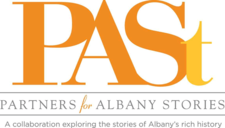 A group of local historical and cultural groups has teamed up for a series of events to collect family stories that somehow related to the history of Albany. Blurbage from the Partners for Albany Stories:
A group of local historical and cultural groups has teamed up for a series of events to collect family stories that somehow related to the history of Albany. Blurbage from the Partners for Albany Stories:
Come and share a story about you and your family that relates to the history of Albany. You will have 10 minutes at the microphone to enchant and enlighten the audience. Sign up is on a first-come, first-tell basis. Stories will be video documented for preservation at the Albany Public Library.
Interested, but not sure what to talk about? Check our website for story suggestions. Interested, know what you want to talk about, but want help with telling your story? Come to a free coaching session one hour before the event. Interested, but don't want to tell a story? Just come and listen.
The first event is this Thursday, March 26 at the Albany Institute at 6 pm. Admission is free.
Additional dates, at spots around the city, are listed after the jump.
PASt describes itself as "organizations working together to develop a comprehensive and compelling story of Albany's rich history."
So much bunting
Welcome to the jungle... the electric jungle. The Albany Trust Co. Building on Broadway and State, circa 1910. pic.twitter.com/c76WNdpCrE
— Albany Archives (@AlbanyArchives) March 19, 2015
Albany Archives shared this photo today. Albany really didn't hold back on the bunting back in the day, as another bunting-filled photo shared by the Albany Muskrat also illustrated.
By the way: The First Trust Company Building at State and Broadway in downtown now serves as offices for the SUNY Research Foundation.
Garnet Douglass Baltimore, who was "as much of Troy as the monument"
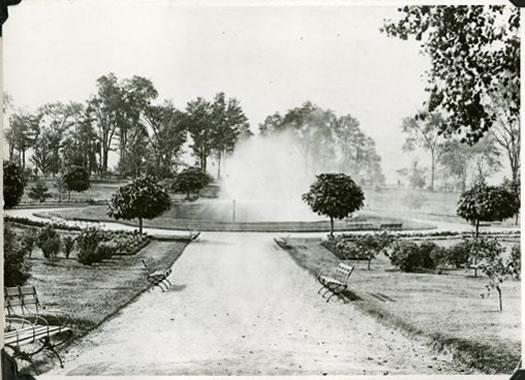
Troy's Prospect Park was designed by Garnet Douglass Baltimore, RPI's first African-American graduate. This photo of the park is from around 1910.
Each Friday this February we've been highlighting people and stories from the Capital Region's history in honor of Black History Month.
Being named for two noted abolitionist heroes could be a little intimidating, but Garnet Douglass Baltimore was equal to his name.
This grandson of an escaped slave grew up to become RPI's first African-American graduate, a civil engineer, landscape architect, and the designer of Troy's Prospect Park.
Measles in New York, before and after the vaccine

With all the news about the recent upswing in measles cases -- and the all discussions about kids not being vaccinated -- we had been curious about details regarding how a big a difference the measles vaccine made when it was introduced.
A recent Wall Street Journal data visualization illustrates this before/after across the country beautifully. It's based on numbers collected and organized by Project Tycho, a health data project at the University of Pittsburgh.
Project Tycho includes data for many states, including New York. So we pulled out the data for measles cases in New York State between 1928 and 2011. There's a graph above.
There's a bigger version after the jump, along with a few notes.
James C. Matthews: New York State's first black judge, Albany Law graduate
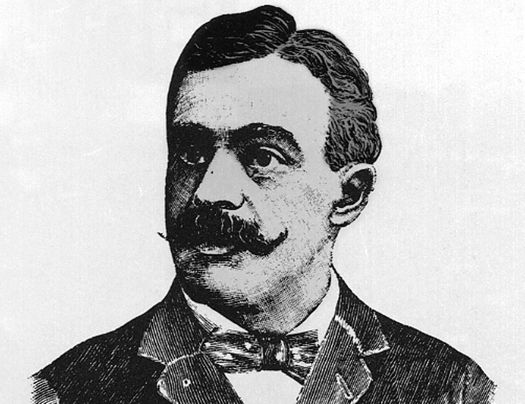
A sketch of James Campbell Matthews, New York State's first black law school grad and first black judge.
Each Friday this February we'll be highlighting people and stories from the Capital Region in honor of Black History Month.
In 1871 the first African-American to graduate from a New York State law school obtained his degree from Albany Law. Six years after the end of the Civil War, James Campbell Matthews was admitted to the New York Bar and became one of just a handful of black lawyers in the country -- and one of the most successful. Matthews went on to become the first African-American judge in New York State.
Oh, and in his first act as a lawyer, he may, or may not, have sued the city of Albany to desegregate its public schools. That part is tough to tell.
Almost a century and a half later, in a time when we're complacently led to believe that all the world's history is available on a device we can carry in our pocket, the search for the Matthews story is a reminder that there are many important stories that still remain virtually untold.
The time Lincoln and Booth crossed paths in Albany
What's even more ironic, Booth and Lincoln were only staying a block apart on Broadway. JW was living at the Stanwix. pic.twitter.com/I0CnkMENKI
— Albany Archives (@AlbanyArchives) February 18, 2015Local historical oddity of the day: On February 18, 1861 Abraham Lincoln made a stop in Albany during his pre-inauguration tour. As Albany Archives points out, Lincoln stayed at the famous Delavan House on Broadway. And staying just down the street at the Stanwix Hotel on that very same night was... John Wilkes Booth.
The actor-not-yet-assassin Booth was in Albany performing at a local theater -- in a production that Lincoln saw that night. [Don Rittner]
By the way: AA also mentioned today that many people didn't recognize Lincoln when he arrived in Albany because in his photo he was clean shaven, but he showed up here with a beard. And the reason for the beard is a totally charming story.
The Mohawk Colored Giants of Schenectady

The 1931 Mohawk Giants. / photo courtesy of Schenectady County Historical Society
Each Friday this February we'll be highlighting people and stories from the Capital Region in honor of Black History Month.
In 1913 professional and semi-pro baseball teams dotted the landscape of the United States. Baseball historian Frank Keetz says every city and town and factory had an independent team. But in the Capital Region, there was only one black pro baseball team--the Mohawk Colored Giants of Schenectady. And they were good.
How good? They took on one of the best major league pitchers of the day, and won.
So why did they only last a season and a half? And how were they resurrected more than ten years later to become one of the most successful black indie teams in the country?
Stephen & Harriet Myers, station agents for Albany's portion of the Underground Railroad
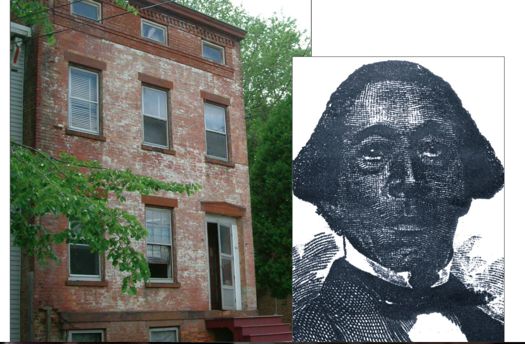
Abolitionist Stephen Myers and the Albany residence where some of his story played out.
Each Friday this February we'll be highlighting people and stories from the Capital Region in honor of Black History Month.
We live in a part of the country where history is part of the landscape. We pass historic markers on trips to the grocery store, and monuments on visits to the bank. Historic figures live on in the names of streets and cities and public buildings --- even if many no longer remember who they were, or what they did to earn the honor.
Take, for example, Stephen and Harriet Myers.
Chances are that you've driven past their former home on Livingston Avenue or the Albany middle school that bears their names, maybe without giving them a thought.
But this Capital Region couple has a remarkable, important story: The Myers played a key role in the history of the Underground Railroad in this area, helping hundreds -- possibly thousands -- of escaped slaves.
"Triple Play!" at the Albany Institute
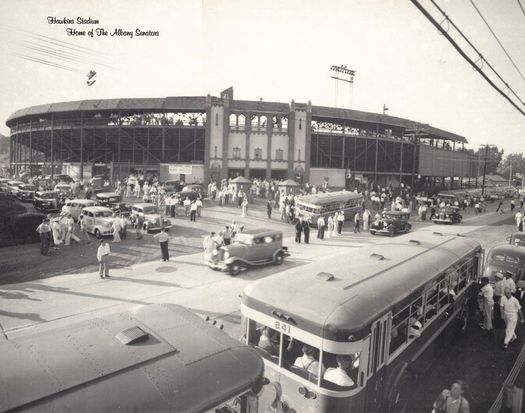
Hawkins Stadium in Menands was the home of the Albany Senators.
Despite out evidence outside to the contrary, it won't be long until spring arrives. (It's true. We checked a calendar.) And along with spring will come baseball.
The Albany Institute is getting an early start on the season (both of them) with a new exhibit called "Triple Play!" It includes a bunch of historical baseball photos, memorabilia, and items from the major leagues and the Capital Region's own rich baseball history.
The exhibit opens this Friday night, February 6. We got a look earlier this week. Here's a quick trip around the bases...
Top 5 snowiest days on record for Albany
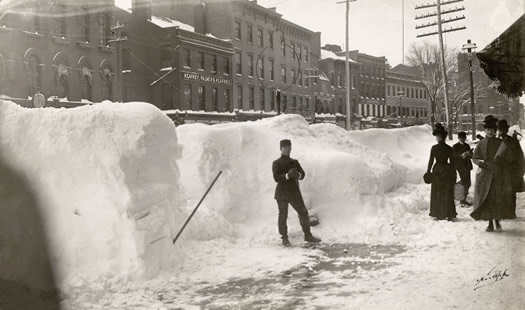
A scene from Pearl Street, near Maiden Lane after the all-time record day.
For no reason whatsoever... OK, there's a reason. You might be able to guess.
The question of the snowiest day ever came up Monday after the snowstorm broke the snowfall record for February 2, with 11.8 inches of snow and counting. The old record for the date had been 5.5 inches, set in 1892.
So, without further ado, here are the top 5 snowiest days on record for Albany...
Downtown Albany, before and after

Head over to the OU site to use the photo slider.
Check out these before-and-after aerial photos of Northeast cities posted by an academic institute at the University of Oklahoma. Albany is among the cities featured -- that's a screengrab above -- in the series of before/after sliding photos.
From the Institute for for Quality Communities post:
60 years has made a big difference in the urban form of American cities. The most rapid change occurred during the mid-century urban renewal period that cleared large tracts of urban land for new highways, parking, and public facilities or housing projects. Fine-grained networks of streets and buildings on small lots were replaced with superblocks and megastructures. While the period did make way for impressive new projects in many cities, many of the scars are still unhealed.
We put together these sliders to show how cities have changed over half a century.
One of the things that struck us as we moved the slider back and forth on the Albany photos was that, sure, the Empire State Plaza took up a lot of space -- but it's remarkable how the wide path was plowed for the South Mall Arterial connecting I-787 and the ESP.
The institute's posted other series of sliding photos for Oklahoma and Texas, the Midwest, and Southeast.
[via @albanymuskrat]
photo compilation: Institute for for Quality Communities at the University of Oklahoma
That time -- not even that long ago -- that Albany annexed a chunk of Bethlehem
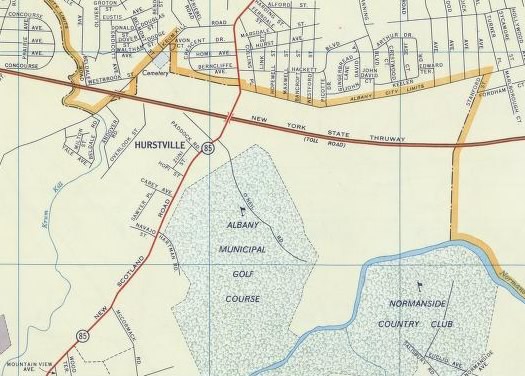
Was Bethlehem, is now Albany.
There was a bit of ripple this week when Albany mayor Kathy Sheehan mentioned the topic of annexation during a panel discussion about poverty and cities. From an article over at Capital:
"We could expand," Sheehan said. "States that have elastic cities where there's an ability annex do not have the same stratification that we see here in New York State. So there are states where you can grow your way out of this situation because you can expand your tax base by annexing. We can look at that, but we could also look at how we fundamentally fund our cities ... because cities still grow every day. The city of Albany doubles in population every day when people come here to work.
"We have to look at all levels at how we are funding our cities and have a conversation with those wealthier, surrounding suburban communities about what it is we need to do to address that inequity that we have," she said.
So this was a more a nod to the idea than actually raising it as a realistic option. (Update: Here's Sheehan emphasizing that point. [TWCN]) And that makes sense, because the idea that Albany could/would annex one of its surrounding suburbs seems... highly unlikely.
But. You might be surprised to find out that Albany has done just that in the past -- and it wasn't even that long ago (on the scale of Albany history). And the episode highlights why it would be so unlikely today.
That time Albany had a castle made of ice
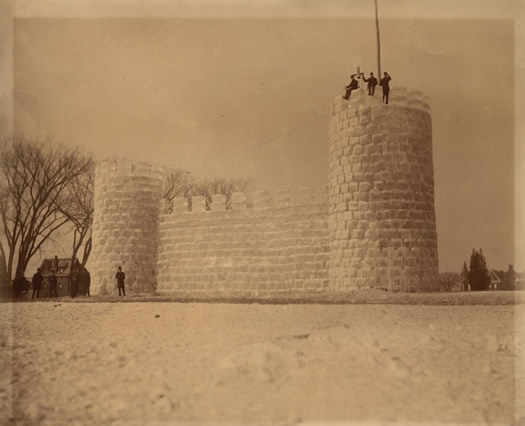
Check out this ice castle built in Albany's Washington Park in 1888. It's via the collection of the Albany Institute of History and Art, which posted the photo on its FB page Thursday.
The "ice palace of considerable size," as it was described at the time, was constructed in mid January of 1888 at the corner of Madison and Lake avenues east of what was then (and still is) the tennis grounds for a winter carnival.
Warmth with flair

Historical object gawking: We came across this photo of a 19th century stove in the Albany Institute collection. It was made by a Troy company -- Johnson, Geer & Cox -- based on a design by Troy resident Ezra Ripley, probably around 1844. At the time it was advertised as as a "cheap and beautiful article for offices and parlors."
It's a gorgeous object -- as a stove, or even as art. The Google Cultural Institute viewer allows some very close closeups of the details.
From the Albany Institute description:
Cast-iron stovemaking reached its highest level of artistic achievement and technological advances between 1840 and 1870. Stove designers borrowed from architectural and cabinetmakers's design books, bringing Greek, Roman, Gothic, Egyptian, and Rococo revival motifs, along with patriotic symbols and lavish floral designs, in stoves. The technical design of this column parlor stove included a small rectangular firebox to which were connected four vertical flues (or columns). All were connected at the top by a horizontal pipe or second chamber. The increased surface area and greater air circulation of this design enhanced the amount of radiated heat.
Troy and Albany were prominent centers of the stovemaking industry during the 19th century, with hundreds of stove manufacturers trying to stake out a spot in the marketplace over the century.
Sometimes it's easy to romanticize the past and look past its negatives. Sure, there were gorgeous parlor stoves -- but they were often manufactured by people working in terrible conditions. And there are so many things -- in terms of people's rights, technology, and so on -- that are so much better now compared to then (even if there's still room to improve). But objects like this stove were made with a certain flair.
photo: "Four-Column Parlor Stove" via Albany Institute collection
That time an Albany druggist made and sold cocaine toothache drops

There's a (in)famous vintage ad for "Cocaine Toothache Drops" produced by the Lloyd Manufacturing Co. of Albany, dated to the mid 1880s.
It's one of those people-in-the-past-were-so-crazy kind of items, the sort of thing that prompts smiles and laughs now. So much so, that this particular vintage age is seemingly everywhere online. And someone sends it to us here at AOA at least once every year.
The ad popped up in our inbox again recently, so we figured we try to find out the backstory.
Or, to put it another way: How did a pharmacist in Albany end up selling cocaine intended for teething children?
Neighborhood That Disappeared screening at The Madison
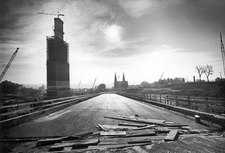 The local documentary The Neighborhood That Disappeared, about the neighborhood replaced by the Empire State Plaza, is screening at the Madison Theater Tuesday-Thursday this week at 7:30 pm.
The local documentary The Neighborhood That Disappeared, about the neighborhood replaced by the Empire State Plaza, is screening at the Madison Theater Tuesday-Thursday this week at 7:30 pm.
The doc, directed by Mary Paley, aired on WMHT this past Friday, and is set to air again December 29 at 8 pm and January 1 at 10am, 3:30 pm, and 9:30 pm.
Hoffman's Playland: One More Ride: The Hoffman's Playland Story is set to air again on WMHT this Thursday, December 18 at 7:30 pm.
The mystery of the Bryan Stone
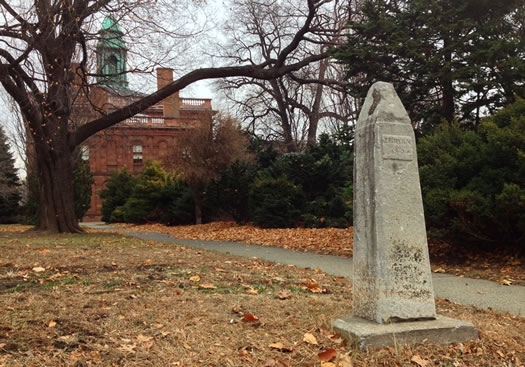
What is that?
A city as old and rich in history as Albany is bound to have its mysteries. Many are easily explained -- others remain unsolved.
If you've been paying close attention, there is one such mystery that stands on the edge of LaFayette Park along Washington Avenue, across from the Capitol. It's the Bryan Stone.
If you aren't familiar with it you aren't alone. Hiding in plain sight, most Albanians don't have any idea it even exists. Tested and worn from surviving almost 200 winters, this marble mystery has held its secret for more than 100 years.
The Poestenkill Lion
The artwork above -- known as "The Poestenkill Lion" -- is now on display at the Rensselaer County Historical Society. It's a sharp turn of fate for artwork -- it was almost firewood a few years back.
From an RCHS press release:
The lion first came to RCHS in 2011, when long-time RCHS supporters Hughes and Eva Gemmill donated this delightful painting. The painting, which dates to c.1840 and is by an unknown artist, is done on four wide boards, thinly painted with milk paint on unfinished wood.
Discovered a number of years ago during the demolition of a summer kitchen in a house in Poestenkill, the lion was almost lost to history. The dismantled wood was slated to be used as firewood. Thankfully, before these four boards were burnt, the Gemmills noticed a bit of color peeking out from underneath layers of plaster and wallpaper. After some careful removal of the plaster and wallpaper, the complete image of the lion appeared.
The Gemmills did find evidence of at least one other animal. RCHS also has in its collection the small fragments of wood that depict another animal, possibly a leopard, which came from the same space. It is possible that there were more animal figures on other boards that did not survive.
Once the Gemmills had the complete painting of the lion, they hung the four boards over their bed, until they decided to donate the painting to RCHS.
RCHS says the lion is probably based on an illustration from a Bible or maybe the work of Edward Hicks. The artist is unknown.
The historical society got a $2,500 grant this year to restore the work, and sent it to O'Connor Art Conservation in the Berkshires for cleaning and repair.
image: Rensselaer County Historical Society
The wild turkey

Historical illustration of the day, because Thanksgiving week: "The Wild Turkey," from Zoology of New York, published in 1844. Or: The New-York Fauna: comprising detailed descriptions of all the animals hitherto observed within the state of New York, with brief notices of those occasionally found near its borders, and accompanied by appropriate illustrations.
The book was the work of James Ellsworth De Kay, a medical doctor and zoologist with a somewhat colorful backstory, and artist John William Hill. The author and illustrator produced the work for the New York State Geologic Survey.
image via NYPL
Albany Antique Postcard Show

We don't know if this card will pop up at the show, but it seems like a good bet.
The annual Albany Antique Postcard Show is set for December 6 at the Polish Community Center on Washington Ave Ext in Albany. Blurbage:
Over 1 Million Vintage Postcards on display and for sale at the 4th Annual Antique Postcard show held at the Polish Community Center in Albany New York. Dealers from 5 different states will be set up with cards from all over the world. Collectors will come from all over the east coast to look for every subject imaginable. Small towns from all over New York state, over 100 years old. Free appraisals on location.
The company behind this show is Mary L. Martin Ltd. Postcards, which has an interesting backstory -- one that started in Albany. As the story goes, the eponymous Mary Martin was living in Albany during the 1960s when she got interested in postcards via her husband's stamp collecting hobby. Martin started collecting and trading the cards, and that eventually turned into a job for her and later a family business. (Along the way the Martins moved to Maryland.) Mary Martin died in 2001, and the business is now run by Martin's daughter, also named Mary, who grew up in the family business. It has a 10,000-square-foot warehouse in Maryland and claims the world's largest collection of postcards. [Baltimore Sun] [Baltimore Magazine] [Baltimore Sun x2]
The postcard show at the Polish Community Center is from 9:30 am-3 pm on December 6. Admission is $3.
The Anti-Rent War
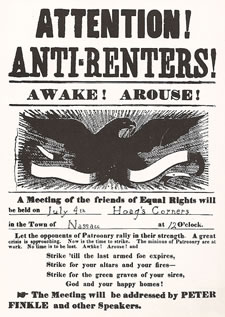 This week we've been reading a bit about a wild episode of local history that we hadn't know much about: The Anti-Rent War, also known as the Helderberg War. Here's a clip that gives a broad outline of the story from The Anti-rent Era in New York Law and Politics, 1839-1865 by Charles W. McCurdy:
This week we've been reading a bit about a wild episode of local history that we hadn't know much about: The Anti-Rent War, also known as the Helderberg War. Here's a clip that gives a broad outline of the story from The Anti-rent Era in New York Law and Politics, 1839-1865 by Charles W. McCurdy:
On July 4, 1839, angry tenant farmers on New York's oldest estate assembled in the Albany County village of Berne to adopt a declaration of independence from their landlord. Nobody counted heads that afternoon. But 3,063 families leased farms on the 726,000-acre Manor of Rensselaerwyck, and all of them had cause to complain. Manor contracts required an annual rent for every 100 acres ranging from ten to fourteen bushels of wheat, delivered to the landlord and ready for milling. All mill sites and mines were reserved, together with all rights necessary and proper to make them available to the Van Rensselaer family or its agents. Mills might be built, cropland or pasture flooded, and roads laid out on the tenant's premises without payment of compensation. There were also feudal dues. Every year farmstead heads owed a day's labor with horse and wagon and were bound to deliver "four fat fowl" on rent day ... Every indenture enumerated remedies for breach of this or any other covenant. Among them was the landlord's right to reenter the premises and repossess not only the land but also any improvements -- houses barns, fences, growing crops -- annexed to the land. Taken together, proclaimed the Independence Day mass meeting at Berne, these contractual provisions amounted to "voluntary slavery." The time had come to avow "that we can no longer endure the infamy of tamely entailing upon future generations such wretchedness and unhallowed bondage as inevitably awaits them if we any longer submit ourselves to be thus unjustly, unrighteously, inhumanly oppressed and imposed upon." So began the longest rent strike in United States history.
The whole situation was something like a super intense version of an American Downtown Abbey that mashes together the remnants of Dutch influence, economics, agriculture, and politics.
The death of Stephen van Rensselaer III -- probably the richest person in the United States at the time -- prompts a breakup of the patroon of Rensselaerswyck, what was essentially a feudal estate that included much of what's now the Capital Region. Authorities try to collect back rents. Farmers revolt, taking up arms against law enforcement. A posse that included a former governor of New York is turned back. There's a revolt leader named "Big Thunder." William Seward plays a role as governor of New York. People are tarred and feathered. Again, it was intense.
A portion of McCurdy's book is on Google Books, and it looks like a good way of reading up on the topic. There's also a Wikipedia entry related to the episode. And here's an Encyclopedia of New York State page about it.
Old Songs: We started reading about this topic this week because Old Songs is hosting a "Down with the Rent! The Anti-Rent Rebellion of New York" music event this Friday and Saturday featuring songs and stories related to the Anti-Rent Revolt. Tickets are $20.
image via Wikipedia
Hands on History: 98 Acres in Albany
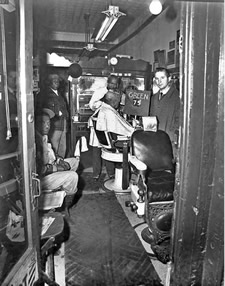 Two of the historians behind the 98 Acres in Albany project that's documenting the neighborhood knocked down for the Empire State Plaza will be at the University Club in Albany November 25 to present a bunch of the remarkable images they've collected. Event blurbage:
Two of the historians behind the 98 Acres in Albany project that's documenting the neighborhood knocked down for the Empire State Plaza will be at the University Club in Albany November 25 to present a bunch of the remarkable images they've collected. Event blurbage:
Ann [Pfau], an independent historian, and Dave [Hochfelder], a professor at the University at Albany, recently embarked on an effort to document the people displaced and the structures demolished to make way for the Nelson A. Rockefeller Empire State Plaza. Stacy Sewell, a professor at St. Thomas Aquinas College, is also part of the 98 Acres in Albany project.
The event will be held at 6:00 p.m. at the National Register-listed University Club of Albany, 141 Washington Avenue, and will include a presentation of dozens of photographs of buildings and the people who lived in them uncovered in their research. Ann and Dave will also share research strategies with those who may be interested in finding out more about their own homes or neighborhoods.
The event is free, but pre-registration is required (details at that first link). Also the U Club will be collecting donations for the Regional Food Bank of Northeastern New York.
Earlier on AOA: 98 Acres in Albany
photo via 98 Acres in Albany
Wide awake, in print again
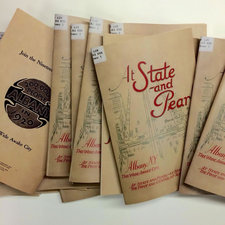 You know that 1916 brochure touting Albany as the "The Wide Awake City" -- the one that sang the city's praises in verse -- that we mentioned earlier this week? Laura Glazer (of Hello Pretty City fame) downloaded it and had the brochure printed.
You know that 1916 brochure touting Albany as the "The Wide Awake City" -- the one that sang the city's praises in verse -- that we mentioned earlier this week? Laura Glazer (of Hello Pretty City fame) downloaded it and had the brochure printed.
A batch of them is for sale about the Fort Orange General Store on Delaware Ave in Albany. They're $10 each.
Hoffman's Playland, ESP neighborhood documentaries set to air

WHMT has scheduled premiere dates for a few local documentaries that a lot of people will probably interested in:
One More Ride: The Hoffman's Playland Story
Pretty much what it says on the label:
"One More Ride: The Hoffman's Playland Story" captures the history of the beloved family amusement park. For 62 years, it was where we brought our children to play and to celebrate birthdays. We rode the roller coaster and merry go round. It was a tradition of smiles and laughter for generations. And while this past season was its final one, WMHT will provide viewers with one last ride as we celebrate the history, nostalgia and memories of Hoffman's Playland. We'll meet the Hoffman family whose long-standing devotion, work ethic and continuous attention to detail and perseverance made the park what it was. It will all come to life through original videography, archival photos, home movies, behind the scenes video and emotional on-screen interviews.
It's set to air on November 29 at 9 pm. (It will also be streamed online.)
The Neighborhood that Disappeared
This is the doc by Mary Paley about the neighborhood knocked down for the Empire State Plaza. (You might remember the Kickstarter for the project.) We get the sense it's very much from the ESP-skeptic perspective. Blurbage:
In 1962, one of the most massive urban renewal projects in American history sterilized the cultural and ethnic heart of Albany, New York. An arrangement made by first term Governor Nelson A. Rockefeller and longtime Albany Mayor, Erastus Corning the 2nd, displaced almost eight per cent of the City's diverse population, razed more than a thousand buildings, dislodged 3,600 households, and closed 350 businesses.
Tune in as 'The Neighborhood That Disappeared' unearths the vibrant ethnic neighborhood that housed courageous immigrants and the Greatest Generation. More than a half-century after it was lost forever; we'll revisit 'The Neighborhood That Disappeared.'
The doc is set to air December 12 at 8 pm.
The pivot and center of Albany's whirl
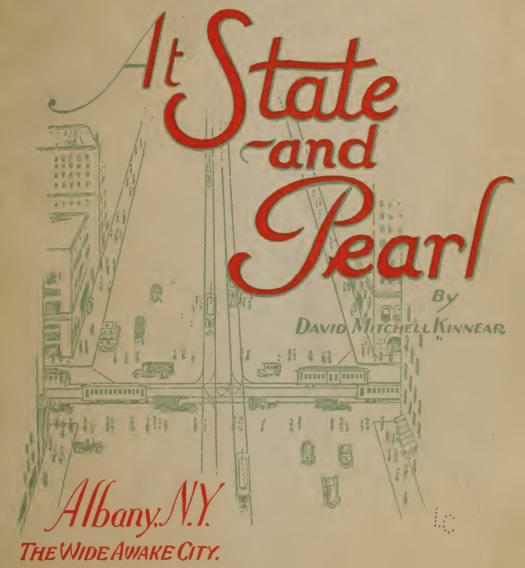
The Wide Awake City.
Local officials are always trying to better sell this area to people from outside the region in an attempt to attract new business and residents. Consultants are hired, reports written, marketing campaigns planned.
But maybe they should try extolling the area's virtues in verse.
A 1916 pamphlet touting Albany -- "At State and Pearl" -- did just, proclaiming Albany "The Wide Awake City." (A tip of the hat to Albany Archives for pointing it out.) The pamphlet is a glimpse at how the city was marketed a century ago. It goes on:
INVITATION TO ALL
Come and Live with us in Beautiful, Historic Albany (Capital City of the Empire State)
For delightful location, satisfactory climate, business facilities and social environment, unexcelled in the United States.
It then launches into multiple pages singing the city's praises. In verse.
"America's Quiet Revolutionaries"
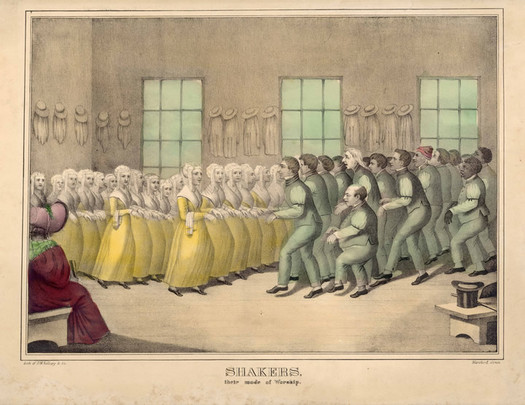
A circa 1840 illustration of a Shaker worship ceremony.
Over the weekend the State Museum opened a "major" new exhibit that could be worth a look: "The Shakers: America's Quiet Revolutionaries."
The exhibit includes hundreds of historic images and artifacts from regional institutions the Shaker Heritage Society, Hancock Shaker Village, and the Shaker Museum | Mount Lebanon. Exhibit blurbage:
The United Society of Believers in Christ's Second Appearing, better known as the Shakers, is the most significant communal religious society in American history.
In the 1770s, the Shakers launched a revolution parallel to that of the American colonists against British rule. As the Shakers sought religious freedom, their spiritual beliefs and communal lifestyle set them in opposition to society. Later their product innovations and marketing skill seemed "revolutionary" to the outside world.
Today, the Shakers are recognized for their tremendous influence on American cultural identity through their social, commercial and technological innovations, decorative arts, and design.
Thematically divided into six areas, the exhibition shows how the Shakers' unique model of an equal society challenged the norms of the "outside world."
As you might know, this region was the site of the first Shaker communities in America -- the very first being the Watervliet Shaker community (on land that's now in Colonie). Influential Shaker leader Ann Lee is buried there.
The exhibit also includes a series of talks, tours, and other events. This Saturday, November 22, there's a free gallery tour with exhibitor co-curator Lisa Seymour at 1 pm.
The State Museum exhibit runs through March 6, 2016.
image: D. W. Kellogg and Co. / New York State Museum
Century-old advice from Trojans
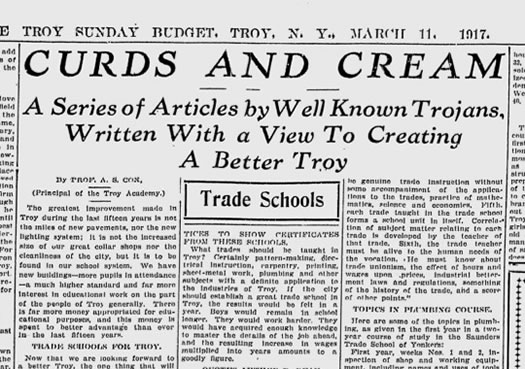
A clip from the Troy Sunday Budget.
It's always fun to have a peek into the history of a city you love. That is why I was tickled to find a bunch of articles from esteemed residents on how to improve Troy -- from 1917.
The Troy Sunday Budget, a weekly newspaper printed from 1916-1927, published pieces called "Curds and Cream, a series of articles by well known Trojans, written with a view to creating a better Troy." Some articles advocated for increased patriotism, while others rallied for a Housewives' League. And some issues are still a topic of discussion today.
Here are a few clips that caught my eye...
In-between places: Duanesburg
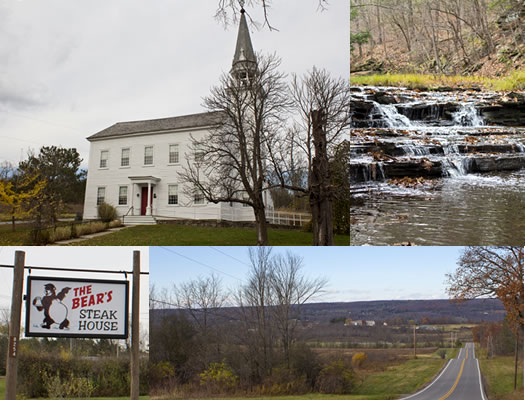
The Capital Region is full of cities, towns, villages, and hamlets. And some of these places -- like Albany or Saratoga Springs or Troy or Schenectady -- get lots of attention. This series isn't about those places. It's about those other spots -- the "in-between" places.
If the namesake of Duanesburg had his way, it would have been the capital of New York.
Obviously that didn't happen, but the town of Duanesburg has still had a long, interesting history. And today it's a warm country community with beautiful views and historic buildings.
Albany History Race
 The Albany Public Library is sponsoring an "Albany History Race" this Saturday, November 8. Blurbage:
The Albany Public Library is sponsoring an "Albany History Race" this Saturday, November 8. Blurbage:
Anyone interested in Albany's storied past is invited to participate in this "Amazing Race"-style scavenger hunt around the city. Over the course of just a few hours on a Saturday afternoon, teams will receive clues and dash around Albany completing challenges. The final stop of the race is McGeary's Pub (4 Clinton Sq.) where each participating team will receive 20 percent off their food and drink that day. The top three teams will receive bragging rights and prizes.
The hunt begins at the Main Library's Albany History Room at 1 pm on Saturday. It's free to participate, but you must register (and you can do so online).
APL advertises on AOA.
Washington Park's former life
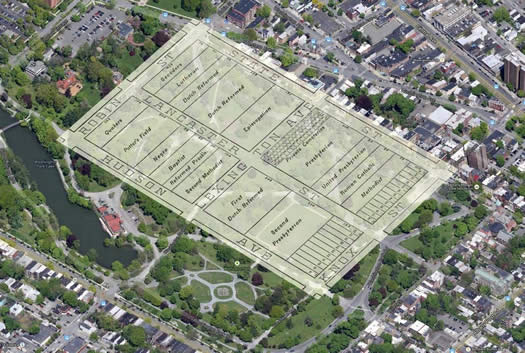
Historical fact of the day, because Halloween: The site of what is now Albany's Washington Park was once a cemetery -- a rather large cemetery.
The image above was created by Albany Archives. It's an overlay of a map of the old cemetery on Washington Park. It covered a big portion of what's now the park.
A few years back Paula Lemire wrote about the "State Street Burying Grounds" over at Albany History. A clip:
The State Street Burying Ground, founded in 1800 as an alternative to the overcrowded churchyards and private family graveyards, was located at the present park's northeast corner. Enclosed by a ten-foot high wooden fence, the grounds were divided into four large section for various churches, as well as an area set aside for strangers, African-Americans, and deceased persons not associated with any religious congregations. Graves from a number of smaller burial grounds were relocated here as progress encroached on downtown churchyards, raising the real estate value of land previously dedicated to the dead.
Within a few decades, however, the State Street Burying Ground was already in serious decline. The high mortality rate of the early 19th-century, combined with epidemics such as an 1832 cholera outbreak, had resulted in a badly overcrowded graveyard. The fence had suffered from neglect and vandalism, livestock wandered freely among graves, headstones were stolen or damaged, and immigrant gangs used the forlorn spot for violent brawls.
After the opening of the Rural Cemetery in 1844, the State Street Burying Grounds' condition became so pitiful that it was deemed "in the highest decree discreditable to the city authorities and the churches interested." A future Superintendent of Albany's parks later recalled that there was "a mouldy and neglected air about the place."
The situation eventually prompted the Common Council to close the cemetery, and the graves -- said to be 40,000 in number -- were moved to the then-new Albany Rural Cemetery all the way out in the far, far reaches in would come to be called Menands.
Of course, the Albany Rural Cemetery still exists (even if it's no longer rural). And it's a nice place to walk as you take in the monuments to the many Albany-famous figures from the past.
Earlier on AOA: Capital Region haunts
Altering history with Jacopo Della Quercia: The Great Abraham Lincoln Pocket Watch Conspiracy
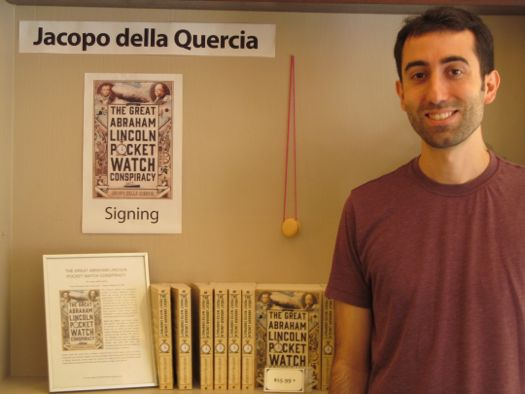
Giacomo Calabria aka Jacopo Della Quercia, author of The Great Abraham Lincoln Pocket Watch Conspiracy
Giacomo Calabria grew up watching movies like Back to the Future, Bill and Ted's Excellent Adventure, Indian Jones and The Last Crusade, and listening to his parents tell bedtime stories about Genghis Kahn. Maybe that explains a little about how this Albany resident approaches history.
Under the pseudonym Jacopo Della Quercia, Calabria has been a frequent contributor on fun and fascinating bits of history at the humor website Cracked. He came to Albany a few years ago to be closer to family (his brother and sister-in-law own the popular Lark Street bakery Crisan) and started work on his first novel -- the newly released Great Abraham Lincoln Pocket Watch Conspiracy -- "an equal-parts cocktail of action, adventure, science-fiction and comedy" that brings together William Howard Taft, Robert Todd Lincoln and other historical figures to solve a mystery that stretches back to the Lincoln assassination.
Calabria will be at Northshire Books in Saratoga Friday evening for a reading and signing of The Great Abraham Lincoln Pocket Watch Conspiracy.
He talked with us this week about his passion for history, leaving Easter eggs for curious readers in the age of Google, and Albany's disturbing connection to the Lincoln assassination.
Maybe there wasn't enough money for a spaceship

OK, it probably wasn't a spaceship. Probably.
One of the things we like about flipping through old architectural renderings is seeing the things that were proposed and, for whatever reason, never ended up being built. Because sometimes there's some out-there stuff.
An example we came across today in UAlbany's online photos archive: Renderings of the Empire State Plaza that show some sort of arc spaceship-type-thing where the State Museum now stands. One of the images is above.
There renderings are part of a small group showing what the then-not-constructed ESP could have looked like. Here are the renderings, along with a few things that struck us about them...
Covered in history

The objects of history can take many forms: artifacts, paintings, sculptures, devices, even blankets.
Yep, blankets.
The Albany Institute opens a new exhibit these weekend that highlights the museum's collection of textiles -- specifically quilts, coverlets, and bed hangings -- from the 18th, 19th, and 20th centuries. And while that might sounds a bit... sedate? ... we were struck during an early peek at the exhibit this week how much the quilts served as a media to communicate ideas, desires, and identity. They were like the Pinterest boards of the 1700s.
Here are a handful of photos from the exhibit, along with a quick Q&A with the institute's chief curator about quilts as social media, the evolution of the bedroom, and why textiles need their rest.
The Albany riverfront has been a topic of concern and potential for a long time
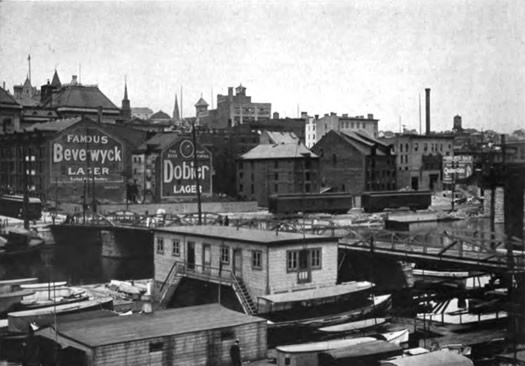
The State Street Pier on Albany's riverfront in 1914.
The Albany river front -- how to better connect it with downtown, how to add amenities, what to do with 787 -- has been a frequent topic of conversation for years.
How many years? At least a hundred.
The Hawk Street Viaduct
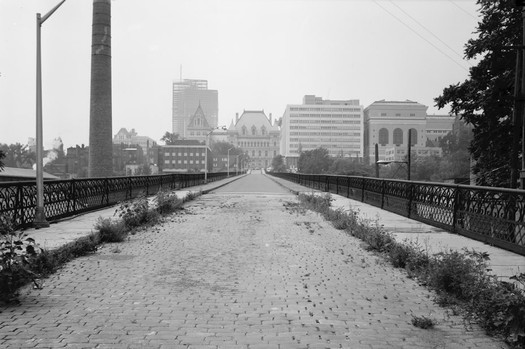
Note the still-under-construction Corning Tower in the background.
Historical photo of the day: The Hawk Street Viaduct in Albany, which once spanned Sheridan Hollow, connecting Arbor Hill to area near the State Capitol.
The bridge was built in 1890, and was apparently a bit of a marvel because it was said to be the first cantilever arch bridge. The viaduct was demolished in 1970 after being allowed to fall into disrepair (it had been closed to vehicle traffic in 1968 because of safety concerns). [Smithsonian Institution, p 200]
Carl wrote a great post about the viaduct a few years back. And here's a postcard of the bridge from the early 1900s, via the Albany Postcard Project.
A large-format version of the photo above, along with a few other photos from the Library of Congress, after the jump.
Albany I Spy: Center Square
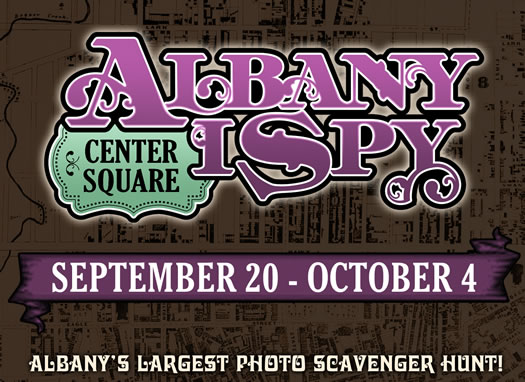
It lives: The Albany I Spy scavenger hunt from Albany Archives and the Albany County Convention & Visitors Bureau is returning for a second year, and this time around it's focused on the Center Square neighborhood. How it works:
Step 1: Download the form here on September 20
This is your Master Albany I Spy Clue Sheet. Sounds important, right? It is! Be sure to write your name and contact information where indicated because this is how we will contact the winners.
Step 2: Set your course
You'll use the clues on this form to identify the mystery landmarks. Then, set your course each day - or wait for one spectacular day - to head to Center Square to spy and write the name of the landmark on your Master Clue Sheet.
Step 3: Get extra clues
Stumped? Don't worry, we're here to help! Each day, we'll be posting a special extra clue on our social media sites: Albany Archives, Discover Albany, and All Over Albany, or search using the hashtag: #albanyispy.
The deadline to submit your answers is October 4 (see the details at that link). That same day there will be get-together at the Center Square Pub at whic the winners will be announced and prizes (many of which are gift certificates to downtown Albany businesses) will be handed out.
Last year's contest drew a good crowd and people seemed to have a lot of fun at the meetup.
Yep, AOA is a media sponsor of the hunt.
The history of Albany as seen through beer-colored lenses

Upper Hudson Valley Beer and co-author Craig Gravina
There are many ways to look at the long history of Albany and the surrounding region: politically, economically, architecturally, and so on. Craig Gravina and Alan McLeod have chosen to do so through beer-colored lenses.
The two beer scholars -- you might remember them from the Albany Ale Project -- have teamed up to write Upper Hudson Valley Beer, a book about the rich history of brewing in this region and its resurgence over the last few decades. There's a launch party for the book -- with a beer tasting -- at the Albany Institute on September 11.
We bounced a few questions to Gravina this week about the role of beer in Albany's history, the state of the region's beer scene today, and where it might be headed.
Albany County, Wyoming
Historical/geographic note of the day: There are two counties named "Albany" in the United States -- in New York, of course, and also in Wyoming.
As it happens, that county in Wyoming is named after Albany, New York.
How'd that happen? Well, there was this guy...
Voices for a mighty argument
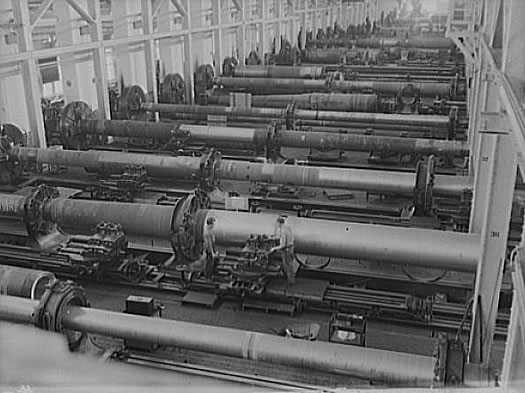
We were browsing through the local photos today on the Yale Photogrammar site -- an easy-to-use interface for 170,000 photographs from 1935 to 1945 created by the United State's Farm Security Administration and Office of War Information -- and came across this photo of the Watervliet Arsenal in 1942, taken by Alfred T. Palmer. The caption:
Voices for a mighty argument. A long line of big guns being rushed toward completion under the war production program. Guns shown here are being turned out in the major caliber shop of a large eastern arsenal
One of the cool things about the Photogrammar site is its map which allows you to search the collection by location. There are something like 220 photos from the immediate Capital Region in the collection. And the thing that was interesting about them -- to us -- was just how ordinary the scenes in them seemed to be. A lot of them are of people working -- making tanks at Alco, haying a field ("someone has to do it"), folding laundry at a stove, riding bikes from school.
We did come across a few "hey, that's that place" photos: that building with the columns on Union Street in Schenectady, State Street in Schenectady, the then-still-active train station in Chatham.
98 Acres in Albany
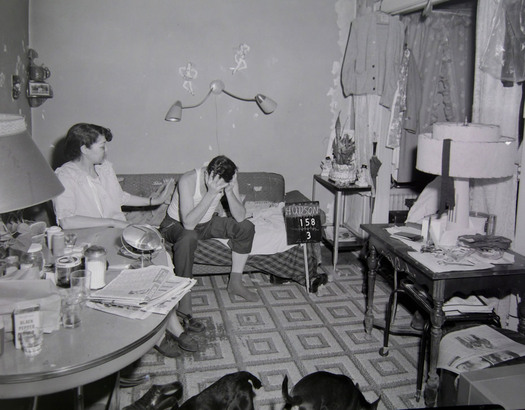
A scene captured by state Department of Public Works photographer in 158 Hudson during the time leading up to the demolition of the neighborhood for the construction of the Empire State Plaza. Pfau and Hochfelder say it was one of the first photos they turned up that prompted them to think the materials could lead way to telling more intimate, human-scale stories about the neighborhood replaced by the ESP.
Almost everything about the Empire State Plaza is big: its physical size, its place in Albany's skyline, its presence in the city's history over the last century. It is architecture and history on a huge scale.
But a new project is aiming to focus on the smaller, more intimate parts of the ESP's history. A group of historians, on Twitter as @98AcresinAlbany, is uniting two sets of photos -- a series of meticulous exterior shots in the Albany Institute collection, and a series of interior photos from a collection at the State Archives -- to recover a more detailed picture of that time.
98 Acres in Albany is the creation of Ann Pfau (independent historian), David Hochfelder (professor at UAlbany), and Stacy Sewell (professor at St. Thomas Aquinas College). Their ultimate goal is to create a website to host these photos, document the history of the neighborhood, and collect memories and stories related to the ESP.
As Pfau recently told us: "We've found that everyone has a story about the Empire State Plaza, and everyone has an opinion about the Empire State Plaza."
Fort Nassau

The spot identified by John Wolcott as the former location of Fort Nassau.
Today's moment of nerding out on local history: A research says he has determined the location of Fort Nassau, the first Dutch settlement in what is the place we all now call Albany. The place said to be the site: a spot at the north end of a rail yard at the Port of Albany, just to the east of I-787.
John Wolcott says he was able to pinpoint the location of Fort Nassau by studying different maps, some that date back to the 17th century. It was a 1910 map that he says allowed him to coordinate the maps and pinpoint the fort's location.
Fort Nassau was built in 1614 on an island (called Castle Island) in the Hudson River (then called the North River by the Dutch). By 1618 a couple of floods had convinced the Dutch that maybe that wasn't the best spot. Fort Orange was then constructed on the west bank of the river in 1624 (close to what's now downtown Albany).
Castle Island no longer exists -- the water separating it from the shore was filled in. The spot is now part of the Port of Albany, and more specifically, is controlled by Global Partners, which has been using the port as a distribution node for oil by rail.
Said Wolcott today in a press release:
"If we can test the site, and if it's proven that some serious history can be uncovered, then the property should be acquired by the public or an academic institution so that a careful archaeological excavation can be conducted without a construction deadline. It could be an excellent site for further study as well as a tourist attraction of international multicultural significance."
Though Fort Orange -- and Fort Nassau -- often get attention when the local history of Albany is told, there is said to have been an even older structure built by Europeans in what is now Albany. In 1540 it's thought that French fur traders traveled up the Grande River (their name for the Hudson) and set up some sort of fortified trading post on what would be known as Castle Island. (It was -- surprise -- destroyed by a flood.) In fact, the "castle" in the island's name referred to ruins of that fort.
image: John Wolcott/Google Earth
Cast iron and hollowed-out tree trunks
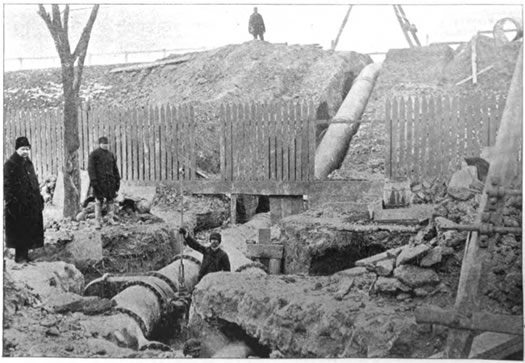
A water main being constructed at the former Bleecker Reservoir in Albany around 1898. (The reservoir would later be converted to Bleecker Stadium.)
Reading this recent NPR segment -- about the 200- or 300-year replacement cycles for water mains in some cities -- got us curious about Albany's water mains. And that led us to this bit from the Albany water department (emphasis added):
Fifty-five miles of Albany's 376 miles of water mains were installed in the mid-19th Century. However, some of the mains may even be older, with some cast iron mains possibly installed in 1813. If true, Albany would have the oldest functioning cast iron pipe in the western hemisphere. Incidentally, all of the water mains in the City originally were hollowed-out tree trunks, many installed in the 1700's. Although unlikely, there is a very remote outside chance that somewhere beneath some of the oldest parts of our City, a functioning wooden water main remains.
Yep, hollowed-out tree trunks (see: a 19th century overview of how that worked). And about 15 percent of Albany's water mains are at least 150 years old.
That a good chunk of the city's water infrastructure stretches back a century-and-a-half makes sense. It was around 1850 that the city started the planning on what would be the foundation of its modern water system.
Albany's oldest buildings
The Van Ostrande-Radliff House is the oldest (still mostly there) building in the city.
Albany is an old place -- roughly 400 years old, depending on how you're counting. So it's going to have some old buildings. But how many? And which buildings? And how old?
There weren't good, comprehensive answers available to those questions until this week. On Tuesday the Historic Albany Foundation released the results of a year-long survey cataloging city buildings constructed before 1860.
And there were a lot! HAF, working with historians Don Rittner and Walter Wheeler, found more than 1,000 buildings for the list. And about 15 percent of them hadn't previously been listed on a historic register.
Historic Albany has posted results of the inventory online, and it's asking members of the public to suggest buildings that should be on the list.
Well, you know how we are. So it probably won't surprise you that we pulled the list for some interactive maps and a few notes...
Hey there: Nathan Hoffmann, war reenactor
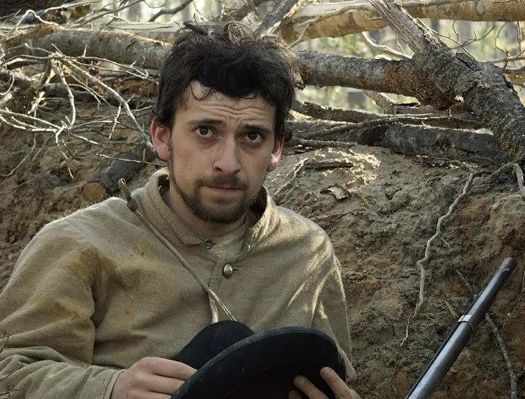
Nathan J. Hoffmann, in Civil War uniform (Credit:Tom George)
Last weekend 20-year-old Nathan J. Hoffmann was in the middle of an army field hospital with wounded and bleeding soldiers near Rochester.
Everyone was healed by Monday morning.
Hoffmann is a reenactor -- one of the guys you see at historic sites and encampments, dressed in garb from the Revolutionary, Civil or French and Indian War. When he's not reliving battles of the past, he's watching Netflix, hanging out with friends, working as a guide up at Fort William Henry, or reading up on the history he reenacts.
Nathan talked with us this week about why he spends his free time dressed in period costume reenacting battles, the meaning of "FARB," the division between mainstream and more intense first-person reenacting, and the great time he had freezing with George Washington.
Yaddo to offer tours in September

The main house at Yaddo, open to the public on September 21
Yaddo, The Artist's retreat in Saratoga founded by Spencer and Katrina Trask is opening for tours for one day in September. The house, normally closed to the public, hosts artists, writers, filmmakers, composers and performance artists. Leonard Bernstein, John Cheever, Truman Capote and Eudora Welty are just a few of the artists who have had residencies there.
The main house and cottages have opened for tours about five times, and each time they sell out, and the waiting list is very long. They'll open for public tours for only the 6th time in the organizations 114 year history on September 21. Two hour tours will be offered at 8:30 am, 11am, 1:30 pm and 4 pm. There will also be a deluxe tour available to 50 guests on September 20, from 4-7 pm with a reception. Tours are $50. Tickets are available here. The deluxe tours are $250.
We took the tour in 2011 and it's really interesting. You get to see the dining rooms, a studio, the elegant staircase where John Cheever is rumored to have ridden and antique sled, and artist's studios. Even the pencil sharpener under the stairs made us wonder what was written with the No. 2s sharpened there.
You can check out the rose garden and rock garden at Yaddo anytime between dawn and dusk for free. It's a great place to have a quiet picnic in Saratoga.
The Legend of Major Duncan Campbell

The grave of Duncan Campbell in Washington County (with replica headstone). / photo: John Bulmer Photography
Fun: Duncan Crary will be telling the story of Major Duncan Campbell of the Black Watch -- "New York's first world-famous ghost story" -- this Thursday at the Malt Room in Troy. As the story begins:
The widely circulated legend of Major Duncan Campbell says a desperate man came knocking wildly on the doors of the house of Inverawe one night. He had blood on his hands and kilt, and begged for sanctuary -- a sacred oath of protection granted in the Highlands of Scotland.
Duncan vowed to shelter the man and swore on his dirk, a traditional and ceremonial dagger worn by Highland Scots.
Soon after, a group of men arrived at Inverawe to inform Duncan Campbell that a highwayman had murdered his cousin, Donald Campbell. The men had last seen the murderer heading that way. But Duncan had already given his word that he would shelter the very same bandit, and so he concealed him from the gang.
Campbell later gets dispatched by the British to North America to fight in the French and Indian War in what's now known as New York -- at a place called "Ticonderoga," a word that would haunt Campbell. The story would later become famous thanks to Robert Louis Stevenson.
To go along with the story at the Malt Room, there will be a Scottish-theme menu and a scotch tasting. And bagpipes. (We've been assured they'll be "indoor bagpipes." Maybe that's like bagpipes using their indoor voice.)
The story starts at 6 pm on Thursday, July 24. Admission is free.
As you know, Duncan and AOA have worked together on AOA events, and he occasionally writes for AOA.
Teammates

Pictured above: The 1932 Albany High School senior girl's basketball team, which had a "record that would be difficult to surpass" (it included a surprise championship in their sophomore season).
The photo is from the 1932 AHS yearbook recently added to the Albany Public Library's collection on the New York Heritage online archive. The APL is looking for donations for yearbooks from other years to add to the collection.
Flipping the 1932 version was interesting, seeing all the club and team photos, wondering what paths the lives of the then-teens ended up taking. And the back of the book includes some interesting ads -- even a few for businesses still in operation.
APL advertises on AOA.
Remembering Friday nights in Troy

A bustling Troy, circa 1940
You can get an idea of the history of a place from books and museums, but it takes on a different flavor when you talk about it with someone who has lived there for a long time. Older people can have a different sense of the same place because of the changes they've seen -- and you can learn some pretty interesting things from them.
Back in the early 1940s Nancy Barrett was a teenager living with her father and two older sisters in Lansingburgh. Barrett still lives in Troy today, so she's seen a lot of changes in the city -- and a lot of them she likes. "I think there are people now who are getting things done," she says.
But when you ask Nancy Barrett if there's anything she misses about the old days in Troy, the answer comes quick and sure: Friday nights.
That time whales swam to Albany

From a circa 1684 map of what was then called New Netherland.
That article about a possible shark in Lake Ontario reminded us about a story we once heard about whales swimming up the Hudson River to Albany.
Just another fish (er, cetacean) story, you say?
Well, it's true. Really.
How you get there matters, because getting there is half the fun
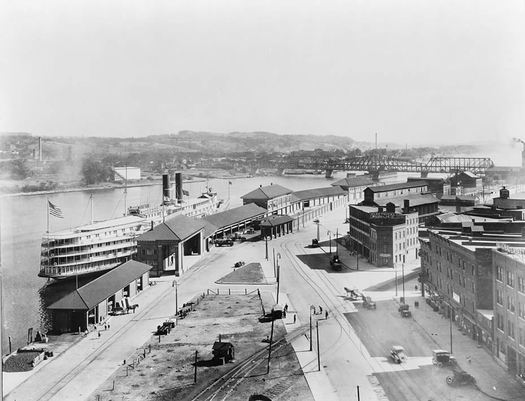
Part of the Albany riverfront was once known as Steamboat Square (shown here in 1921), where people would board steamships for travel along the Hudson River. / photo from Library of Congress via Wikipedia
By now, you probably know "The New York City People" have arrived in Hudson. Or as one writer for the BBC put it, the place has become "a far north weekend colony of New York City."
Like most Upstaters, I'm not impressed by people simply because they're from "New York." But I am impressed by how they come from New York to Hudson. They take the train, for two hours.
Not only does that demonstrate the appeal of Hudson, it demonstrates the appeal of traveling by train. Or any car-free and easy travel, really. The key word being easy.
Solomon Northup Day 2014
 The 16th annual Solomon Northup Day, honoring the Saratoga Springs historical figure and his story, is coming up
The 16th annual Solomon Northup Day, honoring the Saratoga Springs historical figure and his story, is coming up July 16 July 19. And a program related to the day is back at Skidmore. From the lineup of events:
+ The keynote speaker is Yale professor David Blight, a historian and director of the university's Gilder Lehrman Center for the Study of Slavery, Resistance, and Abolition.
+ Actor Devyn Tyler, who played Northup's adult daughter in 12 Years a Slave, will be there to talk about her experiences making the film.
+ Panel discussions with Northup researchers David Fiske, Clifford Brown, and Rachel Seligman -- who wrote Solomon Northup: The Complete Story of the Author of Twelve Years a Slave -- and Paul McCarty, director of Ft. Edward's Old Fort Museum.
+ A panel on the history of slaves with Don Papson, founder and past president of the North Country Underground Railroad Historical Association; Paul Stewart, co-founder of the Underground Railroad History Project; Brooke Hathaway, manager of anti-trafficking programs at the National Underground Railroad Freedom Center; and Joshua Woodfork, former faculty member in Skidmore College's American Studies Department.
+ Performances from jazz saxophonist T.K. Blue; violinist Henrique Prince of the Ebony Hillbillies, and local musician Dan Hubbs and friends.
+ A "large number" of Northup's descendants are expected to be there.
The events are from 12:30-6 pm on Saturday, July 16 July 19 in Skidmore's Filene Recital Hall. They're free.
The memoir: Northup's memoir, Twelve Years A Slave, is available to read/download via the Internet Archive.
illustration from Twelve Years A Slave
Albany's reflection of Brazil
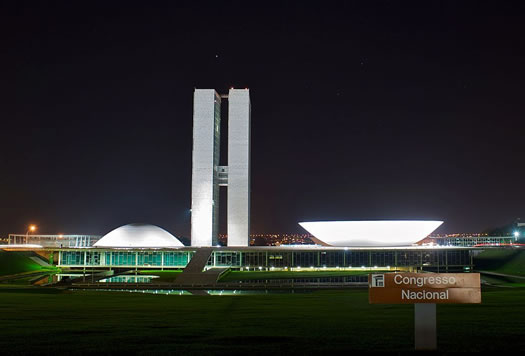
The National Congress Building in Brasilia. Look familiar?
Without all the attention focused on Brazil right now for the World Cup, we thought it'd be interesting to highlight a reflection of the country in Albany.
Yep, Albany.
"This is the hat."
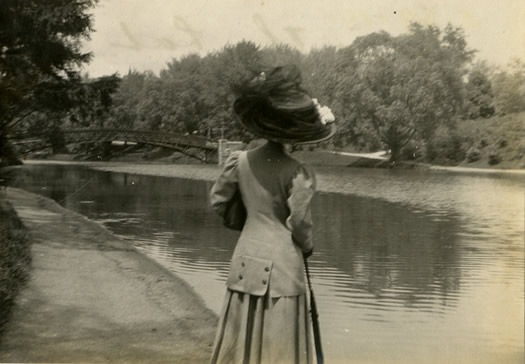
Think of it as today's moment of summer -- 104 years ago: "Annie Ray Andrews modeling hat at Washington Park in Albany, New York."
The photo is from a collection at the Florida Memory project related to Koreshan Unity, a "communal utopia" group that eventually found its way to Florida after stops in New York and Chicago. Its leader, reportedly prompted by a vision involving a beautiful woman, had some rather unusual views about the world.
From a biographical note about Andrews on the photo: "Daughter of Dr. A.W.K. & Virginia Andrews. Born May 6, 1879 in Binghamton, New York. She played in the Koreshan Unity orchestra. Died 1928 in Philadelphia, Pennsylvania."
And a handwritten note on the back of the photo: "This is the hat."
[via The Commons on Flickr]
A dance with the princess
Check it out: It's film clip from the 1959 ball at the Washington Ave Armory honoring then Princess Beatrix of the Netherlands. The clip includes of the princess dancing with Nelson Rockefeller. We came across the video today via The Albany Muskrat, who you should be following on Twitter.
Other than the hey-how-about-that factor, so what? Well, the Princess Beatrix's visit is said to have been the catalyst for Rockefeller to push for the creation of the Empire State Plaza, because the condition of the city embarrassed him as he and the princess toured the city. (A later visit from Danish royalty apparently had a similar effect.)
Beatrix was in Albany as part of a tour of the Hudson Valley for the 350th anniversary of Henry Hudson's voyage up the river. The 21-year-old princess arrived in the city via 65-foot yacht, and disembarked looking "radiant in her gray shantung dress with matching hat and belt."
Albany, in an alternate future
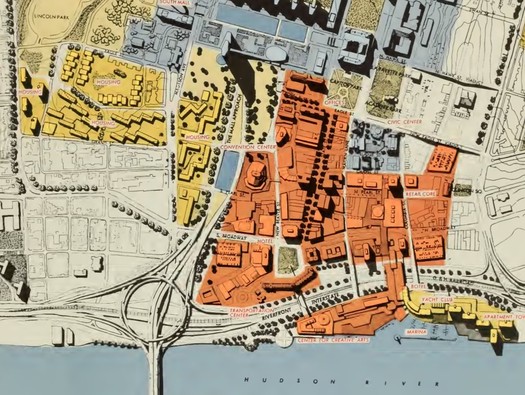
As proposed in 1963.
Check it out: A comprehensive plan for redeveloping the city of Albany -- as proposed in 1963.
Albany Archives sent along the link. And as AA commented:
A convention center on Elk St, housing at Jennings Landing, "The Washington Park Arterial"... it's so scary! Heres the take away quote: "By 1980, central area of Albany, like cities all over the United States, will be almost completely rebuilt."
The plan is fascinating, both because parts of it are remarkably prescient and others are totally bonkers.
We've pulled a handful of images and maps, along with a block of text that floats some options that now sound completely unbelievable...
Grace Peak
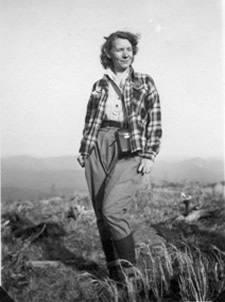 East Dix, one of the 46 Adirondack High Peaks, was recently renamed Grace Peak in honor of Grace Hudowalski, one of the original 46ers (she was #9). Here's the mountain on a map.
East Dix, one of the 46 Adirondack High Peaks, was recently renamed Grace Peak in honor of Grace Hudowalski, one of the original 46ers (she was #9). Here's the mountain on a map.
Hudowalski lived in both Troy and Albany, and Paul Grondahl recently had a nice story about her legacy and what she's meant to many Adirondack hikers.
From an Adirondack Forty-Sixer bio of Hudowalski, in reference to her first hike up Mt. Marcy:
Reflecting on that trip years later she said,
"It was tough. I was on all fours sometimes. I didn't think I was going to get there. But I had to get to the top - there was some reason. God knows what it was but I had to go on. And on the top just for a fraction of a moment, the clouds lifted while I was there and I looked down and there a mile below me was Lake Tear of the Clouds, the Hudson's highest source. And you know, that did something to me. I had seen something - I felt it. I never forgot the mountain and I never forgot that trip."
From that point on she said, "I never talked about anything but mountains. I talked about them, I wrote about them. I gave speeches about them."
Hudowalksi passed away in 2004 at the age of 98.
As Douglas Arnold, the Forty-Sixer who led the effort to name the mountain in honor of Hudowalksi, said to the Syracuse Post-Standard: "Everyone has a mentor, a coach, a parent or grandparent, friend, or teacher who influences the outcome of their life. These angels are remembered but rarely honored. Grace Hudowalksi was a mentor to thousands of people as she shared her enthusiasm for the Adirondacks with everyone."
Earlier on AOA:
+ The Winter 46ers
+ How to hike the High Peaks and not be That Guy
photo via The Adirondack Forty-Sixers
The great pedestrian match at Troy

Edward Payson Watson, the great star of late 19th pedestrian races (really), who competed in Lansingburgh.
Tim emails us this morning: "I was having pint with my brother last night at Ryan's Wake and he told me about how pedestrianism was once a huge spectator sport in America. It was basically sitting around and watching people power-walk in an arena."
Not only is this true, but there was one of these pedestrian events -- specifically, a 100 mile walking race -- in Troy, featuring the sport's greatest star.
Watching the creation of the Empire State Plaza
Check it out: "The Making of the Mall," a short documentary produced in the 1960s and 70s about the creation of the Empire State Plaza. The doc includes film of downtown Albany before the ESP, scenes of the area being razed, and shots of the buildings under construction. It really puts the scale of the ESP into context.
From the narration:
The promise of the mall was magnificent. The reality discouraging. Ninety-eight acres of devastation, dust, and debris loomed more like the aftermath of war than urban renewal.
Violent legal and political wrangling had been in evidence from the outset concerning the feasibility and value of this grandiose project. 6800 residents and 350 small businesses had been displaced with no housing planned for their relocation and, it seemed, no concern for their future.
And then later in the doc...
Though the years that went into making the mall were often painful, especially for longtime residents who had seen their homes, their schools, and their churches obliterated to satisfy the ego of one man, today they are proud of what they once called Rocky's Folly. But which has transformed a 300-year-old Dutch town into the most spectacular capital in the country.
We came across the film via Carl, who in turn found it via the Albany... The Way It Was FB group. As Carl notes of the film:
Not entirely sure what year it was from, but it appears to have been the work of Helen C. Welsh, a school librarian, library studies instructor, and serious amateur filmmaker whose other gems, such as the story of the Tulip Festival, we can only hope to uncover.
The film is about 17 minutes long and well worth a look. We've pulled a few screengrabs to give you a sense of what it includes -- they're after the jump.
Riding the day line
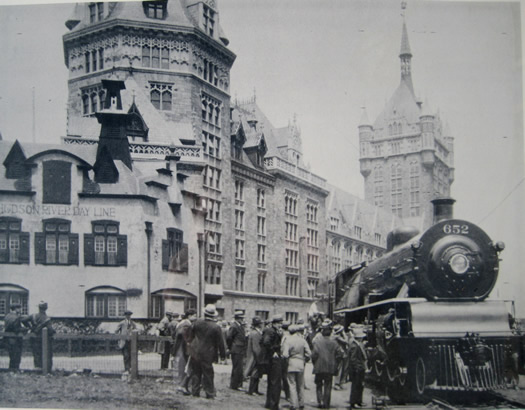
Speaking of day trips along the Hudson by train and boat... Duncan sent along this great photo of the Hudson River Day Line building in downtown Albany from around the early part of the 20th century.
The Hudson River Day Line operated steamboats on the Hudson between Albany and New York City from the late 1800s all the way into the 1940s, and was for a time considered the classy way to travel. Its ticket office -- which still stands -- is in the foreground left. The big building in the back was the headquarters of the Delaware & Hudson Railroad (it's now the SUNY admin building).
And have a look at the Len Tantillo painting imagining the ticket office in 1910.
The Albany molasses spill of 1968

The AP article that ran on the front page of the Toledo Blade, and in other newspapers around the country. (The story was on page 3 of the Schenectady Gazette. Presumably it got more attention in the Knickerbocker News.)
Odd bit of local history: In 1968 there was a fatal molasses spill at the Port of Albany. You read that correctly.
On December 20 of that year a tank holding 12,000 tons of molasses at the port ruptured, spilling its contents. One man was killed, and another suffered minor injuries. From an AP story at the time:
The Old Store
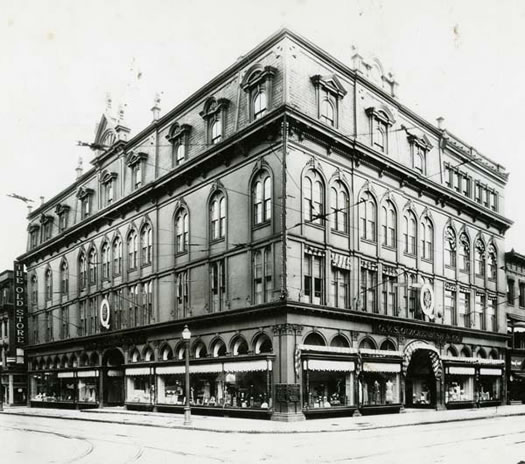
Love that big "Q" on the side of the building.
Last week we got a chance to gawk at downtown Troy's historic Quackenbush Building as it currently stands -- empty, though that will soon change as the Tech Valley Center of Gravity is set to renovate and move in later this year.
The building had a long history as a department store dating back to 1856. So long is this history that back in 1938 an article in The Times Record (Troy) noted the "long and distinguished history" of the building -- 80 years at that point -- as the home of the G.V.S. Quackenbush and Co.* department store. The article was about the impending switch of the building to the W.T. Grant & Co. store, and all the renovations and upgrades (air conditioning!) the new owners had made.
Yep, this building is headed for at least its third or fourth life.
Anyway, we were curious about that "long and distinguished" history of the building. And the people at the Rensselaer County Historical Society were nice enough to send along this undated photo of the Quackenbush from when it was still the home of Quackenbush & Co. Or, as a sign on the side of the building proclaimed, "The Old Store."
* G.V.S. Quackenbush = Gerrit Van Schaick Quackenbush, a Capital Region historical name if every there was one.
photo: Courtesy of the Rensselaer County Historical Society, Troy NY
Docked in the past

People traveling up the Hudson and disembarking at the Albany riverfront. Hmm, interesting...
We came across this photo today while doing some research on a different historical topic -- it's a circa 1921 photo of what was once known as Steamboat Square on Albany's riverfront. Seeing the boat docked there, and the buildings up against the river, just gave us one of those the-past-is-a-different-place feelings.
Here's a larger version.
Earlier on AOA:
+ Riding the trolley -- everywhere
+ Postcards from the past: Albany
photo from Library of Congress via Wikipedia
A miniature version of Troy and its past

Troy's former Union Station as it once was -- and still is, in miniature.
Of all the things you might expect to find in the basement of a college dorm, a meticulously-built recreation of 1950s Troy is probably not one of them.
Yet in the basement of RPI's Davison Hall the Rensselaer Model Railroad Society has been constructing a to-scale version of the city and other spots around the region that were connected by rail. The work has been going on for more than three decades -- and it's a sight to see.
Even geniuses need a nap now and then
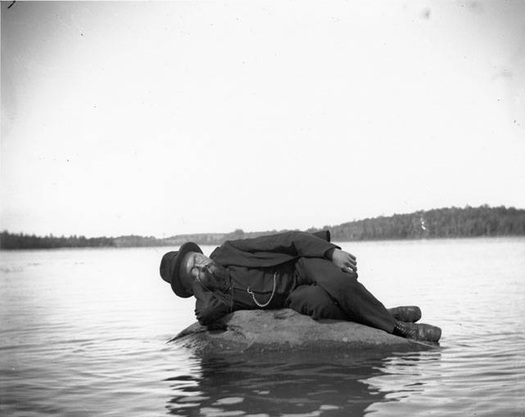
We were browsing through the local collections of historical photos on the New York Heritage site week when we came across this photo of Charles Steinmetz on a rock in Thompson's Lake (out by what is now Thacher State Park). The picture dates to 1894.
Steinmetz -- a genius engineer who worked for GE in Schenectady -- is easily one of the most interesting figures in Capital Region history. He was also, by many accounts, quite a character.
Here are a bunch of other Steinmetz photos from the digital archive.
Update: The locally-produced documentary Divine Discontent: The Life of Charles Proteus Steinmetz, is set to run again on WMHT this Sunday at 3 pm, and next Tuesday at 8 pm.
photo via miSci and the Steinmetz Digital Collection of Schenectady
Earlier: The Wizard of Schenectady
The extraordinarily 80s Crossgates promo film
A link to this video on YouTube -- a 1984 promo film by the Pyramid Companies for the then just-opened Crossgates Mall -- popped up in our inbox with a message from Fred that simply said: "Eight minutes of eighties awesomeness."
Heh. And Fred was right. It is 80s-tastic, like some synthesizer newsreel film. Come for the 80s fashion and stores long gone, stay for the the now-three-decade-old aerial footage.
A few stills are after the jump to give you a sense of the video...
The Meade Brothers' daguerreian gallery

The Brothers Meade, Charles (left) and Henry.
Photography is so ubiquitous now -- almost everyone carries around some sort of camera in their pocket -- that it's a bit difficult to imagine a time when it was a new and rare. That to be a photographer was to be on the avant garde of art and technology.
As it happens, two of the earliest famous photographers were from Albany: Henry and Charles Meade.
The monument in Monument Square
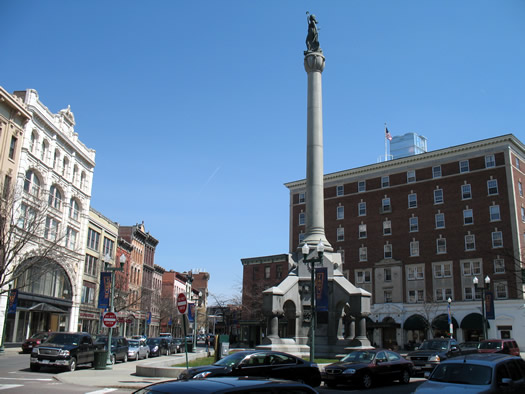
The center of downtown Troy -- figuratively, if not necessarily geographically -- is Monument Square. And it's aptly named -- there's 93-foot monument right in the middle of it.
So, to what is it a monument?
Here's the answer, which includes a bunch of little bits about Troy's history...
Hoarding at the Rensselaer County Historical Society

With over 30,000 items in their collection, what keeps RCHS off Hoarders
The difference between collecting and hoarding lies somewhere between owning only what you can carry and... well... what you see on the A&E channel.
But at The Rensselaer County Historical Society (RCHS) collecting is their mission. RCHS has more than 30,000 items in its collection -- which may appear to tip to the side of hoarding, but their new exhibit helps explain what they choose to keep and why.
Views of Albany then, now online
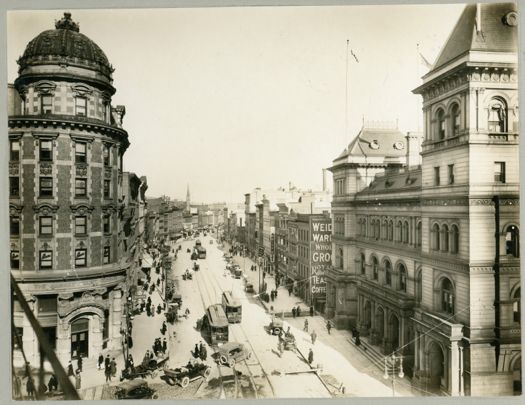
A view of Broadway from the corner of State Street in 1910.
The Albany Public Library has a pretty impressive collection of the city's history in the Pruyn Room -- its local history room at the main branch of the library on Washington Avenue. And as of this week, for the first time, some of those images are now available online.
APL has been working with New York Heritage -- "a free online portal designed for researchers and history buffs" -- to digitize the collection in the Pruyn Room. The library's starting with a series of photos from the late 19th and early 20th centuries, and an interesting scrapbook with before-and-after shots of downtown Albany, the O'Brien Federal Building, and 787.
That time Albany got almost 4 feet of snow during one storm

From the Blizzard of 1888: This photo was taken in Albany on Pearl Street, near Maiden Lane.
So this winter has been, for many people, something less than pleasant. And the ice/snow storm this week -- the second week of March -- is dragging out the frozen frustration. But it could be worse. A lot worse.
This same week 126 years ago, Albany and the rest of the Northeast were hit with The Great Blizzard of 1888. Also known as "The Great White Hurricane," the Nor'easter dumped many feet of snow through New Jersey, New York, Connecticut, Masschusetts.
From a National Weather Service-Albany recap of the storm's effects here:
The blizzard by which all others are measured. Light snow began around 3 PM on Sunday the 11th, accumulating to near 3" by midnight. The snow intensified overnight and there was 18" on the ground by daybreak on Monday the 12th. Moderate to heavy snow continued throughout the day accumulating to 33" by midnight. Snow continued on and off through Tuesday the 13th, adding roughly another foot, until finally ending around 3 AM on the 14th. Total snowfall for the storm was 46.7", but the drifts were significantly higher.
The city of Albany was virtually shut down. There were no coal deliveries, and thus, no heat. Doctors were unable to make house calls, and it took many days to clear the snow off of country roads to make them passable. At the time it was called the "worst storm in living memory," and it still holds the distinction of the worst winter storm on record in many areas of the northeast.
Those 46.7 inches of snow are the single-storm record for Albany, and not by a little bit. The storm with the next highest total -- March 13-14, 1993 -- piled up "just" 26.6 inches of snow.
Thanks almost entirely to that storm, Albany recorded more than 50 inches of snow in March of 1888. That was almost half the total for that entire winter -- which, at 110 inches, is the second snowiest on record.
By the way: As of the end of Wednesday, Albany was at 65.9 inches of snow for this winter -- that's about 14 inches more than the typical total by this point. [NWS]
photo: "27 N. Pearl, Blizzard of '88," from the Morris Gerber Collection via the Albany Institute of History and Art.
Albany Postcard Project

A screengrab from the new site.
Behold, some delicious local history nerd candy: the Albany Postcard Project.
The site, a creation of Albany Archives and collaborators, is an online collection of local vintage postcards mapped to the places from which the images were taken/illustrated. The entries also include dates about when the postcard's publishing era, when/from where/to where it was sent if mailed, and the message on the back.
Example: Here's an entry for a 1907 postcard of The Trust Building at the corner of State and Broadway in downtown Albany. (The SUNY Research Foundation currently occupies the building.)
From the project's about page:
At its peak, the postcard craze of the 1900s spawned thousands of images from many American cities, hundreds of them from Albany. The Albany Postcard Project is a community based initiative launched by the Albany Archives to create a comprehensive look at how the city appeared at the turn of the 20th century using scenes from postcards.
With much of Albany's architecture lost to time (and bulldozers), we can get a great idea of where the generations before us lived and worked through these pictures. In many instances we can duplicate the spot where the postcard was taken and compare the two locations, sometimes with startling results.
Over time we plan to collect as many of postcards as possible, and we need your help. We'd love to have scans of your postcards to help get a clearer picture of the city.
That about page link includes the info about how to submit cards.
Earlier on AOA:
+ Talking with the creator of Albany Archives
+ Albany: Then and Now app
Winter on the Hudson, a long time ago
We got a question today from a reader who, curious because of this winter's deep freeze, wanted to know if there are any officially sanctioned places or events for safely walking across the frozen Hudson River. After a bit of research and asking around, we arrived at the same conclusion she did: no, there are not. So, let's make this clear: Do not ever try to walk across the frozen Hudson -- not here, not upriver, not anywhere.
But, in looking into this topic, we came across some interesting local frozen Hudson River history. That image above is titled "Snow scene in Albany, New York". It's a hand-colored wood engraving on paper, part of the Albany Institute's collection, from around 1850 -- when things, including the river itself, were different.
Are those carriages? On the frozen Hudson? Yes, yes they are. From Hudson River Panorama: A Passage Through Time:
Ice formed regularly on the upper portions of the Hudson River until the 1903s, when deep channels were dredged for the year-round operation of the Port of Albany. A frozen river provided many opportunities to cross from one side to another. Numermous references to people walking or skating across survive, but horse-drawn sleighs provided one of the fastest and most common crossing methods. The popular Albany Sleigh, manufactured by James Goold and Company, was well known throughout the United States and Europe. According to the an 1871-72 brochure, Goold used only the finest wood and steel in his Albany Sleigh, which featured pleasing combinations of colorful paint decorations and included the finest plush upholstery and carpets for interiors. Established in 1813, Goold's company also manufactured carriages, coaches, and wagons.
So not only were people conveyed across the frozen Hudson River in a sleigh -- they were doing it in style. (Here's more on the Albany Sleigh over at Hoxsie.)
Bonus history bit: The frozen Hudson River also plays a role in "The Knox Expedition," a Revolutionary War story.
Pub lecture with William Kennedy at Midtown Tap and Tea Room

A still from William Kennedy's Prohibition Story.
This has a high probability of being interesting/entertaining: William Kennedy is giving a "pub" lecture at the Midtown Tap and Tea Room in Albany March 11. The topic: Albany during Prohibition.
It's part of an ongoing series organized by the Historic Albany Foundation. Blurbage:
The Albany During Prohibition program will include a screening of Mr. Kennedy's short (30 min) film, William Kennedy's Prohibition Story, followed by a Q & A from the audience. Come sip a cocktail and listen to legendary storyteller Mr. Kennedy discuss Albany's most notorious gangster, Jack 'Legs' Diamond - a man who embodied the essence of public sentiment on Prohibition, and who may have provoked Albany's most powerful politician to blur the lines between the criminals and the authorities.
Tickets are $15 and reservations are required: call 518-465-0876, ext. 10. The event starts at 5:30 pm.
Earlier on AOA: William Kennedy's Prohibition Story
still: WMHT
More than a century of RPI, and Troy, online

That time Jim Morrison trolled Troy with reference to Virgil and Homer.
Check it out: More than a century of back issues of the RPI student newspaper, The Polytechnic, have been digitized and placed online. They're now available through RPI's online digital collections portal.
It's usually fun to flip through old newspapers, it's true here, too. Here's one example from the archives, a story we'd heard about before, but the sarcasm of the contemporary account adds something to it. From the December 13, 1967 issue, an article by Bob Cunningham about The Doors playing a concert on campus:
It was concert time again at the Field House Friday night. This show, the opening event of Frosh Fling Weekend, began with typical Rensselaer precision a half-hour late.
Following the opening act, there was a 10 minute intermission which was well received by the crowd. A half-hour later the Doors came on and like true showmen gave not quite their all for 45 minutes. ...
Following Rose was the headline group, the Doors. CRAWDADDY MAGAZINE, New York's rock music bible, describes them as "the best the West has to offer" in concert. The audience was receptive to renditions of their hits "People are Strange" and "Break on Through." Also they were intrigued by the haunting tones of "Alabama Song" (Whisky Bar).
Most people were pleased by Ray Manzarek's organ and Robby Krieger's guitar soaring through "Light My Fire" and a few other songs. Unfortunately, much of the impact and fire of Jim Morrison's vocals seemed to be lost in the expanses of the Field House.
Instead of setting the house on fire, Jim failed to even break the ice. He seemed disgusted with the whole scene at the end and showed how he felt when he cried, "If this is Troy, I'm with the Greeks."
For the crowd's taste, the concert was far too short to be worthwhile. Those on the floor felt cheated of space, and all felt cheated out of the best the Doors could have offered.
The online archive of Poly issues stretches back as far 1869, with the bulk from 1885-2001. It includes more 41,000 pages. (We can't imagine how long that must have taken to scan all of those issues.)
Oh, and among the ads in the collection's first issue, from September 25, 1869: "Charles F. Lucas, Confectioner, Ladies and Gentlemen's Restaurant, No. 12 Broadway, Troy, N.Y."
image: The Polytechnic December 13, 1967, Rensselaer Digital Collections
She put the starch in the Collar City
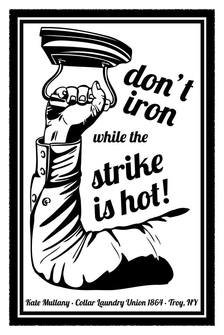 Today's bit of local history: This year marks the 150th anniversary of the formation of the Collar Laundry Union in Troy, the first female labor union in the country, in February 1864. The leader of that effort: Kate Mullany, an Irish immigrant who was just 19 years old at the time. From a great Brownstoner post by Montrose Morris about Mullany:
Today's bit of local history: This year marks the 150th anniversary of the formation of the Collar Laundry Union in Troy, the first female labor union in the country, in February 1864. The leader of that effort: Kate Mullany, an Irish immigrant who was just 19 years old at the time. From a great Brownstoner post by Montrose Morris about Mullany:
The collar laundresses had asked management for higher wages, but they were ignored. Well, not totally ignored. The commercial laundries had all installed new starch machines that could run the collars through a starch bath much faster than human hands. The machine increased production, but also make the women on the other end of the process work much harder to keep up with the machine. The scalding water from the machine had burned many of the women working with it, and the increased production was causing the pressers to burn themselves and the collars trying to keep up. Any collar ruined was docked from their pay.
Kate Mullany had been listening to the men in her building and neighborhood talk about their success in forming an Iron Molder's Union for their jobs in the steel mills. After an initial struggle, they had been able to successfully bargain for improved work conditions and higher wages. She talked with them about organizing a women's laundry union, and the men were encouraging. With conditions worsening in the laundries, and no pay raises in sight, Kate decided that someone had to do something, and that person had to be her. With the help of her co-worker Esther Keegan, Kate Mullany decided to organize the female laundresses into a union. On February 23, 1864, the three hundred women who signed up as the Collar Laundry Union walked out of all of the fourteen commercial laundries in Troy. The strike was on.
The strike's slogan: "Don't iron while the strike is hot!"
The union eventually won a raise. Mullany would go on to help other unions and she eventually became the first woman named to a labor union's national office. And Mullany's house -- at 350 8th Street in Troy, near the off-ramp from the Collar City Bridge -- is now a National Historic Site.
This Saturday (February 22), the Rensselaer County Historical Society will be commemorating the Collar Laundry Union strike with an re-enactment march from the RSCH building (57 2nd Street) to the Atrium. It starts at 11 am.
By the way: As the first part of the clip alludes to, doing laundry back then wasn't like doing laundry now. It was hard. That's the first part of the Brownstoner piece -- it'll make you reconsider using the word "sweatshop" in reference to some sort of modern office job.
poster via Rensselaer County Historical Society
When The Albany Bob was a tremendous craze
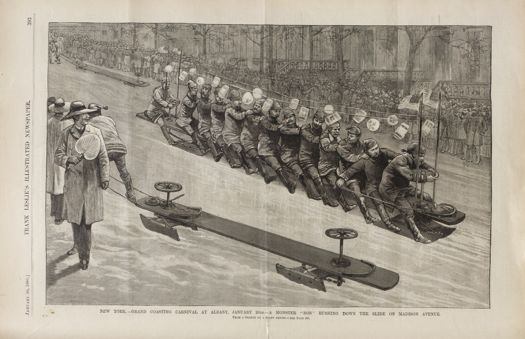
From an 1886 article in Leslie's Illustrated Weekly. (larger version)
Something to toss out when someone brings up Olympic bobsledding over the next few weeks (because that will happen, obviously): bobsled racing started in Albany.
So says historian and bobsled expert Christopher Lindsay, who's scheduled to give a talk at the Fort Orange Club February 8 about the first bobsled races. Lindsay, a former deputy executive director of the U.S. Bobsled & Skeleton Federation, says bobsleds were first used in the lumber business to haul trees. Eventually someone figured out they could be used to transport people -- and quickly -- down hills.
That time the Capital Region included four of the nation's 100 biggest cities

Don't worry, there's a bigger version.
Albany was once the 9th largest city in the nation, by population. And Schenectady the 17th. And Troy the 19th.
It's true. Of course, that was in 1840, 1800, and 1840.
Inspired by this chart of the nation's most populous metro areas over the country's history [via], we figured it'd be interesting to chart the national ranks (up to 100) of New York cities from 1790-2010. A few of the rankings surprised us (Cohoes! Watervliet!). And the trends help illustrate New York State's shifting position within the nation.
OK, let's have a look...
Listening to Martin Luther King Jr., half a century later
Check it out: The State Museum has posted the audio from a 1962 speech by Martin Luther King, Jr. commemorating the 100th anniversary of the Preliminary Emancipation Proclamation at an event in NYC.
The audio of the speech was turned up recently during the State Museum's ongoing effort to digitize its huge collection of objects and artifacts, according to a NYSED press release. The audio is believed to be the only known recording of the speech. (Can you imagine pulling a reel of tape from a dusty box, popping it on a reel-to-reel machine, and then hearing that distinctive voice emanate from the speaker? What a find.)
There's a mini-site set up for the audio and related documents. Among the docs: a scan of the marked-up text up of King's script.
The State Museum has posted the audio as a YouTube video matched with that marked-up script. It's one thing to read the text, it's a whole other to actually hear King deliver the 26 minute speech with his famous cadence and intonation. And the script -- with its many additions, subtractions, and mark-ups -- adds another dimension.
It's really worth watching when you have a chance.
The trip to New York City, then
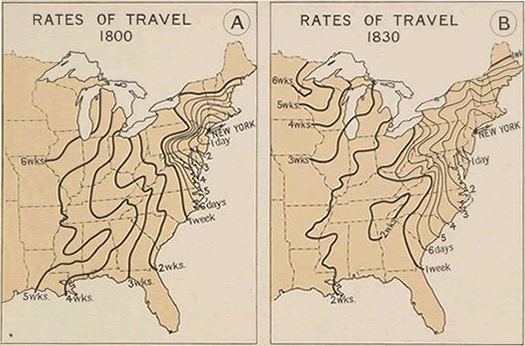
This is total historical/map nerd candy: The 1936 Atlas of the Historical Geography of the United States is now online in an interactive version, courtesy of the Digital Scholarship Lab at the University of Richmond.
That image above is a clip from an atlas page depicting travel times from New York City in 1800 and 1830. Yep, Albany was a three-day trip from NYC in 1800. (Because there was no E-ZPass, yet. Obviously.)
What makes this online presentation of the atlas so great is the way the pages have overlaid with clickable, zoomable present day maps and paired with additional explanation. Regarding the map clipped above:
In 1800 travel by stagecoach was limited to the area bounded by Boston, Bennington, and Albany on the north, Richmond on the south, and the Allegheny Mountains to the west. It required 10 days of sailing to travel from New York City to Charleston and a minimum of 26 to 28 days to reach New Orleans. Buffalo was a 9-day journey via the Hudson-Mohawk route, and the trip over the mountains to Pittsburgh required 10 days. It required 22-25 days to reach Louisville by way of the Ohio and 28-30 days to reach Cairo. In Tennessee and Kentucky travel on horseback was more rapid than water transportation, because of the circuitous courses of the rivers, and several well-defined overland routes such as the Natchez Trail had already developed.
The period between 1800 and 1830 was one of rapid development of water transportation and extension of highways. It marked both the development of the steamboat as a means of transportation and the completion of the Erie Canal. The traveling time from New York to Charleston was reduced to 6 days and to New Orleans to 14 days. To Cleveland was a 10-day and to Detroit a 13-day journey. From Detroit to Chicago was a 6-day trip overland, the much longer trip by water requiring about two weeks.
The atlas and website are filled with interesting bits, many of which include Albany and New York State in some way. Among them: Public Post Roads and Stage Routes 1774; and the De Laet Map of 1630, depicting Nieuw Neder Land and Fort Orange.
The whole thing is definitely worth a look.
[via Quartz]
image: Atlas of the Historical Geography of the United States/Digital Scholarship Lab, University of Richmond
Looking up State Street, almost a century ago
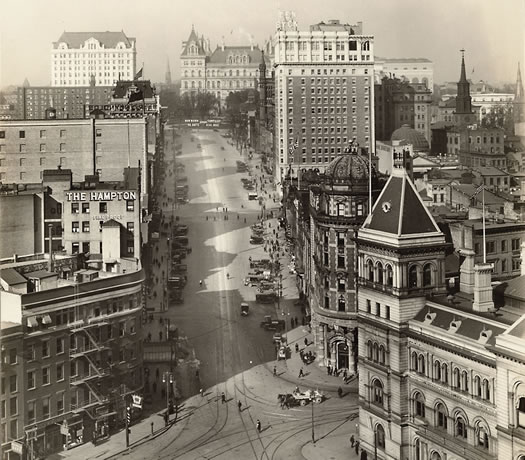
An old view that was once new.
The Albany Institute shared this photo on Twitter this week -- it's a look up State Street in Albany in 1917, from the Delaware & Hudson Railroad Building. (The institute has a bunch of photos from its collection online.)
We always love to gawk at old photos and this one's no different. Three things about it:
+ Construction of the D&H building (now the SUNY central administration building) spanned from 1914 to 1915. So, in some sense, this view had only existed for about two years when the photo was taken. Because before that, there wasn't a tower from which to take the photo.
+ Look down toward the bottom of the photo, on the left side, near where State Street meets Broadway. See that awning and the restaurant sign? That appears to be right where the awning for Jack's is today. Jack's didn't move to that spot until 1937, but it looks like there was a restaurant there even at the time of this photo.
+ The streetcar tracks are visible on the roads in the photo, and there's a horse-drawn cart on Broadway. But also look closely along the sides of State Street -- yep, cars. (The Model T was about a decade old at this point.) And they're parking along State Street much in the same way they still are almost a century later.
There's a large-format, uncropped version of the photo after the jump.
"We know not to whom we are indebted for the following description of that unwearied patron of children..."

Tonight at the Rensselaer County Courthouse, there will be a trial -- with real attorneys, a judge, witnesses and everything -- to determine who actually authored the now-famous poem "A Visit from St. Nicholas," Clement C. Moore or Henry Livingston Jr (as mentioned). It starts at 6 pm and it should be a good time. (The event's been getting national coverage.)
As you know, the local link for this story of "Sante Claus" and "Dunder and Blixem" is that it first appeared in the Troy Sentinel on December 23, 1823. (See plaque in downtown Troy.) Thanks to Gramercy Communications, which had the archives of the Sentinel digitized, and trial organizer Duncan Crary (who else), the page from that issue of the Sentinel is online (a big pdf).
It's interesting to read the poem in context -- it's sandwiched between an article about honey and some wedding announcements. And the intro to the story hints to the controversy that would eventually arise over the poem's authorship.
Anyway, we thought it'd be fun to post the poem as it originally appeared on the page, like a newspaper clipping. It's after the jump. Almost two centuries later it's still a fun read.
These Exalted Acres
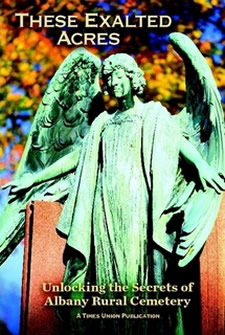 Local history alert: Paul Grondahl has written a book about the Albany Rural Cemetery. An excerpt from These Exalted Acres: Unlocking the Secrets of Albany Rural Cemetery ran in the Times Union recently. A clip:
Local history alert: Paul Grondahl has written a book about the Albany Rural Cemetery. An excerpt from These Exalted Acres: Unlocking the Secrets of Albany Rural Cemetery ran in the Times Union recently. A clip:
Visitors to the cemetery can read a backstory in Victorian-era symbolism and carved iconography that is repeated across the sprawling grounds in a kind of cultural shorthand: a torch inverted for a life extinguished; oak leaves and an acorn for a person of old age; ivy for friendship and fidelity; and crossed swords for a life lost in battle.
It is a monumental mirror held up to the region's past, and sometimes the heavy weight of history is almost too much to bear. We can trace the ancient heartache of scores of infants and young mothers who died in childbirth in the 1800s. There are vestigial reminders of successive waves of long-conquered diseases such as typhoid, yellow fever, cholera and influenza that killed many Albany citizens. The toll of the nation's wars are commemorated here, too, from the Revolutionary War to 1,030 Civil War soldiers and sailors buried at Albany Rural, as well as casualties of World War I and World War II.
Notes of triumph temper the sadness, too, with monuments that celebrate great industrialists, inventors, entrepreneurs, educators and other successful individuals.
Bonus bit: More than 135,000 people are buried in the cemetery -- Grondahl points out that, in a sense, the Albany Rural is "the most populous city in the region."*
These Exalted Acres: Unlocking the Secrets of Albany Rural Cemetery is being published by the Times Union via Lulu. It's $25 online.
Also: Check out the interactive map of the cemetery.
____
* Related: There are more people buried in the Glens Falls Cemetery than currently living in the city itself. Such is the reality of being an old city. [Post-Star]
Earlier and elsewhere:
+ Paula Lemire's Albany Rural Cemetery and Church Grounds blogs
+ AOA: Albany Rural Cemetery, after dark
+ AOA: Walking the Albany Rural Cemetery
Portraits of Martin Van Buren, in honor of his birthday
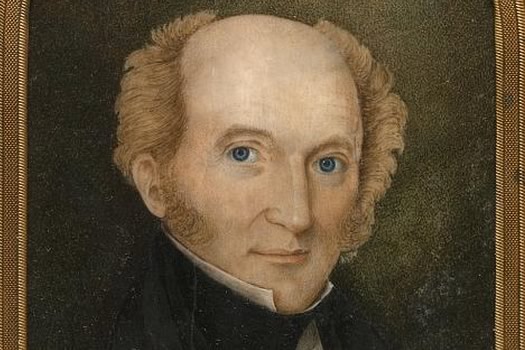
Look at those blue eyes.
This past Thursday was the 231st birthday of Martin Van Buren -- eighth President of the United States, the first president to be born US citizen, and the most famous native of Kinderhook, New York.
Because it was MVB's birthday this week, and it's Friday -- and, you know, just because -- here's a collection of portraits in honor of his 231st. (OK, some of them aren't technically portrait, but they're interesting to look at.)
OK...
A vision of Troy in 2016 -- from a century ago

Airships!
Check out this spectacular vision of downtown Troy in 2016 -- as imagined in 1916. It's like Fritz Lang meets Jules Verne. Here's an uncropped, large format version.
The image is from a program for a vaudeville show that played at the old Proctor's in Troy a century ago. We came across it when Emily Zimmerman shared it on Instagram last week. The people at the Rensselaer County Historical Society were nice enough to pull out a high-resolution version of the image and send it to us.
As RCHS executive director Ilene Frank mentioned to us in an email: "I don't know specifically what prompted this vision, but it is definitely in the time period of major Expos and World Fairs that promoted a technologically advanced and modern view of future society."
And a Troy on a whole different scale.
Trolley history lunch at the U Club
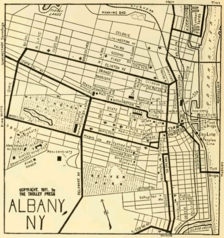 Could be interesting: Albany city historian Tony Opalka will be at the University Club December 18 for a talk titled "Transit in the City of Albany: 1862-1946." The talk is part of a noon luncheon that day, tickets are $20 and open to the public (reservations are required).
Could be interesting: Albany city historian Tony Opalka will be at the University Club December 18 for a talk titled "Transit in the City of Albany: 1862-1946." The talk is part of a noon luncheon that day, tickets are $20 and open to the public (reservations are required).
Yep, a midday event on a Wednesday can be hard to make, but it caught our eye -- because trolleys. Blurbage:
Tony is well known for his popular and informative walking tours of Albany's historic neighborhoods. Currently, he is employed as a historic preservation program analyst for the New York State Office of Parks, Recreation, and Historic Preservation. His presentation will feature slides with historic images of transit in Albany, as well as trolley and transit artifacts.
If you wish to start your holiday celebrating a bit early, try an Albany Street Car - the U. Club's spin on the classic Sidecar cocktail. It's made with Quackenbush Still House Original Albany Rum (from the Albany Distilling Company), Cointreau and sour mix - and guaranteed to ring your bell!
There Capital Region once had a robust system of inter and intra-city trolleys. (That image on the right is an old map of the trolley system around 1911.) So rich is the history is that it's almost like something from an alternate timeline.
The U Club luncheon is from noon-1 pm on December 18. Lunch starts at noon, talk starts at 12:30.
map from Trolley Trips Through New England 1915, via Fordham University Libraries Digital Collections
A rabbit hole of Albany historical images
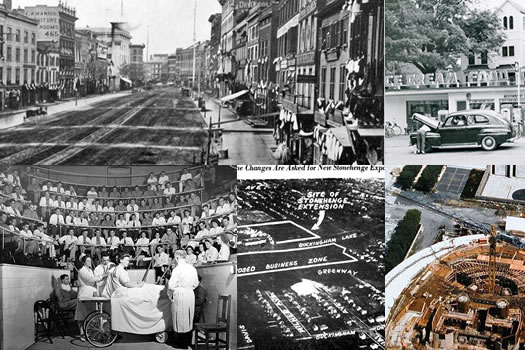
A few images from the group.
After that post earlier this week with vintage postcards of Albany, Julie O'Connor pointed out an "Albany... The Way It Was" Flickr group that she administers. The photostream is jammed with all sorts of historical images from the Albany area -- old photos, advertisements, illustrations, news clippings.
And it just keeps going and going. This morning we kept scrolling through as we recognized places that still exist (if not with the same use), gawking at buildings no longer standing, considering plans that never materialized.
A quick sample of things that caught our eye:
+ A photo of The Egg being constructed.
+ A photo from a tollgate on the Albany Turnpike on South Pearl in the 1890s.
+ A photo from Broadway in the 1860s.
+ An aerial photo of 787 being constructed.
+ A news clipping about a Swan Street bridge that was never built.
+ A photo from an Albany Medical School operating theater in the 1940s.
Postcards from the past: Albany

Here's a bunch of old postcards of Albany, originating in the same collection from which we pulled the vintage postcards of Troy a few months back.
The postcards are from a Boston Public Library collection. All the postcards are thought to have been printed between 1930-1945.
Some of the cards depict places that no longer exist, though many of the Albany spots have endured, if not necessarily with the same purpose. But even the cards that show buildings that still stand probably present a version of that place that never truly existed -- the backgrounds de-cluttered, the landscaping manicured, the scenes mostly devoid of people. It's the past as it was idealized by someone then.
Wish you were here...
Why is there a mayor on my oatmeal?

Sometimes we end up with odd legacies.
Speaking of Albany mayors and their representations on food, Barry T emails with the photo above:
Why is my oatmeal approved by John Boyd Thacher??
And to Barry, we say: That is a totally reasonable question.
A view from above, back then
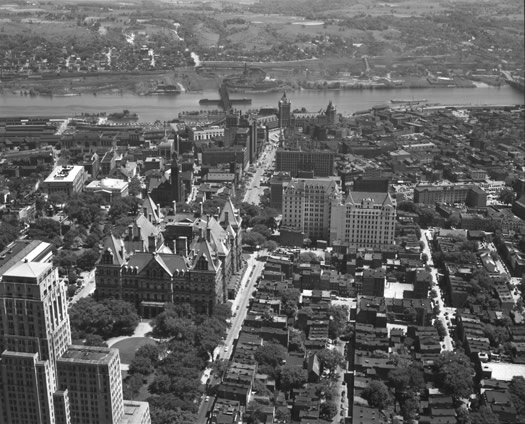
We were poking around the online collections from the State Library this afternoon looking for something else when we came across this aerial photograph of Albany before the Empire State Plaza was built. It's from 1948. It made us think of the 1910 map overlay of Albany -- then over now -- that B sent along earlier this week, and some of the comments.
Anyway, there are three more photos:
+ From behind the Smith building
+ Looking north from the South End
+ And another, wider shot also from the South End -- in this one you can really see what would become the ESP's footprint (look for the Smith Building and the the Cathedral of the Immaculate Conception).
photo: New York State Archives, Aerial photographic prints and negatives of New York State sites, 1941-1957
1910 Albany on top of now

Because we're always interested in an old map... B sent along this superimposed map of Albany he created -- it's a 1910 map laid on top of a current map. He says in an email: "Found this 1910 map that snapped in pretty well. A lot of interesting stuff here, especially the blocks that became the Plaza and the Erie Canal before it became Erie Blvd."
A large-format image of the map is after the jump.
A few things that caught our eye:
+ As B mentions, it's remarkable how the ESP interrupted the flow of streets from the Lark/Washington Park area toward the riverfront.
+ And, hey, there was once a park on the north side of Arbor Hill, up against the Patroon Creek.
This looks like it's the original 1910 map.
(Thanks, B!)
See also: Old map overlays created by Albany Bagel -- 1877 Albany and 1857 Albany Lumber District
Work Week: Local jobs -- 150 years ago
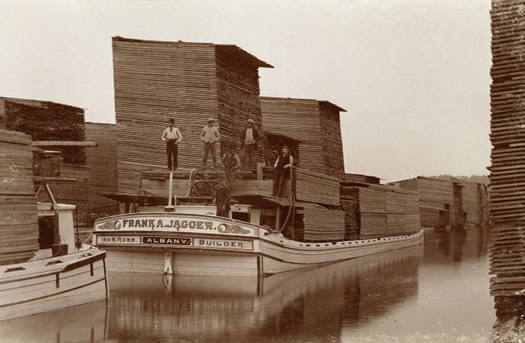
Maybe there would have been a job for you in Albany's booming lumber district.
Some folks have argued that our area, now christened Tech Valley for its apparent boom in nanotech, computer chips, and pharmaceuticals, has been a tech valley all along, going back to the introduction of an amazing bit of transportation technology called the Erie Canal. But it's fair to say that the job options brought about by the current boom, most of which seem to involve lab coats and neoprene gloves, are a far cry from the job options brought about by any earlier boom in the Capital District.
Imagine it's 1863, and you're a young Albany resident ready to join the workforce. You might have had some schooling, if your family could afford it; school rates weren't abolished until 1862. You probably didn't have any high school, as the city's first free high school didn't open until 1868.
Did it matter? Not much -- very few jobs of the day required anything by way of schooling. They were more likely to require some form of apprenticeship, a medieval form of on-the-job training (and a bit of serfdom) all but lost now.
So, what might you have set out to be, 150 years ago?
Tapping a cask of Albany Ale

Craig Gravina and the CH Evans' Ryan Demler working on the Albany Ale at the Pump Station this past September.
A quick update on the Albany Ale Project: The first cask of resurrected beer will be tapped at an event at the Albany Institute of History and Art November 2. Tickets are on sale now -- they're $15, and must be purchased in advance.
The Albany Ale Project is an effort by beer writers Craig Gravina and Alan McLeod to explore and highlight the history of beer brewing in Albany. It turns out the the city has a rich tradition -- "Albany Ale" was once known far and wide -- but it's faded from memory since the early part of the 20th century.
One of the ways the Albany Ale Project is attempting to bring it back: re-creating old beers. They've teamed up with CH Evans Brewing at the Albany Pump Station to brew resurrected version of beers from Albany's history. The beer that will be released at the Albany Institute event is the first in the series -- it was made from a 1901 recipe for Amsdell's Albany XX Ale. It will probably be the first "Albany Ale" produced in a century.
The event at the Albany Institute starts at 5 pm on November 2. It includes both food and beer. And it's capped at 150 people.
Earlier on AOA: Resurrecting a beer, and part of Albany's history
Tracing the old canal
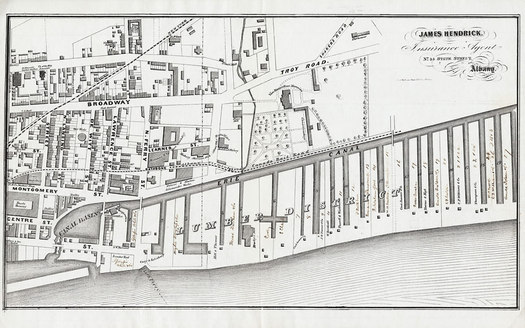
The canal, running along where Erie Boulevard is now, helped create a lumber district in North Albany.
A series of Albany Archives tweets this afternoon about the Erie Canal -- and how you can see the effects of its path still today in Albany -- got us thinking: There's gotta be a map of the old canal route over a modern map. Right? You know, because... the internet.
And guess what: It's true! A website -- the aptly-titled Erie Canal Mapping Project -- has an interactive Google map of the old canal routes layered on top of the modern map. It's interesting to follow along the old canal path to see how often modern roads conform to the waterway's former route.
The map also makes it apparent why so many upstate cities -- Albany, Schenectady, Rome, Syracuse, and maybe others -- have an Erie Boulevard. Those roads are where the canal once was.
Perils of modern maps: Speaking of maps and whatnot -- Carl pointed out a rather bothersome plastic bag captured by the Google Streetview mobile while it recorded along Broadway in North Albany.
A look at the new mummy exhibit at the Albany Institute of History and Art
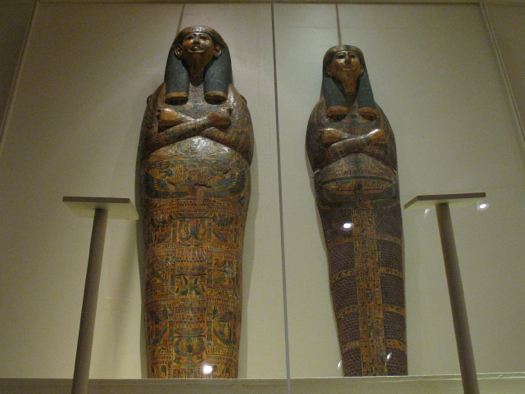
You live your life as a priest or sculptor. You die. You're preserved, sent off into the afterlife. And there you rest for 3,000 or 2,300 years. Then a decidedly unrestful period. Your effects are split up. You're partially unwrapped to make sure you're not "squishy." You're sold for maybe $100. A steamboat ride to the other side of the planet. Fanfare. Hubbub. Outright mania. Gender confusion. Gawkers. So many school children. An x-ray. Another x-ray. Is that the beginning of understanding? Finally?
To put it another way: the afterlife is complicated.
It's one of themes that emerges from the Albany Institute of History and Art's new exhibit, "The Mystery of the Albany Mummies," which opens this Saturday.
Here's a quick look from a preview Thursday.
Resurrecting a beer, and part of Albany's history
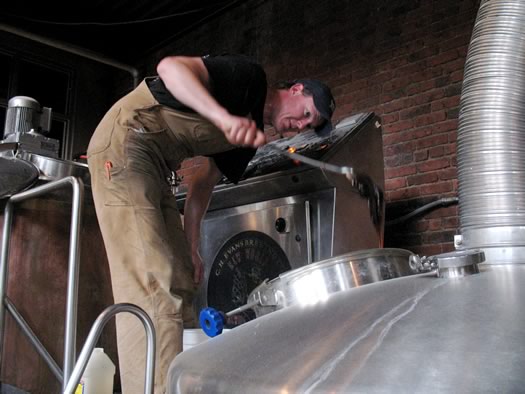
It turns out that resurrecting a beer that hasn't been brewed in a century is a sticky business.
Tuesday afternoon, Ryan Demler -- the brewer for C.H. Evans Brewing in Albany -- was perched atop brewing equipment trying to scrape a caramel-like form of sugar into a tank. It wasn't going well. "It's like alien goo."
The sugar -- the technical term for it is "invert sugar" -- is part of a 1901 recipe for one of the last versions of the the once-famous Albany Ale, which at one point was known around the world. Its re-creation is part of the Albany Ale Project, which is aimed at not just bringing some old beers back from the dead -- but also collecting and highlighting a key part of the city's history.
Bullseye
The Sage Colleges Library shared this photo the other day and it made us smile. It's from a 1937 archery class at Russell Sage College.
The photo is from a collection of Sage archival photos maintained online by the New York Heritage Project. A few more examples: a photo from a circa 1940 auto mechanics class, and working the in the lab during the 1920s.
We're a little disappointed our college education didn't include archery.
Touring possibilities in the Mansion District
Update: The tour has been rescheduled to September 19 because of weather.
The Historic Albany Foundation has organized a vacant building tour for Albany's Mansion Historic District this Thursday evening (September 12). Tour blurbage:
In its earliest days of settlement, the Mansion Historic District was known as Albany's first suburban enclave, as an area where the affluent built large homes and surrounded them with gardens and landscaping.
Despite all of the rapid development and inimitable building stock in this neighborhood, some buildings still suffer from neglect and disinvestment. This tour will showcase properties that need special attention, and bring further awareness to our city's problem of vacant and abandoned properties. The neglected buildings in this neighborhood present an opportunity for individuals to reinvest in one of Albany's most architecturally significant neighborhoods.
The tour guides will be Shadi Khadivi, HAF's preservation services coordinator, and Michael Guidice, an HAF board member and resident of the neighborhood.
The tour starts at the Grand Street Community Arts (68 Grand St.) at 5:30 pm. It's $10 (reservations appreciated).
Recreating Albany Ale

Beer writers/historians Craig Gravina and Alan McLeod have launched website for the the Albany Ale Project. Blurbage:
Growing since 2010, this international research endeavor has been dubbed the Albany Ale Project, and is focused on bringing the history and stories of an industry that helped to build the capital city of New York to light. Although Albany Ale no longer exists, the research being done by the Albany Ale Project is increasing interest in the oft-forgotten history of Albany's brewing past - and the Ale that accompanied it.
The project's website includes material on the long history of brewing in Albany.
But get this -- part of the project is to
The first beer to be re-created is a 1901 recipe for Albany XX Ale, originally made by the Amsdell Brewing and Malting Company--the last brewery to make something called "Albany Ale". The basis for this recreation is from an Amsdell brew log held in the collections of the Albany Institute of History & Art.
Here's the recreated beer's description: "Amber hued, C.H. Evans' version of Amdell's 1901 Albany XX Ale, is a slightly sweet XX ale brewed with 100% New York grown 6-row pale and black malt, and corn grits. Brewery-made dark invert and corn sugar are also used, bringing the 1901's ABV to 5.3%; and New York grown heritage hops give it a mildly hoppy finish, at 23 IBUs."
We hear from Gravina that they're aiming for an early November release for the recreated beer (with more details closer to the release date).
image from the Albany Institute of History and Art's collection, via the Albany Ale Project
A short campaign for the longest-living building in Albany

The scene surrounding the Van Ostrande-Radliff House in the 1930s. It's a bit different now.
Earlier this summer the Historic Albany Foundation got ownership of the (probably) oldest surviving building in Albany -- Van Ostrande-Radliff House, at 48 Hudson Ave downtown. Now HAF has a campaign to raise money for the building's preservation. The goal: $10,000.
From the Indiegogo page* for the campaign:
Historic Albany Foundation needs to raise $10,000 for immediate repairs to the roof of the Van Ostrande-Radliff House at 48 Hudson Avenue. Historic Albany recently acquired the Van Ostrande-Radliff House at 48 Hudson Avenue in Albany, New York. Built in 1728, it is documented to be the oldest surviving building in the city. It has been vacant since the 1990's and is in immediate need of roof repairs. Water is cascading through the east wall through a leak in the roof and is causing substantial damage to this precious resource. Historic Albany must repair the roof so that the building will continue to stand while a plan to restore the building is developed.
There's a short HAF video about the building embedded after the jump.
The campaign deadline is September 27. As of Thursday afternoon (August 29), it had more than $3,300 in pledges. Donation perks include sketches of the building, books, and tickets to events.
When HAF acquired the building back in June, it said its goal is to eventually make the building "habitable and possibly used as offices for likeminded agencies and organizations in the future."
* Indiegogo looks like Kickstarter, and sometimes it works like that. But this campaign is set up as "flexible funding" -- which means the money donated will go to HAF even if it doesn't meet its goal. (If they do meet their goal, the pay a lower fee to Indiegogo.)
image via Historic Albany Foundation
The beers that shaped New York's beer scene
 Over at Drink Drank, beer historian Craig Gravina lists "the seven beers that -- in my humble opinion -- shaped the New York beer scene." Here's a clip from one of his selections:
Over at Drink Drank, beer historian Craig Gravina lists "the seven beers that -- in my humble opinion -- shaped the New York beer scene." Here's a clip from one of his selections:
1. Schaefer Beer - Schaefer is not brewed in New York--but it was for 139 years, so let's just overlook that first bit. What can you say about Schaefer? It's a classic. It's been made since 1842. It survived prohibition, set the standard for the Bushwick Pilsner, became the official beer of the Brooklyn Dodgers, out-sold Budweiser in the late 1950s, and during the 1960s it sponsored a series of concerts in Central Park, featuring a few acts you may have heard of--The Who, Led Zeppelin, The Doors and the Beach Boys. Stroh's bought it in '81, and Pabst has steered the ship since '99. Oh, and that's right Schaefer was also an Albany hometown brew until the 1970s. It's brewery in Brooklyn exceeded capacity and they bought Beverwyck Brewery in 1950.
Gravina will be at the University Club in Albany this evening (Tuesday) for a talk titled "Hops and History: Albany's Brewing Tradition." There will also be a tasting of the "Magnificent Seven" that he lists in that post linked above. The event is from 5:30-7:30 pm.
The talk and tasting is $20. Call 518-463-1151 or online to register.
image: "Beverwyck Brewing Company Serving Tray" from the collection of the Albany Institute of History and Art
Re-modernizing the DeWitt Clinton
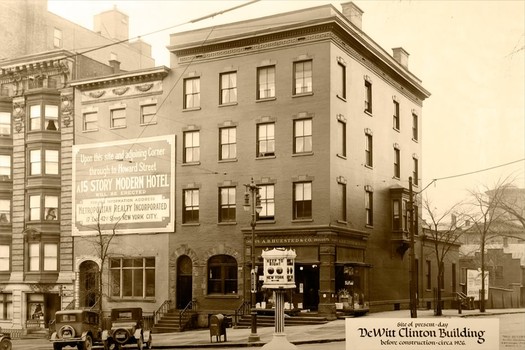
State and Eagle before The DeWitt Clinton was built in 1927.
The Cuomo admin and Columbia Development announced today plans to renovate the vacant DeWitt Clinton Hotel building at State and Eagle in downtown Albany (streetview). (You know the building -- it's the one that looks buttoned up, but in a "I forgot what I was supposed to be doing" kind of way.) In its new life, the DeWitt Clinton will be a 204-room "Renaissance by Marriott Hotel." Press release:
The Renaissance Albany will have the feel of a boutique hotel and will include the building's original breathtaking lobby. Located at the corner of State and Eagle Streets, the Renaissance will offer intimate meeting space for private events, 204 rooms, a full-service restaurant open to the public, a lounge and coffee shop. It will be the first time the region has had a full service Renaissance by Marriott Hotel.
The $48 million project's not all that surprising. Columbia is already re-building next door at Wellington Row, the hotel is literally right across the street from the Capitol, and the proposed downsized Albany convention center thing would be just behind it.
Anyway, part of the press materials today included a photo of the DeWitt Clinton site from before the DeWitt Clinton was there (above, large format). We were struck by the circa 1926 photo, which shows a drug store on the corner and an excellent old-school traffic signal. Attached to the building and its adjacent (now-gone) neighbor, a big sign that read:
Upon this site and adjoining Corner through to Howard Street
A 15 STORY MODERN HOTEL
WILL BE ERECTED
That modern hotel lasted about 50 years, until the building stopped operating as a hotel in 1975 (it's had various other uses since then). And now it will be modernized. Again.
Cat guest: Albany Archives dug up a great story about the opening of the DeWitt Clinton in 1927 -- the first guest to stay there was a cat. Really.
"The leisure seems to have departed, but the passion for horses is as strong as ever..."
Check out this 1930s newsreel segment about Saratoga Springs and the Track. It includes some great old footage, and the ever-entertaining newsreel voiceover and music.
Also: Nostalgia is apparently a renewable resource.
[via @sdeckerphoto]
Solomon Northup
Having been born a freeman, and for more than thirty years enjoyed the blessings of liberty in a free State -- and having at the end of that time been kidnapped and sold into Slavery, where I remained, until happily rescued in the month of January, 1853, after a bondage of twelve years -- it has been suggested that an account of my life and fortunes would not be uninteresting to the public.
That's how Solomon Northup begins Twelve Years a Slave, his 1853 memoir.
Northup grew up here in New York, in Washington County -- the son of Mintus Northup, who had gained freedom in the will of his Rensselaer County master and had gone on to accumulate enough land to vote and provide an education for his children. Solomon Northup got married and he and his wife eventually moved to a residence on Washington Street in Saratoga Springs. There he worked on the construction of the Troy and Saratoga railroad. He played the violin. And as that passage above mentions, he was kidnapped in Washington, DC, sold into slavery, ending up on plantations in Louisana. He was finally freed 12 years later via a process that involved the governor or New York.
It's a remarkable, harrowing story. The book is available online from archive.org -- it's well worth reading at least a few chapters. You might not be able to stop.
Northup's memoir is the basis for a new movie -- 12 Years A Slave -- that's scheduled to be released later this year. It stars Chiwetel Ejiofor as Solomon Northup, and the rest of cast includes Brad Pitt, Alfre Woodard, Michael Fassbender, and a bunch of other actors you'll recognize. The trailer, just out this week, is embedded above.
Solomon Northup Day
This Saturday is Solomon Northup Day in Saratoga Springs. there will be a celebration of Northup's life at Skidmore's Filene Hall from noon-4 pm. Historians will be talking about Northup and the times in which he lived, and more than 40 of his descendants are scheduled to be there. it's free and open to the public.
Postcards from the past: Troy

Troy as it was, from one perspective.
We happened upon this collection of old postcards -- including cards from the Capital Region -- from the Boston Public Library not once, but twice this week. And after the second time, we figured we pretty much had to do something with them.
All the postcards are thought to be printed between 1930-1945. Some of the cards depict places that no longer exist. And even the cards that show places still standing probably present a version of that place that never truly existed -- the backgrounds de-cluttered, the landscaping manicured, the scenes mostly devoid of people. It's the past as it was idealized by someone then.
The collection includes postcards from different spots around the area. So we decided it'd be fun to periodically pull a handful from a spot, map the locations depicted, and match them with the current streetview.
First up: Troy.
"America's Grandest Race Course"
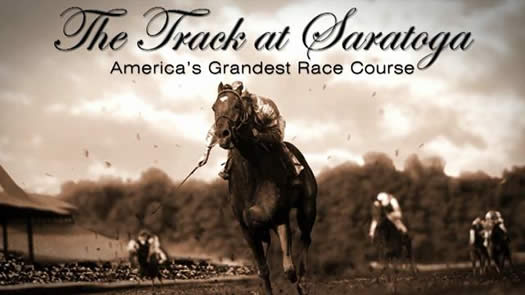
WMHT is premiering a new documentary about the Saratoga Race Course this coming Monday night at 9 pm. From the blurbage for The Track at Saratoga: America's Grandest Race Course:
This hour-long historical documentary will transport viewers through 150 years of owners, trainers, jockeys and horses. We'll experience the track beginning with four thrilling days in August 1863 and continue through the pageantry of today.
There's a short promo clip at that link above. It looks like the doc includes a bunch of old photos, which could be fun to see.
Rediscovering the Light: WMHT is re-airing its recently-premiered doc about the restoration of the state Capitol building -- Rediscovering the Light: Restoring New York's Capitol -- July 19 at 10:30 pm. And it will play again July 28, August 19, and August 23.
Albany 50 years ago -- more than 100 years ago
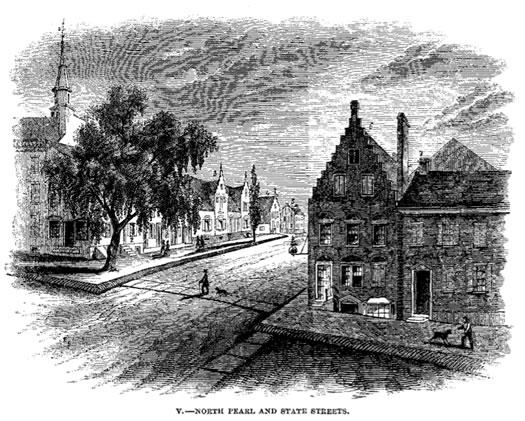
I AM an Albany Knickerbocker -- a Dutchman of purest Belgic blood -- and I justly claim to be heard, as the last as well as the most loyal of the fading cocked-hat generation, who mourn over the barbarisms of despotic Fashion and the hot haste of society in these degenerate days, when steam and iron have usurped the power of honest breath and muscle, and the lightning has become the obedient chariot of thought.
You can fit many cycles of death and rebirth in 400 years.
We were thinking about that as we read through this piece from a 1857 edition of Harper's: "Albany Fifty Years Ago." It's based on the recollections of James Eights, a "natural scientist" and illustrator who grew up in the city, as told to Benson John Lossing, a noted writer and editor at the time. (Here's a stripped down version of the text hosted by the Internet Archive. Do an in-page search for "ALBANY FIFTY YEARS AGO.")
Once noticed, they're everywhere
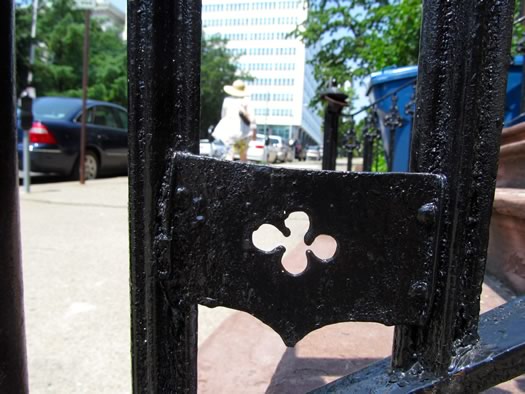
You know when you learn about something new and for the next month or so it somehow pops up everywhere in your life? Like when you learned that Caesar dressing has anchovies in it -- and then all of sudden it seemed like every restaurant had a Caesar special?
Well, about a month ago, I learned about boot scrapers.
And I now seem them everywhere.
The short version of the long history of local beer
 Interesting: Over at DrinkDrank, Craig distills the centuries-long history of beer brewing in Albany to a quick-read 1,500 words. A clip:
Interesting: Over at DrinkDrank, Craig distills the centuries-long history of beer brewing in Albany to a quick-read 1,500 words. A clip:
[John] Taylor -- initially partnered with his brother-in-law -- opened his first brewery in the early 1820s. A savvy businessman, Taylor saw the opportunity to exploit New York's new water highway [the Erie Canal]. He could import grain and hops from the western part of the state and use the same waterway to export beer west and south down the Hudson. By the 1850s Taylor had built a new brewery in Albany--the largest in the country and was producing a flagship double strength of 'XX' ale, that he dubbed "Imperial Albany XX Ale". Albany's access to the Hudson River and position at the terminus of the Erie Canal afforded it a monopoly on the distribution on beer. Albany Ale could be exported west on the Canal to Buffalo and be in Chicago in ten days later. From there it could be in New Orleans within a week or California shortly there after. It could also be sent south down the Hudson to the port of New York and be anywhere in the world within a matter of weeks.
There's lot packed into this history -- the Dutch, the British army, hops, the Erie Canal, the emergence of lager, Prohibition, craft brewing. It's worth a read if you're interested in local history or beer (or, you know, both).
Elsewhere: Akum recalled when Albany Ale ruled the nation.
image: "Beverwyck Brewing Company Serving Tray" from the collection of the Albany Institute of History and Art
Albany I Spy answers
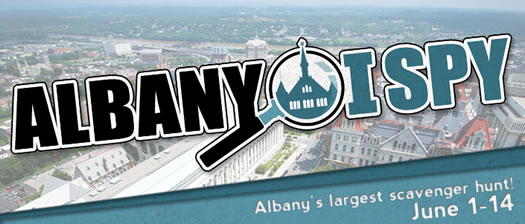
The first Albany I Spy history/architecture scavenger hunt -- created by Albany Archives -- concluded this past Saturday at the City Beer Hall. There were 14 submitted answer sheets that had all the correct answers (and the tiebreaker) -- the winners split up a bounty of prizes that included gift certificates to downtown Albany businesses and t-shirts.
And now, by popular demand, here are the correct answers...
Talking with the creator of Albany Archives
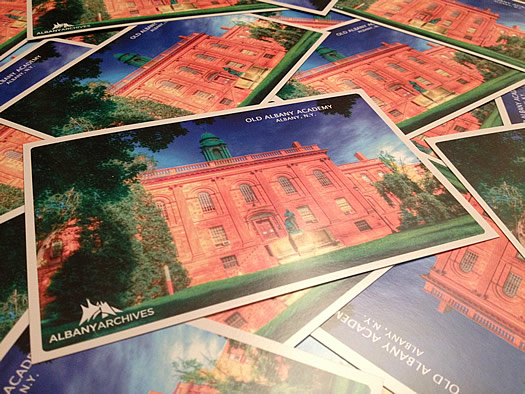
If you haven't been following @AlbanyArchives on Twitter, you've been missing out. It's an ongoing stream of local history facts, photos, docs, and assorted bits delivered with humor and the occasional goofy photoshop of a historical image.
With the Albany I Spy downtown Albany scavenger hunt nearing its end -- the winners will be announced this Saturday at 2 pm at the City Beer Hall -- we figured it'd be a good time to pull back the curtain and find out more about the person working the levers of Albany Archives.
Historical houses and anarchy
 The title of this upcoming talk sponsored by the Rensselaer County Historical Society makes us smile: "The Anarchist's Guide to Historic House Museums."
The title of this upcoming talk sponsored by the Rensselaer County Historical Society makes us smile: "The Anarchist's Guide to Historic House Museums."
Franklin Vagnone, director of the Historic House Trust of New York City, will be giving the talk June 22 at the Sage College's Bush Memorial. Blurbage:
In his dynamic presentation, Mr. Vagnone lays out a series of systemic changes that he thinks historic house museums need to enact in order to survive.
Controversial, provocative, thought provoking and inspiring, Mr. Vagnone encourages those who love historic house museums to change the way museums operate in order to re-invigorate them and re-engage with the communities they serve.
The talk starts at 10 am on the 22nd (a Saturday) and it's free. Later that day RCHS has two "anarchy in action" events:
+ The Hart-Cluett House will be open for a light lunch, allowing people to "spread the anarchy by leaving notes of what you would like to see or do in the house." And Vagnone will be there for an informal session on shaking up the house tour. noon-2 pm - $20
+ And that evening the Hart-Cluett House's courtyard will be hosting a four-course dinner catered by Sweet Sue's. (That first link at the top includes the menu.) 6 pm - $125
More events, anarchical and otherwise
A few more events:
+ The annual RCHS deck party is this Thursday from 5-8 pm in Troy. It's $20 per person and includes "live music and refreshing treats."
+ This Saturday RCHS an Underground Railroad history walk lined up. Blurbage: "Troy was at the forefront of abolitionism. Learn about the commitment Trojans made to freeing slaves, including a visit to the location on State Street where Charles Nalle was forcibly freed by citizens, in violation of the Fugitive Slave Law." 10:30 am - $5
photo: Matt H. Wade at Wikipedia / CC-BY-SA-3.0
Hiking in the footsteps of Teddy Roosevelt
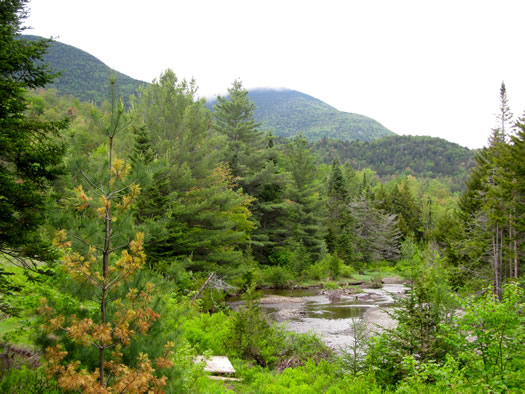
At the end of a long and winding road in the Adirondacks there is a trail to Mt. Marcy that includes a bit of history along the way. It was on this path that Teddy Roosevelt hiked during his last day as Vice President of the United States.
Today, you can take the same trail the Rough Rider/cowboy/future president walked over a century ago. Climbing the tallest peak in the state is enough of an accomplishment, but doing it in the footsteps of a president who once rode a moose like a horse? Well, that's just about as cool as you can get.
Virtually browsing the Albany Institute's collections
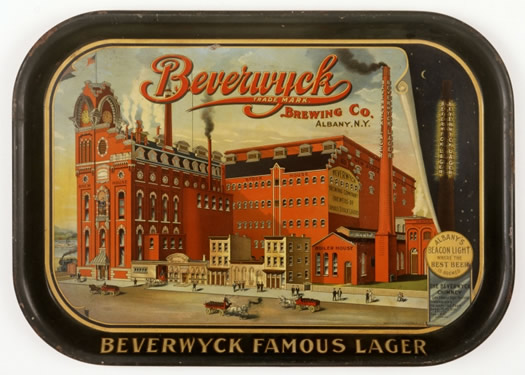
"Beverwyck Brewing Company Serving Tray" from the collection of the Albany Institute of History and Art.
The Albany Institute of History and Art has been quietly building an online database of its collections. And this week it publicly announced the catalog is there for the browsing.
The online collections database ranges from paintings to historical objects to posters to maps.
Here are a handful of items that caught our eye while browsing...
Oldest building in Albany changes hands
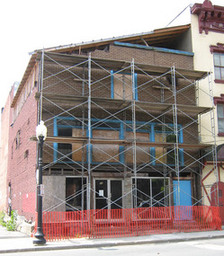 The oldest building in Albany -- the 285-year-old Van Ostrande-Radliff House, at 48 Hudson in downtown Albany (the photo on the right is from 2009) -- is now in the hands of the Historic Albany Foundation, the org announced today. It says the building was donated by Orion Enterprises LLC, a development company that had owned the building since 2005.
The oldest building in Albany -- the 285-year-old Van Ostrande-Radliff House, at 48 Hudson in downtown Albany (the photo on the right is from 2009) -- is now in the hands of the Historic Albany Foundation, the org announced today. It says the building was donated by Orion Enterprises LLC, a development company that had owned the building since 2005.
From the press release:
The 1728 date of the Van Ostrande-Radliff House was established in 2005 by dendrochronology, or tree-ring dating, conducted by Lamont-Doherty Earth Sciences Laboratory of Columbia University. The building is listed on the National Register of Historic Places, and is a listed local landmark in the City of Albany. It is considered one of the most significant Colonial-era townhouses in the Hudson Valley.
The Van Ostrande townhouse was built just outside of the city's stockade and a few hundred yards from the site of Fort Orange. Johannes Van Ostrande was a member of the Common Council and sold the building to Johannes Radliffe, a shoemaker, in the 1750s. Number 48 Hudson was also used as the Jared Holt Wax Factory in the mid to late 1800s, and most recently served as Saul's Equipment for more than 50 years.
The building is now adjacent to empty land designated for the Albany convention center project. Plans for convention center -- if/when it moves forward -- have for years included preserving the building.
HAF says it's planning tours and fundraising for the building. Of its plans for the building: "Goals for the building are to have it habitable and possibly used as offices for likeminded agencies and organizations in the future."
Dendrochronology
Studying the tree rings in beams from old buildings is one of the tools used to nail down their ages. Similar studies have been used to figure out which house is the oldest in Schenectady.
Earlier on AOA:
+ HAF: We're handing St. Joseph's back to city of Albany
+ The oldest building in Albany
+ The oldest house in Schenectady
+ The oldest house in Saratoga Springs
Historic home/garden tours in June
Two historic home/garden tours this month that could be worth checking out:
GE Realty Plot
The GE Realty Plot House and Garden Tour in Schenectady returns this year June 22 and 23 for the first time since 2009. Tour blurbage:
This year's tour includes five elegant homes, Union College's Abbe Hall, (a historic preservation award winner), the First Unitarian Society, and lovely gardens -- all nestled in a park like setting. Be the first to get a behind the scenes look at the home used in the new movie The Place Beyond the Pines with Bradley Cooper and Ryan Gosling.
The plot is just east of the Union College campus. General Electric bought it at the end of the 1800s and it was subdivided as a neighborhood for company executives. The design of the neighborhood was inspired by New York's Central Park.
The June 22 tour is at 11 am, the June 23 at noon. Tickets are $25.
Executive Mansion
The state offers tours of the Executive Mansion September through June, so this is the last chance for a few months. Tours are on Thursdays, and must be scheduled two weeks in advance. The mansion's indoor pool, once used by FDR, is back on the tour after some repairs. [TU]
Hidden City House & Garden Tour
The Historic Albany Foundation's Hidden City House & Garden Tour is June 27 in the Center Square and Hudson/Park neighborhoods, from 5-8 pm. The tour highlights "10-15 historic buildings and their gardens."
Tickets are $15 ahead of June 20, $20 after.
Albany I Spy

Starts Saturday, June 1: Albany I Spy, a sort of history/architecture scavenger hunt of downtown Albany, organized by the mysterious Albany Archives. Blurbage:
Participants will download a form from www.albany.org/ispy that includes 14 clues, one for each of the buildings/landmarks in the downtown area that have been selected for this contest. Using the clues provided on the form, as well as the daily additional clue that can be found on the sponsors' social media sites and by using the hashtag #albanyispy, participants will take to the streets of downtown to find the building and correctly list it on their sheet.
At the end of the two-week contest, participants will submit their forms for judging. The participant/team with the most correct answers will win the grand prize. Additional prizes for participation will be awarded.
The guide with the first 14 clues will be posted online June 1. The game ends Saturday, June 15, at the City Beer Hall from 1-3 pm, where people can turn in finished answer sheets (by 1 pm), partake of a drink and some history/architecture socializing, and hear the winners announced (at 2 pm). (Answer sheets can also be emailed to admin@albanyarchives.com.)
The lineup of prizes includes:
+ $50 gift card from the Downtown Albany BID to downtown businesses
+ Gift basket from the Albany Visitors Center Gift Shop ($50 value)
+ $50 gift certificate from City Beer Hall
+ 4 gift certificates for $25 from Bombers, Wolff's, the Olde English, and Sciortino's.
+ Downtown Albany BID t-shirts
The person behind the curtain of Albany Archives approached us a few months back about the game and it sounded fun, so AOA will be sharing clues throughout the two weeks. Clues will also be available via the Twitter accounts of the Downtown Albany BID and the Albany County Convention and Visitors Bureau.
The story of your house
 One of the interesting things about the Capital Region is that there's history seemingly everywhere. Maybe even in your own house.
One of the interesting things about the Capital Region is that there's history seemingly everywhere. Maybe even in your own house.
This Saturday (June 1) at the Albany Public Librarian's main branch there's first part of a two-part workshop on researching the history of your house. The how-to session features a solid lineup of experts:
+ Tony Opalka, Albany city historian
+ Ellen Gamache, APL local history librarian
+ Cara Macri, director of preservation services at Historic Albany Foundation
+ Akum Norder, writer of the Times Union "A History of Here: Life in Albany, Past and Present" blog. (Akum has been doing extensive research about the history of her house and the Pine Hills neighborhood. She's posted a research guide online.)
The workshop is 2-4 pm in the library's large auditorium. It's free.
The second sessions -- "An Uncommon Cape: Researching the Histories and Mysteries of a Property" -- is June 8, same place and time. More details post jump.
Lost and found apples
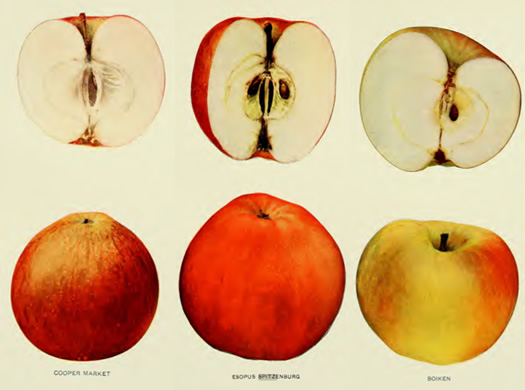
Illustrations from Apples of New York.
A few years back we picked some Golden Russet apples at Samascott in Kinderhook -- we were curious because we'd never seen that variety before. And it was unlike any apple we'd had before. The skin, the texture, the flavor... everything about it was just different than the apple varieties usually in the supermarket.*
Anyway, ever since we've been intrigued by old/rare apple varieties. So we found this Mother Jones article about an "apple detective" in Maine super interesting. A clip:
Thurlow led Bunk to the abandoned intersection that had once been the heart of Fletcher Town, pointed to an ancient, gnarled tree, and said, "That's the tree I used to eat apples from when I was a child." The tree was almost entirely dead. It had lost all its bark except for a two-inch-wide strip of living tissue that rose up the trunk and led to a single living branch about 18 feet off the ground. There was no fruit, but Bunk was interested. A few months later he returned, took a handful of shoots, and grafted them to rootstock at his farm. A year later, both Thurlow and the tree died, but the grafts thrived, and a few years later, they bore the first juicy, green Fletcher Sweet apples the world had seen in years. "It's a great apple," Bunk says. "It has a super-duper distinctive flavor." Today, Bunk has returned young Fletcher Sweet trees to Lincolnville.
The apple detective, John Bunk, runs a nursery that preserves and sells heirloom apple varieties.
The Mother Jones article also includes some great illustrations from The Apples of New York, a 1903 state report on apple varieties and their histories (and it was printed right here in Albany). The book is available online through archive.org. There are a handful of references to Albany...
Pizza at The Orchard Tavern

The distinctive rectangle.
Albany is filled with old food. And rightly so, it's an old town. Our fish fry and mini-hot dogs with meat sauce offer widespread examples around the region. But slightly less visible, inside one the city's oldest taverns, there is a remarkably old pizza.
The Orchard Tavern has been making its distinctive style of pizza from scratch for more than 70 years from the recipe of a former proprietor. Much of what is known about the pizza's origins is based on anecdotal evidence. But, since the recipe has remained unchanged for all this time, we can learn a lot about this pizza by understanding how it's made.
To unlock the secrets of The Orchard pizza, you have to start with a visit to their dungeon.
"The Neighborhood That Disappeared"
 Interesting-looking local project currently funding on Kickstarter: "The Neighborhood That Disappeared," a documentary about the Albany neighborhood replaced by the Empire State Plaza.
Interesting-looking local project currently funding on Kickstarter: "The Neighborhood That Disappeared," a documentary about the Albany neighborhood replaced by the Empire State Plaza.
The trailer is embedded above. Some of the old photos are great.
Based on the description on the Kickstarter page, it sounds like the doc is coming at the topic very much from an ESP-skeptic perspective. Blurbage:
From beneath the cornerstone of the Empire State Plaza, our film team will unearth a vibrant ethnic neighborhood that housed courageous immigrants and the Greatest Generation.Young boys invented street games; goods were exchanged in place of cash; no child grew up anonymously; no one went hungry. In these Italian American stories, viewers will find an inspiring resourcefulness that's gone missing in America.
Also: "When Albany's political bosses were outmatched by a billionaire governor, they sold the South End for some pieces of silver."
The team behind the doc: Mary Paley, John Romeo, and Bernie Mulleda. The total cost of the project is $35k, according to the project page. The Kickstarter campaign is looking to raise $5k. Funding ends May 24.
[via @Sorti_ca]
"The birthplace of the American vacation"
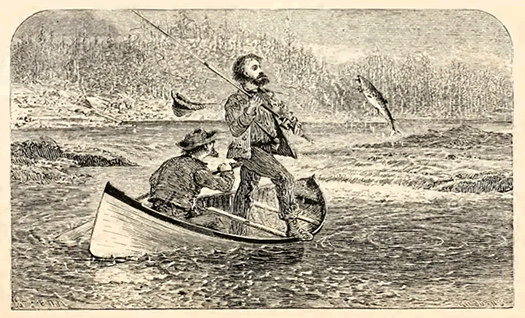
An illustration from Adventures in the wilderness, or Camp-life in the Adirondacks.
There are a lot of interesting bits in this Smithsonian article about the history of the Adirondacks as a vacation destination -- specifically the influence of Adventures in the wilderness, or Camp-life in the Adirondacks, an 1869 book by William H.H. Murray that helped popularize the idea of vacationing in nature. And after a rough start (unprepared city people heading into the wilderness), the idea took off:
The Adirondacks were soon booming. By 1875, some 200 hotels and camps were operating in the mountains, with new stagecoach services rattling from the train stations and steamboats plying the lakes. By 1900, the Adirondacks' summer population had risen to around 25,000 from 3,000 in 1869. Attracted by the fishing and hunting but appalled by the crowds, the Vanderbilts, Rockefellers, Carnegies, Huntingtons and other fabulously wealthy industrialists built their own spectacular "great camps," where they could disport with their families in private luxury. The American vacation was born--quite literally. The scions of New York City took to declaring that they would "vacate" their city homes for their lakeside summer retreats, and the term "vacation" replaced the British "holiday" in common parlance. As fellow Bostonian Wendell Phillips put it, Murray's book had "kindled a thousand campfires and taught a thousand pens how to write of nature."
The article's author, Tony Perrottet, details the history of some of the great camps, and then visits some of the spots mentioned by Murray.
Murray's book -- a combination guide book/travelogue/ode to the outdoors -- is available in online archives. Skimming through it, he is both enthusiastic about the wonders of nature... and perhaps a bit understated about its complications. A section about bears is after the jump.
Token of history

A quick follow up to last week's post about the history of trolleys in the Capital Region: Andrea mentioned to us that she once found an old trolley token outside her apartment in Albany. And she sent along pics. One for each side is above.
The United Traction Company operated the trolleys in Albany for almost five decades. UTC was formed in 1899 by the merger of the Albany Railway, the Troy City Railway, and the Watervliet Turnpike and Railway Company. Its headquarters were at the Columbia and Broadway in downtown Albany -- the building is still there. The company switched over to buses when the trolleys stopped, and was later folded into CDTA during the 1970s.
If you'd like to see what an untarnished token looked, the New-York Historical Society has a photo.
(Thanks, Andrea!)
Riding the trolley -- everywhere

Madison Ave in Albany sometime during the 1940s. Courtesy of The College of Saint Rose Archives.
There's something about trolleys that lights people up -- even though a lot of people weren't even alive the last time a trolley rolled through Albany. It's been almost 70 years since the lines stopped.
We were thinking about trolleys again this week after seeing this photo from the College of St. Rose Archives. It's Madison Ave at Partridge, facing west, sometime in the 1940s, right about the time the trolleys stopped. We love the way the tracks lead away covered by the canopy of trees.
That photo prompted us to dig through some of the history of trolleys in Albany -- which is like looking through some alternate transit universe.
Expo 1920s

Detail from a flapper dress.
We generally operate under the assumption that the 1920s had the best clothes. And the decade generally sounds like it was a grand time, what with the those stylish clothes and speakeasies and
new work from Fitzgerald and the atmospheric sound of Victrolas.
And maybe it was, if you were a certain kind of person. Maybe less so if you were a woman or a minority.
The 1920s -- and how different, or similar, they are to day -- are the subject of "Expo 1920s," what looks like an interesting upcoming program from the Rensselaer County Historical Society and Russell Sage College. Blurbage:
Expo 1920s uses fashion, technology and leisure items from the RCHS collection and joint research by Russell Sage College Women's Studies students and RCHS staff to explore the question, are the 1920s so different from today? The program features an expo-style show that will highlight twelve different historic artifacts, from flapper dresses to home appliances, wool bathing suits to linen duster coats that highlight the themes of sexuality, consumerism, privilege and power. A multi-media presentation including historic photographs and music serves as the audio/visual backdrop for the show.
After the expo portion of the event, Dr. Shealeen Meaney, Assistant Professor of English, Director of The Helen M. Upton Center for Women's Studies and Coordinator, American Studies at Russell Sage College, will moderate a Q&A session fostering community dialogue.
The program is April 27 at 7 pm in the Bush Memorial Hall at Sage College in Troy. Tickets are $25 and $35 ($10 for students).
RCHS has shared photos with us of some of the artifacts from the expo. A few are after the jump.
409 Madison
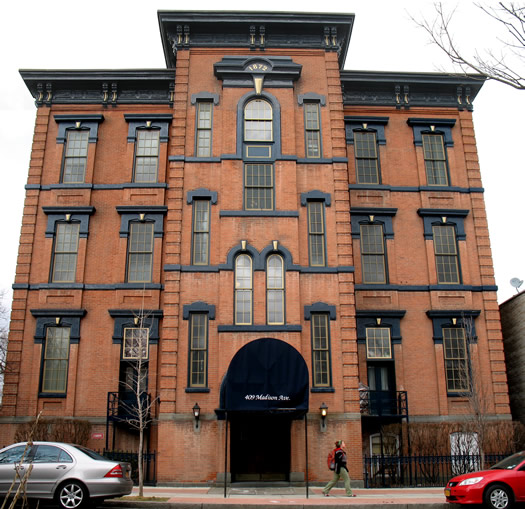
Today's moment of architecture gawking: 409 Madison Ave in Albany, just east of Lark.
This rather handsome building is now condos. But it first served as a school after it was built in 1872 -- School No. 11. Its architect was Edward Ogden, who -- along with a few partners, including his son Charles -- designed buildings all over the city. In fact, you might recognize the style of the Kenmore Hotel on Pearl Street in this building -- they're both Ogden designs. [Proceedings of the Board of Education of the City of Albany, 1909] [Architects in Albany]
Another Ogden building in which there's an echo of the style, though in this case it's a Charles Ogden building: the former Albany Home Telephone Co. downtown. That building is now the City Beer Hall -- and was once a restaurant called... Ogden's.
New spirit for ghost signs
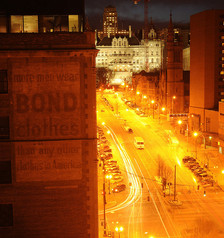 How about this: For this year's Sculpture in the Streets, the Downtown Albany BID has decided to restore ghost signs. From the info/application form (doc):
How about this: For this year's Sculpture in the Streets, the Downtown Albany BID has decided to restore ghost signs. From the info/application form (doc):
This year's exhibit titled: All Signs Point to Downtown will restore old retail signs, also referred to as ghost signs, on the sides of our historic buildings retelling the story of downtown Albany as the commercial hub for the Capital Region prior to the creation of suburban malls.
Now through April 12, 2013, the BID is accepting submissions from artists interested in participating. Painting will take place between mid-April to mid-June and an honorarium will be paid based on the size and complication of the retail sign.
We've converted the doc to a pdf for easy scanning -- it's post jump. It includes info on requirements, guidelines, and other details.
There are at least a handful of preservation efforts around the country aimed at keeping ghost signs from totally fading away -- especially out west, where the signs are apparently still numerous (see Butte, Montana and Fort Collins, Colorado). Interestingly, there are some people who think the signs should be allowed to fade out.
Be sure to check out Chuck's photoset of local ghost signs. He created a book from the set. (That's one of Chuck's photos on the right, from State Street.)
[via Biz Review and @AlbBizMikeD]
Earlier on AOA:
+ Last year's Sculpture in the Streets was the giant Dutch clogs
+ So, how do you create a giant clog sculpture?
photo: Chuck Miller
Cycling in style

In large format.
Over at the blog for the Schenectady County Historical Society's Grems-Doolittle Library blog there's a very interesting post about cycling in Schenectady around the beginning of the 20th century.
Bicycle garages at GE! A bike toll road along Route 5 between Albany and Schenectady! Early 1900s hipsters! It's kind of amazing how robust the cycling culture was then.
The post includes the above photo, from the Larry Hart Collection. From its description:
Two women stop during a bicycle ride around the Schenectady area, ca. 1900. Women's participation in the bicycle craze during the 1890s led to the decline of corsets, inspired "common-sense" dress, and allowed greater mobility for women. Women also joined men as members of cycling clubs formed during this period. Many suffragists and women's rights advocates saw the bicycle as a mechanism for women's freedom; in 1896, Susan B. Anthony told New York World reporter Nellie Bly, "I think [the bicycle] has done more to emancipate woman than any one thing in the world. I rejoice every time I see a woman ride by on a wheel. It gives her a feeling of self reliance and independence the moment she takes her seat; and away she goes, the picture of untrammelled womanhood."
As we've said before, the library's blog is totally worth a look. Lots of good stuff there.
[via Carl]
Quackenbush Still House Rum
 Check it out: the Albany Distilling Co. is releasing its first rum -- Quackenbush Still House Rum -- this Saturday. The company's new product is actually kind of old-school. From ADC's blog:
Check it out: the Albany Distilling Co. is releasing its first rum -- Quackenbush Still House Rum -- this Saturday. The company's new product is actually kind of old-school. From ADC's blog:
Rum was an important commodity in the colonies, produced in a variety of important cities, and Albany was no exception. The Quackenbush Still House made rum in what was then Rensselaerswyck, which today encompasses much of downtown Albany. The distillery stood not far from our current front door, just south of us, where a parking garage now resides. Before construction started on the garage, the site was excavated in 2002 (much, much more information can be found here). The original Quackenbush distillery operated from around 1758 to 1810, when the popularity of rum (in Albany, not elsewhere) declined in favor of other spirits (whiskey, most notably).
And from its product page:
Back then, Caribbean molasses were mixed with water from the Hudson River and allowed to ferment with wild yeasts in huge, open wooden vats (the remains of which can still be seen at the New York State Museum) before being distilled and bottled. Our Original Albany rum follows this tradition, with a recipe from that era and molasses from the Caribbean - but with an updated production line (and different water).
On Saturday the distillery will be open for tours, as well as tastings and sales of ADC's other products. But not the rum. It can't be sold at the distillery because it's not made from New York State products -- so it's only available at retail stores and bars (including the nearby Albany Pump Station and Olde English).
There's a also new exhibit at the nearby Albany Visitors Center of artifacts from that 2002 excavation. And at 1 pm on Saturday an archaeologist will be talking about the 18th century distillery.
Earlier on AOA: Talking with founders of the Albany Distilling Co.
photo: Albany Distilling Co.
The Irish American Heritage Museum

You may be feeling particularly Irish this week. All of the sudden, you want to eat corned beef and cabbage, put on a wool sweater, and talk about the good old days. And if you want to make your St. Patrick's Day more than just a parade and a pint? You can learn some history, too.
The Irish American Heritage Museum in downtown Albany offers a year-round look into the story of the Irish in this area. It's usually a small, quiet space focusing on the history and impact of the people who trace their roots to Ireland.
But this time of year for the museum is kind of like what Halloween is for a costume shop.
Yaddo is now a landmark. Officially.
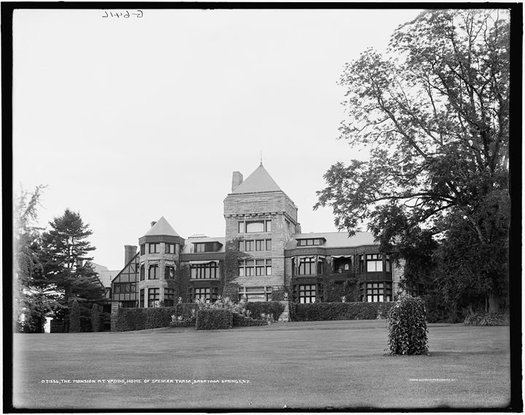
A photo of the Yaddo estate sometime between 1900 and 1910, shortly after it was established as an artist retreat. Here's what it looks like now.
The US Department of the Interior has approved the designation of Yaddo as a National Historic Landmark, according to Kirsten Gillibrand's office.
The designation opens the way for Yaddo to seek new preservation funding for the artists retreat in Saratoga Springs. Also, the National Park Service provides designees with a plaque. And, you know, it's also pretty cool to be an official landmark.
Yaddo was founded in 1900 by Spencer and Katrina Trask. Its mission: "to nurture the creative process by providing an opportunity for artists to work without interruption in a supportive environment." The 400-acre estate on Union Ave has hosted a remarkable lineup of notable artists, who collectively have won 67 Pulitzer Prizes, 27 MacArthur Fellowships, 68 National Book Awards, 40 National Book Critics Circle Awards, 108 Rome Prizes, 52 Whiting Writers' Awards, and a Nobel Prize. Among the artists who have stayed there: Langston Hughes, Leonard Bernstein, Truman Capote, Eudora Welty, and John Cheever.
Yaddo's gardens are open to public. The rest of the estate is closed to the public -- but it's very occasionally open to public tours. And if one comes along, it's worth checking out.
Earlier on AOA: Wandering through Yaddo
photo: Detroit Publishing Company Photograph Collection / Library of Congress via Wikipedia
The Rapp Road Community Historic District

When you think of Rapp Road, in the far west part of Albany, a couple of things might come to mind: Crossgates, a shortcut to the Northway, and, well, the landfill.
But for the past 11 years, this unassuming residential back road has been listed on the National Register of Historic Places.
Full circle after three generations
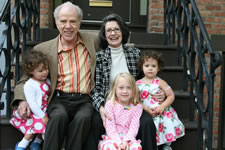 In the latest episode of Duncan Crary's A Small American City podcast, William Kennedy talks about growing up in North Albany, how the city changed, how his family ended up in the suburbs -- and about his grandkids living in... a city.
In the latest episode of Duncan Crary's A Small American City podcast, William Kennedy talks about growing up in North Albany, how the city changed, how his family ended up in the suburbs -- and about his grandkids living in... a city.
I never wanted to do that, you know. I always resisted the idea of moving any part of my life to the suburbs, and especially because of how strongly I loved the city, the center of the city. Albany was a vital, vital city. I mean, it was just full of people all the time, everyday, lunch hour you couldn't walk on the sidewalks. And Thursday nights everybody's shopping, and the weekends everybody's at the movies. There were seven movies downtown: it was the Palace, the Strand, and the Grand, and the Ritz, and the Leland, and the Royal ... the Paramount ...
And all that vital life, there was departments stores, and bowling alleys, and social clubs. And everything started in the late 40s/early 50s to close down. The federal tax on nightclubs, and they went bust. And then television came in, and everybody stayed home, they didn't go to the movies. And the movies went crazy trying to figure out how to ... get people to come back to the movies. But the movies were everything for us -- 3,000 people at 11 o'clock at night outside the Palace, coming out of these various theaters ... And they'd go all over the place ... The place was full of night clubs, great restaurants -- all night restaurants -- and pool rooms. (laughs) I was especially fond of the pool rooms because my uncle and my father, he was a good pool player...
Anyway, but that whole urban environment was in decline in the years when I was just coming into manhood and starting to work at the Times Union at my first reporting job on the city side of the news ... and then suddenly the city just sort of imploded, you know. And the '60s came...
I went away in the middle '50s... I went to Puerto Rico to work on a newspaper. I was bored with the town. It was boring. There wasn't enough action.
While in Puerto Rico, Kennedy met his wife and got married, moved to Miami, moved back to San Juan. And they came back to Albany in 1963.
See an Oscar up close in Troy

The closest most of us will ever get to Oscar
We're heading into Oscars weekend, when actors, directors, screenwriters and other people in the film industry are having visions of holding a golden statuette, thanking the Academy, and timing their speeches in hopes they don't get played off.
But let's face it -- most people don't get an opportunity to see Oscar up close.
You can see one right now, though, at the Rensselaer County Historical Society in Troy.
Farewell, George Washington
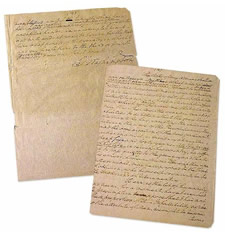 This weekend at the State Museum: From New York to the White House, New York Residents Who Became President, which runs Friday-Sunday. Blurbage:
This weekend at the State Museum: From New York to the White House, New York Residents Who Became President, which runs Friday-Sunday. Blurbage:
The exhibition will include several important artifacts from the George Washington Collection at the New York State Library, including an original draft of George Washington's Farewell Address, penned in his hand, which was sent to Alexander Hamilton for comment and revision on May 15, 1796. It was rescued from the fire that ravaged the State Capitol in 1911. One of Washington's dress swords will also be on display. According to Washington family tradition, the sword was presented to Washington by Frederick the Great, King of Prussia. The sword was purchased by the State of New York directly from Washington's family in 1871 and is depicted in the Washington portrait that hangs in the United States House of Representatives.
Speaking of presidential documents... Abraham Lincoln's preliminary Emancipation Proclamation will also be on display on the second floor of the Capitol this Friday and Saturday.
Gordon Parks: You can rack up a triple-exhibit score if you also stop by the Gordon Parks photography exhibit at the State Museum.
Oh, and by the way: the State Museum is closed on President's Day. (Mondays are its usual closed day.)
photo: New York State Library
Winter in Schenectady, then
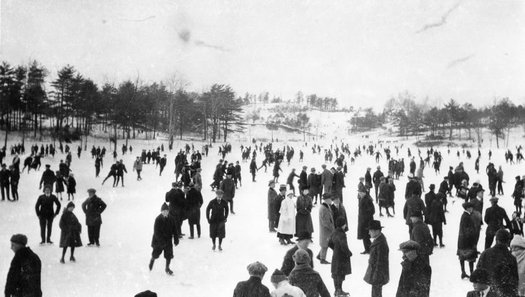
Above is a 1916 photo of ice skaters in Schenectady's Central Park. Make sure to check out the large version. The picture makes us smile -- the big crowd of people all out on the the frozen lake, like it was the place to be that day.
The photo is from a collection at the Grems-Doolittle Library and Archives at the Schenectady County Historical Society. The library also has a blog, which includes a handful of other interesting winter-time Schenectady photos -- like one showing harness racing on a frozen Erie Canal.
The blog is good -- we got sucked into it for longer than we'd like to admit yesterday. It includes some great historical materials. Definitely worth a look.
Researching old houses
Speaking of the Schenectady County Historical Society: The Grems-Doolittle Library is offering a workshop on researching the story of old houses on February 16 from 2-4 pm. Blurbage: "Join us and discover the resources in our library available for researching the history of your home, neighborhood, and the people who lived there. This workshop will also include time to conduct research in the library." The workshop is $5. Contact librarian Melissa Tacke for more info -- 374-0263, or librarian |at| schist |dot| org.
The lumber district then and now
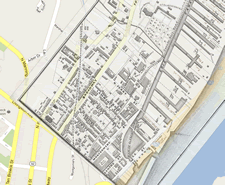 The mysterious Albany Bagel has followed up the excellent 1877 map overlay of downtown Albany with an overlay of North Albany -- this time, with an 1857 map of what was then called the lumber district.
The mysterious Albany Bagel has followed up the excellent 1877 map overlay of downtown Albany with an overlay of North Albany -- this time, with an 1857 map of what was then called the lumber district.
One of the things that jumps out right away on the old map: the gardens around the Van Rensselaer Mansion. From ABC:
It's interesting to see the Van Rensselaer Mansion and its large gardens immediately surrounded by the canal, railroads, and the growing industrial center. According to the Albany Institute site, the family moved out of the house around 1875 and the building was dismantled in 1893 by none other than Marcus T. Reynolds.
Bonus: there are also a few photos.
Earlier: Old Albany on top of new
image: Albany Bagel Co / Google Maps
Hipster Henry Hudson
 We started goofing around today with @AlbanyArchives about the idea of Hipster Henry Hudson. It was prompted by AA's note about the Hudson River's name before, you know, the Half Mooning. Anyway:
We started goofing around today with @AlbanyArchives about the idea of Hipster Henry Hudson. It was prompted by AA's note about the Hudson River's name before, you know, the Half Mooning. Anyway:
@AllOverAlbany: "I'll be exploring the Grande River. It's in America. Very obscure. You probably haven't heard of it." #hipsterHenryHudson
@AlbanyArchives: "The Dutch offered me a Full Moon but I turned them down. Told them I'd only take half." #hipsterHenryHudson
@bdiddy100: "You know I had the first horn-rimmed spyglasses." #hipsterHenryHudson
And then Albany Archives created the image on the right.
Sometimes you just need a hipster portrait of a famous explorer to get you through the day.
Roll your own: AA has posted a blank version of the hipster Henry Hudson image if you'd like to your own Hipster Hudson quote. And here's one by @Bullmooser12.
Old Albany on top of new
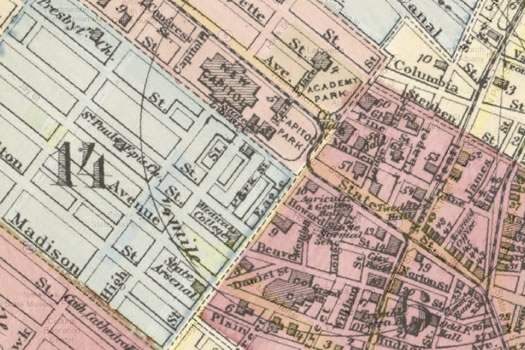
This is good: an 1877 map of Albany streets as an overlay of a Google map of the modern street plan. Bonus: the map includes a slider to adjust the transparency of the old map.
The map appears to be the creation of the mysterious Albany Bagel Co. From the blurbage for the project:
We're a new bagel company that will be bringing delicious bagels to Albany soon. All of the profits we make will be reinvested in the Albany community. We also love Albany history (hence our work on projects like this one).
We first heard about the project when it started following AOA on Twitter about a month or so ago. We're intrigued.
By the way: If you're interested in local history, you should be following @AlbanyArchives on Twitter. (For a while we thought @AlbanyArchives and Albany Bagel were the same person, but they assert that to not be the case.)
screengrab: Albany Bagel Co / Google Maps
The warmest year on record

Last year was the warmest year on record in this area, according to the 2012 climate summary for Albany, NY by National Weather Service. In this case, "on record" means dating back to 1820.
The average (mean) temperature for 2012 was 51.6 -- that's 3.3 higher than than "normal" average temp. In this case, "normal" is the average from 1981 to 2010.
2012's record-high temperature was the result of an unusually warm winter and spring. The 2011-2012 winter was the 8th warmest on record. And the 2012 spring was the second warmest (with the the warmest March on record).
The last year was unusually warm pretty much everywhere -- the numbers haven't been published yet, but 2012 was shaping up to be the warmest on record for the entire United States.
Warmer over the long run: The temperature trend lines for both the state and the nation are sloped upward by more than a degree over the last century. [NOAA] [NOAA]
Earlier on AOA:
+ The Karner Blue as another sign from the Year of Odd Weather
+ Hot spring
chart: National Weather Service
Printed in Albany: The first Christmas card and the first Santa ad
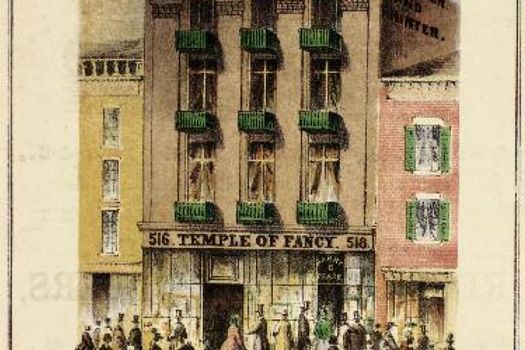
The Temple of Fancy.
Somebody would have done it eventually. We're pretty sure about that. But it happened to be Richard H. Pease who did it first. The owner of the Pease's Temple of Fancy, a famed 19th century Albany variety store and printing operation, appears to be the first person to put have used the image of Santa Claus in advertising.
He's also the person who printed the first Christmas card in the US -- right here in Albany.
Gregory Maguire on Albany's Pine Hills neighborhood
Check it out: Akum got Gregory Maguire to write about the Pine Hills of his childhood -- of the architecture, the geography, the shops, and perhaps most importantly, the library:
To pull open the heavy oak door of the library! -- then to encounter, first, the silence; and slowly to note the creak of floorboards and the squeak of rubber soles on grey linoleum tacked down in heavily trafficked areas. Then to hear the clank of antique radiators and to smell the radiator heat. Then to notice the pleasant odor of old lady clothes, and of those replacement library bindings, which seemed to be made of plastic chitin and gave off a noxious smell that provided a good buzz. Then, at the same moment, both to smell and to see the wood varnish on the golden lintels and rood screens and turned bannisters of the magnificent staircase ... It was a kind of heaven.
Maguire grew up on Lancaster Street, near North Pine Ave. As he writes in the piece, his family moved there in 1955. And his stepmother lived there until this past spring when she passed away.
By the way: Akum has been working on a history of her house -- not too far from Maguire's childhood home -- and the surrounding neighborhood. You can catch pieces of the project on her blog.
Albany C-SPAN segments
A quick follow up about the Albany weekend on C-SPAN: You can watch the segments from the weekend on YouTube.
As you might expect, they are very C-SPAN. Calm. Quiet. Considered. But there's some interesting stuff. Embedded above is a BookTV segment with William Kennedy -- it's basically 11 minutes of him unspooling threads about Albany history. There are other interviews, and also what are more or less video tours. This segment from the State Archives has an interesting bit about archivists are working to preserve some very old and damaged documents.
Why that monument in Townsend Park says Porto Rico

Porto Rico -- set in stone.
After they're up for a while, statues and monuments can just become part of the landscape --that thing you pass by everyday on your way to work or the grocery store. You might give them a fleeting thought as you drive or walk by -- or you might not.
One thing that can make a statue stand out and get your curiosity going, though -- an error. An error like the one on the towering Spanish American War monument in Albany's Townsend Park, where a statue of an armed soldier rests on a stone base, each side listing one of four territories involved in the warL "Cuba, Hawaii, Philippines and Porto Rico." Wait, what? Yep. "Porto Rico."
Before you etch something in stone, you'd think you'd have a proofreader look it over. One proofreader, at least. Yet somehow "Porto Rico" slipped by.
So how does an error like that get etched into stone for all eternity?
The Soldiers and Sailors Monument

Sometimes you drive by something so often, you don't even really see it anymore. A historical monument that once drew thousands to the city becomes just as much a part of the landscape as a Dunkin' Donuts.
You've probably noticed that a large stone monument in Washington Park near Henry Johnson Boulevard.
What is that? And why is it there?
Next on the playlist: something from 1878

Thomas Edison with a tinfoil phonograph, probably in 1878. The tinfoil was later replaced by wax cylinders.
Old-school sound: miSci -- formerly the Schenectady Museum -- will be revealing the recording from its 1878 Edison tinfoil tonight (Thursday). It's the second oldest documented Edison tinfoil recording -- it includes what is probably the oldest playable American voice, as well as the first ever recording of a musical performance. From the blurbage:
Attendees will learn the background of the object, how it fits into miSci's collections, what its significance is in the timeline of larger technological innovations and the latest breaking news - the owner of the voice is revealed!
The presentation will also tell why the recordings couldn't be recovered until now, the story of some of the challenges faced, the technological innovations (the development of special software programming called PRISM) made to read the tin foil and where the tin foil fits in the spectrum of surviving recordings throughout the world.
Here's a bit more about the recording from an AP story.
The miSci event is at the GE Theater at Proctors at 6:30 pm. It's free.
If you go, take a moment to imagine yourself 300 years in the future at an event in which scientists and curators are debuting a recently developed emulator for an archaic audio format known as an "mp3" and display a quaint little device called an "iPod." (The use of iPods, mp3s, AACs, and other related tech was made obsolete once Apple introduced the iBrain and started streaming music directly to a chip in people's heads.)
Earlier on AOA: What you can't see at the Schenectady Museum
miSci advertises on AOA.
photo: Levin C. Handy via the Library of Congress via Wikipedia
Kateri
 As you might have seen in all the local coverage, Kateri Tekakwitha -- a Native American woman born near Amsterdam, New York in 1656 (there's now a shrine at the site) -- was canonized by the Roman Catholic Church Sunday. She's the first Native American to be recognized as a saint by the church. Thousands of people were at the shrine in Auriesville to celebrate.
As you might have seen in all the local coverage, Kateri Tekakwitha -- a Native American woman born near Amsterdam, New York in 1656 (there's now a shrine at the site) -- was canonized by the Roman Catholic Church Sunday. She's the first Native American to be recognized as a saint by the church. Thousands of people were at the shrine in Auriesville to celebrate.
Sainthood is a big deal for Catholics. Saints are believed to have led lives of great faith, often in difficult circumstances. (In Kateri's case: converting to Catholicism, taking a vow of chastity, and becoming a paragon of faith after being left an orphan by smallpox and living through turbulent times.) And Catholics believe that God continues to act through these people after their deaths. (In Kateri's case: a boy in Washington State is said to have been cured of a flesh-eating infection after prayer to her.)
Local author Jack Casey was in Rome for the canonization of Kateri and he's written a series of posts about the experience on his blog. A book by Casey -- Kateri -- Lily of the Mohawks -- was recently published by Staff Picks Press, the imprint run by the Book House. It sounds like an overview of Kateri's story -- or, at least, a version of it.
Not surprisingly, the canonization of Kateri has reportedly prompted a range of reactions among Native Americans. From an interesting recent article by Renée K. Gadoua in the Syracuse Post-Standard:
"We've been waiting a long time for this," [Sister Kateri Mitchell, born on the St. Regis Mohawk Reservation] said of the canonization at the Vatican on Sunday. "It's a great validation."
Doug George-Kanentiio, also a Mohawk from St. Regis, was brought up Catholic, even serving as an altar boy. But he left the church at 14 when he began to practice longhouse traditions.
"I had a lot of anger at the church at the things they had done to the Native people and the world and the moral compromises they made," he said.
He, too, will travel to Rome for the canonization.
"It took me a while to begin to adopt a different approach to this, not one based on history, but compassion for a young woman who was determined she was going to emulate the suffering of Jesus Christ," George-Kanentiio said. "That passion is remarkable."
Alicia Cook grew up on the Onondaga Nation, married a Mohawk and now lives at St. Regis, also known as Akwesasne. She has always practiced longhouse religion and has no interest in Kateri's story.
"The church has been telling us for years we're heathens," Cook said. "The white man has hurt us enough. They intruded on our land here."
And here's another perspective, from a site called American Indians in Children's Literature, lamenting the stereotypes that have popped up in coverage of Kateri.
portrait by Father Claude Chauchetière, S.J., ca 1696 via Wikipedia
Gravespotting Chester A. Arthur

Tucked into Albany Rural Cemetery.
Let's face it: not all presidents were created equal. Like Hollywood or the NFL, the American executive lineage is a mixed bag of heralded superstars, shunned failures, and neglected bit players.
Just look at our currency for proof. Is it fair that Lincoln is on both the penny and the five? Maybe Ulysses S. Grant would like a little more face time outside the fifty. Sorry, Grant, but giving African-Americans protected voting rights via the Fifteenth Amendment isn't as epic as ending slavery, so it's just the one bill for you.
And don't get me started on all the stuff named after Washington in this country. The first guy to do anything always gets the lion's share of love. Meanwhile, Rutherford B. Hayes gets jack. The argument that Hayes did not have the same panache as Washington is almost acceptable until you gaze upon the absolutely scrumptious beard the former kept during his reign as president. 'Twas a follicle forest that continues to shame any growth spotted in today's hipster enclaves.
Disparity of popularity between the presidents is also evident in their respective grave sites. The Capital Region boasts a shining example in the grave of Chester A. Arthur, which is tucked deep into the Albany Rural Cemetery in Menands.
Dark Side of Center Square walking tour
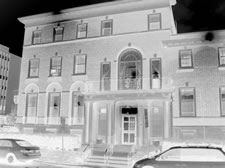 There's a "Dark Side of Center Square" walking tour coming up later this month. The guide is Tim Varney -- of the Albany: Then and Now app -- and it's a fundraiser for the Historic Albany Foundation and the University Club. From the blurbage:
There's a "Dark Side of Center Square" walking tour coming up later this month. The guide is Tim Varney -- of the Albany: Then and Now app -- and it's a fundraiser for the Historic Albany Foundation and the University Club. From the blurbage:
Many dark and unsettling dramas have played out behind the elegant façades of Albany's Center Square and Hudson/Park neighborhoods. This tour will explore both the sinister deeds and the handsome architecture of a bygone era.
Tim tells us of the tour, "The narrative will be 'R-rated' and include graphic material not suitable for children or the faint of heart."
The tours are October 28, 29, and 30. They're from 6-7:30 pm, and start at the University Club at 141 Washington Ave. It's $15 per person.
There's limited space and reservations are required: 465-0876 x10.
Earlier: Albany historic ghost tours
A bid to make Owney famous again
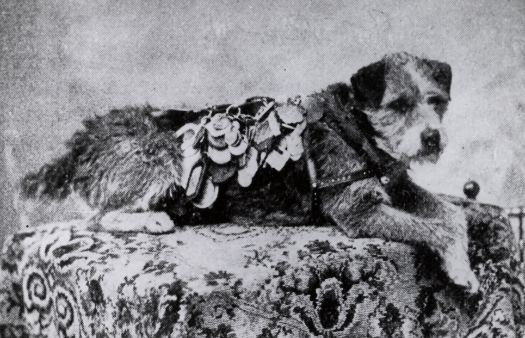
Dog star.
There's a Kickstarter project currently up for funding that would create a graphic novel about Owney, Albany's famous traveling dog. From the St. Louis-based team behind The Secret Around-the-World Adventures of Owney, the Postal Dog:
What if Owney had made some unexpected detours during his travels around the world and had some exciting adventures along the way? He was always going his own way, so it wouldn't be altogether surprising.
We imagined him not just stopping in Japan and China, but crossing into India, the Middle East and Europe on his own before sailing back to the States. He would have had a chance to see a world very few people saw at that time. He might have befriended postal workers of distant countries or met famous contemporaries like the Lumiere Brothers in Paris...
If their project is successful, Albany's most famous pooch could be famous once again.
What? You don't know about Owney?
Albany historic ghost tours
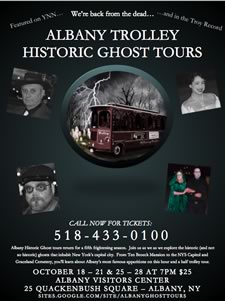 The historic ghost tours on the Albany Trolley are "back from the dead" for another season. From the blurbage:
The historic ghost tours on the Albany Trolley are "back from the dead" for another season. From the blurbage:
The Albany Trolleys are "back from the dead" for a fifth season of Ghost Tours in Albany to help everyone to get into the"spirit" of the Halloween season. This on/off Ghost Tour invites participants to get up-close and personal experiences at local haunts. Step off onto the haunted grounds of the Ten Broeck Mansion. Stand by the State Capitol to hear the tales of the spirits that lurk there. And, by lantern light, find out about the ghost of Graceland Cemetery.
Tours start October 18, and the last tour is October 28. The tours leave at 7 pm from the Albany Heritage Area Visitors Center. Tickets are $25 per person and reservations are recommended.
Speaking of historical haunts... The Ten Broeck Mansion has a few Halloween-themed events coming up, including a horror movie screening (October 25) and a paranormal investigation event (with pizza) (October 27).
Earlier on AOA: Capitol Hauntings Tour 2012
State Education Building tours
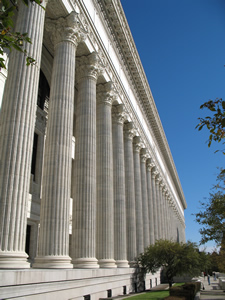 The State Education Building is a century old this year, and to celebrate the department is hosting a series of open houses and tours at the grand building across the street from the Capitol.
The State Education Building is a century old this year, and to celebrate the department is hosting a series of open houses and tours at the grand building across the street from the Capitol.
The Education Building's exterior, with that huge colonnade, is impressive. But the interior is also very beautiful. And these tours are a rare chance for the general public to get a look at it.
Here's a recent New York Now segment about the building. It give you a sense of the grandeur of the interior.
Tours start October 19 (the last tour is November 15). There's a sign-up form online. The open houses on October 19, 20, and 21.
(Thanks, Carl!)
Albany: Then and Now app
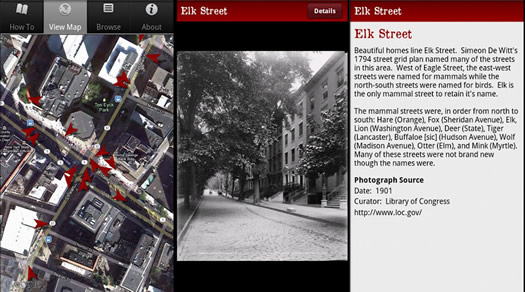
Screenshots from the Android version.
This is good: Tim Varney has created a mobile app -- Albany: Then and Now -- that combines a map of Albany with historical photos and background. As he explained in an email:
The basic idea is that you can walk around downtown and find a spot where a photographer stood 100 (or so) years ago. You can then view the streetscape from his vantagepoint and visually see the changes that have occurred.
Here's a bit more detail from the app's iTunes page:
Make your way to downtown Albany. Open the "Albany: Then & Now" app on your mobile phone and click on the "View Map" button. On the map you'll see red arrows which represent the more than 130 historical photographs in our collection. Each arrow shows where sometime in the past a photographer stood and took a picture of the city's landscape. Most of the photographs are around 100 years old.
Using the map as a guide, walk to one of the marked locations. The center of the arrow indicates where the photographer stood. The direction of the arrow shows which way the photographer was facing. Do your best to stand in the same spot and face the same direction as the photographer did.
On the map, press the red arrow. Voilà ! The image that you're seeing is exactly what the photographer saw years ago while standing in the same location! For more details about the photograph, press the "Details" button.
There's a video of the app in use after the jump.
The app is available for the iPhone and iPad, as well as Android. And it's free.
So, what prompted Tim to make this app?
Political memorabilia show
 This Saturday at the Best Western Sovereign Hotel (across from UAlbany) there's a political memorabilia show. From the blurbage:
This Saturday at the Best Western Sovereign Hotel (across from UAlbany) there's a political memorabilia show. From the blurbage:
100'S of Collectors of American Political Campaign material with gather Saturday in Albany starting at 9:00 a.m. to buy sell and trade OBAMA, ROMNEY and ABE LINCOLN campaign buttons and other political and historic material.
As you might imagine, threre's a whole world of campaign memorabilia collectors. They even have their own org. And they collect all sorts of stuff -- buttons, stickers, the always popular "ephemera."
The show at the Best Western is from 9 am-2 pm. It's free to get in.
Things wooly and Scottish in Upstate New York
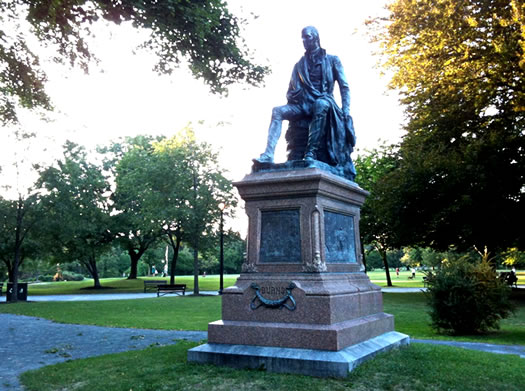
Robert Burns: statue resident of Washington Park, author of New Year's Eve songs no one understands, Scotsman.
You may have noticed there are quite a few Scottish people in the Helderbergs this weekend. They appear to be drinking heavily and throwing telephone poles around.
There's a lot I could say to shed a little light on these odd activities and all things Scottish and local. In fact, I've asked the publishers of this blog to let me do that. So pour yourself a hot toddy (if it's cold) or just a whiskey if it's not, and let's get to it.
1) Those telephone poles are called "cabers."
2) Scotch is a drink, Scots are a people, and Scottish is an adjective.
3) We're not Irish.
History was here
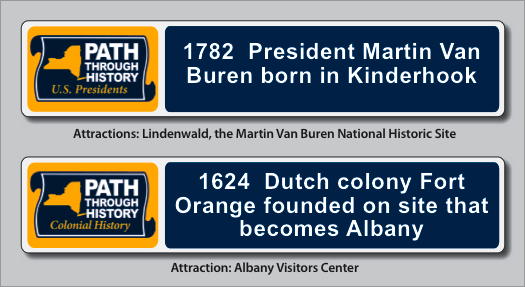
Andrew Cuomo presented the state's new "Path Through History" program today. It's intended to draw attention to historical sites around the state, and you know, get more people to visit them. (AC is apparently a rather large history nerd.)
The most recognizable part of this program will be a series of new historical markers:
The new signage system consists of two types of signage. Over 200 new signs will highlight key moments in New York and American History and be placed between exits of major state roads. The Historic highlights were selected with the help of leading historians. These signs are branded with a unique "Path Through History" logo. ... Each sign is also keyed to a historic theme to allow for customized tours.
So it's like an updated version of the blue and yellow metal markers that are all over the state. That program ended decades ago. New signs -- like the one recently installed for Washington Park in Troy -- have been commissioned by private groups.
The lineup of proposed historical markers is embedded after the jump, grouped by region.
Among the events commemorated by the Capital Region's markers: the birth of Martin Van Buren in Kinderhook, the Revolutionary War victory at Saratoga, the opening of GE in Schenectady, and the founding of RPI.
The Tailored Tea

Tea with a view
The historic farmhouse at the end of the runway at Albany International Airport runway sat vacant and in disrepair for years.
It had once served as a private home, a post office, a town hall, an inn, and was where a plan was hatched for the infamous Cherry Hill murder. It was even moved -- the whole house, moved -- 600 feet, at one point.
The house has now found a new life as the home of The Tailored Tea -- a tea room for breakfast, lunch, brunch, afternoon tea... and plane watching.
Our Town: Troy
 WMHT's new Our Town: Troy airs for the first time this Thursday at 7:30 pm. From the blurbage:
WMHT's new Our Town: Troy airs for the first time this Thursday at 7:30 pm. From the blurbage:
WMHT's OUR TOWN TROY features stories told by those who live and work in Troy using their personal video cameras. The stories are designed to show the heritage, personalities and unique characteristics that make the community distinct. The stories are chosen and told by community members.
The program includes 25 stories -- the full list of stories and storytellers is after the jump. And here are a bunch of stills from the program.
The Our Town series already includes Amsterdam, Bethlehem, Hudson, Saratoga Springs and Schenectady. Those episodes are available online in full.
Is St. Joseph's Church a brewery in its next life?
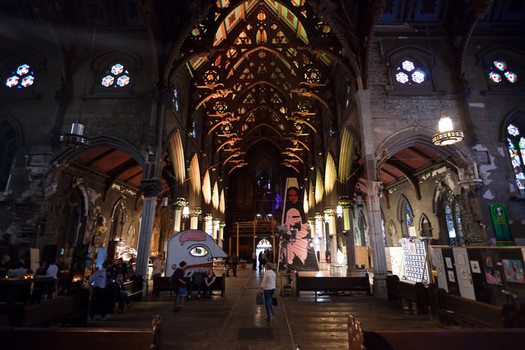
The interior of the former St. Joseph's Church during an art exhibition in 2010.
The Historic Albany Foundation has been looking for a use for the former St. Joseph's Church in Albany's Arbor Hill neighborhood since the organization took over the building in 2003.
HAF Executive Director, Susan Holland says they've been pitched everything from a Christian recording company to a goth club -- but, for various reasons, the ideas didn't work out.
Then, not long ago, she heard from a company called Ravens Head Brewing. Its pitch: to turn the old Gothic church into the flagship location for its brewery, and a restaurant/events venue.
Lark Street, 35 years ago

Maude Baum has seen a lot of changes on Lark Street
"Funky," is how Maude Baum describes the state of Lark Street in 1977 when she was looking for a home for EBA, her multimedia performing arts company. Funky in a lot good ways. And funky in some not-so-good ways.
Baum found the spot for her company above an old TV/radio repair shop at the corner of Lark and Hudson Ave. It's been there ever since.
This weekend, as EBA celebrates its 40 year anniversary, 35 of them on Lark Street, Baum took time to talk with us about where Lark Street's been (eclecticism, grocery stores, an archery range, unsavory behavior) -- and where it's going.
"A Home for Debauchery in the Spa City"
The video embedded above is a short documentary about Caroline Street by Skidmore student Patrick Klimaszewski. It's interesting in the way it charts the century-long confluence of factors that have resulted in Caroline Street becoming "a home for debauchery in the Spa City." Klimaszewski told the Spotlight back in April he's been researching Caroline Street as part of his anthropology major. [Spotlight]
The Saratoga Springs city council is expected to vote tonight on whether to move last call from 4 am to 3 am, a proposal driven by the frequent unruliness on Caroline. The choice may not end up with the city, though -- the State Liquor Authority recently issued an opinion that the city can't change the last call time unless Saratoga County does the same. [Saratogian] [TU]
[video via Saratoga Seen]
Someone still loves you Chester A. Arthur
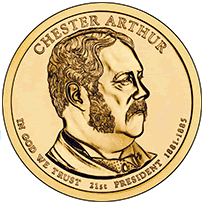 News to us: There are US President $1 coins (like the Sacagawea) -- for which there apparently has been uneven demand because of the tastes of the currency-using public. The Obama admin directed the US Mint to stop producing the coins for circulation at the end of last year after the government accumulated a $1.4 billion surplus of the coins. [USA Today]
News to us: There are US President $1 coins (like the Sacagawea) -- for which there apparently has been uneven demand because of the tastes of the currency-using public. The Obama admin directed the US Mint to stop producing the coins for circulation at the end of last year after the government accumulated a $1.4 billion surplus of the coins. [USA Today]
But they're still available by special order. And when the coin commemorating Chester A. Arthur -- Washington County native, Union College grad, current resident of the Albany Rural Cemetery -- was issued last month, the Mint got orders for more than 6 million Arthur dollars. [Coin Update]
By the way: a Chester A. Arthur dollar will set you back $1.12 (minimum order: 100) before shipping and handling.
[via Union College]
image: US Mint
New York's (now lost) native parrot

From an 1825 illustration by John James Audubon.
As strange as it might sound, there were once parrots -- parakeets, specifically -- that were native to New York State. The range of the Carolina Parakeet stretched as far north as the Great Lakes, and there are historical reports of them in Albany.
They were brightly colored. They were loud. And by the late 1800s, they were gone from here. After the early 1900s, they were extinct.
Albany Rural Cemetery, after dark

ARC, after dark
 I have a strong phobia of death.
I have a strong phobia of death.
Like, a wake-up-in-the-middle-of-the night-in-a-cold-sweat kind of fear. The kind of fear I sometimes just need to talk my way through.
I simply can't fathom not existing. It scares the heck out of me.
Why then, you might ask, would someone with this terrible, gripping fear of the great beyond be wandering around Albany Rural Cemetery in the middle of the night?
It was all about the photos.
Scrolling through history
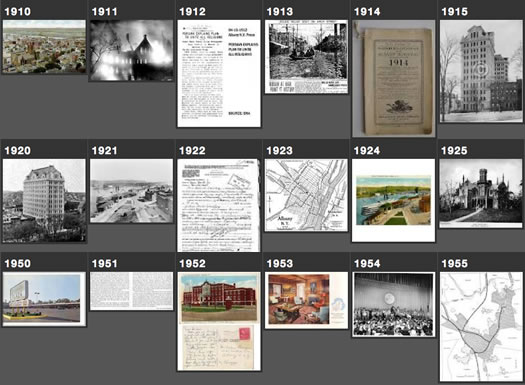
A few spans from the timeline for Albany.
Interesting/fun/gawkable: a timeline of photos and images about Albany, from 1900 to the present.
We were able to create the timeline using a Google Image Search hack by a guy named David Hirmes. It pulls images (for whatever topic) based on the dates associated with them. Some of the images are clearly not from the specific year -- but much more often than not, the timeline surfaces images that are close.
It's an fun way to explore images. We came across some interesting stuff -- a 1939 map of downtown (pre ESP) streets, a 1950s photo of the Delaware Plaza, a great 1956 night photo of State Street, a 1971 gay rights rally, and a lot of other stuff.
[via Waxy]
A new life for the New Scotland Ave Armory?
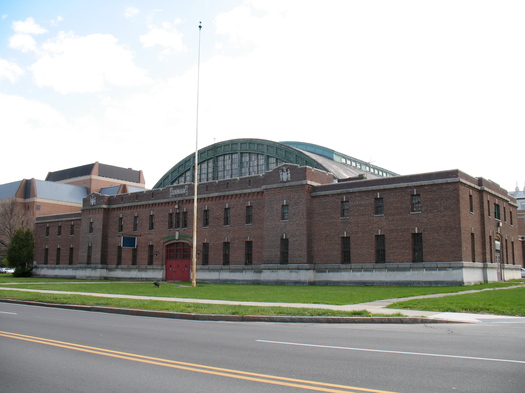
Waiting for something to do.
Given its location and understated grandeur, it always seemed like the New Scotland Ave Armory in Albany should be able to find some sort of use. And now maybe it is.
The Sage Colleges are in the process of buying the building from the bankrupt research institute that currently owns it, the Biz Review reports. It makes sense -- Sage's Albany campus is literally right next to the building.
The almost-60,000-square-foot armory was built in 1914 and originally housed a cavalry unit. It was deactivated in 1993, and closed in 1999. It's on the National Register of Historic Places. [NYS Military Museum] [National Register]
The now-bankrupt Ordway Institute had bought the building in 2010 with the aim of turning it into an incubator for biomedical startups. That obviously never hatched. [Biz Review]
The New Scotland Ave Armory is part of a generation of about 120 armories built in the state around the beginning of the 20th century. Some of them have been repurposed -- as performance spaces, sports facilities, museums, even a bed-and-breakfast. [SUNY Press]
Others haven't been so lucky. Maybe that shouldn't be surprising -- the buildings are old and big, so anyone taking them on is committing to rather large project. There were no bidders when the state tried to auction the Schenectady Armory last year. It's among a group of armories the state is currently trying to sell as surplus real estate (listing for the Schenectady Armory). The Hoosick Falls Armory in Rensselaer County (designed by Isaac Perry) is also on that list -- the Hoosick town board is considering a deal to buy it for $1. [TU] [Bennington Banner]
Drive on the Empire State Plaza? The future then.
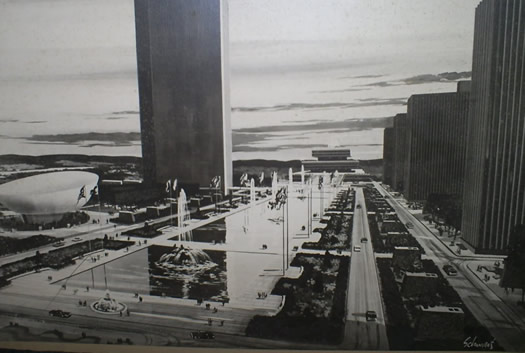
A cropped version. Here's the full version.
Today on Craigslist we stumbled across a listing for these great old renderings envisioning an auto-centric version of the Empire State Plaza. Here are easy-to-view versions: one, two, three, four, five, six.
There isn't a date listed for the renderings -- the Craigslist poster says he/she is looking for info about them (and accepting offers). We're guessing they're from the early to mid 50s (construction started in 1959). Check out how there are streets right on the plaza, running next to the agency buildings.
And this overview rendering gives a sense of the imagined context.
Earlier on AOA: The highway that was almost buried under Washington Park
The other Albanies
Okay, we all know we're not the only Albany in the United State. Though we are the oldest Albany in the US, and still the biggest.
And, as it turns out, many of those other Albanies were named in honor of this Albany...
Now on YouTube: Steinmetz, Felix the Cat, and other figures from GE's history in Schenectady
This is great: The Schenectady Museum has uploaded a bunch of vintage films to YouTube from its General Electric film collection. From the museum's announcement:
Films range from advertising and educational films to raw footage of equipment tests and company picnics. Many of the promotional films were originally shown in movie theatres in the days of newsreels and cartoons. While more films are being added daily, there are currently more than 50 films available, including: The "More Power to America" Train, 1960; Magic vs. Science, 1932; Charles Proteus Steinmetz: The Man Who Made Lightning, 1960s; Felix the Cat in The Kit and the Cat, ca. 1925; and General Electric Women in Science, 1954.
The Museum is currently offering three playlists on the channel: Transportation - rail and aviation films promoting innovations, including electric and diesel locomotives, turbo superchargers, and jet engines; General Electric Research - films highlighting technologies and inventions created at GE Global Research; and Electric Cars - electric car films from the 1960s, 1970s, and 1980s.
The film embedded above is a bio film about Charles Steinmetz -- who worked for GE in the early 20th century. In addition to being a genius, Steinmetz was also one of the most colorful characters in the history of the Capital Region. We're guessing the film is from the 1960s (update: Josh says it may pre-date 1952). It includes some, well, rather dated language -- but it has some great photos of Steinmetz and other notables. (There's also a glimpse of Steinmetz's former home on Washington Ave in the Stockade, which is still there and bears a plaque noting he lived there.)
By the way:We're still holding out for a movie and graphic novel in which either Steinmetz is a superhero, or he builds gadgets and weapons for superheroes.
Earlier on AOA: A behind-the-scenes look at the Schenectady Museum's collection
Lincoln's blood, and other stuff you didn't know was in Troy
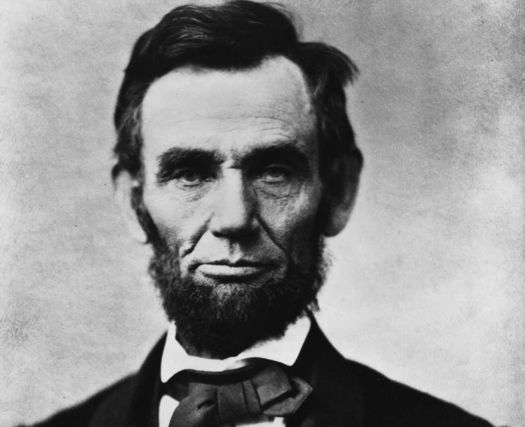
They haven't checked the DNA, but they're sure it's his.
There are times when someone tells you something and you listen politely and go "uh-huh,yes" -- and then stop and say, "wait a minute, what?"
That's what happened this weekend when Rensselaer County Historian Kathy Sheehan casually mentioned they've got Abraham Lincoln's blood at the RCHS building in Troy.
What you can't see at the Albany Institute of History and Art

Hyatt billiard balls, made in Albany.
Last week we showed you a few cool things you can't see at the Schenectady Museum.
This week we've found bunch of cool stuff you can't see at the Albany Institute of History and Art. Included in the tour, billiard balls, beer and WGY coffee.
Paterson opens African American Experience exhibit at Capitol

David Paterson was back at the New York State Capitol today. Paterson joined Andrew Cuomo for the unveiling of the new exhibit in The War Room at the State Capitol, The African American Experience in New York.
Among the items on display: one of Louis Armstrong's trumpets, also includesa letter from writer Langston Hughes to W.E.B. DuBois and a Syracuse University trophy from Jim Brown.
Speaking to the press and the crowd at the opening, Paterson recalled Carl McCall's $1 million campaign for Lt. Governor in 1982, joking about how he, himself managed to become the first African American Lt. Governor and then Governor of New York State. "I just answered the phone. Didn't spend a dime."[Albany Watch]
If you stop by the exhibit, you may also want to check out the Hall of Governors and the restored skylight. [Wall Street Journal]
Tributes to the Miss Albany
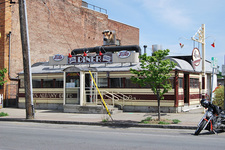 Today, of course, was the day for the Miss Albany Diner. The building has been sold, and the diner's owners are shutting the business down (though they'll still own the name and recipes).
Today, of course, was the day for the Miss Albany Diner. The building has been sold, and the diner's owners are shutting the business down (though they'll still own the name and recipes).
With all the tributes and goodbye tweets being posted about the Albany landmark, we figured it'd be good to collect them. Here's a bunch -- and if there are others, please let us know, we'll add them.
A farewell to the Miss Albany Diner

Photo via Chuck Miller, who stopped by MAD this morning and said it was busy. Who could pass up a last chance at MAD Irish Toast?
Akum stopped by the Miss Albany Diner for one last breakfast this week. From her thoughts on the place closing:
There's something about this place that's essentially Albany: Gritty, without pretension, but blessed with a long history, a sense of humor and more than a few hidden treasures. No, that's not it, exactly - its treasures aren't hidden. The place just didn't feel the need to crow about them.
She reports tomorrow (Friday) is the last day before the diner closes.
Matt Baumgartner and his businesses partners have bought the Miss Albany building -- but not the name or recipes -- and are still figuring out what they'll do with it. (Be sure to read Matt's comment.)
photo: Chuck Miller
What you can't see at the Schenectady Museum
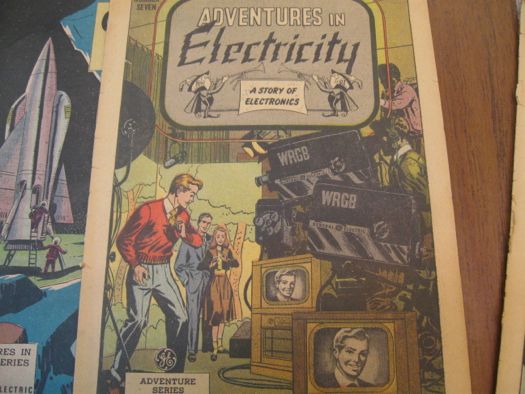
Among the things you can't see in the Schenectady Museum right now.
So, when you go to a museum you get to see all this cool stuff that they have out on display, right? But museums often have a lot more stuff than space to display that stuff. Often, there are all kinds of interesting things stored away that you can't see.
So we asked Chris Hunter, Director of Archives and Collections at The Schenectady Museum, to show us a few of the interesting items in the museum's collection that you can't see right now.
What did find? Everything from comic books, ray guns and refrigerator songs to 1920's solar cell research tools.
Want to see?
Miss Albany Diner building sold to Matt Baumgartner and partners
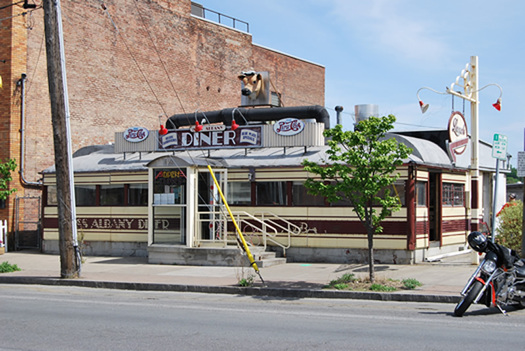
Miss Albany Diner.
Matt Baumgartner posted today that he and business partners Jimmy and Demetra Vann have bought the Miss Albany Diner building. The name "Miss Albany Diner" and its recipes are not part of the deal:
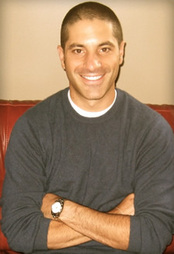
Mrs. [Jane] Brown and her son Bill, are legally keeping the name "Miss Albany Diner" as well as their recipes, and they maintain the right to open another diner in another location, as well as having the right to sell the name Miss Albany Diner and it's recipes to an interested party at another location. As new owners of the property, we legally can not continue to operate the space as Miss Albany Diner or use their menu items. I'm only noting that because it is important to us that it is clear that we are not "closing down Miss Albany Diner". They sold us the property, and we are not legally allowed to re-open Miss Albany Diner in that space.
On a personal note, I would like to thank Jane and Bill Brown, for giving us the opportunity to care for a building that is considered by many to be one of the most iconic buildings in the capital region. I know the Browns hold the diner very dear to their hearts, and I promise we will respect the history, the memory, and the integrity of Miss Albany Diner.
Baumgartner told Steve Barnes they don't have immediate plans to re-open the place as a diner. [Table Hopping]
The diner had been for sale since 2009. Cliff Brown, who owned the diner with his wife Jane, passed away in 2010. [TU] [TU]
The diner was built in 1941 and is on the National Register of Historic Places. It's had at least three names prior to being called the Miss Albany. [National Register] [Wikipedia]
Of course, Baumgartner and his partners own Wolff's, which is just next door to MAD.
photo: UpstateNYer via Wikipedia
Baumgartner photo via Matt Baumgartner
The dude abided in Saratoga -- and he wore a dinner jacket
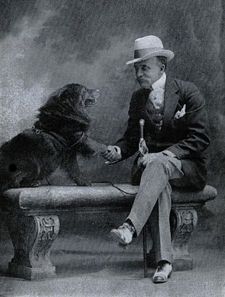 The next time you call someone "dude," you'll remember this.
The next time you call someone "dude," you'll remember this.
Apparently one of the earliest uses of the word, back in 1883, did not describe a bro. The word was used as a put down for a man who paid too much attention to clothing and fashion. Yes, the opposite of the Dude.
It turns out that the "King of the Dudes" back then was a guy named Evander Berry Wall, a multi-millionaire who reportedly drank champagne instead of water, wore a walrus mustache, had 5,000 neckties -- and like many wealthy East Coasters of the day, spent a fair amount of time in Saratoga.
What is the oldest business in Albany?
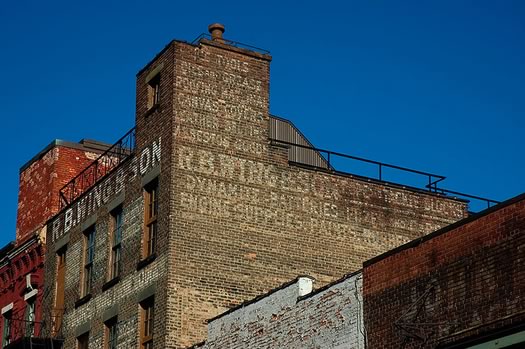
R.B. Wing and Son once had a claim to the title.
Update: Carl's found one that's even older.
Over at Hoxsie I recently unearthed a 1905 ad for Danker Florist, which is still going strong today. And that led to the question: What might be the oldest business still running in Albany?
There are a few contenders.
Yes, Virginia of Valatie, there is a Santa Claus
 In 1897, New York Sun editor Francis Pharcellus Church wrote a beautiful, now-famous editorial in answer to a letter from an 8-year-old girl named Virginia O'Hanlon.
In 1897, New York Sun editor Francis Pharcellus Church wrote a beautiful, now-famous editorial in answer to a letter from an 8-year-old girl named Virginia O'Hanlon.
As the story goes, O'Hanlon had asked her father, a Manhattan doctor, if Santa Claus was real. Thankfully, her dad passed the buck, suggesting little Virginia put the question to the editor of the Sun. Church took the ball and ran with it. His editorial takes the concept of Santa from the idea of getting to the idea of giving -- making it about the kindnesses we can all do for one another.
So if the whole thing took place in Manhattan, why are we writing about it? Well, we were looking for the letter this weekend and stumbled upon something that surprised us: it turns out the grown up Virgina lived in Valatie. And there's video to prove it.
Awesome Albany architecture

One of Martin's favorite Albany buildings .
One of the first things you notice about a city is its architecture.
The layout of a place and its buildings are a kind of looking glass in which you can see the values of past generations. Architecture helps give a city its character.
Albany has plenty of architectural character. But being so close to New York, we sometimes suffer from what I call "place esteem" issues.
New York has buildings like the Guggenheim, the Chrysler Building, the Flatiron Building, the Statue of Liberty, and Grand Central Station (the interior of which which I consider one of the greatest places in the world). Sure, Albany may not match up in terms of scale or recognition -- but we've got some pretty spectacular stuff. Our city hall was designed by world-renowned architect H.H. Richardson. The plans for the University Club were drawn by Albert Fuller. Perhaps our city's most prolific and celebrated architect, Marcus T. Reynolds, designed so many distinctive and recognizable downtown buildings that his pen may have shaped Albany more than any developer until the South Mall was built.
I'm by no means an art historian, or an architecture buff. I can hardly tell the style of a building, but I know what I like. So after the jump, seven reasons why I think Albany can be proud of its architecture. Granted not all of these buildings are architectural wonders, but to me, well, I can't help but swoon over them.
Bye, bye, Miss American Pie...
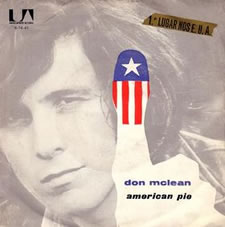 The Post-Star's Tom Dimopoulos had a fun article over the weekend about Saratoga-area legends, including the famous one about how Don McLean supposedly wrote "American Pie" at the Tin 'n' Lint on Caroline Street in Saratoga Springs, and then first performed it at Caffe Lena:
The Post-Star's Tom Dimopoulos had a fun article over the weekend about Saratoga-area legends, including the famous one about how Don McLean supposedly wrote "American Pie" at the Tin 'n' Lint on Caroline Street in Saratoga Springs, and then first performed it at Caffe Lena:
In most re-tellings, McLean was in town for a performance at Caffe Lena and had wandered into the Tin & Lint, where he spent the night alternately drinking and scribbling phrases like "American Pie" and "drove my Chevy to a levy" on a series of bar napkins, which were forgotten about and abandoned during the course of the evening, but rescued by one of the workers at the Tin & Lint that night.
So, is it true? Dimopoulos actually talked with Don McLean about the story -- and the musician had a definitive answer about whether it's correct.
(Thanks, spiritoflife!)
image via Wikipedia
John Crispin's Willard suitcase project
This is remarkable: photographer John Crispin is documenting suitcases -- and their contents -- from a long-closed state mental facility that have been preserved at the State Museum. He explains on his Kickstarter page:
In 1995, the New York State Museum was moving items out of the Willard Psychiatric Center in Willard, NY which was being closed by the State Office of Mental Health. It would eventually become a state-run drug rehabilitation center. Craig Williams and his staff became aware of an attic full of suitcases in the pathology lab building. The cases were put into storage when their owners were admitted to Willard sometime between 1910 and the 1960s. And since the facility was set up to help people with chronic mental illness, these folks never left. An exhibit of a small selection of the cases was produced by the Museum and was on display in Albany in 2003. It was very moving to read the stories of these people, and to see objects from their lives before they became residents of Willard.
I have been given the incredible opportunity to photograph these cases and their contents. To me, they open a small window into the lives of some of the people who lived at the facility.
He explains more in the video embedded above. His Kickstarter project has already reached its funding goal -- and then some.
Crispin has been posting some of the images from this project on a blog. The collections of items are beautiful in a way.
Crispin says on Kickstarter the State Museum has more than 400 suitcases in its collection. A handful of them were on display at the museum in 2004, and later became a traveling exhibit (exhibit website). There was also a book that came out of the exhibit, The Lives They Left Behind: Suitcases from a State Hospital Attic . [Village Voice] [USA Today]
(Thanks, Jess!)
The Rotterdam Square Mall cemetery

Rotterdam Square Mall -- where you can pay your respects on the way to Macy's.
Sure, some shopping malls can be compared to graveyards (insert Latham Circle Mall joke here), but one local mall actually contains a graveyard. Brings new meaning to "shop 'til you drop."
Not only is Rotterdam Square Mall the home of Macy's and T.J.Maxx, it's also the final resting place for several members of the Vedder family, Dutch pioneers who had inhabited Schenectady County since the late 1600s.
So how does a mall get built around a graveyard? The story behind the cemetery in the Rotterdam Square mall structure is a gripping tale of drinking water, business interests, human remains, and a 10-year struggle with ticked-off citizens.
William Kennedy's Prohibition Story

A scene from William Kennedy's Prohibition Story -- location: Ryan's Wake
Next week PBS premieres the new Ken Burns documentary, Prohibition.
There's quite a bit of prohibition era history wrapped up here in the Capital Region, and a whole bunch of talented local actors and filmmakers are working on a local companion piece that will air alongside the Burns documentary on PBS stations around New York State.
Here's a preview:
Watch the full episode. See more WMHT Specials.
More on the project, plus some great location photos, after the jump.
The Half Moon in Albany
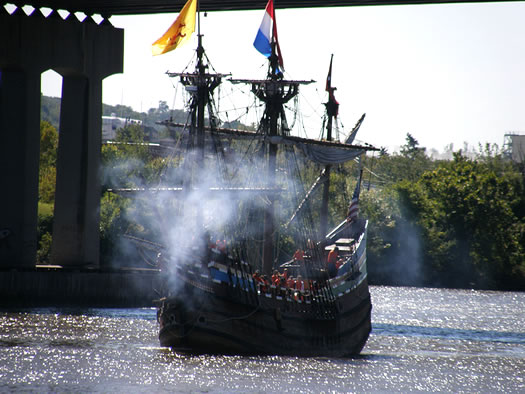
Our educational experiences clearly did not include enough canon fire.
Today's anachronistic maritime moment: the Half Moon arriving in Albany today.
New York Now's Matt Ryan was nice enough to share these photos of the Half Moon, a full-scale replica of Henry Hudson's ship of the same name, landing in Albany. The ship/museum is crewed in part by students -- both from the Capital District and the Netherlands. The trip today was part of a re-creation of Hudson's trip up the River That Would Eventually Be Named The Hudson in 1609.
photo: Matt Ryan
Wandering through Yaddo

On Sunday, for only the 5th time in its 111 year history, the mansion and private grounds at Yaddo were open to the public. About 1,400 people wandered the rooms where people such as Langston Hughes, Leonard Bernstein, Truman Capote, Eudora Welty, John Cheever and thousands of other artists gathered, ate, slept, held court and of course, created.
The house is gorgeous and filled with impressive antiques, but what we loved was being able to wander through a place where so many amazing and creative people have lived and worked. If there was ever a place we wished that walls could talk, this was it. We walked through the rooms imagining moments of inspiration, unguarded conversations and wondering what kinds of things might have happened in rooms full of so many creative people.
If you weren't one of the 1,400 who took the tour, here's the quick version...
People like shopping... whenever they want
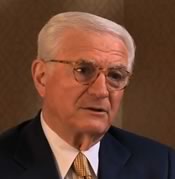 While perusing Progressive Grocer recently*, we came across this interview with Neil Golub, the CEO of the company that owns Price Chopper.
While perusing Progressive Grocer recently*, we came across this interview with Neil Golub, the CEO of the company that owns Price Chopper.
A few bits that were interesting:
+ Ben and Bill Golub, who had been in the wholesale food business in Schenectady, set up their first retail store after checking out a market on Long Island in 1931.
+ The market they set up -- "The Public Service Market" -- opened in Green Island in 1932. (The first Central Market, which would become the name for their chain, opened in Schenectady in 1935.)
+ The company changed the markets' name to Price Chopper in 1973. It also made the switch to being open 24/7. Golub says sales went up 30 percent after making the switch to being always open.
The interviewed is embedded above. And here's more on Price Chopper's history from its website.
(Video of the interview is embedded after the jump. Caution: it auto-plays.)
* What, you're not reading Progressive Grocer?
The Pondshiners
 Recently over at The Morning News, Albany resident Tobias Seamon writes about the "lost Pondshiners" -- a reclusive clan of people who once lived in Columbia County:
Recently over at The Morning News, Albany resident Tobias Seamon writes about the "lost Pondshiners" -- a reclusive clan of people who once lived in Columbia County:
New York's Hudson Valley abounds in spooks, from the wailing Maid of Kaaterskill Falls, to the dreaded Horseman of Leeds, to ongoing rumors of a poltergeist in the Education Building in Albany. These, along with more familiar specters like Rip Van Winkle and the Headless Horseman, prompted historian Maud Wilder Goodwin to write in 1919 that the Hudson River was "endowed [with] more of the supernatural...than haunts any other waterway in America." ...
But when it comes to aboriginal mysteries, the Hudson Valley has almost as many flesh-and-blood frights as it does phantoms. Strange backwoods clans have been found in hollows throughout the region, from the ornery so-called Jackson Whites in the Ramapo Mountains, to the Eagle Nesters--supposedly descended from Indians and escaped slaves--perched above Kingston, to the exceptionally blond-haired Van Guilders around Glens Falls. But maybe the most peculiar of these communities was the wild Pondshiners of the Taconic Hills in southern Columbia County.
The backstory is wild (in a few different ways). And highlights what a radically different place this area -- and the nation -- not even a century ago. (Here's the chapter about "The Frightened People" referenced from Grey Riders.)
Tobias Seamon will be at St. Rose October 27 as part of the Frequency North series. His latest book is The Emperor's Toy Chest, which "explores history, mythology, fantasy, and the magical borderlands between."
photo: Leif Zurmuhlen
The Burden Letter Project

Art meets history in The Burden Letter Project
In the hustle of day-to-day living, the historic buildings you pass along the way can become just part of the landscape, and the people who inhabited them, just names on street signs, monuments and parks.
Sometimes it takes an outsider to point out remarkable things about the history that surrounds us every day.
When video artist Lea Donnan came to Troy a few years ago for a residency with CAC Woodside she didn't plan to steep herself in the industrial history of the Collar City. But a few questions about the CAC building -- formerly a church commissioned by industrialist Henry Burden to memorialize his wife, Helen -- led to more questions. And those led to even more questions.
And all of those questions led to a wealth of long forgotten stories -- and a packet of steamy 19th century love letters.
Donnan has turned all of that into The Burden Letter Project, a video installation that examines the history of South Troy through love letters from a giant of industry to his wife.
Yaddo opens for tours

The main mansion at Yaddo
The Saratoga artists retreat Yaddo has only opened to the public five times in the mansion's 100-plus year history. Founded by Spencer and Katrina Trask, the retreat has been a temporary home to 6,000 artists -- John Cheever, Sylvia Plath, Aaron Copland, Langston Hughes, Alice Walker and Susan Orlean, just to name a few.
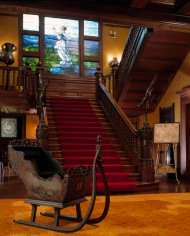 More than 200 artists a year come to live and create at the mansion and in the cottages throughout the 400-acre grounds -- which is why they keep it so private.
More than 200 artists a year come to live and create at the mansion and in the cottages throughout the 400-acre grounds -- which is why they keep it so private.
But on September 18 Yaddo will be open for three public tours at 8:30 am, 11 am and 4 pm. Tours are two hours long and take you through the first and second floor of the mansion, the first floor of West House -- the residence where Katrina Trask lived after her husband died -- the Pigeon Barn Studios, and the gravesite of the first owner of the property, Jacob Barhyte. You'll be able to see, the collection of Tiffany stained glass windows in the main house and one in West House. There's an indoor fountain in the main house and a grand stairway that John Cheever is rumored to have slid down in an antique sleigh -- a gift to Katrina Trask from the Queen of The Netherlands.
Leslie Leduc, Yaddo's public affairs co-ordinator says you'll also be able to see a lot of the original furniture. "Most of the furniture in the main house and West House dates back to the period of the Trasks and it's used everyday. You might be walking by the chair that John Cheever sat in, or Leonard Bernstein."
The two-hour tours will cost $40 per person. Want more? Fifty people will be able to purchase tickets for the $200 deluxe tour on September 17, from 4-7 pm which includes a cocktail party at West House, where you'll get a glimpse at the second floor.
You can make reservations online. If you want to see it, we suggest getting your tickets ASAP. When tours were offered for the 100th anniversary of the main house back in 1993 they gave tours from 10 am until after dark and still had to turn away about 1,000 people. We checked with Yaddo today and they've sold more than half of the 1,400 available tour spaces already.
(Thanks, Jessica R!)
staircase photo: courtesy of Yaddo
Historic floods in Troy

The 1913 flood in Troy.
Flooding from Irene was bad in parts of the Capital Region. Really bad. But in Troy and Albany, the flooding has been worse -- though not by a lot.
The Hudson River reached crested at 27.05 feet at Troy this past Monday afternoon, which ranks as the fourth highest flood on record in the Collar City.
Here's the story behind the worst.
Albany, academic fashion trendsetter
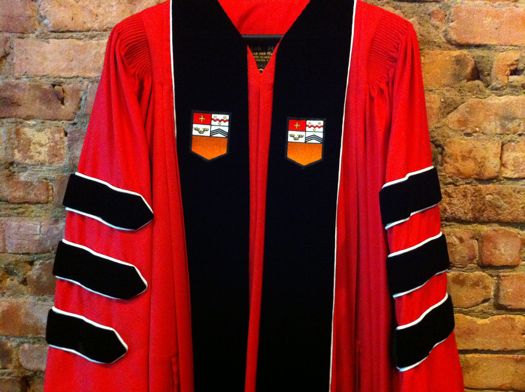
Bright.
Albany didn't really have a full-fledged university until the 1960s -- it missed its chance when the Albany Rural Cemetery board miffed Leland Stanford.
But by that time, the city had already left a lasting mark on American academia: the standardized cap and gown.
The Wizard of Schenectady

Steinmetz -- with Einstein, Tesla, Langmuir and others -- in New Jersey in 1921.
The Smithsonian's "Past Imperfect" blog has a post about Charles Steinmetz -- the "Wizard of Schenectady" -- this week is that is completely jammed full of awesome. A clip:
He stood just four feet tall, his body contorted by a hump in his back and a crooked gait, and his stunted torso gave the illusion that his head, hands and feet were too big. But he was a giant among scientific thinkers, counting Albert Einstein, Nikola Tesla and Thomas Edison as friends, and his contributions to mathematics and electrical engineering made him one of the most beloved and instantly recognizable men of his time.
In the early 20th century, Charles Steinmetz could be seen peddling his bicycle down the streets of Schenectady, New York, in a suit and top hat, or floating down the Mohawk River in a canoe, kneeling over a makeshift desktop, where he passed hours scribbling notes and equations on papers that sometimes blew into the water. With a Blackstone panatela cigar seemingly glued to his lips, Steinmetz cringed as children scurried away upon seeing him--frightened, he believed, by the "queer, gnome-like figure" with the German accent. Such occurrences were all the more painful for Steinmetz, as it was a family and children that he longed for most in his life. But knowing that his deformity was congenital (both his father and grandfather were afflicted with kyphosis, an abnormal curvature of the upper spine), Steinmetz chose not to marry, fearful of passing on his deformity.
The post was written by Gilbert King and it's a good, quick read of Steinmetz's story. It includes a bunch of great little stories, including one of our favorites, about Steinmetz and Henry Ford (as the story goes, Steinmentz sent Ford what may be the greatest invoice in the history of consulting (or perhaps it was GE, the story has a lot of variations)).
The term genius gets thrown around a lot -- but Steinmetz really was one. And a total character.
Tangent: There needs to be a comic/graphic novel/TV series/something in which Steinmetz's genius scientist/engineer identity is a cover for being some sort of superhero.
(Thanks, Brandon!)
photo from the Franklin Township Public Library collection via Wikipedia
Caffè Lena: folk history into recorded history
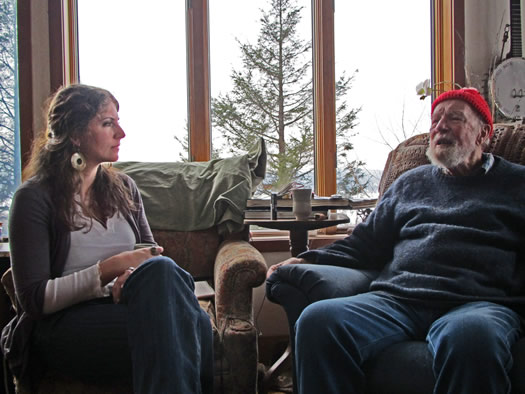
Jocelyn Arem meeting with Pete Seeger earlier this year. The Caffè Lena History Project includes photos of Seeger's first performance at the venue, in 1962.
"She was the first and last person I ever knew who would pay me more money than we agreed upon. One show I did in 1967, she gave me 300 bucks. My jaw dropped. She said, 'We did very well, so I wanted to share it with you."
-- Don McLean on Lena Spencer, founder of Caffè Lena
Lena Spencer loved musicians as much as she loved music.
Her cafe on Phila Street in Saratoga has been the stomping grounds for generations of folk musicians. Some, like McLean and Bob Dylan, became big stars and others spent a lifetime creating songs in relative obscurity. But they all found a home at Caffè Lena. Eventually Lena's commitment to musicians made the venue the oldest continuously running coffee house in the country.
Spencer died in 1989, on her way to a Spaudling Grey show. Since then a not-for-profit has kept the cafe going, continuing her legacy. Caffè Lena still puts on hundreds of events each year, and continues to work to capture the experimental nature of contemporary folk music.
These days the board at Caffè Lena is looking to its past as well as its future -- documenting the history of the historic cafe to preserve the moments that made it an institution.
The Caffè Lena History Project has gathered hundreds of hours of audio, video and oral history recordings. And they're still scouring the music community looking for more.
Musician Jocelyn Arem is the founder of the Caffè Lena History Project. We talked with her about a what the project has unearthed -- and where Saratoga's little caffè -- with two fs -- fits into music history.
From Schenectady to Antarctica
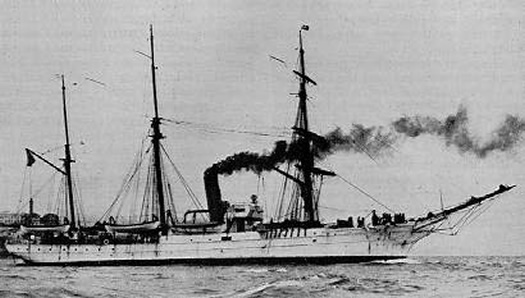
The USS Bear, the ship on which Anthony Wayne sailed to Antarctica.
This is great: a 95-year-old Schenectady man now has a landmark in Antarctica named after him. "Wayne Head" -- a rock headland on Horseshoe Island just off the Antarctic Peninsula -- has been named for Anthony Wayne. [Daily Gazette] [USGS]
Wayne was honored for his service during the United States Antarctic Service Expedition in 1939, Richard Byrd's third Antarctic expedition. Aboard two ships 125 men sailed to Antarctica to take surveys and build bases. Wayne served on the USS Bear, a steamship that had been built in 1874 to sail icy waters. The Bear is, according to a Coast Guard site, "probably the most famous ship in the history of the Coast Guard."
From a 2010 story by the Gazette's Sara Foss about Wayne and his trip to the Antarctic:
Wayne said he decided to go to Antarctica because it sounded like an exciting adventure.
"I thought, 'Who the hell goes there?' " he said. "It was something new. I was never sorry I went, but I was glad I came back. ... I thought I'd never survive. It was all frozen ice. There was snow 20 feet high and icebergs all over." The scariest part of the trip occurred when the ship got stuck on the ice and the men had to wait several days for the ice to separate and a channel to open. ...
Wayne said Byrd selected him for his crew because he was in excellent physical shape and, as a native of upstate New York, accustomed to cold weather.
Wayne showed Foss film he shot during the trip -- and it's awesome. Seriously, go watch it on the Gazette site (it looks like it's not behind the paywall). It shows Byrd, the ship, icebergs, penguins, seals, whales, sled dog teams, and this huge vehicle that looks like something you might drive on the moon.
Anthony Wayne is now the last surviving member of the expedition. [Daily Gazette]
A map showing Wayne Head is embedded after the jump. It's a short 7646 miles from Schenectady.
Washington Park in Troy is historic. There's a sign now and everything.
 Troy's fenced-off Washington Park is one of the state's only two privately owned and maintained residential parks (Gramercy Park in Manhattan is the other). And it was founded in 1840. So, it's all very historic. And now there's one of those markers pointing that out.
Troy's fenced-off Washington Park is one of the state's only two privately owned and maintained residential parks (Gramercy Park in Manhattan is the other). And it was founded in 1840. So, it's all very historic. And now there's one of those markers pointing that out.
The Washington Park Association will be unveiling the sign Wednesday afternoon at 1:30 pm -- and, here's the good part, it will also be opening up the park to the public during the reception that afternoon. So if you're nearby, you can check it out (you know, from inside the cast iron fence).
Bonus bit: Most of those official yellow and blue New York State historical markers all over the place are pretty old -- in fact, the program's more or less ended during the middle of the last century ("concerns for the risk of trying to read small roadside markers in the emerging age of high speed automobile travel caused the State to focus only on large signs"). New signs are actually commissioned and financed by private entities. There's a foundry in the Catskills that makes them.
Earlier on AOA: A lamp post near Washington Park was recently graced with a somewhat different marker -- a yarnbomb.
photo: Neil Grabowsky
A stamp for Owney, Albany's famous postal dog
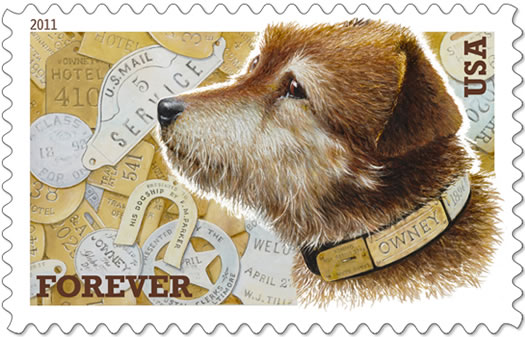
The New York Times described Owney as "[not] a handsome dog, but he has excellent qualities, and is kindly and intelligent." We should all be so lucky to be described that way.
One of our all-time favorite Albany stories is that of Owney the Postal Dog.
The short story: in the 1890s, Albany was known all around the world because of Owney and his travels on the rail cars that carried mail. He even ended up going around the world, a feat that landed him on the front page of the New York Times. He's now on display at the Smithsonian's National Postal Museum (yep, the actual Owney -- they had him stuffed).
It's a fun story. So we're happy to see that the US Postal Service will be issuing an Owney stamp (above). The first class "forever" stamps will be available July 27. In addition to a ceremony and events at the National Postal Museum, there will also be an unveiling at the Albany Visitors Center. [TU]
Earlier on AOA:
+ Owney, postal dog and Albany ambassador
+ Standing before the post office boxes in Schenectady
image: Bill Bond/USPS
From dust to dust
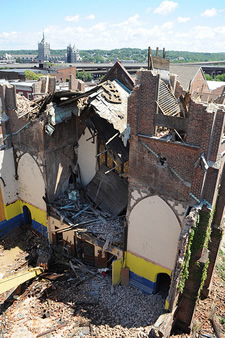 Follow up on Chuck's photo of the historic, and now-crumbling, Trinity Church in Albany: Chuck's gathering a photoset of the building's gradual demolition.
Follow up on Chuck's photo of the historic, and now-crumbling, Trinity Church in Albany: Chuck's gathering a photoset of the building's gradual demolition.
It's interesting -- and good -- to see the effort involved in saving elements such as the stained glass windows (speculated to be Tiffany windows). But in some ways the almost brick-by-brick demolition of the historic building seems sadder than one big boom and a cloud of dust.
photo: Chuck Miller
What's left of Trinity Church
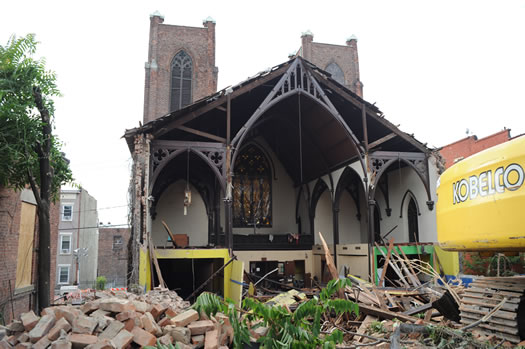
You can see more detail in the large-format version of the photo.
This photo of the crumbling Trinity Church in Albany is from Chuck, who stopped by the site this morning. The building partially collapsed Monday night, and yesterday the Albany Fire Department decided the building had to be completely demolished. [Fox23] [TU]
Trinity Church was built in 1848. It was designed by James Renwick Jr., a prominent 19th century architect who would later design St. Patrick's Cathedral in New York City (and many other buildings). In 2005, the Historic Albany Foundation added the church on its endangered list. Trinity was one of the oldest remaining Gothic-style buildings in Albany. [Wikipedia] [Wikipedia] [HAF] [Architects in Albany] [Albany History]
Paula has pulled together a bunch of links about Trinity.
Update: The church's stained glass windows have been saved. [TU]
(Thanks, Chuck)
Later on AOA: Chuck is gathering a photoset of the building's gradual demolition.
Earlier on AOA:
+ A short tour of Albany's historic stained glass
+ Saints vs. The State for Washington Avenue
photo: Chuck Miller
Very Important (scientific) People
 GE has posted images from the guest book for the company's original research center in Schenectady (GE Global Research is now in Niskayuna):
GE has posted images from the guest book for the company's original research center in Schenectady (GE Global Research is now in Niskayuna):
While its beginnings were humble, it didn't take long for scientists and inventors from around the world to flock to the Research Lab to see what GE was working on. And each famous mind that visited would stop at Willis Whitney's desk to sign the VIP guest book. The book sat at Whitney's desk from 1914 to 1935, and the signatures are a veritable Who's Who of inventors, physicists, chemists, physiologists, and businessmen -- including 9 Nobel Laureates.
The collection of people who stopped by the place during its first years is remarkable. Among the names signed in the book: Bohr, Marconi, Pavlov.
photo: GE Reports
The longstanding New York tradition of "investments in legislators"
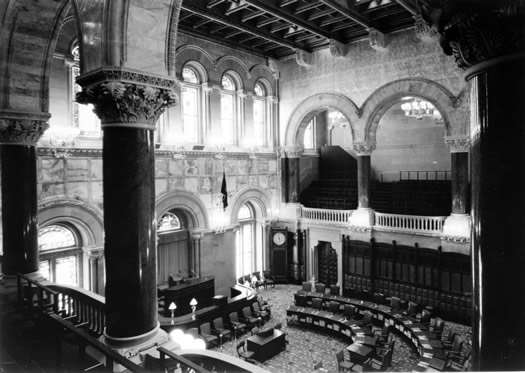
Among the many paths used to influence in this chamber over history: "the society of young ladies."
Andrew Cuomo and state legislative leaders are expected to officially announce a collection ethics reforms today. In a late Friday press conference about the deal, Cuomo called the proposals "tough and aggressive."
Advocates of legislative ethics reform can take pride in being part of a long tradition. Nothing is new under the sun -- and even less is new in the New York State legislature.
The Karner Blue

Nabokov once described the a group of Karner Blues appearing like "blue snowflakes".
The first flight of Karner Blue butterflies should be appearing in their habitats around the Capital Region right about now.
The beautiful endangered butterflies hang around sandy pine barren habitats. Two such spots in the Capital Region: the Albany Pine Bush Preserve and the Wilton Wildlife Preserve. Drew was at the Wilton preserve this past week and said the butterflies were easy to spot.
Karner Blues congregate in these habitats because they're also the habitat for blue lupine. The butterflies lay their eggs on the plants.
There's some great history Capital Region history involving the Karner Blue. The common name of the butterflies is linked to a spot here -- and Vladimir Nabokov classified the butterflies. Yep, the author.
The University Club
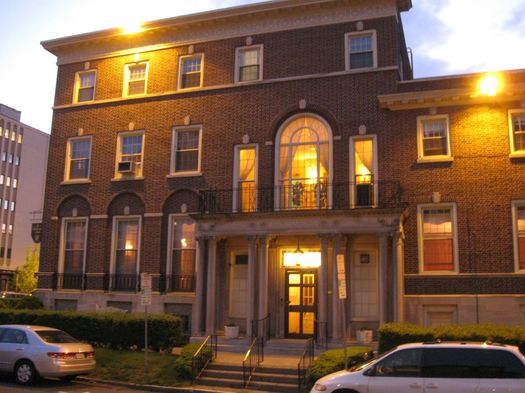
The University Club -- Albany's newest addition to the National Register of Historic Places
In Albany 110 years ago a group of young college graduates were looking for a place to hang out.
They wanted a space where they could get together for lunches or dinners, drinks and conversation. So they founded the The University Club. And well over a century later, the club is still going.
A few weeks ago, The University Club was named to the National Register of Historic Places. Other Albany buildings on that list include City Hall, Cherry Hill, the Ten Broeck Mansion, the Harmanus Bleecker Library and Albany Institute of History and Art.
Newly-elected club vice president Colleen Ryan gave us the nickle tour of the club's historic building this week.
A future in plastics and billiard balls

One word: Plastics.
"There's a great future in plastics. Think about it. Will you think about it?"
That's what Mr. McGuire said to Benjamin Braddock in The Graduate. That classic movie line was uttered almost exactly a century after John Wesley Hyatt first envisioned a future in plastics -- right here in Albany.
It started with an accident -- and a billiard ball.
Local veterans to speak on concentration camp liberation
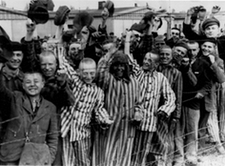 Two local World War II veterans will speak about their involvement in the liberation of Dachau, the notorious Nazi concentration camp, during World War II this Friday at 2 pm at the New York State Military Museum in Saratoga Springs.
Two local World War II veterans will speak about their involvement in the liberation of Dachau, the notorious Nazi concentration camp, during World War II this Friday at 2 pm at the New York State Military Museum in Saratoga Springs.
George Williams of Niskayuna and Richard Marowitz of Albany -- both now in their 80s -- were part of the Army's 42 Infantry "Rainbow" Division. (It's now a National Guard unit based in Troy.) On April 29, 1945, the unit liberated an estimated 30,000 people.
Marowitz was there the day of Dachau's liberation. Williams toured the concentration camp with the division after the war ended.
Even after the camp was liberated, many of the former inmates could not leave for at least a few weeks -- they were sick, injured, and their homes were destroyed. The 42nd assisted with medical needs at the camp.
The event this Friday coincides with the traveling exhibit "Names Instead of Numbers", which started as an exhibit in Europe and now travels around the US. The exhibit's displays and banners are based on a book of biographies and narratives of the lives of more than 130 prisoners who were at the camp. The exhibit is on display at the military museum this month until the beginning of May.
May 1 is Yom HaShoah -- Holocaust Remembrance Day.
Photo of survivors of Dachau celebrating their liberation courtesy Army's 42nd Infantry.
Joseph Henry, Albany nerd for the ages
 Nick Fahrenkopf has written an interesting post about Joseph Henry, one of Albany's all-time great nerds:
Nick Fahrenkopf has written an interesting post about Joseph Henry, one of Albany's all-time great nerds:
Henry has been immortalized in more than the UAlbany physics building, his early school, a monument near the original Albany Academy, and buildings in Princeton: the unit of induction is the henry and the medal for service to the Smithsonian is the Henry Medal. Even a mountain range bears his name. Back here in Albany, the church where he was baptized even has a stained glass window of Henry lecturing 12 disciples with the words "Master Scientist and Devout Christian". I find it fascinating that now, over a hundred years later this area is home to the next wave of science and technology that will propel our nation forward. Not the Weather Service, Lighthouses, or telegraphs. But nanoelectronics, solar panels, biomedical engineering. It just seems... fitting.
Among many accomplishments, Henry was instrumental in discoveries on electromagnetism, the beginning of the Smithsonian, and the creation of the National Weather Service.
Earlier on AOA:
+ An entire library of Albanians
+ Right back @ you, governor
image by Henry Ulke via NOAA and Wikipedia
The Moses fountain in Washington Park
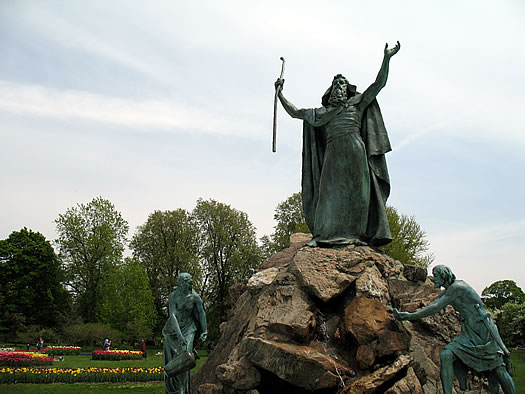
And thou shalt smite the rock, and there shall come water out of it, that the people may drink.
Anyone in Albany knows the Moses fountain in Washington Park. But few know how this biblical tableau came to be one of the most striking features of the park, or why it is called the King Memorial Fountain.
So, why is this splendid fountain there -- and whom does it memorialize?
A tank of gas, a cup of coffee and a history lesson
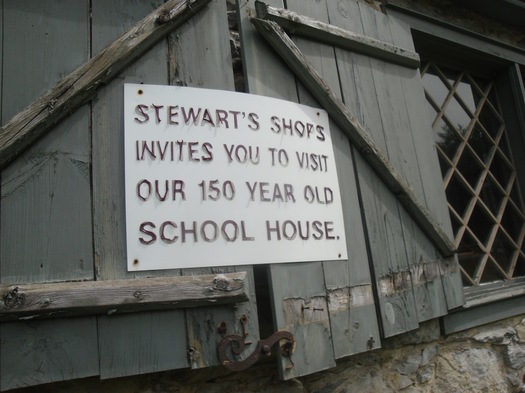
Who could resist an invitation like that?
Incongruity pleases me. So when I saw an old stone building cheek-by-jowl with a Stewart's shop in Hoosick, where Route 7 meets Route 22, I had to pull in and have a look.
Even before you notice the date of 1842 carved above the doorway, it's clear the place is very old. It's built of weathered stone, with a heavy lintel and a sloping roof. Along the Route 22 side of the building is a peeling sign: "Stewarts Shops invites you to visit our 150 year old school house." Curiouser and curiouser.
So I walk into the Stewart's. "What's up with that schoolhouse? Do you own it?"
"It's on our property," says the cashier. "I don't know much about it, but I can let you in if you want."
She gets the key, goes out to unlock the place for me, and leaves again.
And from one side of the parking lot to the other, I've stepped out of Stewart's and into the past.
What Abner Doubleday isn't famous for -- but actually did do
 Tuesday was the 150th anniversary of the start of the Civil War, which prompted a bunch of stories about Abner Doubleday. Yep, the guy who supposedly invented baseball (but didn't).
Tuesday was the 150th anniversary of the start of the Civil War, which prompted a bunch of stories about Abner Doubleday. Yep, the guy who supposedly invented baseball (but didn't).
The Ballston Spa native was second-in-command at Fort Sumter in April, 1861 -- and fired the first Union shot in the war (after a night of bombardment by the Confederacy) [NYS Military Museum]. Wrote Doubleday years later in a memoir:
In aiming the first gun fired against the rebellion I had no feeling of self-reproach, for I fully believed that the contest was inevitable, and was not of our seeking. The United States was called upon not only to defend its sovereignty, but its right to exist as a nation. The only alternative was to submit to a powerful oligarchy who were determined to make freedom forever subordinate to slavery. To me it was simply a contest, politically speaking, as to whether virtue or vice should rule.
The action at Fort Sumter followed an invitation from the Confederate forces, arrayed to pummel the fort with shells, to surrender -- the Union commander very politely declined. The Union troops eventually did surrender. [NYT]
Doubleday would go on to become a major general and fight at the Battle of Gettysburg. He took over command of his corps after its general had been killed, and his outnumbered men held off Confederate forces long enough for backup to arrive. [Saratogian]
After the war, Doubleday was sent to San Francisco to head up recruitment efforts there and was involved with the founding of the city's first cable car company. He was later stationed in Texas before retiring in New Jersey. [Military History About]
The house where Doubleday was born in Ballston Spa is still there. [Saratogian]
About not inventing baseball: John Thorn, baseball's official historian, writes in a new book that the myth of Doubleday being the inventor of baseball was the work of "unprincipled advocates with ulterior motives" -- in Doubleday's case, the sporting goods magnate Albert Spalding. [Baseball America] [TU] [NPR]
For sale: the "oldest" house in Schenectady
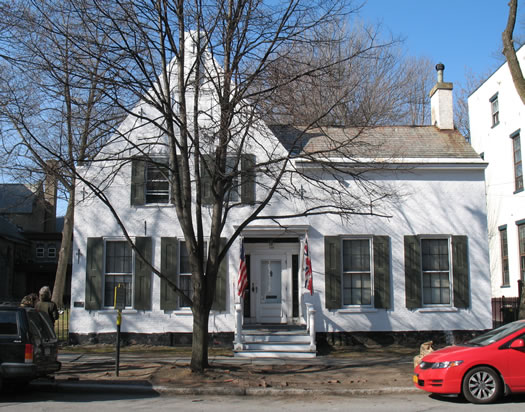
When you're 284-years-old, what's a decade-or-two age difference.
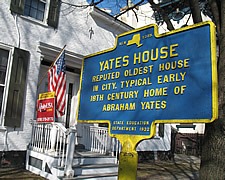 The "reputed oldest house" in the city of Schenectady -- the 284-year-old (or so) Yates House in the Stockade -- is for sale. The list price: $389,000.
The "reputed oldest house" in the city of Schenectady -- the 284-year-old (or so) Yates House in the Stockade -- is for sale. The list price: $389,000.
Apparently there's some question as to whether the Yates House is actually the oldest house in Schenectady. The Brouwer house on North Church Street might be a few decades older. Researchers from the Cornell Tree-Ring Lab concluded the Yates House was built sometime in 1727 or 1728, based on core samples take from beams in the basement. (In the same study they report the oldest part of the Brouwer House dates to 1730.)
The Yates House has been added on to many times. It's now 3,462 square feet with four bedrooms and a "large eat in kitchen," according to its real estate listing.
Update April 13: The Times Union talked with the owner of the house.
Earlier on AOA:
+ Getting reacquainted with Schenectady's Stockade
+ The oldest building in Albany?
+ The oldest house in Saratoga Springs
Getting reacquainted with Schenectady's Stockade

Meet Lawrence.
I'm passionate about my Albany neighborhood. It takes a lot for me to imagine living somewhere else.
But you know what? The Stockade's enough to make me wonder.
When a 200-year-old Schenectady Stockade home recently lost part of its front wall, apparently a victim of water damage from melting snow and ice, it made me consider that I hadn't been over there in a while. A two-hour walk in the neighborhood's springtime sunlight made me remember: The Stockade is one of the Capital Region's superlative neighborhoods. It's a jewel. And it should be a source of pride for our whole region.
The Mail Chute

Slower than pressing send -- but more fun.
When they put up buildings these days, the infrastructure for carrying data is built right in. Today's pipelines are copper wire and fiber optic cable, but in the past, the conduits for moving information were... well, actual conduits.
When 90 State Street was constructed it was equipped with a Cutler Mail Chute system. In 1929, this was the height of modernity. Instead of carrying your mail downstairs, you could just drop it in the slot and it went racing to the first floor.
Imagine the time it saved!
Shopping the Architectural Parts Warehouse

Perhaps it's just what your living room needs.
It's spring. It's time to renew. We open the windows, blow four months of dust off the bookshelf, and say aloud what we've all been feeling: "I'm tired of this place."
So what happens next?
A visit to the Architectural Parts Warehouse in Albany can provide inspiration for reinventing your house and garden -- and maybe in ways you don't expect.
Albany's role in Houdini's last act
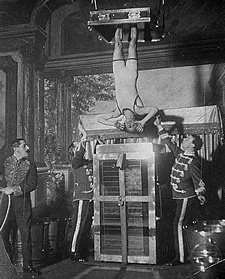 Silly us: We'd forgotten today was Harry Houdini's birthday until we saw the Google doodle.
Silly us: We'd forgotten today was Harry Houdini's birthday until we saw the Google doodle.
But since it is -- The Great Houdini would be 137 today -- it seems a fitting time to mention the role an Albany performance played in the chain of events that led to his death.
An entire library of Albanians

Cuyler Reynolds, Joseph Henry, Henry James
Last week, AOA wrote about Bill Pettit, whose library consists of Moby Dick. Lots of Moby Dick.
A century ago, a prominent Albany institution suggested a slightly broader collection -- an entire library of books written only by Albanians.
More promises from advertisements past
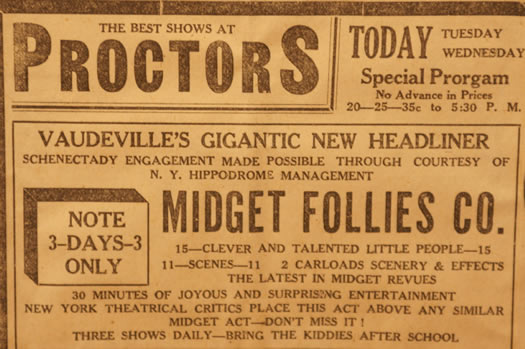
Uh... it was a different time.
Earlier this week, Katie shared some great ads from the 1920s that she had found in the attic of her Niskayuna home. Fascinating ice cubes!
They were fun to browse through, so we figured we post another group of them...
Troy's Gasholder Building: Industrial grace
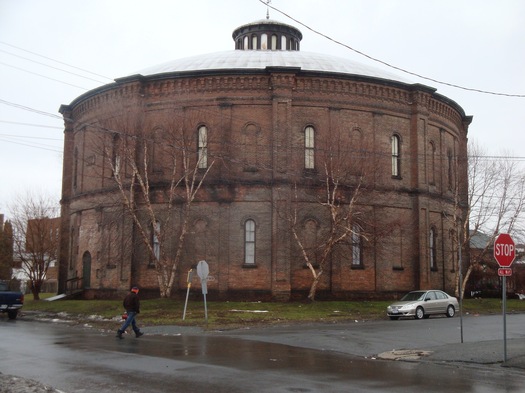
Gasholder Building, 5th Ave. at Jefferson Street, Troy.
It doesn't take much to catch my eye, I guess. Just a circle among squares.
And that's exactly what's so fantastic about the Gasholder Building, 5th Ave. and Jefferson Street in South Troy.
Built in 1873, the Gasholder is a landmark from Troy's Industrial Age. Its narrow, arched windows are boarded or blocked; a long vertical crack is filled with cement. The building is topped with a broken weathervane. It's beautiful. It's imposing. But more than that, it's a round building in a rowhouse neighborhood. The kind of thing that makes Place X different from Place Y.
And for my money, you can never have too much of that.
Our great-grandparents' college hijinks
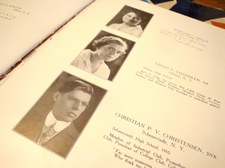 Back when UAlbany was the New York State College for Teachers, the following poem appeared in the 1918 yearbook ("The Pedagogue"), with a notation suggesting that it had fallen out of a particular student's book:
Back when UAlbany was the New York State College for Teachers, the following poem appeared in the 1918 yearbook ("The Pedagogue"), with a notation suggesting that it had fallen out of a particular student's book:
Fascinating ice cubes and other promises from advertisements past

It's ice. In the shape of a cube.
We live in an early-1920s Tudor Cottage in Niskayuna, which sounds lovelier than it feels. There are many elements of its history that we don't appreciate, like its knob-and-tube electric wiring or the dark little alcove near the stairs that leads nowhere and has become the cat's room.
However, we occasionally enjoy its charms, like when we discovered some c. 1926 newspapers up in the attic. By the time we'd discovered them, they had mostly mouldered away, but I was able to salvage several advertisements. I thought that I'd share a few of my favorites...
Industry, history intertwine at the Watervliet Arsenal Museum
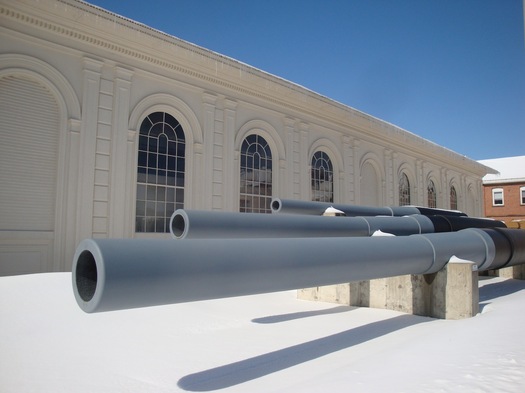
Not all the exhibits fit inside.
Talk about the Watervliet Arsenal and you'll find yourself using a lot of superlatives: first, only, oldest. Founded in 1813, it's the United States' oldest continuously active arsenal. It's still an active manufacturing and development site today -- and the Capital Region's 14th largest employer. Watervliet Arsenal has been a part of local life for nearly 200 years, employing thousands. Its museum, which is free and open to the public, gives us a glimpse of our industrial past.
The highway that was almost buried under Washington Park
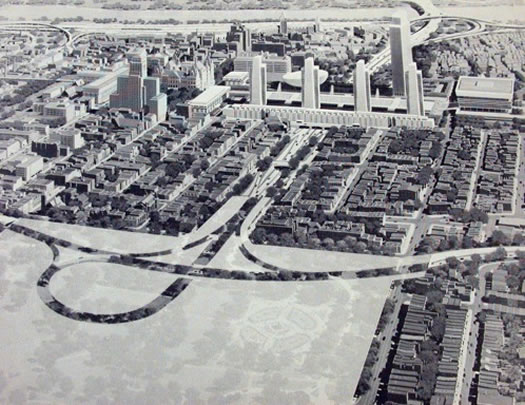
What could go wrong?
Ever wondered why the Dunn Memorial Bridge provides a ramp to thin air? Why the Livingston Avenue exit of I-90 is so overbuilt, and ends so abruptly? Why there are extra tunnels underneath the Empire State Plaza? Or why Corporate Woods has its own highway exit?
They're all vestiges of a highway system that was never built.
It's the Capitol, but even ... more so

Spotted in an 1889 brochure on the state Capitol's ongoing construction: This plan that included a central tower. The original plans called for a dome; Isaac Perry, who supervised the final phase of the construction, suggested the tower seen here after structural problems made the dome impossible.
The Capitol, which took 32 years to build, endured multiple changes of architects -- and architectural styles. As the book Albany Architecture notes, "The Great Pyramid at Giza [was] constructed faster and the nation's Capitol built at half the cost." In 1899, having already taken up more time and more money than anyone had thought possible, the Capitol was declared finished.
So no tower.
It's kind of nice, though.
Name that landmark: Livingston school

It once was called "the embodiment of the ideals of beauty and utility."
Look toward Albany's Arbor Hill from I-90, and above the trees you may see a tower, the green of old copper. It's the type of cupola that used to top important buildings, and it catches the eye because there's nothing else quite like it nearby. What is that up there, that structure, looking stately and a little lonely on the ridge of a hill?
It was once Albany's showcase school.
Philip Livingston Magnet Academy (when built, it was Philip Livingston Junior High) is a remnant of an era that thought city schools should be landmarks. Up close, it's massive: Two long wings stretch out from the central building, which is topped with the cupola. It has an air about it, as if it was built for a grand and serious purpose. And you know what? It was.
Blast from the past
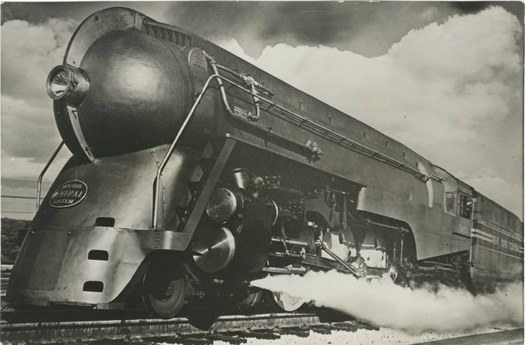
All aboard! Next stop... the future.
We came across this photo today while getting Carl's piece about the Livingston Ave Bridge together. It's a locomotive from the old New York Central railroad -- the railroad organized by Erastus Corning (the great grandfather of the longtime mayor of Albany).
We love the sleek vintage futurism of the locomotive's design. It looks like a rocket ship from an old Flash Gordon flick.
The engines were designed by Henry Dreyfuss, one of the celebrity industrial designers of the 1930s and 40s. Among Dreyfuss' many notable designs is the classic "Lucy" telephone.
This streamlined engine design (the "Hudson") went into service in 1938 after being manufactured in New York Central's huge West Albany yard (the engine under the hood was produced by Alco in Schenectady). The stylish locomotives powered the famous 20th Century Limited line.
If/when New York ever gets high-speed rail, we kind of hope the engines look this.
photo: Robert Yarnall Richie via Southern Methodist University, Central University Libraries, DeGolyer Library
The Livingston Avenue Bridge

It's spanned the Hudson a long time. How long? Well...
The Livingston Avenue Bridge, the graceful and anachronistic swing bridge that carries trains across the Hudson River at Albany and still swings open to let larger ships reach Troy, has been part of the landscape longer than anyone now alive. It is often cited as dating to the Civil War.
Like many local legends, that's partly almost true.
Six bits of trivia about the six presidents from New York State
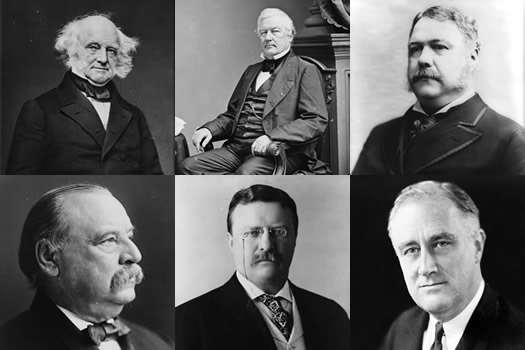
Van Buren, Fillmore, Arthur, Cleveland, TR, FDR
Six US presidents hailed from the Empire State.
Here are six things about them that you probably didn't learn in school...
Why Abraham Lincoln arrived in Albany with "huge whiskers"
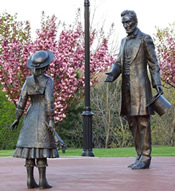 Paul Grondahl's story today marking the 150th anniversary of Abraham Lincoln's visit to Albany -- especially the part about Lincoln arriving "tired, sunburned, adorned with huge whiskers" -- made us think of a totally charming story involving the great president and New York State.
Paul Grondahl's story today marking the 150th anniversary of Abraham Lincoln's visit to Albany -- especially the part about Lincoln arriving "tired, sunburned, adorned with huge whiskers" -- made us think of a totally charming story involving the great president and New York State.
We were driving on the Thruway south of Buffalo a few months back when we needed to stop for gas, and somehow ended up in Westfield. As far as we can tell, the village is famous for two things: 1) it's the self-proclaimed "grape juice capital of the world" and 2) the following story.
In the fall of 1860, Lincoln received a letter from 11-year-old Grace Bedell of Westfield, urging him to "let your whiskers grow":
... you would look a great deal better for your face is so thin. All the ladies like whiskers and they would tease their husband's to vote for you and then you would be President.
Jump ahead to February 16, 1861. Lincoln is riding a train from Springfield, Illinois to Washington, DC -- and the trip takes him through western New York (and, a few days later, to Albany).
Our sexy forefathers
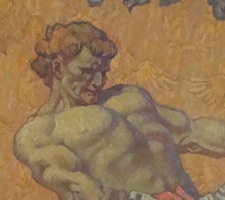 How about a little eye candy for Valentine's Day?
How about a little eye candy for Valentine's Day?
The halls of government may not be the first place you think to go to admire the male physique. (Insert Christopher Lee joke here.) But take a gander at the ceiling of the War Room in the state Capitol.
It's a tour through New York's violent past, as depicted in the impressively muscled ceiling murals:
A miniature Albany
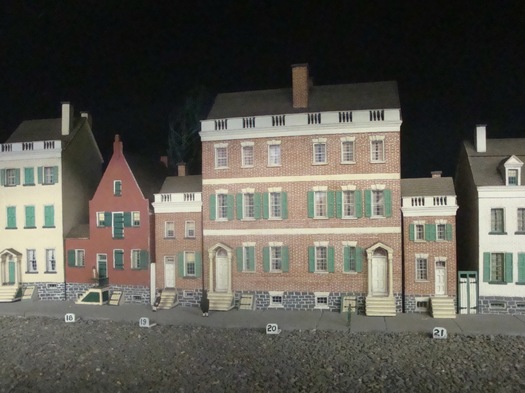
One of Paul Schrodt's miniature Albany streetscapes.
A history-minded person might wonder, "So what was North Pearl Street like in, say, 1800?"
An industrious researcher might use old documents to make a chart showing who lived where.
Paul Schrodt wondered, then researched, then built detailed miniatures of every building and labeled them with information on how the building was used in that era -- what items were sold there, who lived there, details of that person's history.
Schrodt did eight miniature models of Albany buildings and streetscapes. They took him 36 years.
Here at AOA we love things that are 1.) odd, 2.) delightful, and 3.) local. With Schrodt's models -- housed in the Albany Heritage Area Visitors Center -- we hit the trifecta.
Schenectady, GE and Ronald Reagan
The Schenectady Museum pops up tonight in the HBO documentary about Ronald Reagan -- it serves as a backdrop for an interview with author Thomas Evans, who's written about Reagan's experience with GE. The not-yet-president served as a spokesman for the company from 1954-1962, and his time with the company is credited with shaping some of his conservatism.
Reagan's work with GE brought him to Schenectady a few times. At least one of the visits to the Capital Region doesn't seem to have been too pleasant -- from a letter he wrote to Nancy Reagan from the Hotel Van Curler in Schenectady (now an SCCC building) one snowy April day in 1960:
Now you might think [the snow storm] would curtail some of our activities -- but think not so. Nothing interferes with one of these d-n "nut & bolt" fiestas.
We arrived around 4:30 pm Sunday and by 7:30 were at a Country Club (Country Club??) for dinner with various and sundry G.E. executives (half the party were stalled around the country side & never made it) But we made it and in the meantime had showered, changed clothes gone to two radio stations for interviews and appeared on one TV program. And this was a leisurely three hours compared to the schedule that began Mon. morning with a press breakfast at 8 A.M. Try this with your shoes filled with snow.
It is, with some justification, I believe that I now employ my full register of eloquence to say -- "I have had it!"
Tonite I address a banquet of "execs" (G.E.) here in Schenectady -- and incidentally I resent it because this is my 3rd speech in this d-n town. I get in N.Y. tomorrow at noon and will film "opening & closings" all afternoon. But rest assured of one thing -- only you have seen this bitter side. I have been a smiling picture of grace and warmth throughout each 18 hour day.
Everybody gets cranky when they have snow in their shoes.
Letter excerpt from I Love You, Ronnie: The Letters of Ronald Reagan to Nancy Reagan.
A beacon on the Hudson: The Saugerties Lighthouse
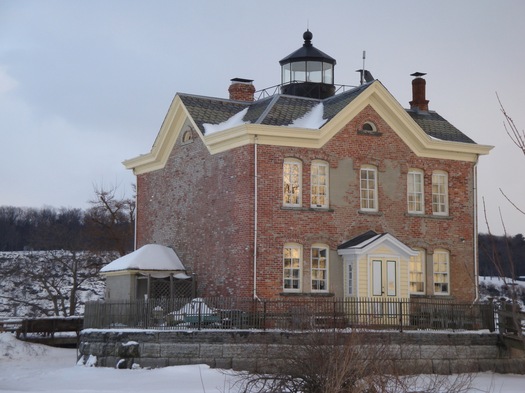
Our first view of the Saugerties Lighthouse.
Open the middle door to find a set of stairs. Ascend. Then climb the blue wooden ladder. Lift the heavy metal trapdoor and -- you're swimming in slanting winter sunlight.
Up in the tower of the Saugerties Lighthouse, my husband and I were grinning like kids. A lighthouse tower! With no tour guide or line of other visitors waiting their turn. Sheltered from the wind, we were free to watch the light play on the Hudson River's mosaic of ice for as long as we wanted. We spent an hour up there, eating pears and drinking in a 360-degree view of winter as the sun sank behind the Catskills.
The Saugerties Lighthouse is a landmark from another time. The historic -- and still active -- lighthouse is also a bed and breakfast. And the fact that you can't reach it by car makes it all the more an adventure.
Happy birthday, Executive Mansion
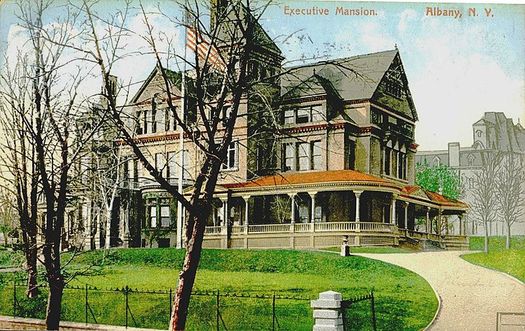
The Executive Mansion, as seen in a postcard from 1907 -- not too many years after Teddy Roosevelt referred to the place as a "gloomy pile," according to The New York Times.
Has your day been light on random historical facts? Fear not. We're here to help.
It was on this day 134 years ago that New York state's Executive Mansion officially opened.
Built for a banker in the 1850s, the 40-room house at 138 Eagle Street was being used as a rental by Gov. Samuel J. Tilden in the 1870s when the state decided to buy it. New York had not previously given its governors an official residence.
Gov. Tilden hosted a public reception at the mansion on Jan. 25, 1877, to mark its entry into public service.
The huge house has been neglected of late. Reportedly, Pataki, Spitzer and Paterson never really settled in there. The New York Times reported recently on the Cuomo family's love for the place, and Andrew Cuomo's enthusiasm for moving back in.
Want to tour the Executive Mansion? You can, for free, on Thursdays, if you make reservations at least two weeks in advance.
Image via Wikimedia Commons.
Farewell, Latham checkerboard water towers
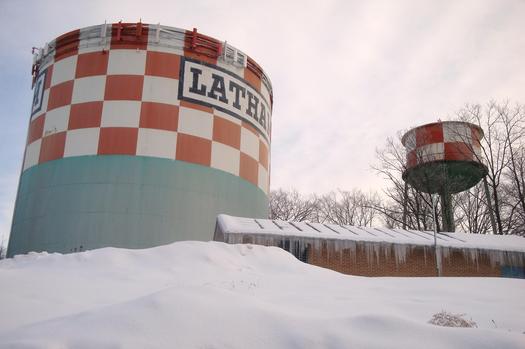
They have a checkered past. And present. But no future.
Update: Colonie says the dismantling has been postponed until there's warmer weather. [Troy Record]
____
If you're driving through Latham this week, tip your cap to the checkerboard towers.
Demolition of Latham's landmark water towers is scheduled to start today.
The FAA has said the towers have to be removed because they're on the flight path of a runway at the Albany International Airport.
Saints vs. The State for Washington Avenue

The fifth largest cathedral in the US -- if you can see around the State Ed building.
Nestled behind the State Education Building on Washington Avenue is a -- what is that? Is that a church?
Yes. And that sound you hear is William Doane rolling over in his grave.
The Cathedral of All Saints, Albany's Episcopal cathedral, is on a cramped lot behind its massively columned neighbor. The building is quite beautiful, and it seems odd that such a grandiose structure should be tucked away on a side street. Why didn't they get a bigger lot? We're not that pressed for building space here in Albany. What's the cathedral doing back there?
Well, there's a story behind this. And it's a story of lifelong ambitions and bitter feuds, of superlatives and dreams, played out along Albany's Washington Avenue.
Walking the Hall of Governors at the Capitol
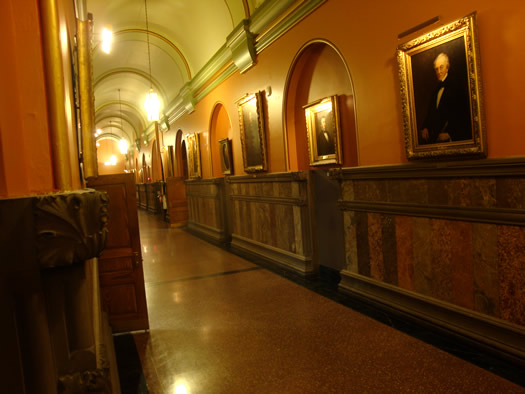
Where governors walked. And, just recently again, the rest of us.
Architecture, at its best, creates buildings that not only shelter us, but that reflect something of our values or ideals. Churches inspire our eyes to soar upwards, awed by dappled light through stained glass. Banks are designed (well, they used to be designed) to look solid, strong, unshakeable.
State capitols usually feature a central, light-filled rotunda for this very reason. It's a manifestation of our democratic values: government as something open, transparent, accessible, welcoming to all.
And then there's New York.
"Open, accessible and welcoming" are words few would apply to New York's state Capitol. You're more likely to hear things like "labyrinthine," "dark," "can't get anywhere unless you already know where you're going." If we see architecture as a representation of government, then, well, you might say we have the state capitol we deserve.
With that said, it's an absolutely beautiful building. And now we can see a little bit more of it.
Why is there a fish atop Albany Academy?
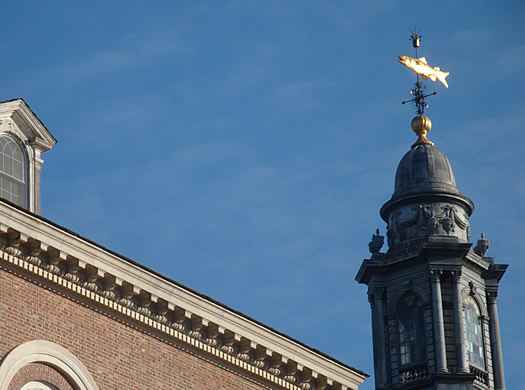
Flying fish
In our love for all things quirky, we have long been cheered by sight of the fish atop the Albany Academy building at the corner of Academy Road and Hackett Boulevard in Albany.
So... why is the storied private school crowned by a fish?
Uncle Dan's: diner food, with a helping of history
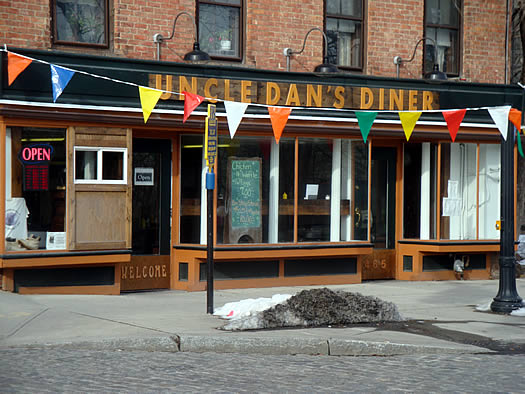
I love diner food. I love unabashedly local things. And I love references to half-forgotten history.
So the only thing I don't know is why it took me so long to get to Uncle Dan's Diner.
It's been open for nine months at 465 South Pearl Street in Albany. That's the house on the corner of South Pearl and Second Avenue, where Dan O'Connell was born.
You can't understand Albany history without knowing about Dan O'Connell.
Kirsten Gillibrand reportedly moving to Albany
Update: We've heard from Kirsten Gillibrand's office that the senator's family is only temporarily moving into her mom's home while they look for a house in the Albany area.
_____
The New York Daily News reported last week that Kirsten Gillibrand sold her Columbia County house and is moving into her mother's old house in the City of Albany.
The house is on Noonan Lane -- off 9W, tucked behind the Thruway. The road became a bit like KG's family's private driveway. Noonan is the name of KG's maternal grandparents. Polly Noonan, her grandmother, was the righthand woman to Erastus Corning. And the forever-mayor apparently spent many a night on the road. From Paul Grondahl's Mayor Corning:
Since [Corning's] wife resolutely refused to attend these events and was never seen at such functions, Corning often attended alone, or he was accompanied, at least to overtly political functions where their companionship would not raise eyebrows, by Polly Noonan. After these functions, whether Polly Noonan attended or not, Corning often made his way back later in the evening not to Corning Hill but to Noonan Lane.
And then the mayor would sit in a recliner, drink scotch and watch sports with Noonan's husband, according to Grondahl's account. [Places and Spaces] [TU]
KG's mother and father -- Penny and Douglas Rutnik (they're no longer together) -- built their house (the one KG's moving into) on the same road, as did two of Polly Noonan's other children. [NY Mag]
As you can tell from the satellite image, it looks like the end of the lane has a bit of a compound feel about it. Hey, you can't be a political family dynasty without a compound.
(Credit to Chris Churchill for picking this story out from the stream between Christmas and New Year's Day.)
When Albany was in print
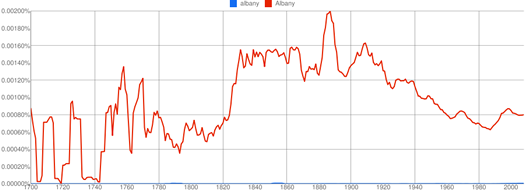
Thoughtful chin scratch...
Update: Alex set us straight -- see his comment about searching for "Albany" vs. "albany." The new graph is above (the old graph is after the jump).
The capital-A Albany graph makes more sense. It was a little weird that there was little or no mention of Albany prior to 1780 -- the city had already been been incorporated for almost 100 years by that point.
_____
Google recently opened up access to a massive dataset collected from digitized books -- some 500 billion words from 5.2 million books. The hope is this dataset will enable interesting sorts of quantitative research for the humanities.
The simplest of this sort of research involves word counts. The Google dataset includes counts for how often a word was used in the texts over time. Go ahead -- you can try it for yourself.
Roland emailed us today after doing search for "Albany." The results are in the graph above.
You have to figure there was spike toward the end of the 1700s because of New York becoming a state. Any thoughts on the reasons for the spike around 1850 (Civil War lead up?) -- or 1950, or since 1988?
(Thanks, Roland!)
graph: Google
Historic Albany's endangered building list
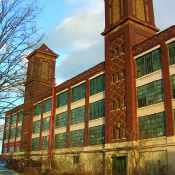 The Historic Albany Foundation released its 2010 list of "endangered" historic buildings around the city yesterday. There are 10 sites on the list (which is released every five years). A few that caught our attention:
The Historic Albany Foundation released its 2010 list of "endangered" historic buildings around the city yesterday. There are 10 sites on the list (which is released every five years). A few that caught our attention:
Bath House Number 2, 90 Fourth Avenue - 1905
The mayor recently vetoed the budget amendment that would have provided funding to keep this indoor public pool open another year, citing a budget crunch. Historic Albany says of facility: "The building already has a long list of repairs needed that if left unattended, will contribute to deterioration and a less likely chance of rehabilitation."
558 Madison Avenue - c. 1880
This is the building at the corner of Madison and New Scotland across from Washington Park. With such a prime spot, we always wondered why the building has been vacant. Says Historic Albany: "Continued vacancy will only increase the deterioration and have a negative impact on development around it."
Argus Press, 1031 Broadway - 1913-17
This is the stately factory building just up the street from Nipper. It has huge windows. Says Historic Albany: "This massive industrial building has sat vacant for years and has no known plan for rehabilitation."
4 Madison Place - 1872
This one of the row houses in that great block along that thin slice of a park on the hill on Madison Ave. Numbers 4 and 5 were damaged in a fire in 2005. Historic Albany says No. 4 is a facade now -- and because there's no access to the back, except via yards from Elm Street, the property "remains a challenge."
The whole list is worth scanning.
photo via Historic Albany
Albany's old soles

300 years of shoes worn or made in the Capital Region
This weekend we wandered over to the Albany Institute of History and Art to check out "The Shoe Show." While we loved the very cool and conceptual "shoe art" that's part of the traveling exhibition, the local history geek in us was really drawn to the Albany Institute's own collection of old shoes worn or made in the Capital Region.
We couldn't help but wonder about the people who wore and made these shoes. Where were they worn? And what did they say about the people who wore them.
The exhibit isn't huge, but there are some neat shoes and it does make you think a bit.
Here a peek...
Dissected Maps
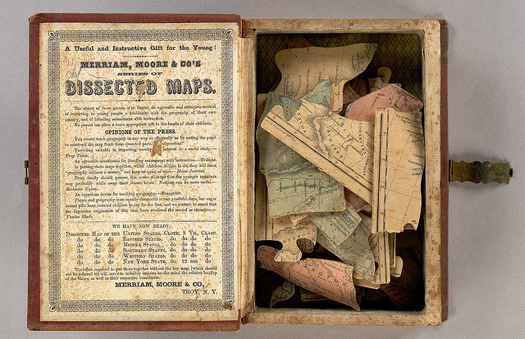
Made in Troy.
Before he moved to Springfield, Massachusetts to publish the famous dictionary with his brothers, Homer Merriam had a little business in Troy. Merriam, Moore & Co. made globes, maps, and something called a "Dissected Map" -- a type of puzzle that's still popular today.
State historical artifacts on display

A pass Benedict Arnold wrote for "Mr. John Anderson," who was actually British major John Andre.
A group of rarely-displayed historical New York artifacts will be on display at the Capitol Wednesday and Thursday. Included in the exhibit:
- Handwritten draft of George Washington's Farewell Address
- Leaves from Washington's copy of A Representation of the Cloathing of His Majesty's Household and of all the Forces upon the Establishments of Great Britain and Ireland (the uniform book)
- Washington's dress sword
- Benedict Arnold / John André papers (evidence pointing to Arnold being a traitor)
- A print of John André crossing the Hudson River (based upon his own drawing of the event)
- Engrossed copy of the U.S. Constitution (original copy sent to New York State for ratification)
- DeWitt Clinton's writing desk and chair
The exhibit is open to the public from 10 am to 4 pm (you need reservations on Wednesday; they're not required on Thursday).
You can also view the artifacts online.
Earlier on AOA: The story of Thaddeus Kosciuszko, whose plans for West Point Arnold tried to sell to the British
image via NYSED Office of Cultural Education
The Albany Penitentiary
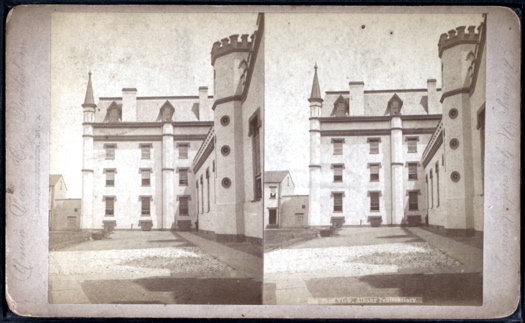
The Albany Penitentiary once stood near what today is the V.A. hospital.
From petty thief to Lincoln assassination conspirator, if you were a criminal in Washington D.C. in the 1860's -- you were going to be sent up the river.
Way up the river. To Albany.
The Albany Penitentiary served for decades as the prison for the District of Columbia.
12 hours in Columbia County

Enough for more than a day.
Columbia County is so close that... you might already be there. And if you're not, you should go -- unless you don't like food, art, shopping and beautiful scenery.
No, those things all sound pretty good? Well, here are some ideas on how to spend a day in Columbia County...
The world's first television drama

The cast of the world's first television drama, on set in Schenectady.
Here's a little something to think about while you're watching Mad Men on one of the hundreds of channels on your HDTV: The very first television drama was filmed in Schenectady in 1928.
It was a little play called The Queen's Messenger, a British drama with more special effects technicians than there were television sets in the Capital Region.
More on how it was filmed, plus a neat clip that shows how it worked, after the jump.
Elkanah Watson and the paving of State Street

Albany - Pre Watson
Elkanah Watson was a forward thinker. When he came to Albany from Massachusetts as a trader back in 1789 he had some big plans for making his adopted city a better place to live.
But Elkanah Watson learned very quickly that in Albany, no good deed goes unpunished.
Capital Region haunts

Spooky.
If you believe in ghosts and goblins (or, you know, if you just think it's fun to get spooked), this is a great time of year. The Capital Region is filled with all kinds of creepy ghost stories.
Maeve McEneny, author of the Albany Trolley Capital Region Ghost Hunting Tour, gathered up a few tales of the haunted Capital Region to share with AOA.
Check them out after the jump.
If you dare....
Ichabod Crane: the Capital Region connection
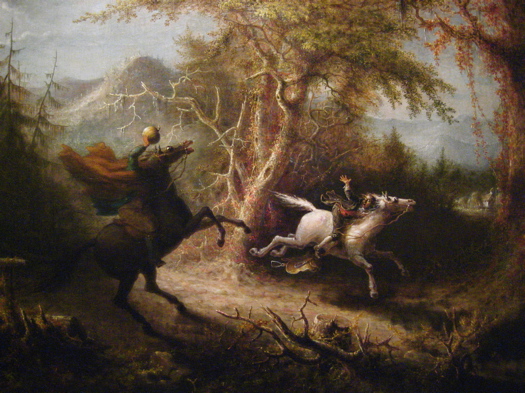
Ichabod Crane just sounds scarier than Jesse Merwin.
Washington Irving, perhaps the first great American writer, is still well-remembered in his Hudson Valley haunts. Irving created Rip Van Winkle, the legend of the Headless Horseman and more. His home along the river in Tarrytown, "Sunnyside," is a tourist attraction, and in 1996, North Tarrytown decided to rename itself Sleepy Hollow.
It is said that it was among the old Dutch of Tarrytown that Irving first heard the tale of the ghost of a Hessian soldier who had lost his head to a cannonball during the Revolution. But it was in the Columbia County village of Kinderhook, that Irving found his model for Ichabod Crane, the timid schoolteacher who is frightened off by the headless apparition.
175 years of making sure things don't fall down
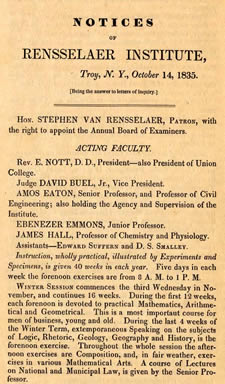 The first civil engineering degree in the nation was created 175 years ago today at RPI. The school posted a notice announcing the degree on October 14, 1835. The notice also lists what was involved in various courses of study at the school. For example:
The first civil engineering degree in the nation was created 175 years ago today at RPI. The school posted a notice announcing the degree on October 14, 1835. The notice also lists what was involved in various courses of study at the school. For example:
During the first 12 weeks, each forenoon is devoted to practical Mathematics, Arithmetical and Geometrical. This is a most important course for men of business, young and old. During the last 4 week of the Winter Term, extemporaneous Speaking on the subjects of Logic, Rhetoric, Geology, Geography and History, is the forenoon exercise. Throughout the whole afternoon exercises are Composition, and, in fair weather, exercises in various Mathematical Arts. ...
Students of the Engineer Corps are instructed as follows:
Eight weeks, in learning the use of Instruments; as Compass, Chain, Scale, Protractor, Dividers, Level, Quadrant, Sextant, Barometer, Hydrometer, Hygrometer, Pluviometer, Thermometer, Telescope, Microscope, &c. ...
That's a lot of ometers.
By the way, among the famous civil engineering alumni from RPI: George Ferris (as in, the Wheel), Frank Osborn (Fenway Park, Yankee Stadium, Tiger Stadium) and Milton Brumer (the Verrazano Narrows Bridge).
image: Institute Archives and Special Collections, Rensselaer Libraries, Rensselaer Polytechnic Institute
On the origins of apple pie a la mode
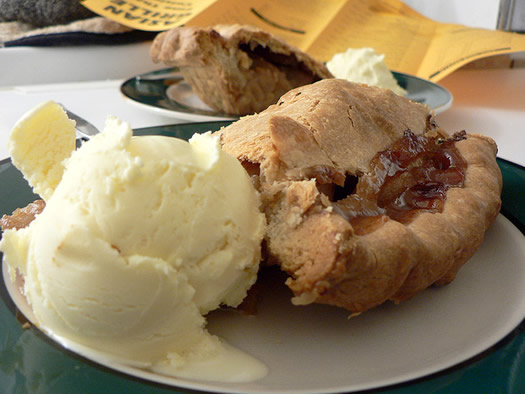
It seems obvious. But someone had to do it first.
While skimming through some info for the post earlier this week about the Philly's Apple Pie ice cream at Stewart's, we came across a story about the origin of pie a la mode -- which has a local connection.
The story goes that it was invented (if that's the word) in Washington County in the 1890s (the exact date is unclear) at the Cambridge Hotel by a regular diner there named Charles W. Townsend, who liked to eat his apple pie with vanilla ice cream.
Why Stanford isn't in Albany
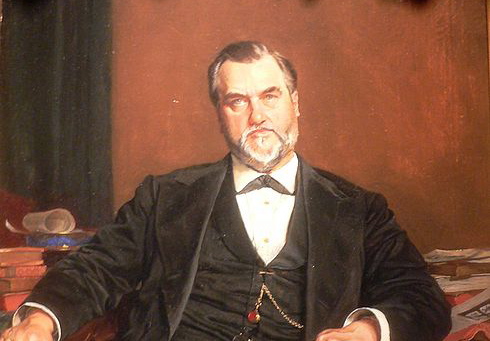
Leland Stanford of Watervliet
The University at Albany surely has its fine points, but even its greatest advocates would agree, it's no Stanford.
But it could have been Stanford.
Literally.
"Saratoga Chips will endure as long as there are spuds left to slice."

Wrong? We have no interest in being right. And we don't think George Crum -- or Katie Weeks -- would mind.
Amanda Hesser, writing in NYT Mag this past weekend, about the original Saratoga potato chip:
In "America Cooks," by the 1940s food writers Cora, Rose and Bob Brown, the trio declared: "A century ago, when Saratoga Springs was in its heyday as a fashionable resort, specialties from there swept the country, and one of them, Saratoga Chips, will endure as long as there are spuds left to slice." They were partly right. The recipe has endured, all right, but Saratoga vanished from the name. We now call them potato chips, and they've reached that late-mannerist "seasoning" stage, which has produced such atrocities as sour-cream-and-onion-flavored chips and even "cool ranch."
Hey, we're all about Saratoga getting its due -- but that stuff about the "atrocity" of sour-cream-and-onion is crazy talk. That is one delicious disaster.
Hesser's piece includes a 1904 recipe -- and a new take, developed by Dori Greenspan, which sounds like a Pringle.
A few years back, Saratoga author Mike Hare shared some of the origination myths of the Saratoga chip with AOA:
[George] Crum brought his sister, Katie Weeks, to work alongside him at Moon's. And it was Katie's kitchen experiment that, legend has it, led to one of our favorite salty, fried treats.
One day, Katie was peeling potatoes on the stove when a piece accidentally fell into a pot of boiling fat. She fished it out, put it briefly on a frying pan, then set it on a plate.
George tasted it, and liked it. A lot.
(There's also a more dramatic version.)
A company based in Saratoga started making "Moon Brand Saratoga Chips" a few years back. Has anyone tried them?
Earlier on AOA: Last year, Amy sampled chocolate potato chips from Isn't It Sweet in Albany.
(Thanks, Jess!)
Preliminary Emancipation Proclamation on display Sunday at the State Museum

I, Abraham Lincoln, President of the United States of America, and Commander-in-Chief of the Army and Navy thereof, do hereby proclaim and declare...
A manuscript copy of Abraham Lincoln's Preliminary Emancipation Proclamation will be on display this Sunday at the New York State Library. The rare display is part of the library's "Forever Free: Abraham Lincoln's Journey to Emancipation" exhibit, which runs through October 14.
From the library blurb:
The Preliminary Emancipation Proclamation has been part of the New York State Library's collection since 1865, when it was purchased by the New York State Legislature following the assassination of President Lincoln. The document is the manuscript copy of the Preliminary Emancipation Proclamation issued on September 22, 1862, declaring that all persons held as slaves within states still in rebellion against the United States on January 1, 1863 "shall be then, thenceforward, and forever free." It is written in Lincoln's handwriting with notes by Secretary of State William Seward and portions of the printed Articles of War are pasted into the document.
The document will be in the State Museum's Huxley Theater from 9:30 am - 5 pm. It's free.
(Thanks, Sarah!)
image via New York State Library
Uncle Sam Wilson
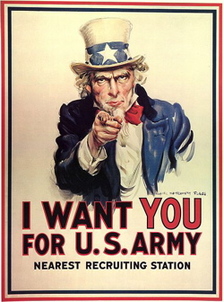 This weekend the Collar City celebrates its most famous son -- Uncle Sam -- with its annual Uncle Sam Parade and Festival.
This weekend the Collar City celebrates its most famous son -- Uncle Sam -- with its annual Uncle Sam Parade and Festival.
You can't drive through Troy without seeing all kinds of monuments to Uncle Sam: a statue, a bus depot, a bowling alley. (You'd think he was some sort of pork distributing state senator.) And, of course, there's the famous image.
But the inspiration for that image was a businessman and meat distributor who probably didn't look a thing like the famous recruitment poster.
Running on Albany time
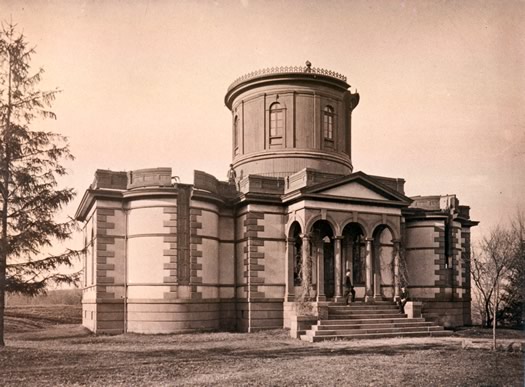
The first Dudley Observatory, in north Albany.
In our global civilization, we're accustomed to dealing with time zones and standard definitions -- Greenwich Time, Eastern Time, Daylight Savings Time.
If one plan from before the Civil War had succeeded, the Northeast might have been on Albany Time.
It started in 1851, with the founding of the Dudley Observatory.
Albany bashing has a long history

Was Pearl Street dead back in the day?
The recent item proclaiming Albany to be one of America's 10 dead cities was just the latest in a long tradition of bashing our capital city.
Who knows when Albany-bashing began, but I found evidence of it that dates back to 1789, and is a kind of reminder that in all criticism, you have to consider the source.
The Street Academy
Check out this 1977 documentary Chuck reconstructed about the former Street Academy, an alternative high school in Albany. The former slide-and-cassette show (beep!) has quite the funky musical intro:
Chuck's an alumnus of the school. He's been collecting documents and memorabilia related to its history. It opened in 1970 and was eventually renamed Harriet Gibbons High School. The Albany school board recently voted to close the program.
The Normanskill's Norman

Delaware Ave above, the Normanskill below.
Around Albany, many of our most familiar place and street names come from notable local figures.
Louis Menand was a noted horticulturist of his time; Daniel Manning published the Albany Argus and became US Secretary of the Treasury. Slingerlands was named for farmer Teunis Slingerland.
So, who was the "Norman" of the Normanskill?
Dead non-presidents
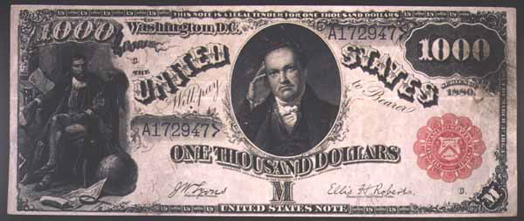
Former NY Governor DeWitt Clinton shared space with Columbus on the $1000 U.S. note.
Some politicians get streets or courthouses named after them. Some get a statue in the park. A very few exceptional public figures are memorialized on our coins and currency -- and Albany can lay claim to four famous figures whose portraits have appeared on our money.
After the jump, a few of the Albany pols. who were (or are) on the money:
Block by block, Washington Place is back together
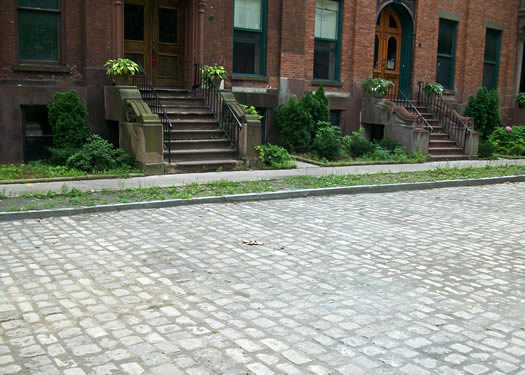
The new/old street -- level again.
How do you rebuild a street? In the case of Troy's Washington Place, the answer is: one stone at a time.
The street -- which runs along the picturesque (and private) Washington Park in Troy -- is made up of Belgian block pavers (sort of like cobblestones, but square and a regular size), that were first laid during the 1800s. About 35,000 pavers. And reconstruction of the road required every one of the pavers to be removed and then re-installed -- by hand, like installing a giant patio.
When the street got to be in such bad shape that it was nearly impassable (undulating would have been a kind word), the Washington Park Association rallied support to preserve the pavers -- and the historic look of the streetscape. Now the association reports the job is finished. The official ribbon cutting will be August 3.
WPA reports that the job cost $200k, and a handful of organization contributed services -- including the City of Albany, which donated 8,000 pavers to replace blocks that had broken.
Here's a photoset covering the reconstruction project.
photo courtesy of TAP, Inc via Duncan Crary Communications
Siena ranking: Roosevelts top two US presidents
We're fans of Teddy, but he ranks higher than Lincoln or Washington?
The Siena Research Institute released its ranking of the American presidents today, based on a poll of presidential experts. The top 10 from this most recent poll, along with previous years' rankings, are above.
Barack Obama ranked #15 in this latest poll. George W. Bush was #39 (that's fifth from the bottom). Here are the full rankings.
The presidents were scored on 20 criteria, ranging from "background" to "luck" to "leadership ability." (A bit more about the methodology is after the jump.)
Earlier on AOA:
+ New York presidents pop quiz
+ Teddy Roosevelt: badass
Inside the Central Avenue Trolley Power Station

The second floor at Knighton's. We kind of want to live here.
A lot of people were interested in yesterday's post about the restored trolley power station on Central Avenue -- and a few folks mentioned wanting a tour.
The owner, John Knighton, gave us a tour of the place when we there and we've posted a few more pictures after the jump.
Powering the Schenectady Railway

The mystery of 1830 Central Avenue, finally solved.
Updated
So, for about as long as we can remember, every time we drive past this building at 1830 Central Ave (near Kohl's) we look up and ask ourselves "What the heck was that?"
The building has looked vacant for the longest time... but it's really kind of cool looking and we guessed it might have been an old theater of some kind. We guessed wrong.
The other day we saw an open sign hanging in the window. So we did a little happy dance and detoured into the parking lot.
Where Menands got its name

What do exotic flowers have to do with this Albany County village?
If you live in the Capital District, you hear the name Menands on a regular basis. You may live there, drive through the Albany County villiage, or just hear it on the news and in conversation.
So what is a Menand?
Well, the question really is who was Menand?
For the answer, you'd have to look back to the late 1800s, when everyone from well-to-do collectors of exotic flora, to prosperous homeowners with gardens, to cemetery visitors who wanted to pay tribute to a loved one -- would go to Menand's.
A short tour of Albany's historic stained glass
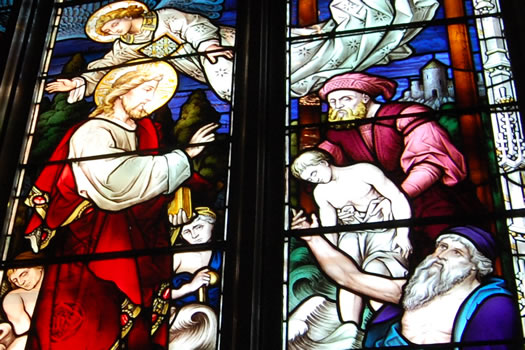
From a window at the Cathedral of the Immaculate Conception.
One of the things I love most about Albany is the rich and storied religious architecture that peaks above more modern buildings in the downtown area.
While many of the churches are open only during Sunday mass, I stopped by five historic churches before service to snap photos of some world-famous stained glass windows.
The Boulevard Cafeteria: ticket to lunch
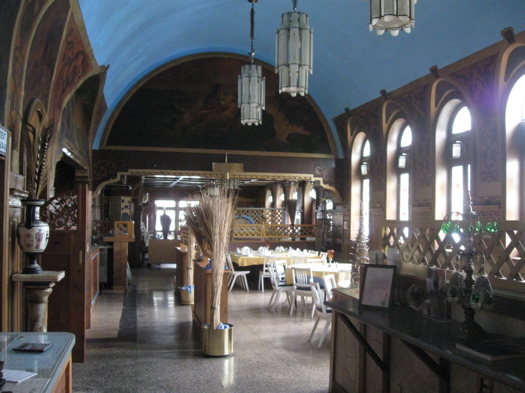
The old Boulevard Cafeteria, where Albany met for lunch.
So far, Lunch Week has been all about where to go to lunch now. But it got us thinking about where people used to eat "back in the day."
Restaurants are about more than just food -- they're about atmosphere and character and clientele. They're gathering places full of stories.
From the late 1920's through the 1950's, one of the more interesting places people gathered in Albany was a 24 hour, semi-self-serve joint at the corner of Central Ave and Robin St. called The Boulevard Cafeteria.
Today it houses Ristorante Paradiso, owned by Matt Daskalakis. Matt used to eat at the Boulevard when he came to Albany to play for the Albany Senators in the 1950s. He gave us the tour of the old place, which is virtually untouched except for a movie makeover in the 1980s.
Be sure to scroll down to check out the menus (with prices) from the 1930s and 1940s.
Al-Tro Park: the Capital Region getaway in Menands
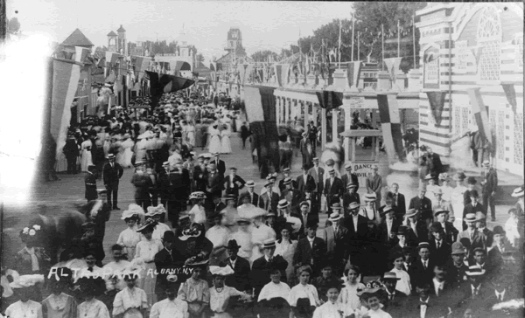
Al-Tro Park: "Pleasure Island" in Menands.
A century ago, Albanians looking for summertime fun didn't get in the car and drive for hours to a Six Flags or a water-park.
They got on board a trolley car or steamship and headed to Menands to find the finest in 19th-century entertainment.
Where's the fire?
Via Carl comes this film clip of the Albany Fire Department from 1901. From the Library of Congress' American Memory page for the clip: "A sidewalk crowd on a main street of Albany, N.Y., watches as fourteen pieces of horse-drawn fire equipment quickly pass by."
There's no sound (of course), but we can imagine the rumble and racket there must have been -- all those horses and wagon wheels clack-clack-clacking as they rushed along the paving stones.
The clip is credited to Thomas A. Edison, Inc.
(Thanks, Carl!)
The voice of Edison via shaking light sound
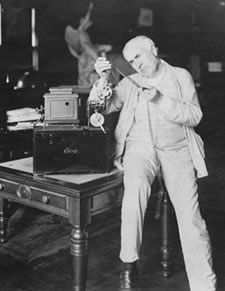 Dead or near-dead media formats: wax cylinders, 8-tracks, cassettes, floppy discs, CDs (almost) and... the pallophotophone.
Dead or near-dead media formats: wax cylinders, 8-tracks, cassettes, floppy discs, CDs (almost) and... the pallophotophone.
The pallophotowhat?
From the GE Reports blog:
A pile of dusty film canisters in the basement of the Schenectady Museum & Suits-Bueche Planetarium has yielded some of the world's oldest surviving radio broadcasts. The 20 shows were first heard on Schenectady radio station WGY between 1929 and 1931. One features a talk by GE founder Thomas Edison in a broadcast celebrating the 50th anniversary of the incandescent light bulb. Another is a portion of a high school basketball game that's believed to be the second oldest surviving sports broadcast.
They were recorded on a long forgotten machine that GE developed in 1922 called a pallophotophone -- after the Greek words for "shaking light sound" -- in one of the earliest attempts to record sound on film. But there was only one catch with the great find: There weren't any known pallophotophones in existence to play back the lost pieces of history.
Enter the museum's curator, Chris Hunter, and GE's engineers, who together cracked the pallophotophone code.
How? The engineers built a whole new machine out of modern parts to read the media.
The post includes a photo of the new machine and audio from one of the Edison recordings.
Earlier on AOA: The new old Daily Gazette
photo: Schenectady Museum via GE Reports
The Piano City
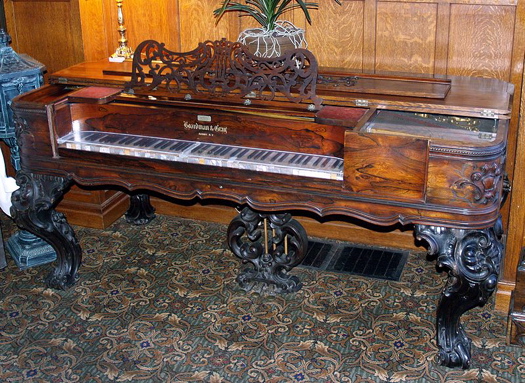
A decorative Boardman & Gray
In the mid 1800s, as a single collar factory in Troy blossomed into dozens, Albany became famous for manufacturing a product of its own -- pianos.
In an age when people made their own music, the growing middle class felt no home was complete without a piano. So when J. & H. Meacham began manufacturing pianos around 1829, it set off a boom that could have given Albany fair claim to the nickname of "Piano City."
Troy's paper boats
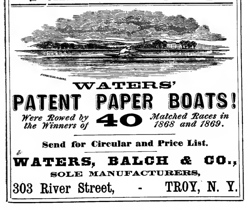 One of the joys of living near the Hudson River is seeing the rowing clubs plying their sleek craft across the water at dusk and dawn. The Hudson has long been a favorite of rowers, and for a few decades after the Civil War, it was home to a race-winning curiosity: the paper boat -- created in Troy.
One of the joys of living near the Hudson River is seeing the rowing clubs plying their sleek craft across the water at dusk and dawn. The Hudson has long been a favorite of rowers, and for a few decades after the Civil War, it was home to a race-winning curiosity: the paper boat -- created in Troy.
A tour of the Shaker settlement in Colonie
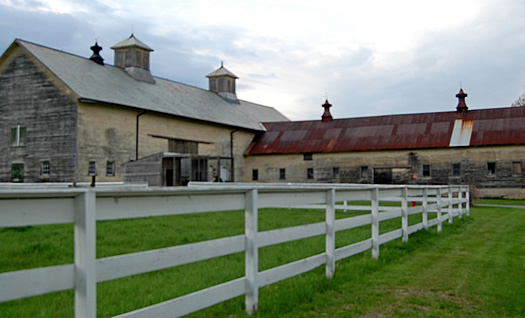
America's first permanent Shaker settlement was founded in what was once Watervliet, and is now Colonie.
You might be familiar with the well-preserved and historic landmark Hancock Shaker Village in Western Massachusetts (not to mention its cute baby animals), but you might be surprised to find out the first American Shaker settlement was built right here in the Capital Region.
The Watervliet Shaker National Historical District, settled in 1776, is a stone's throw from Albany International Airport (it's right across Albany Shaker Road). Some of the site's buildings and the museum are open for self-guided tours, but lucky for me the Historic Albany Foundation and Shaker Heritage Society let me tag along on a recent and seldom-conducted guided tour.
Lincoln Park -- from beer, bricks and beavers
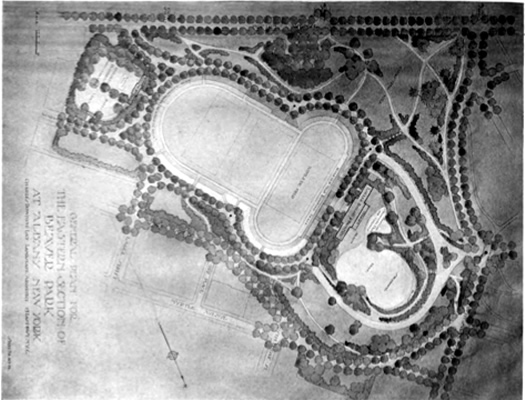
A plan for Beaver Park from 1914
Sure, the Washington Park has the Olmstead pedigree, the stately splendor, and a spooky rep as a former graveyard. But the land that became Albany's Lincoln Park has the more interesting history -- a history that includes beer, bricks, borrowing and... the beaver.
Thacher Park's namesake
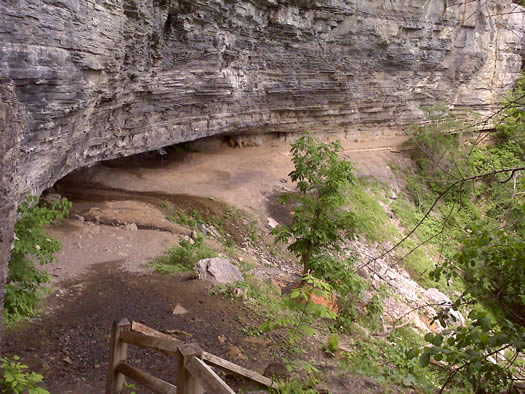
The Indian Ladder Trail at Thacher Park
Lately we've heard a lot about Thacher Park -- because of the potential closing, the protests and now the possible reprieve. And in all this coverage, you've probably heard the park called by its full name "John Boyd Thacher Park."
So, who was John Boyd Thacher? And why did they name a park for him?
Modern toilet paper was invented in Albany

Modern toilet paper got its start here. Wipe proudly.
Now, I'm not exactly one for toilet humor, but I stumbled upon a fun factoid recently and it was too good to resist. I had to investigate.
And it turns out that, yes, Albany is the birthplace of perforated (rolled) toilet paper as we know it.
Really.
Are you smarter than an Albany 8th grader (circa 1882)?

Albany public school quizzes from 1882
A recent trip to the Albany County Hall of Records netted us this interesting score: a book filled with public school exam questions from 1882 through the early 1900s.
We got a real kick out of these, so we picked out a handful from the 8th grade and put together a little quiz...
The new old Daily Gazette

There should be more stories about giant blimps.
This is cool: Google is digitizing the Daily Gazette's microfilm -- and it's indexing the archives using optical character recognition (that's software that can "read" the text in images).
Google has already indexed 7.6 million Gazette articles, according to the newspaper's site. The current index stretches back to the 1920s, but paper the archive will eventually include articles from 1897 forward.
The archive is fun to do through. You can search for a topic, read the article (and link to it), zoom out to see page on which the article originally appeared, shuffle through adjacent pages and click on headlines to zoom back in. For example, here's an article from 1922 about Thomas Edison's return to Schenectady. As far as we can tell, you don't have to be a subscriber to use the archive.
Google has working with newspapers to digitize archives since 2008 (and few major papers before that). It shares ad revenue from the archives with the papers.
screen grab: Daily Gazette
Presidents Day
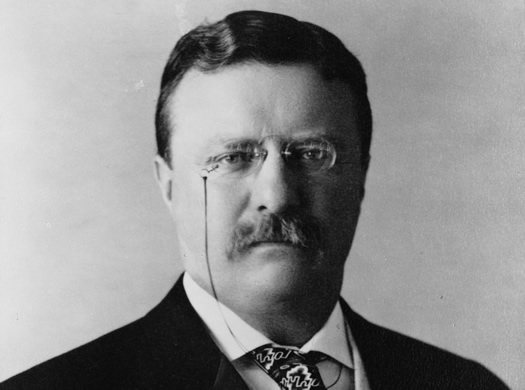
TR
In honor of Presidents Day, here are a bunch of old vintage AOA posts related to the presidency:
New York Presidents Pop Quiz
How well do you know the presidents from New York?
President Obama at HVCC
The newest president's visit to the Capital Region last fall.
Air Fore One landing at ALB
President Obama didn't take Amtrak.
How the Capital Region voted for president
Obama won each of the four counties in the Capital Region -- though it was close in Saratoga.
Happy Birthday, Martin
The story of Martin Van Buren, in 7 minutes.
Chester A. Arthur's grave
It's in the Albany Rural Cemetery.
Teddy Roosevelt: badass
Hard to argue with that distinction.
A pet befitting a badass president
It was an ornery little fella.
AOA's back on its regular schedule Tuesday.
Saratoga's Pompeia
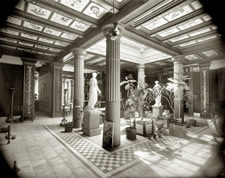 The vintage photo blog Shorpy featured a 1901 photo today from a home on Broadway in Saratoga Springs -- a building that included a replica of a home from ancient Pompeii. It's a beautiful scene (be sure to click through for a larger view).
The vintage photo blog Shorpy featured a 1901 photo today from a home on Broadway in Saratoga Springs -- a building that included a replica of a home from ancient Pompeii. It's a beautiful scene (be sure to click through for a larger view).
Blogging Pompeii -- a Pompeii blog -- dug into the history of the building last year (and found a bunch of photos):
The Pompeia was built in 1889 by Boston hardware merchant and architect, Franklin Webster Smith, once dubbed 'Reconstruction Smith'. He had already built the Villa Zorayda in St Augustine, Florida (a Moorish Palace) and the Casa Monica Hotel, also in St. Augustine (another Moorish castle but on what seems a far larger scale; the website contains historical images of the hotel, which are amazing). Smith was described as 'a man of vision and foresight' who wanted both to enhance Saratoga's prosperity and her cultural and intellectual standing. Apparently he had a personal distaste for horse-racing and gambling, for which Saratoga was famous.
According to Blogging Pompei, the building has had a string of different owners and mishaps over its lifetime (apparently there was an incident involving smoldering mummies). The building still stands today -- though not as a house. It's now the offices of Palio, an advertising firm.
(Thanks, CJ!)
photo: Shorpy
The crumbling castle
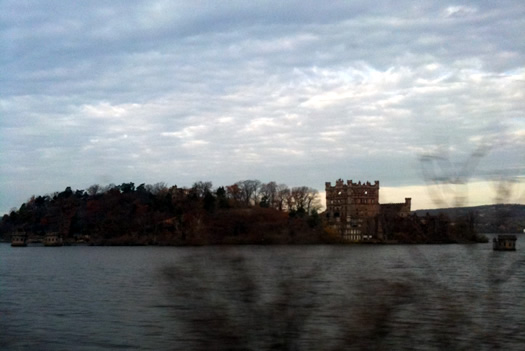
The castle, as it was seen from the train in November 2009
You might have seen news during the last week of 2009 that part of Bannerman's Castle -- the castle-like structure that sits on an island in the Hudson near Storm King -- had collapsed. (You've probably seen the castle from the Amtrak train on the ride down to New York City -- it's just north of Cold Spring.)
This week comes news that the castle is continuing to fall apart. The island's preservation trust expects even more of the structure to come down through the winter.
Chuck Schumer says he's lobbying the federal Department of the Interior for money to help preserve the building.
Bannerman's Castle was constructed to serve as a military surplus warehouse during the first part of the 20th Century. It was sold to the state during the 1960s.
(Thanks, Duncan)
Ghost signs
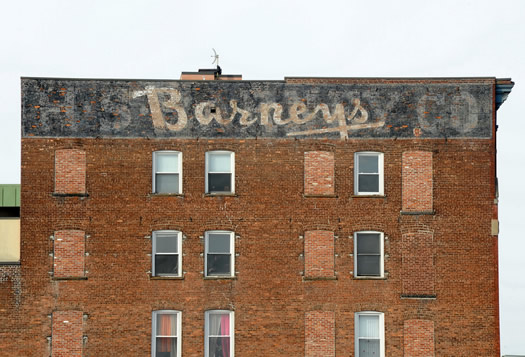
The former home of the Barney's department store in Schenectady.
Jessica's post about retro signs inspired Chuck to put together a photo collection of "ghost" signs from around the Capital Region. He explains:
Have you driven by a building in the Capital District, looked up at the building, and noticed what appeared to be a painted advertisement on the building's brick exterior? An advertisement for food or clothing or dry goods, the ad almost faded away with a century of age and neglect? You're trying to figure out what a Uneeda Biscuit is, or where someone actually can buy Bond clothes these days. I've seen several of these "ghost signs" in the Capital Region (also called "faded signs" or "brickads," according to Wikipedia), and I also came across a webpage called lostlandmarks.org that covers the phantom signs of a long-lost advertising run. So over the past few days I took my Nikon D700 and an assortment of lenses, and went out to go ghost sign hunting.
photo: Chuck Miller
Out of the archives for just a day
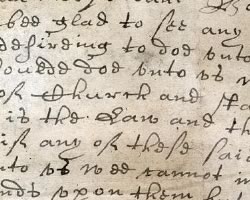 The New York State Museum will be displaying the Flushing Remonstrance on Sunday, the 352nd anniversary of its signing.
The New York State Museum will be displaying the Flushing Remonstrance on Sunday, the 352nd anniversary of its signing.
The document was a request from residents of what's now Queens for an exemption to the ban on Quaker practice in the colony of New Amsterdam. It's considered a pre-cursor to the religious freedom provision in the 1st Amendment of the US Constitution.
This pdf includes images of the document, which was partially burned during the 1911 state Capitol fire. Here's an English translation.
thumbnail via Thirteen and the NYYM


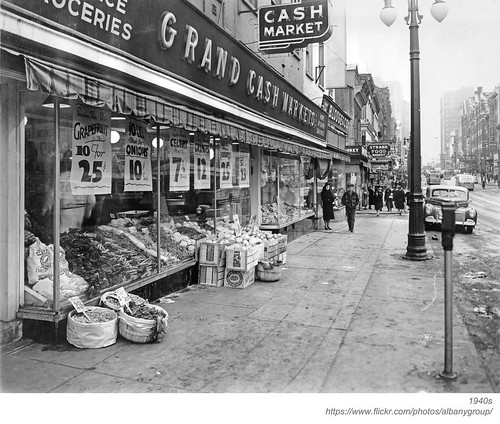
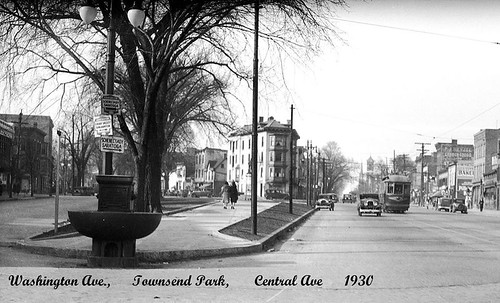





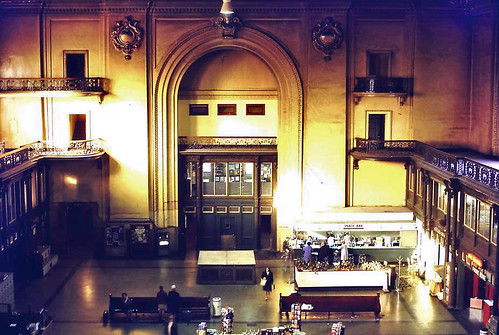











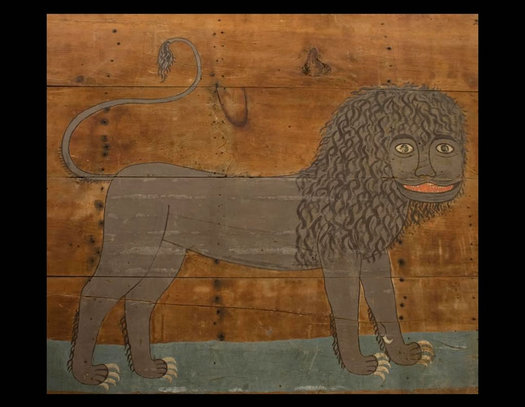

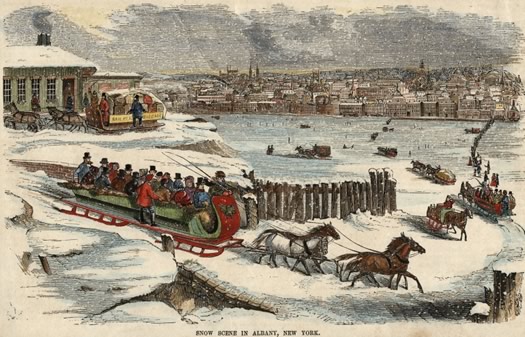

... said KGB about Drawing: What's something that brought you joy this year?